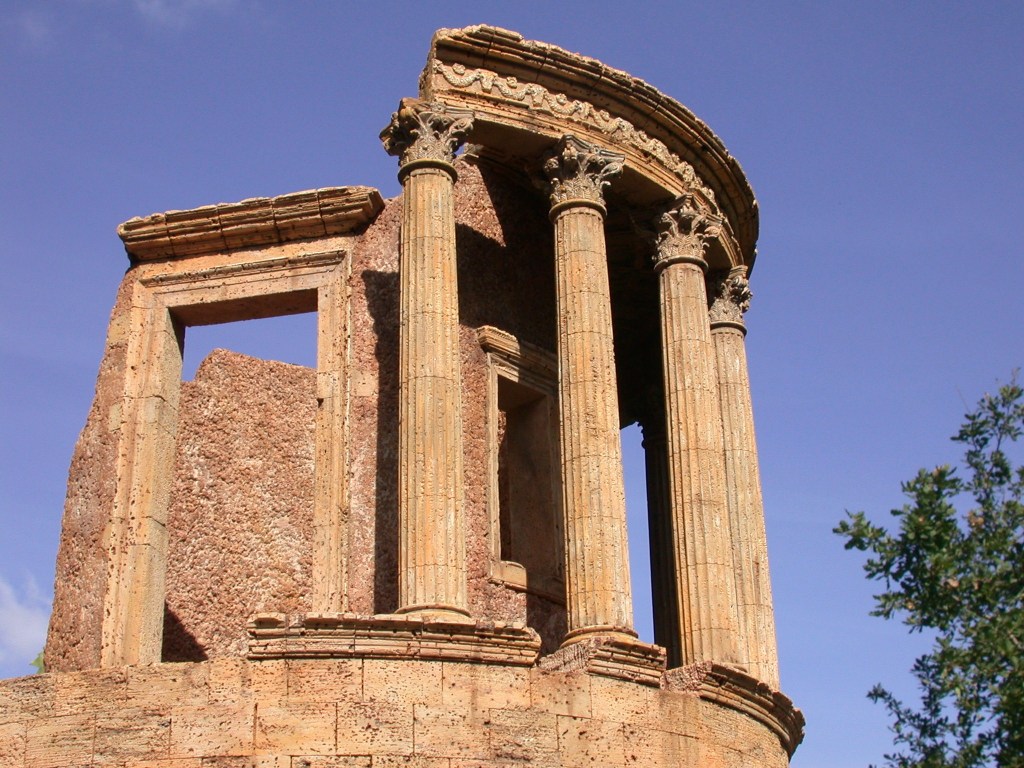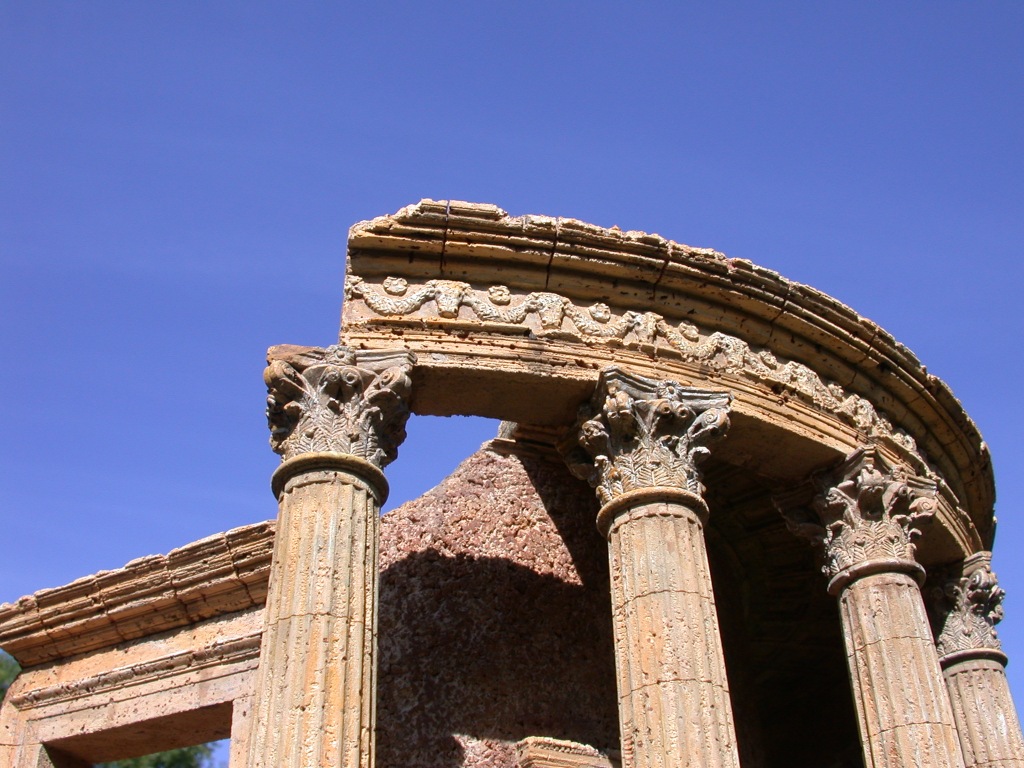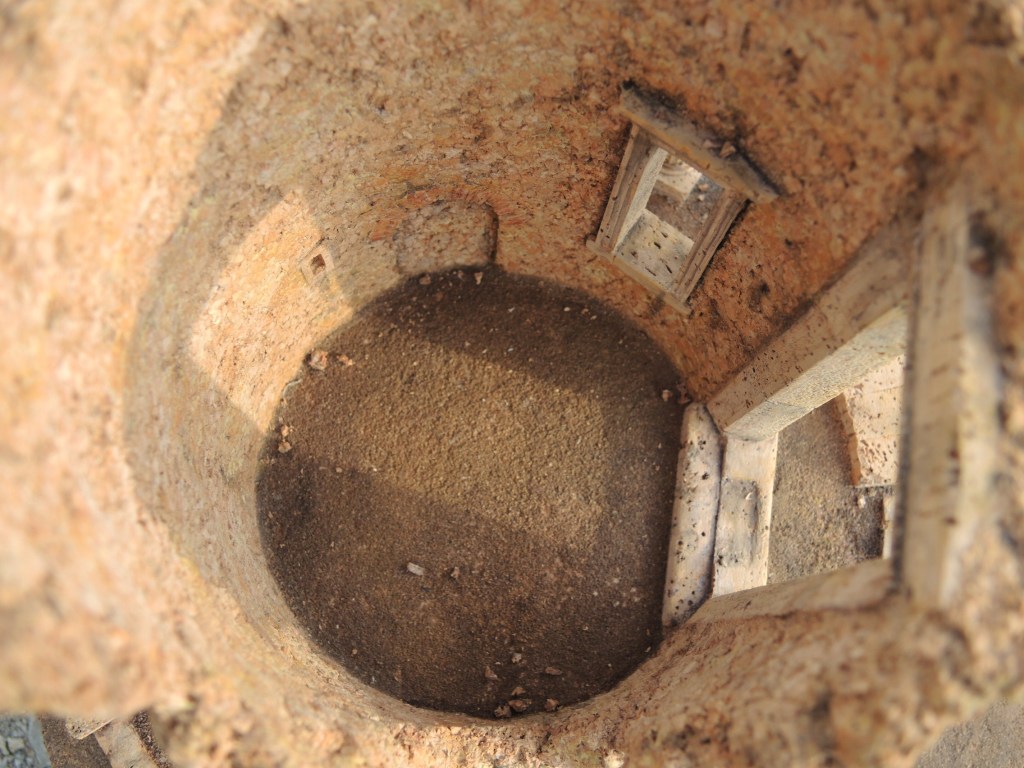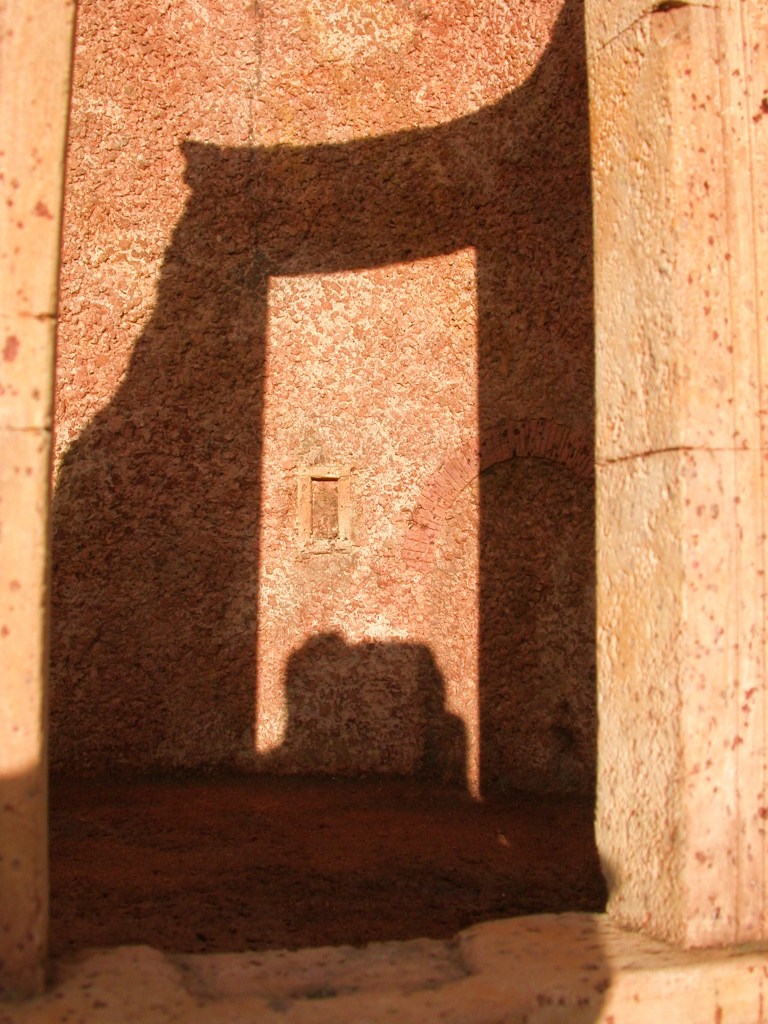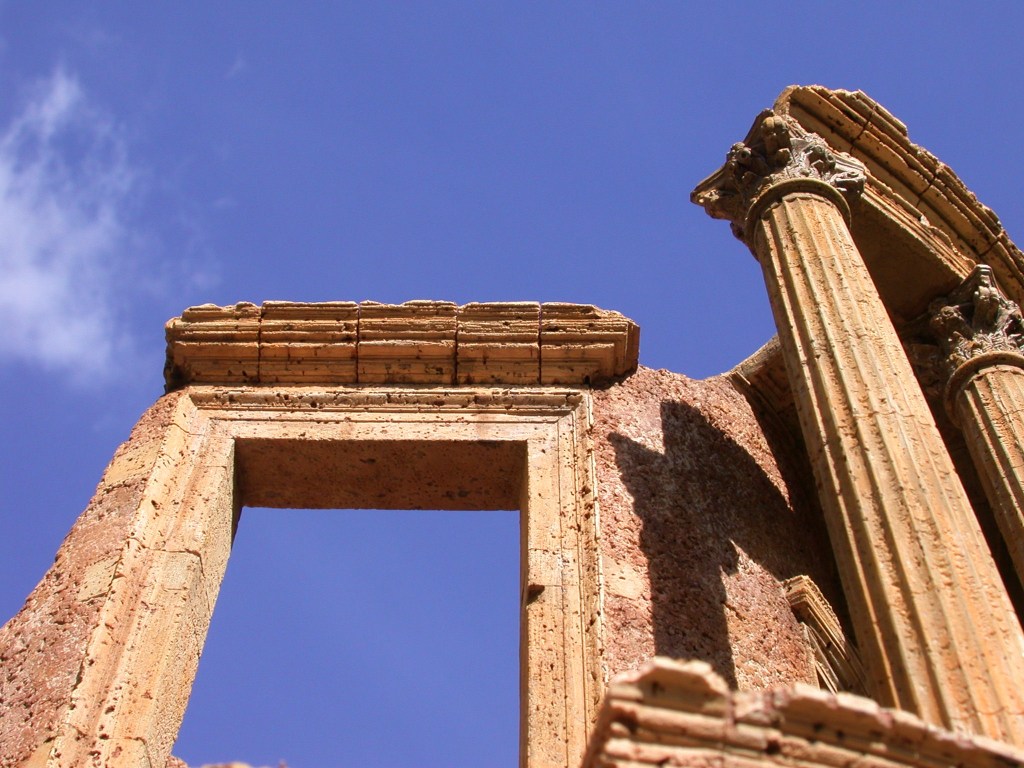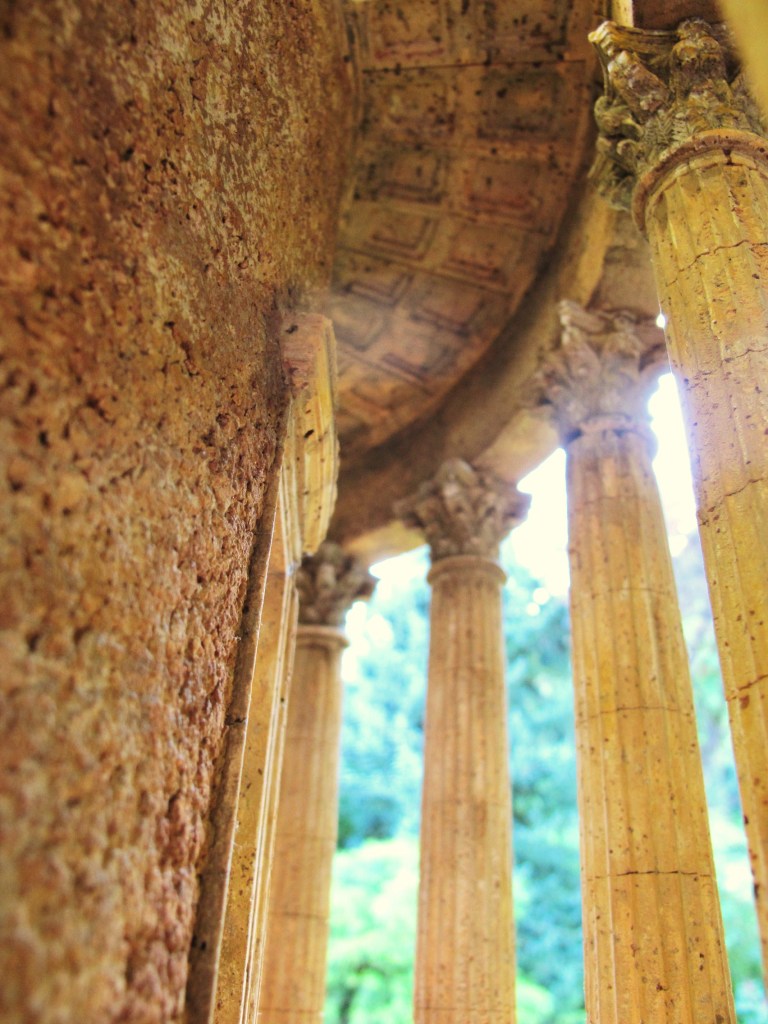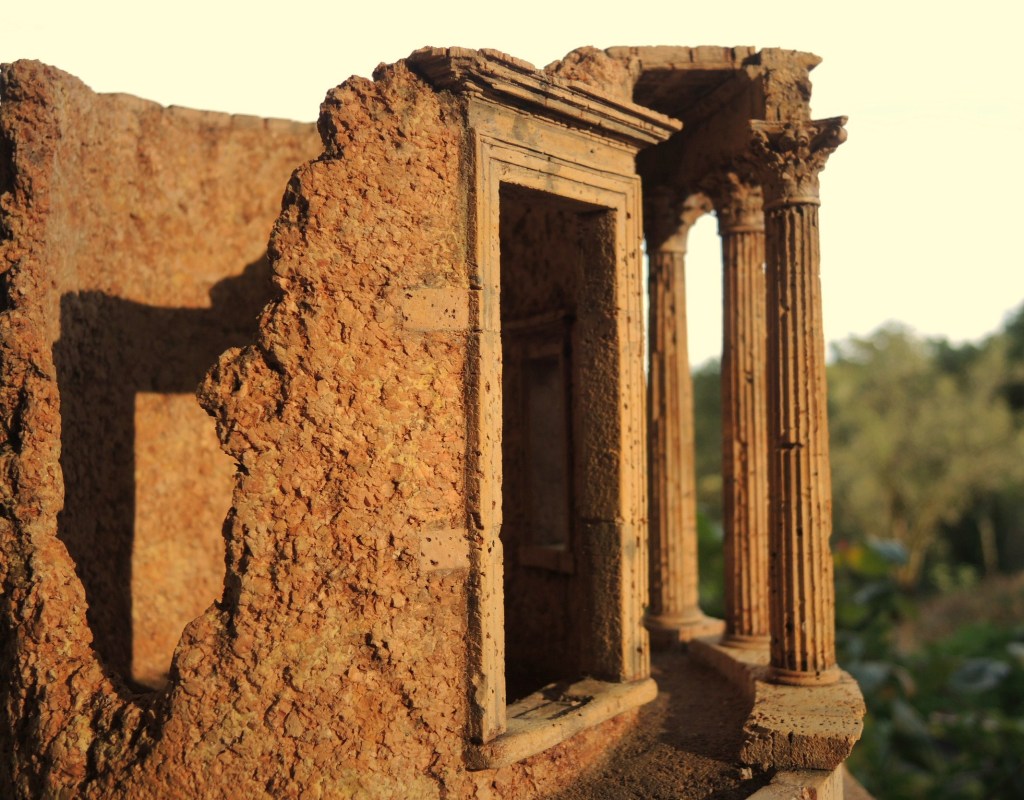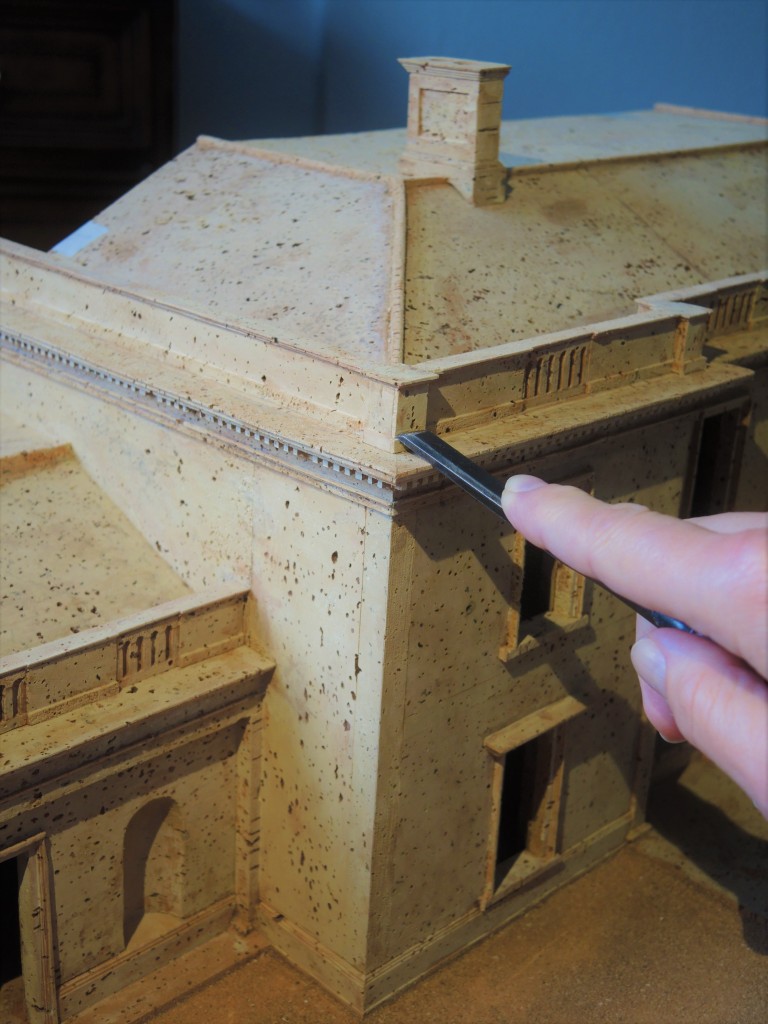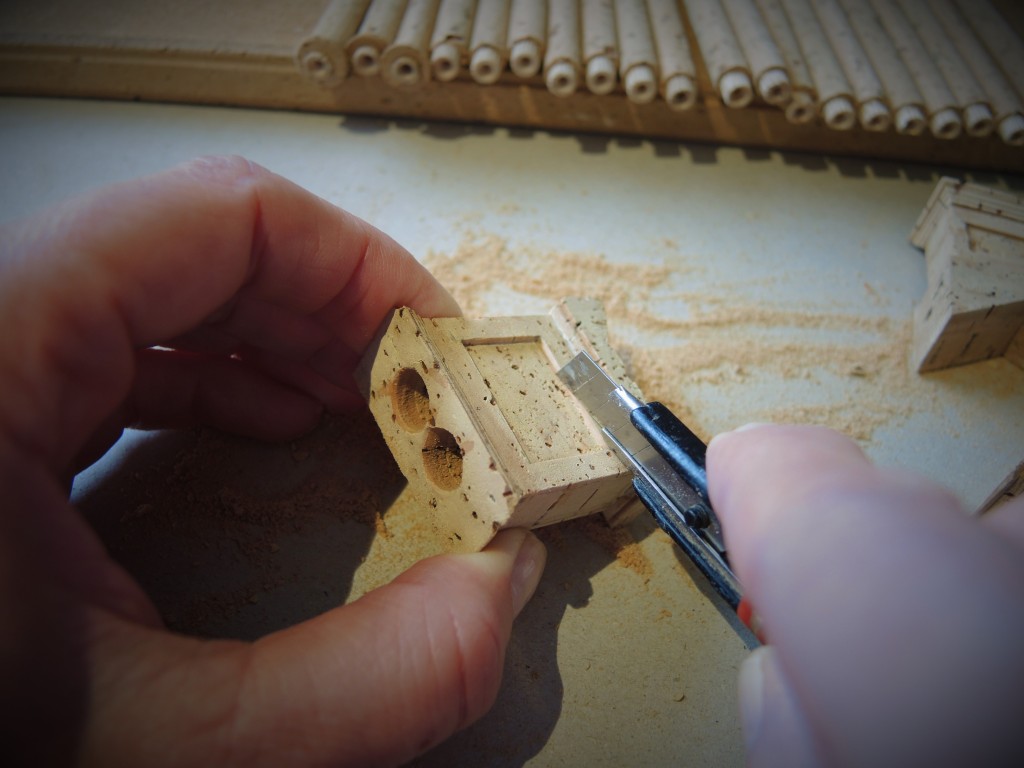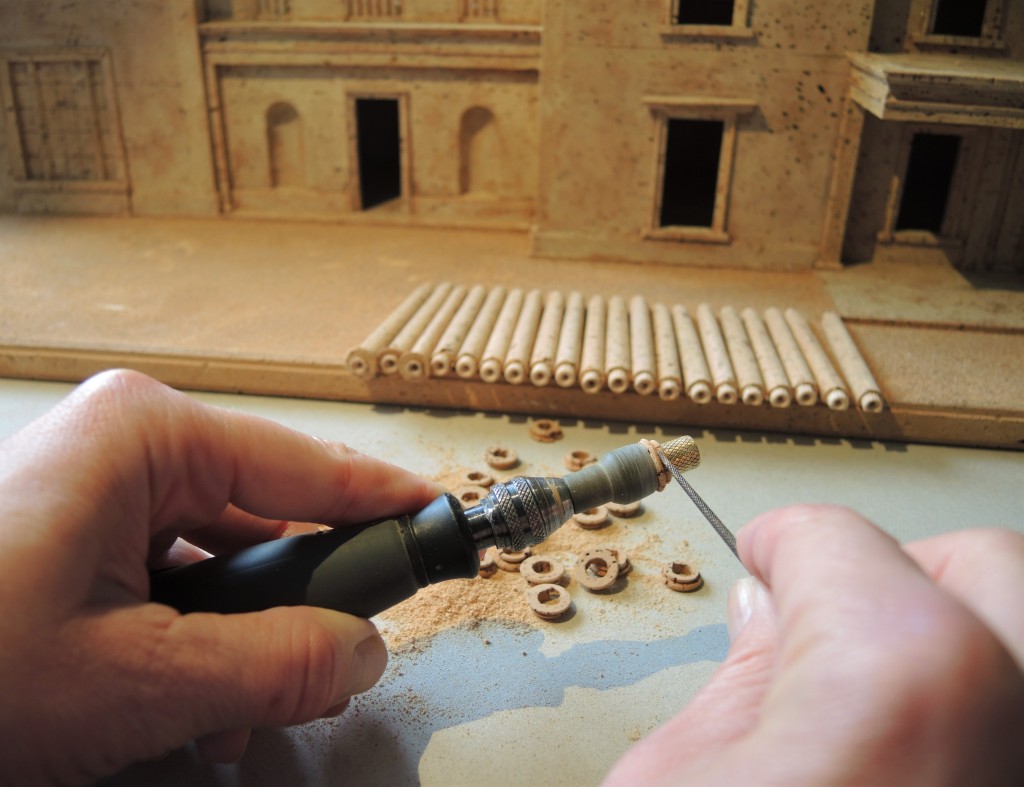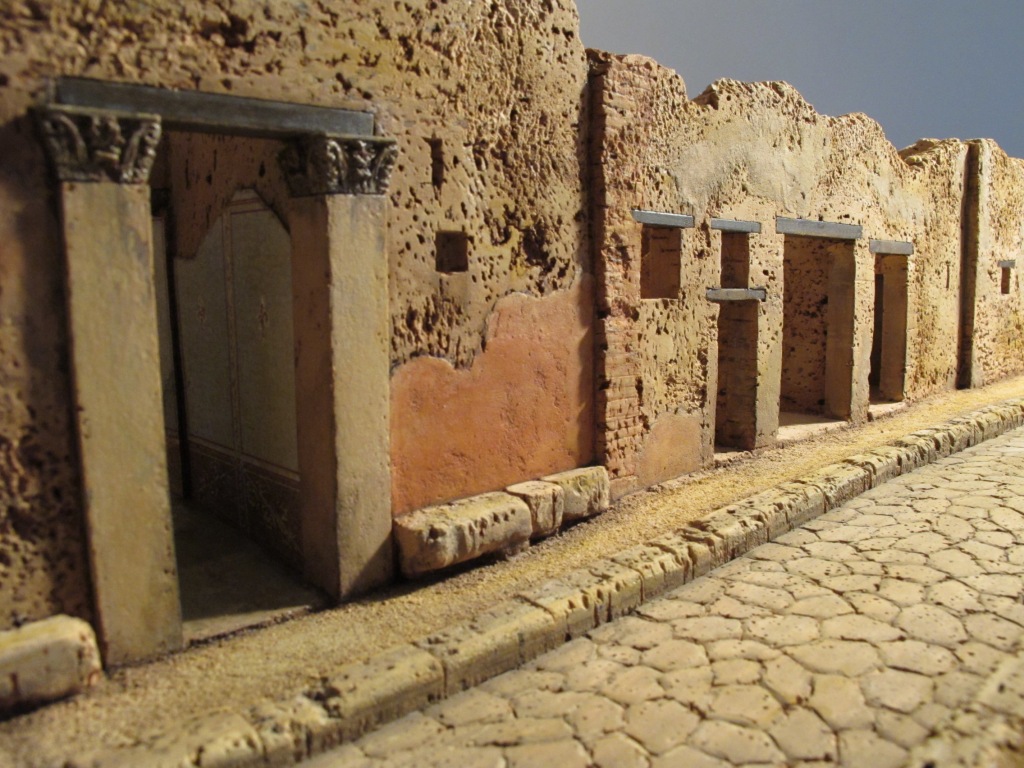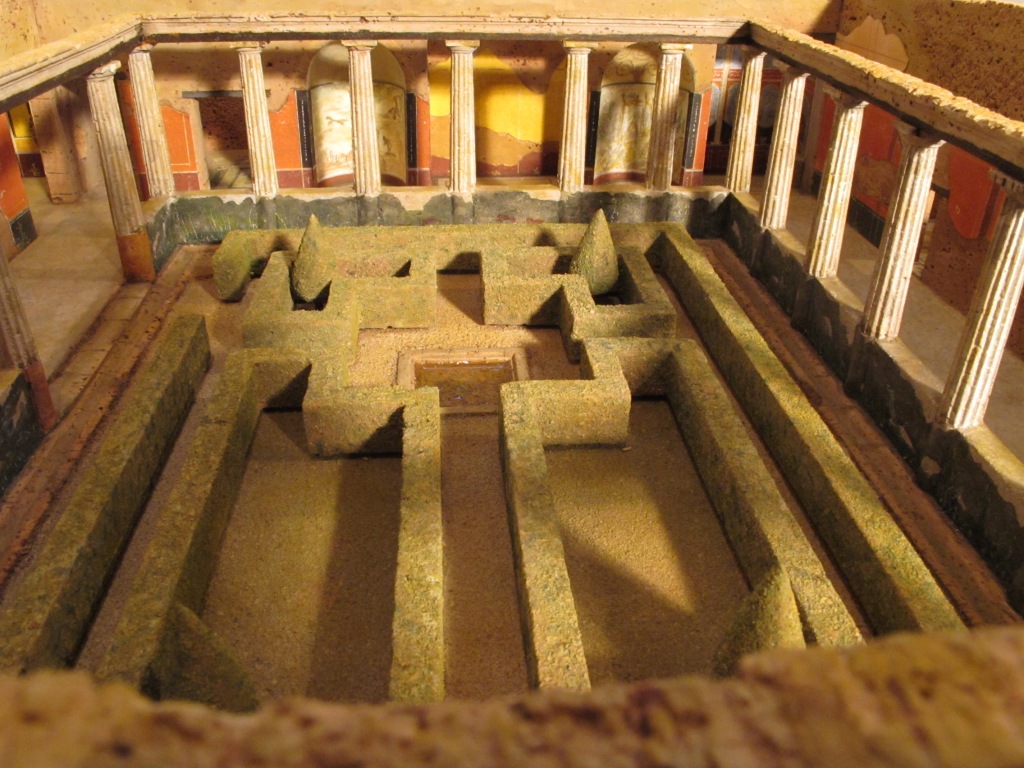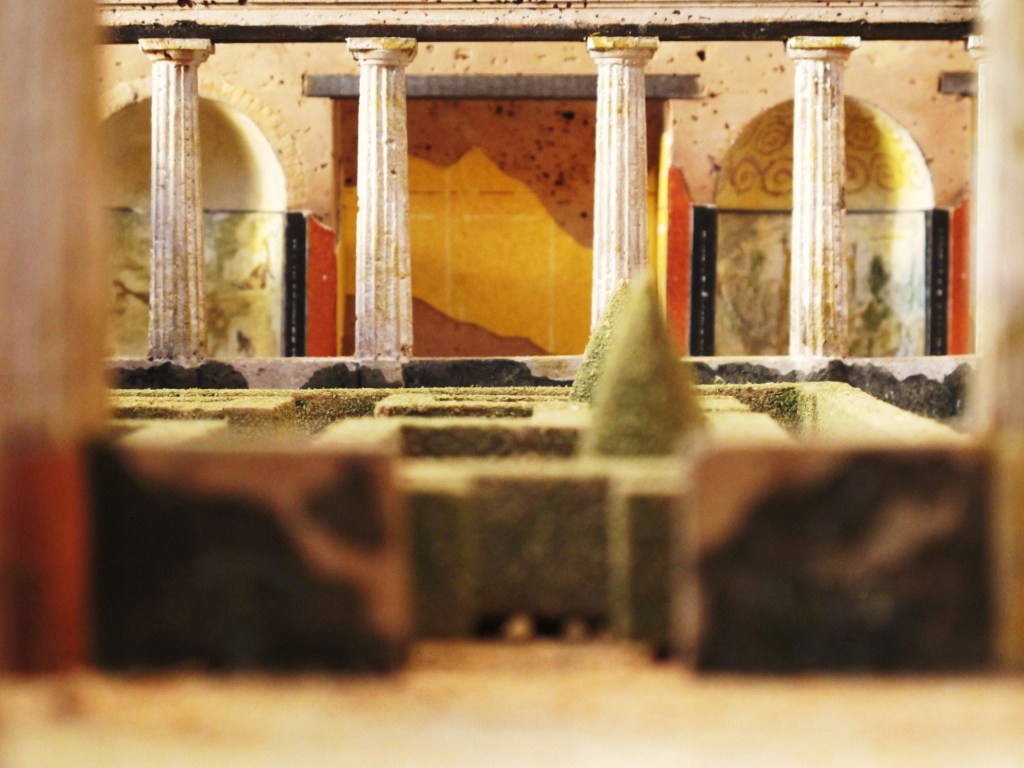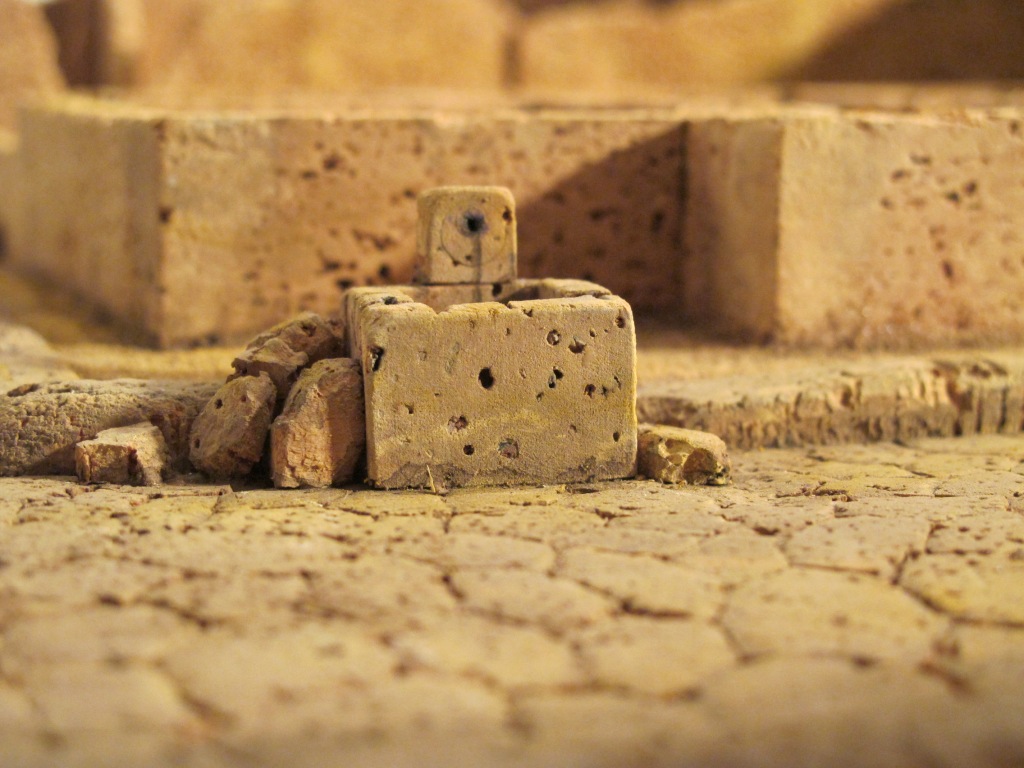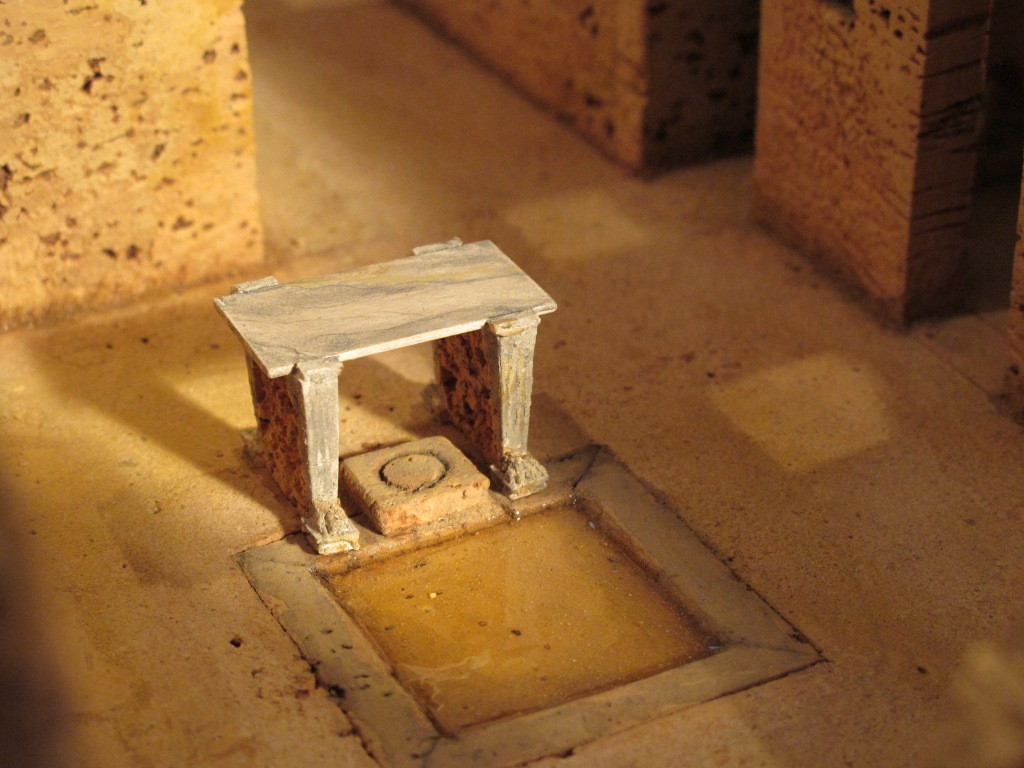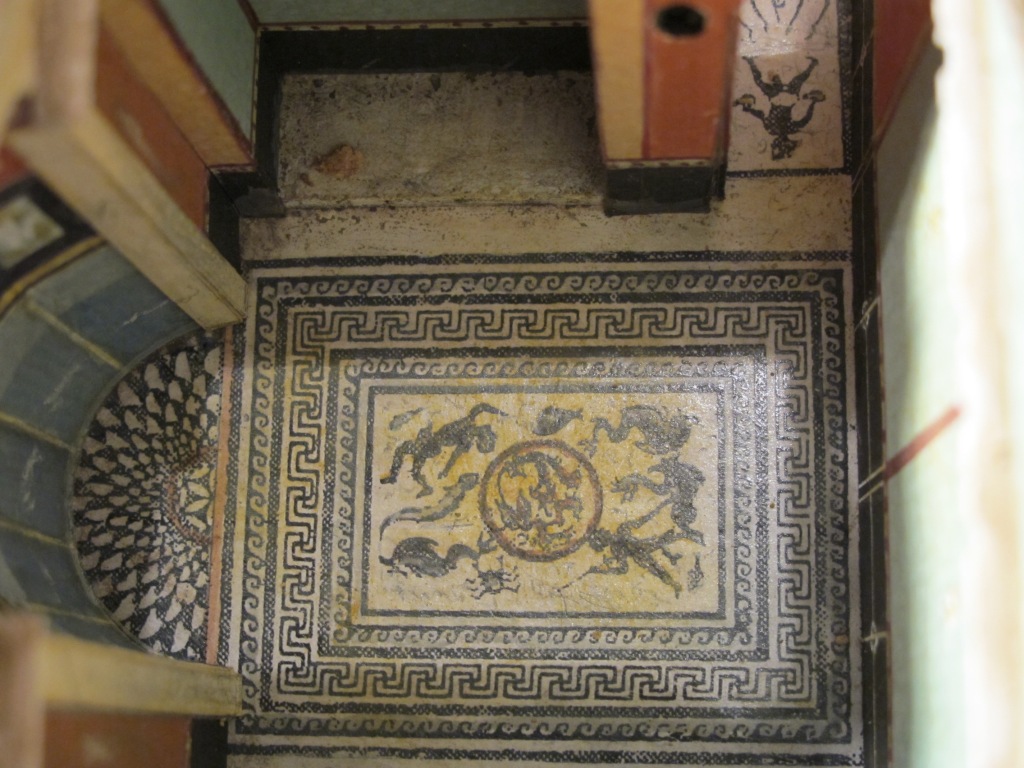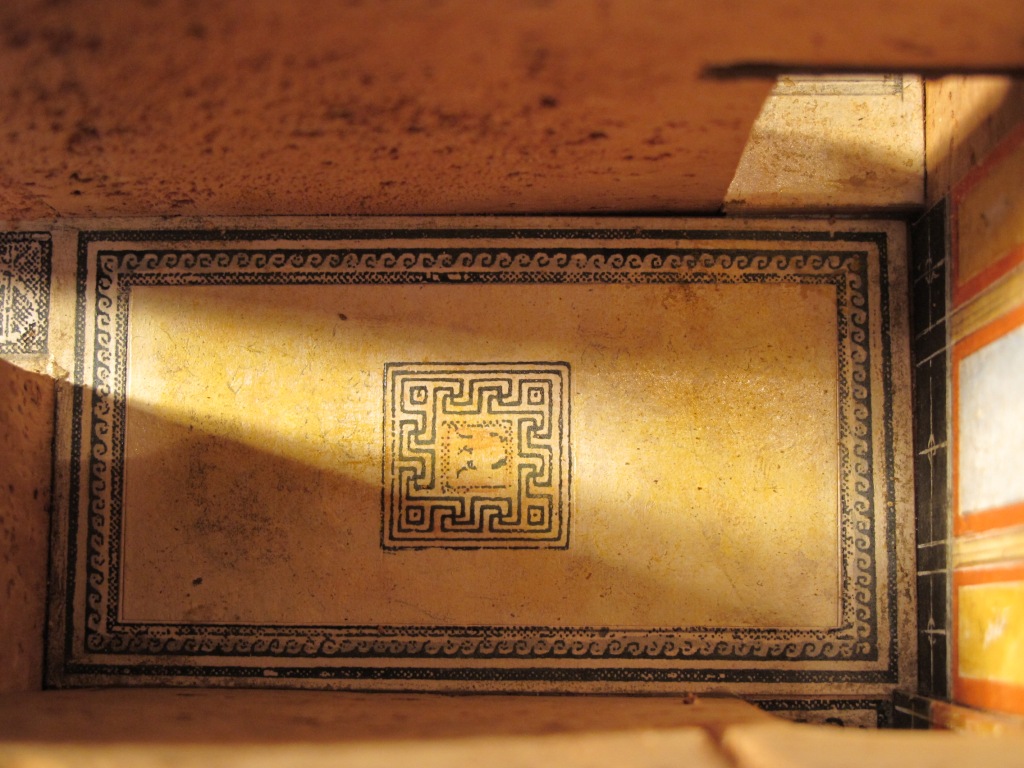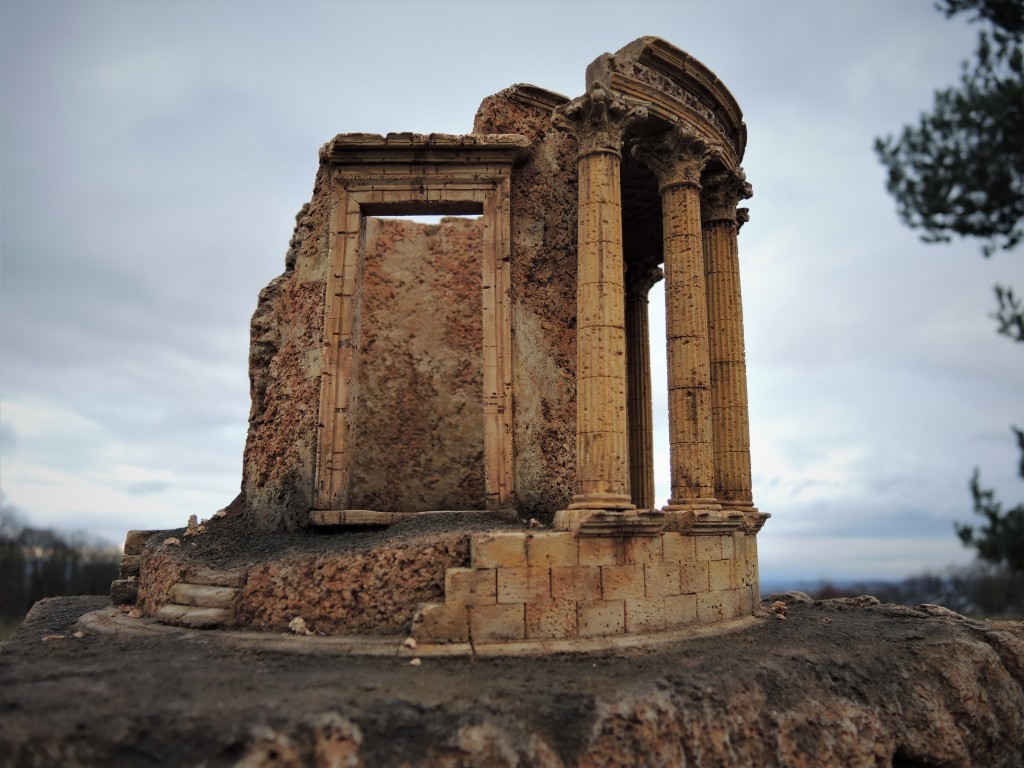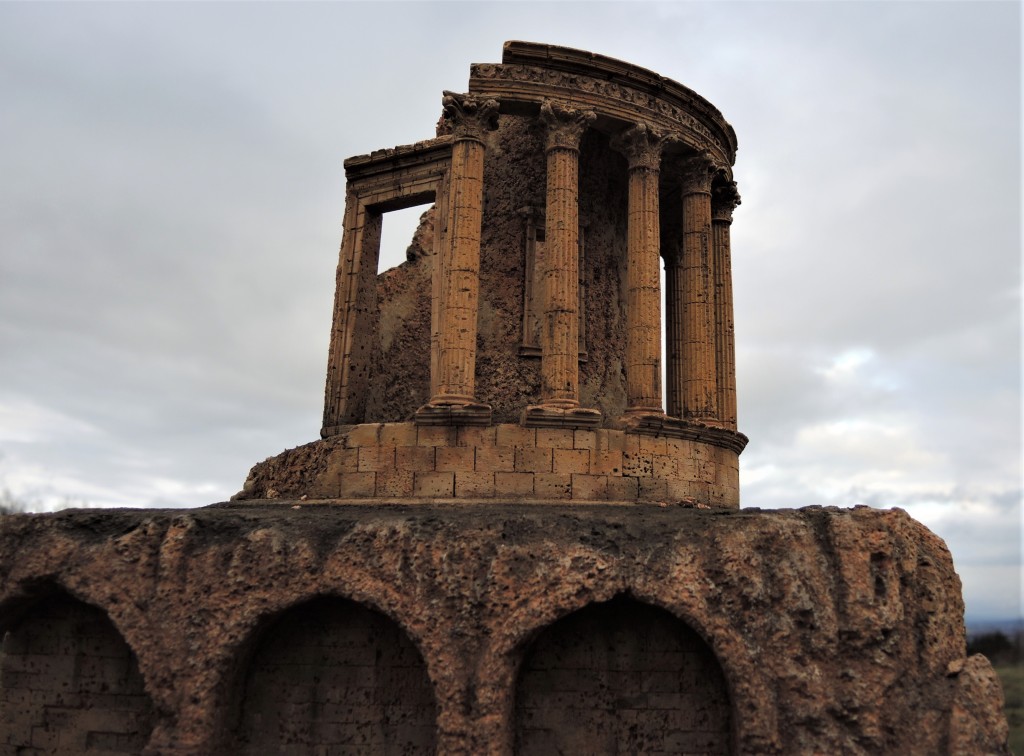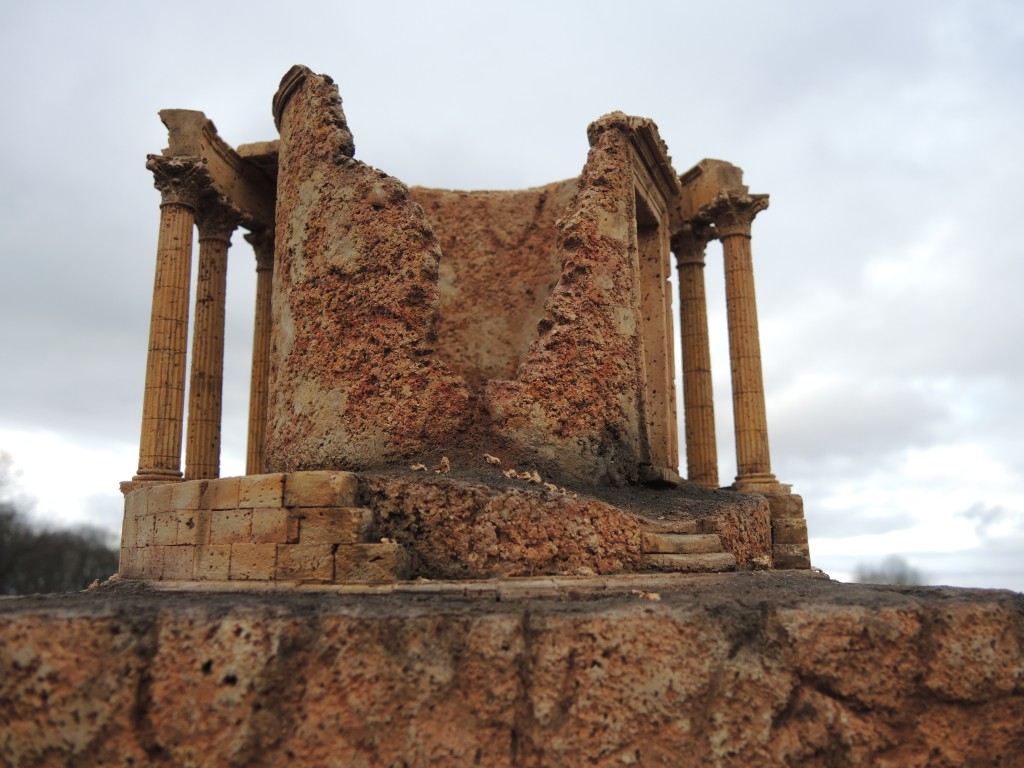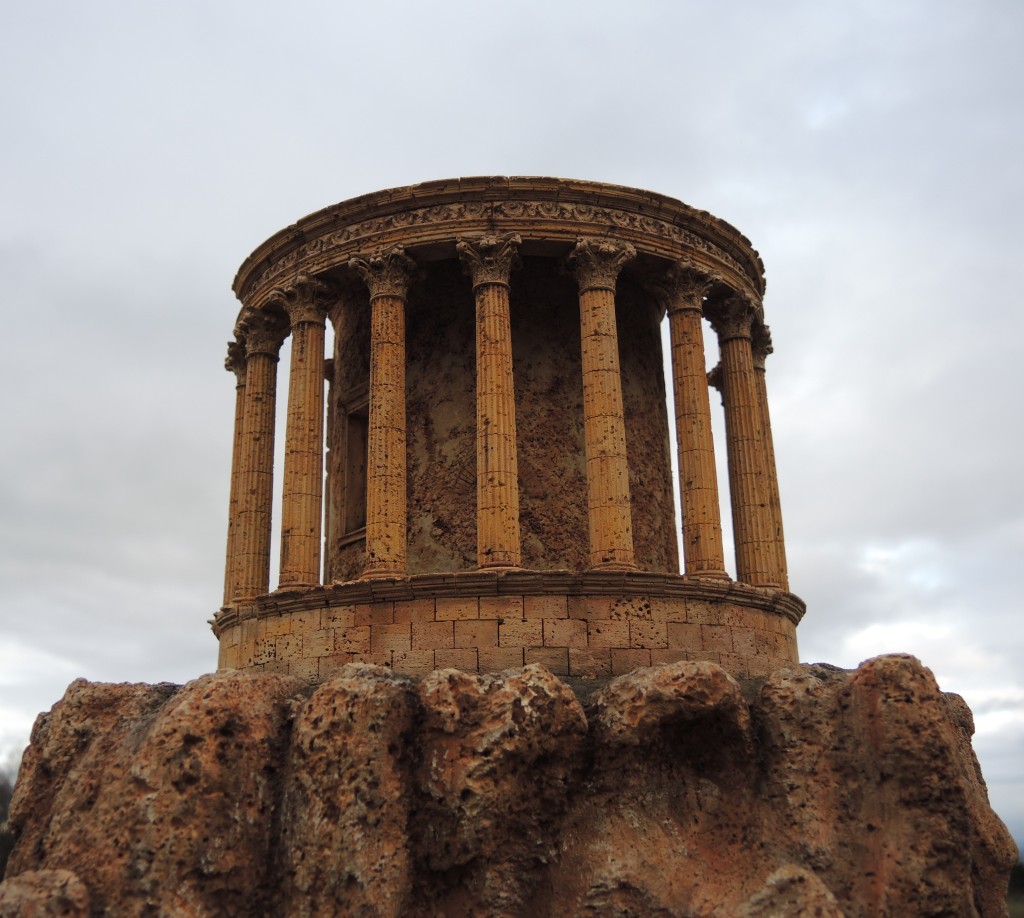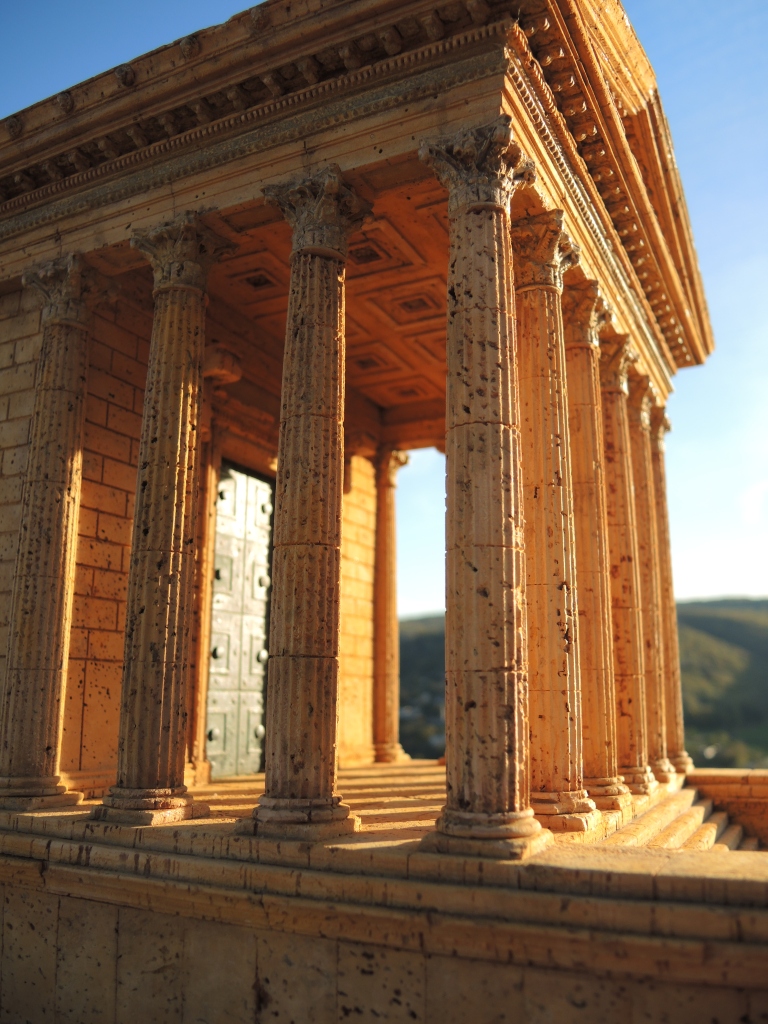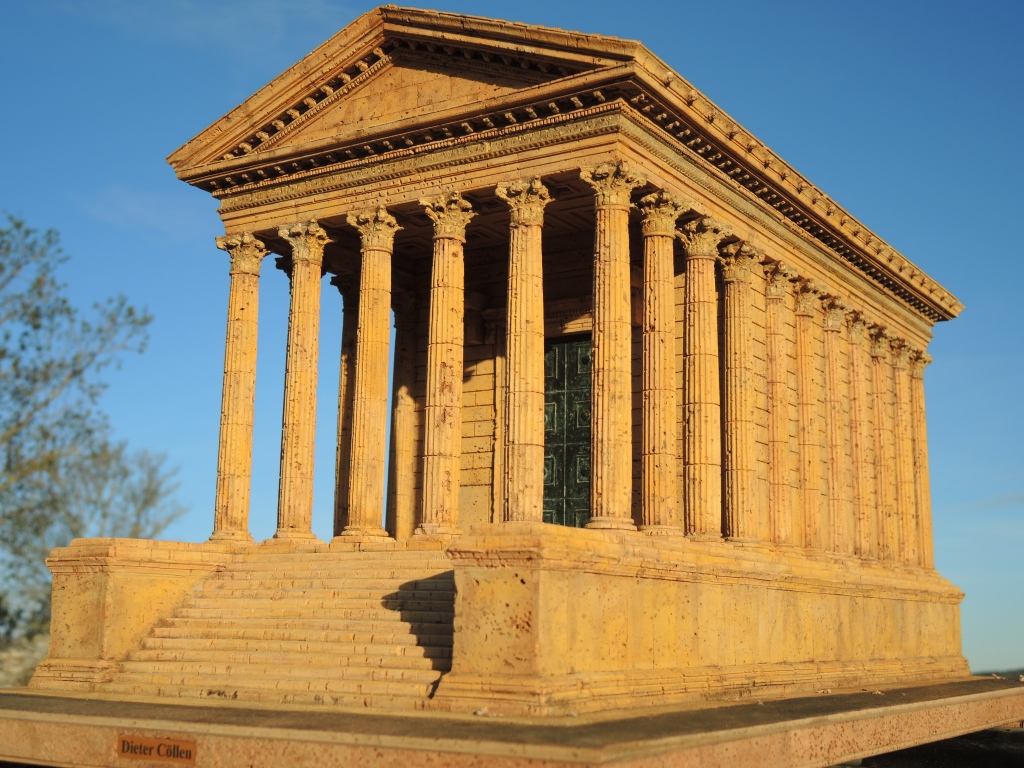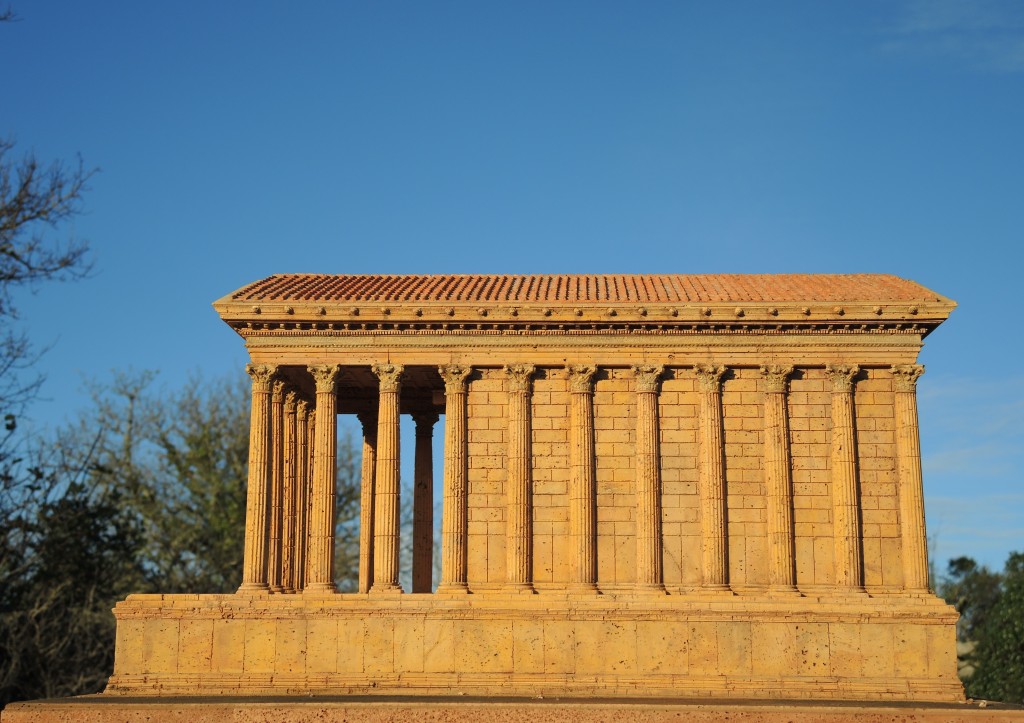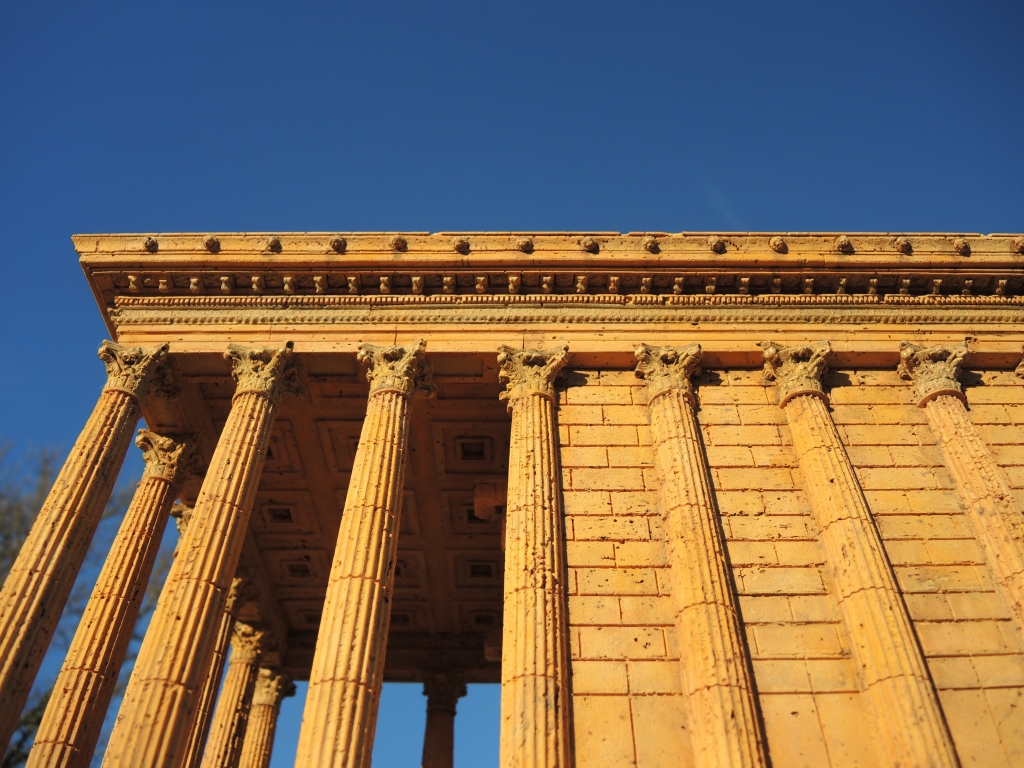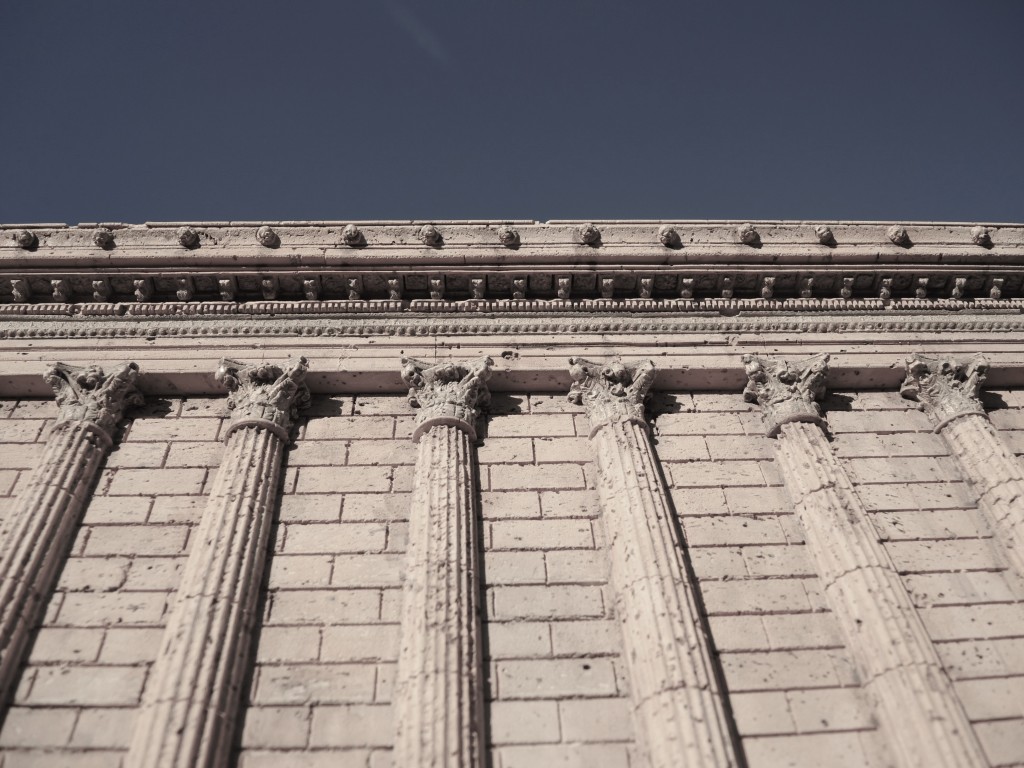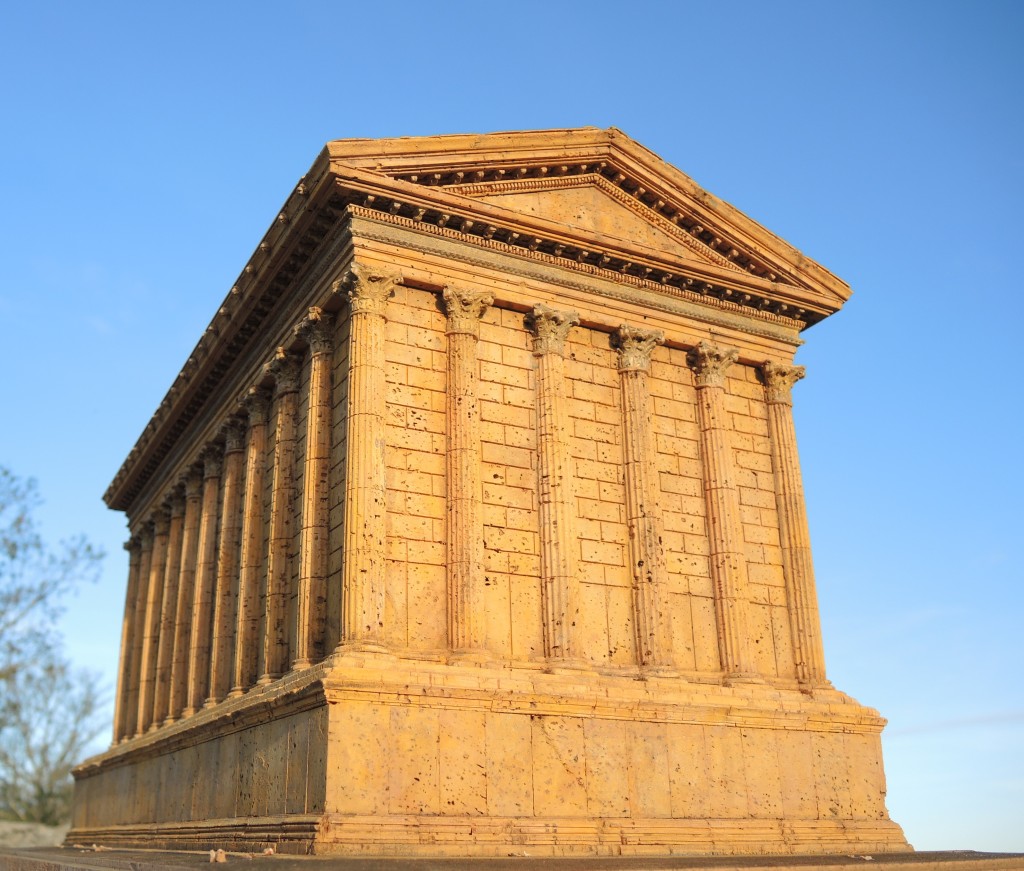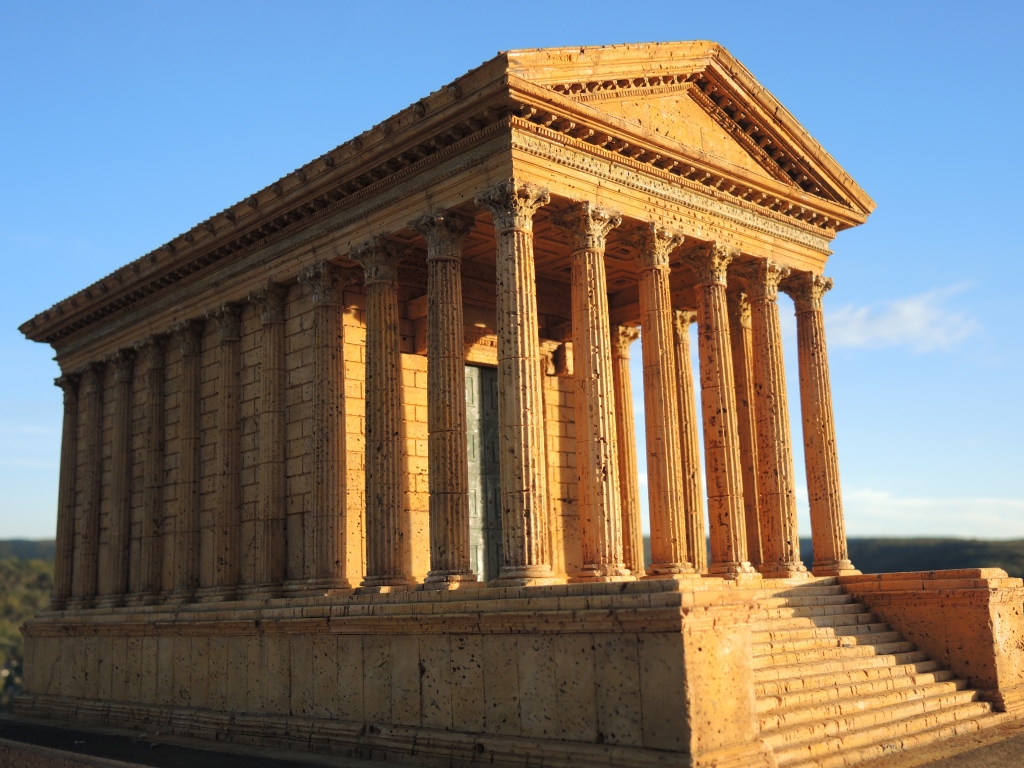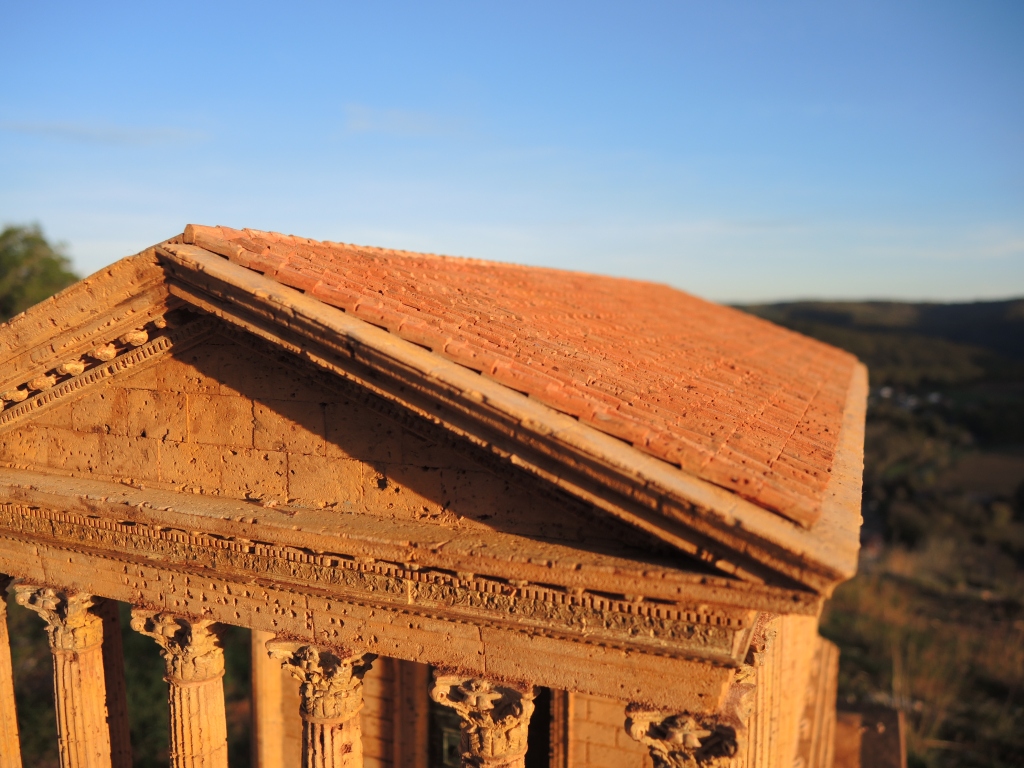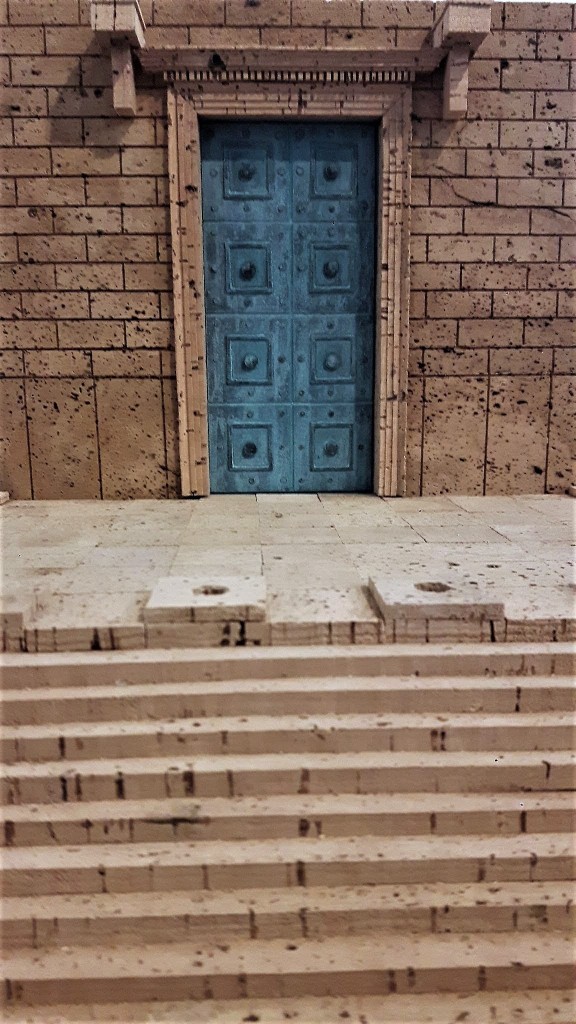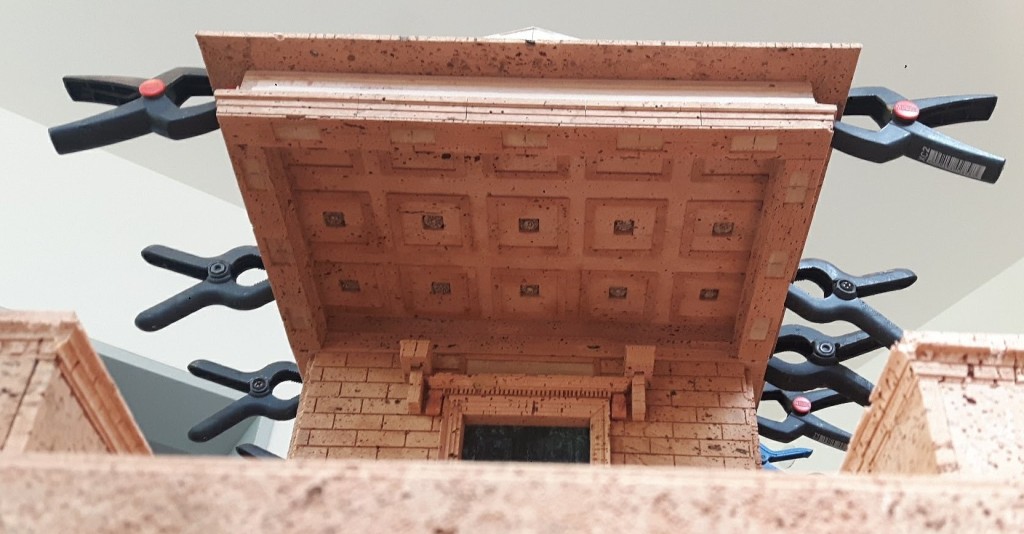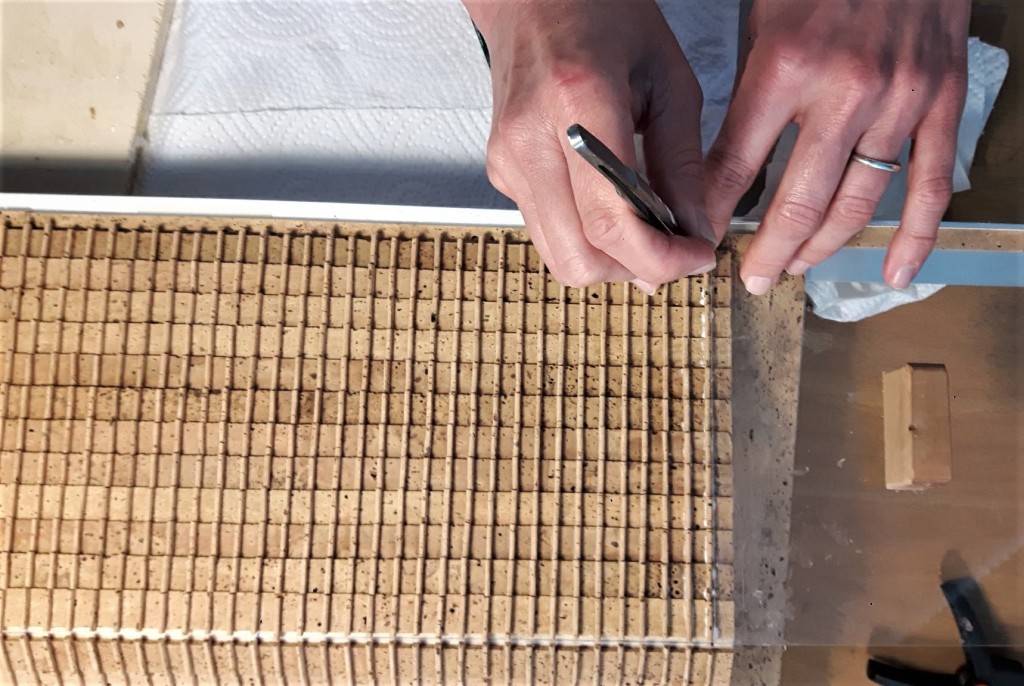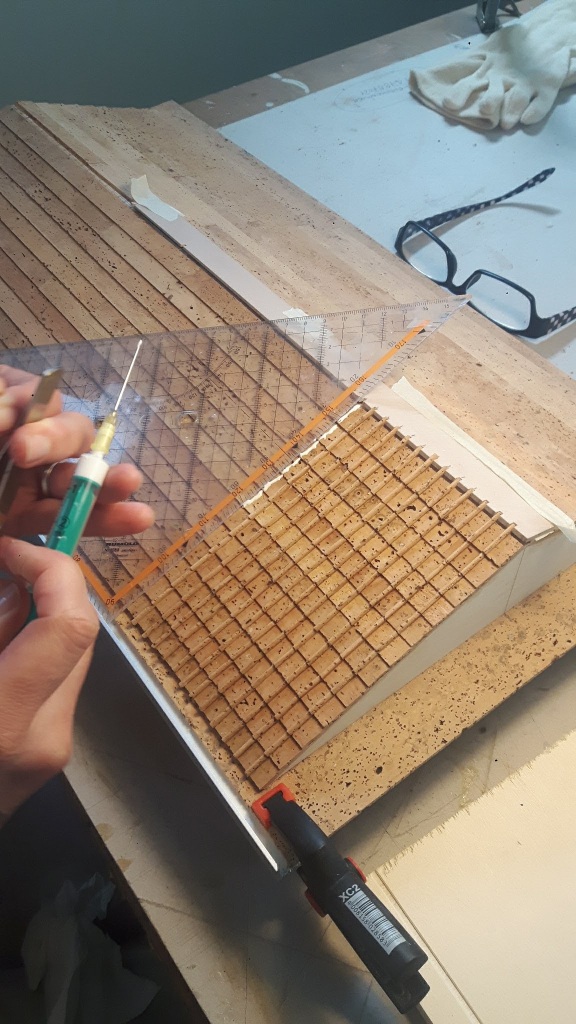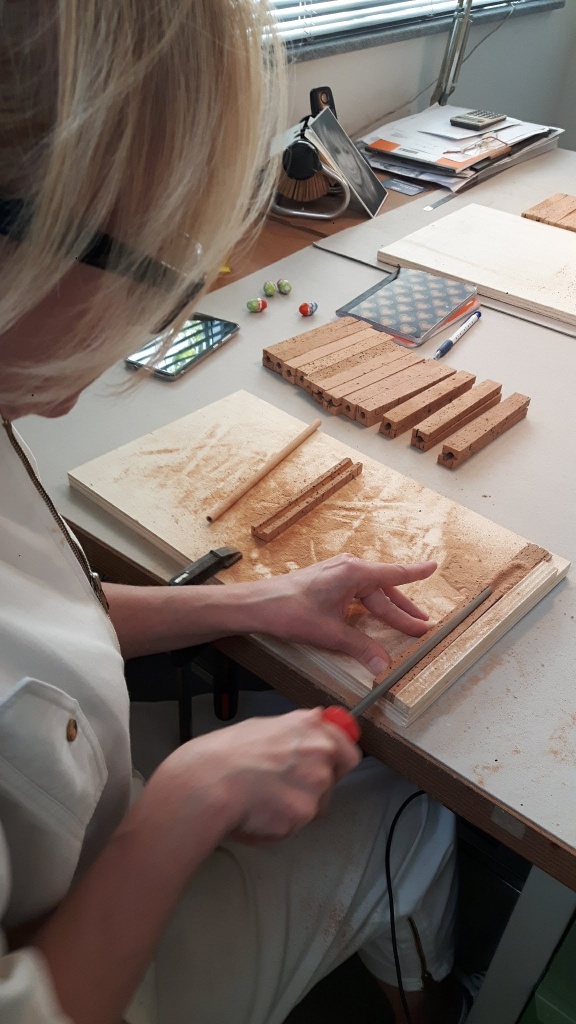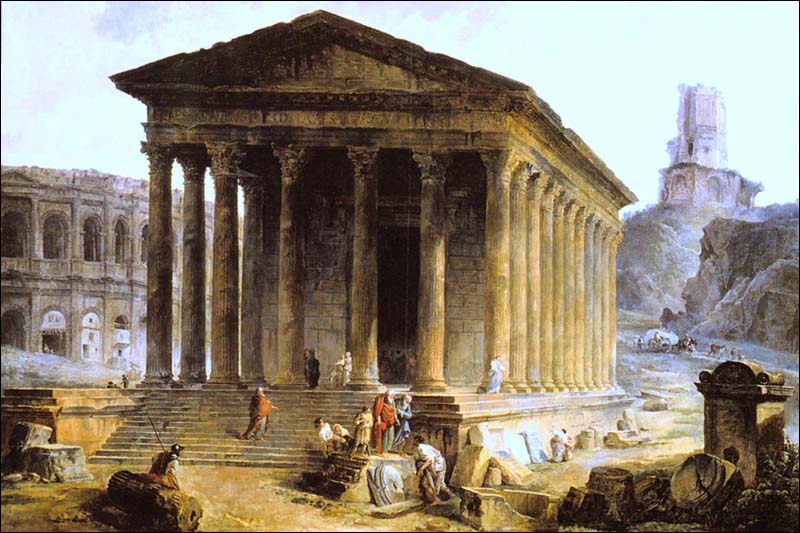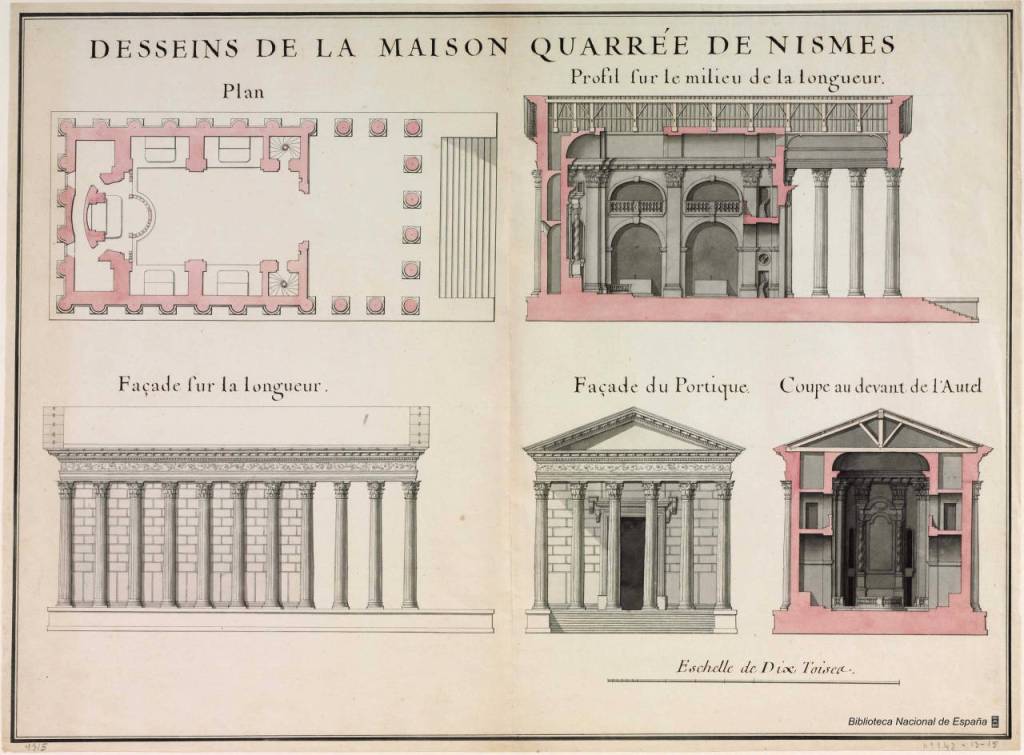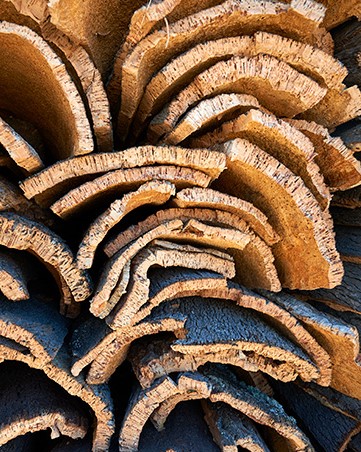


ETRUSCAN CULTURE
A new cork model represents an Etruscan burial chamber carved in sandstone. While Dieter constructs the model in longitudinal section, Malgorzata concentrates on painting the artistic frescoes. They later form the heart of the model – an emotional insight into a forgotten time and culture.
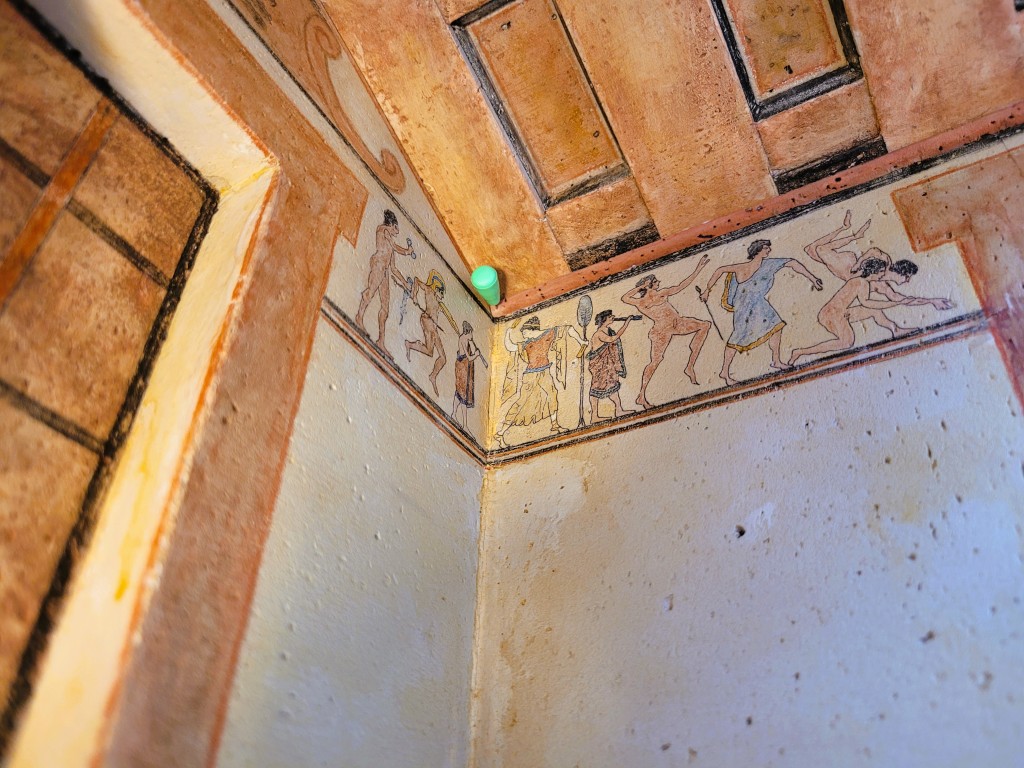
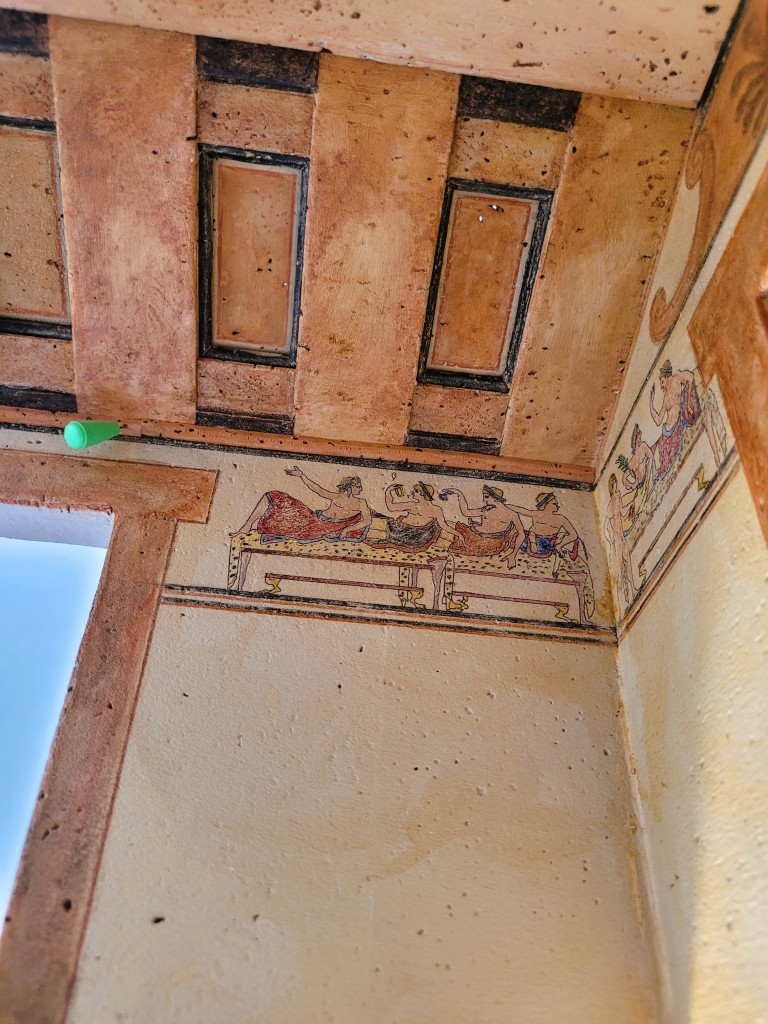

BIRTHDAY
A few temples have already seen the light of day under the hands of Dieter and Malgorzata. However, they are always unique pieces with their own personality. The work is always a great challenge and leads to new craft experiences. The object ( POSEIDON – TEMPLE IN PAESTUM scale 1:100) still needs some additions, but today it leaves the studio for the first time and is kissed by the sun in Malgorzata’s hands.

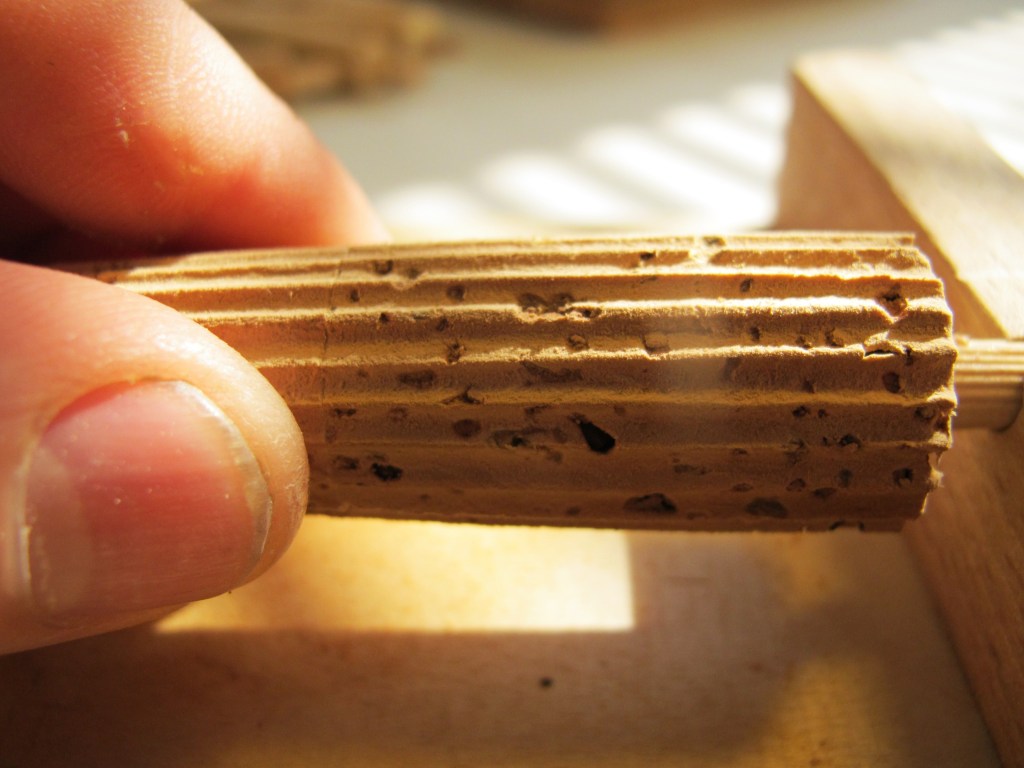
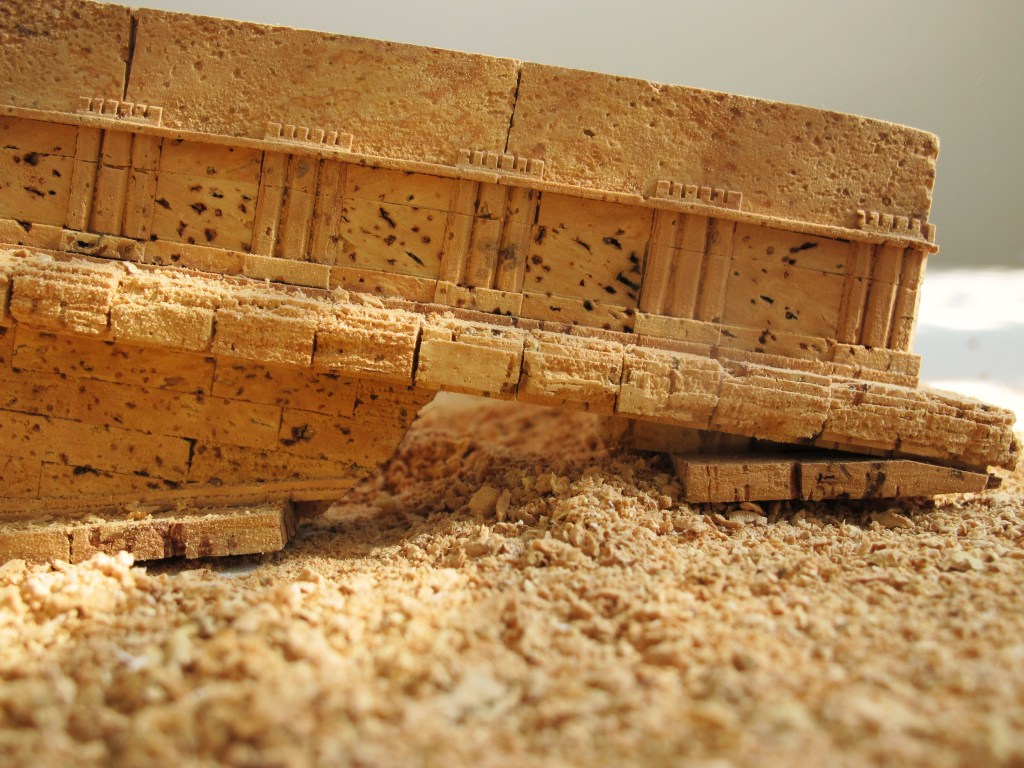
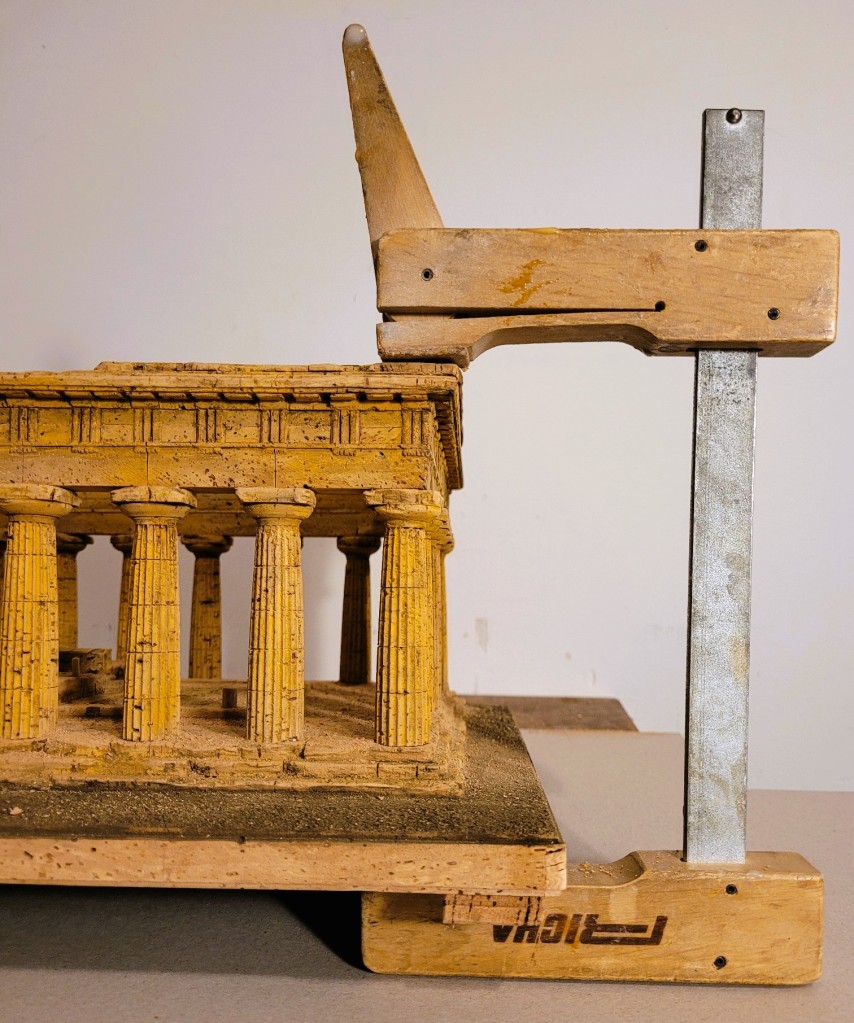
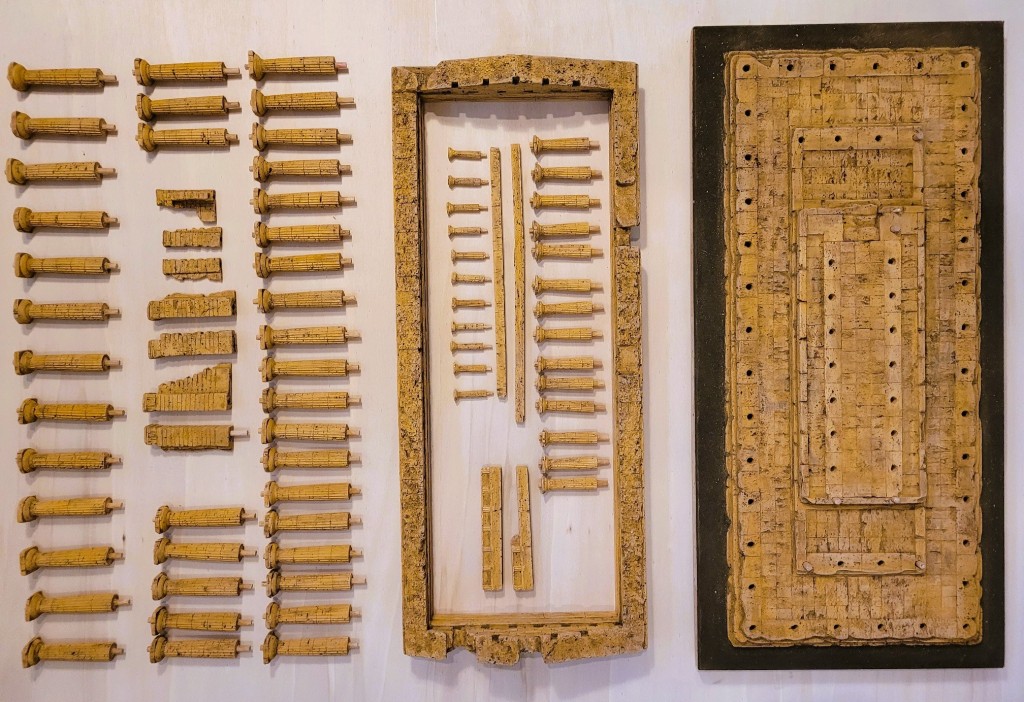

HOT SPOT
THE COLOSSEUM was certainly once one of the bloodiest spots in the world – we all know its history. However, its ruin gives us the opportunity to change our perspective and think about different aspects.
Dieter and Malgorzata decided to create a new cork model of this unique monument and integrate all their knowledge into the object, with the desire to offer the audience a wide emotional scope for reflection. Let’s see where the journey goes…
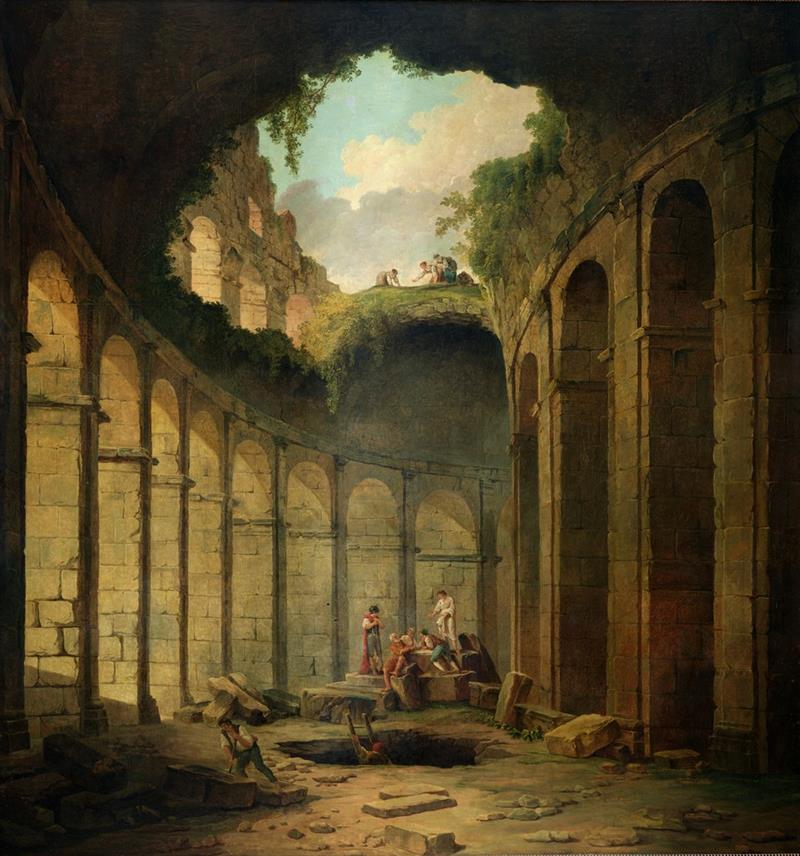
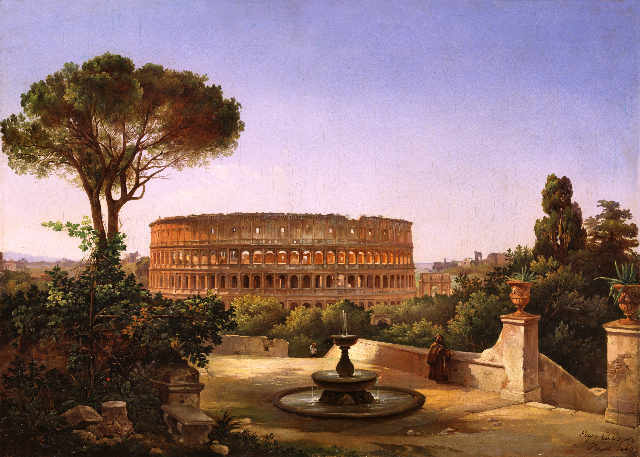
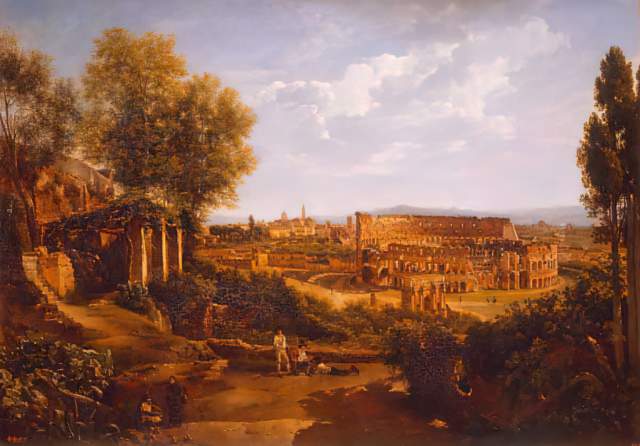
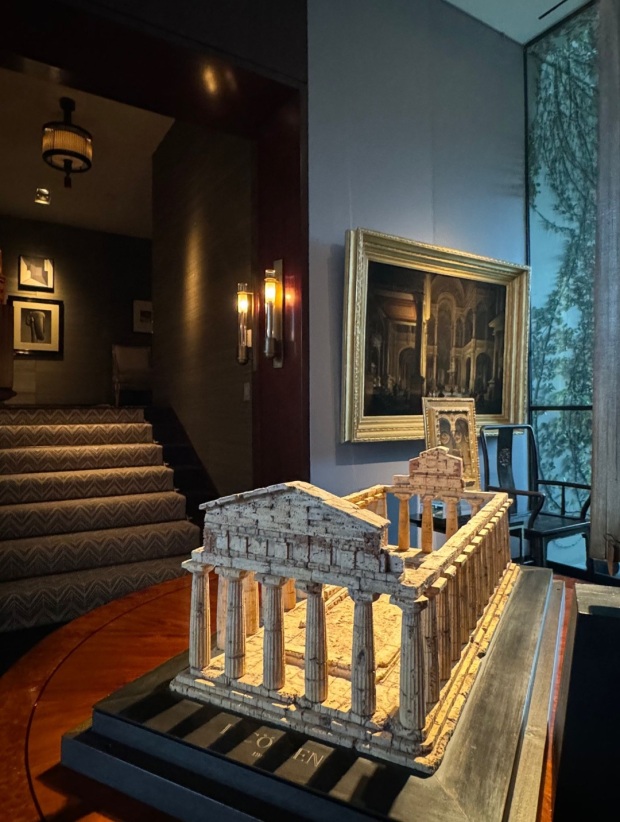
LIVING FOR BEAUTY
Cork model of the Temple of Athena in Paestum on display in a private residence in Las Vegas
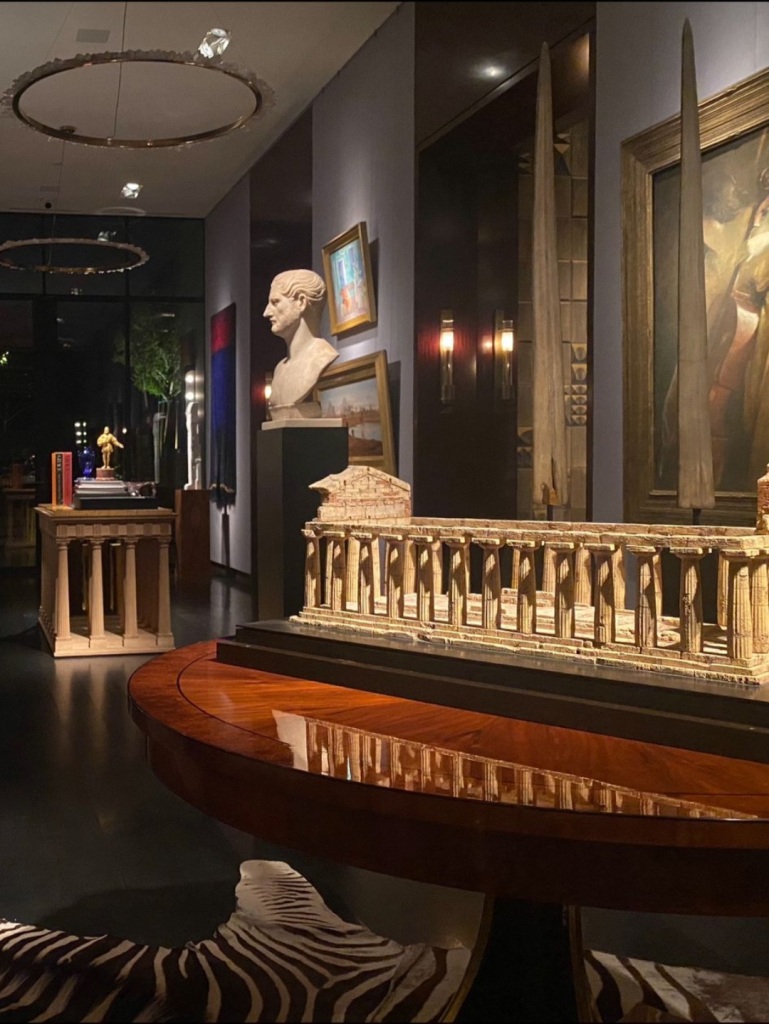
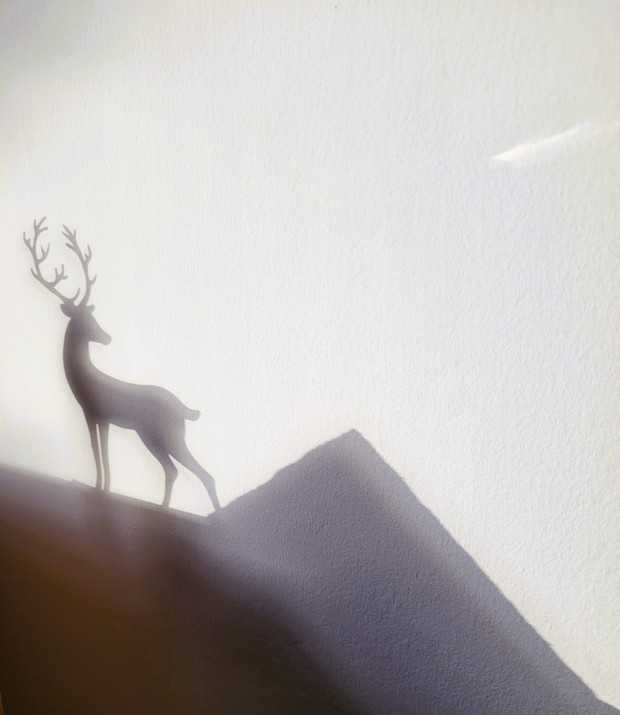
RESPECT AND JOY FOR EVERYONE
Shadow play made in Auschwitz with a cork model of the great pyramid and a children’s toy
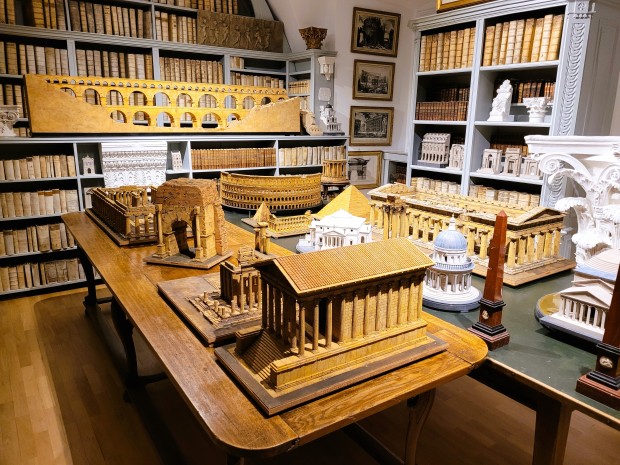
A NEW MUSEUM
is open to the public. 14 large cork models by Dieter and Malgorzata Cöllen can be seen in the architecture cabinet of the PASSAU STATE LIBRARY
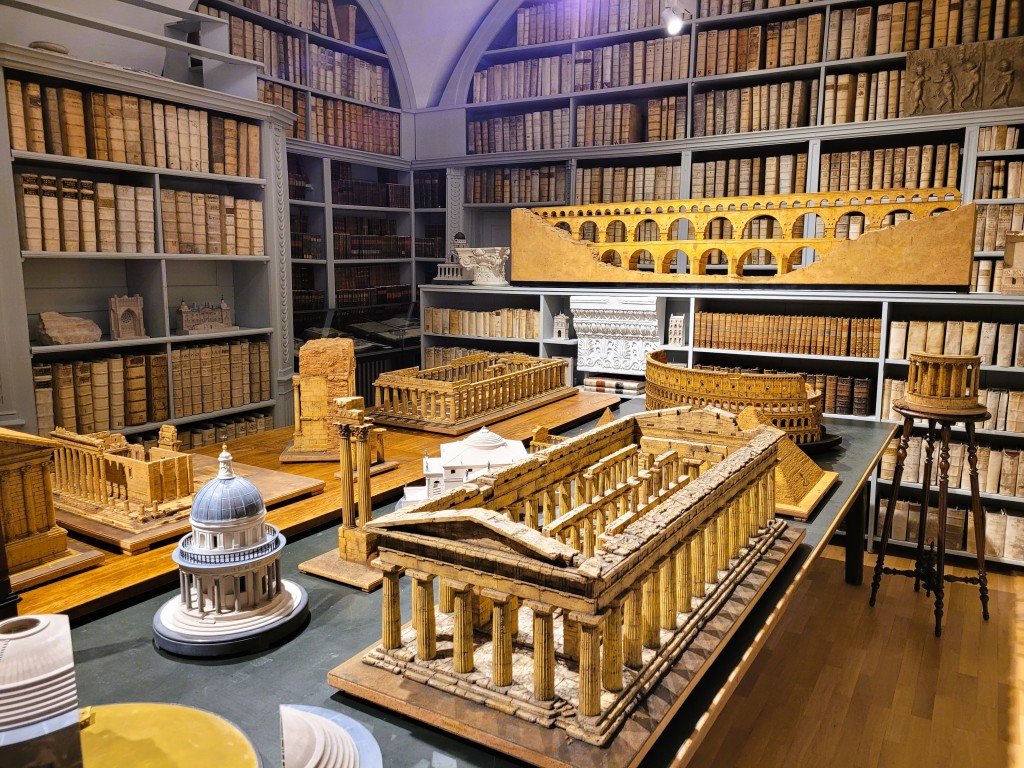
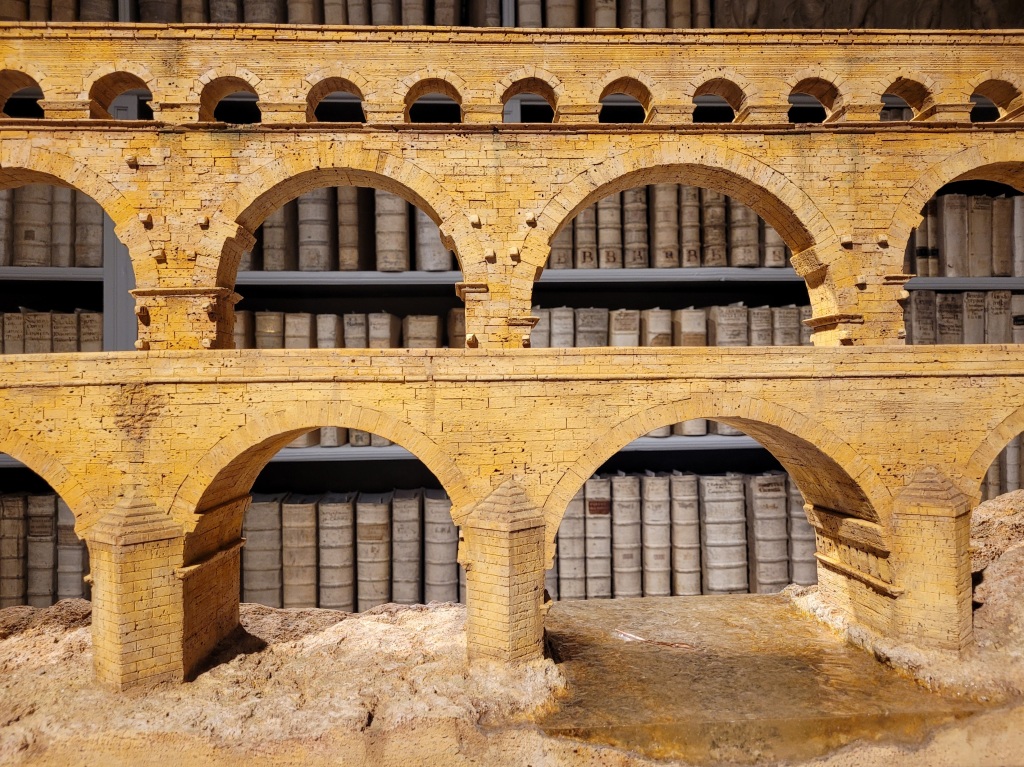
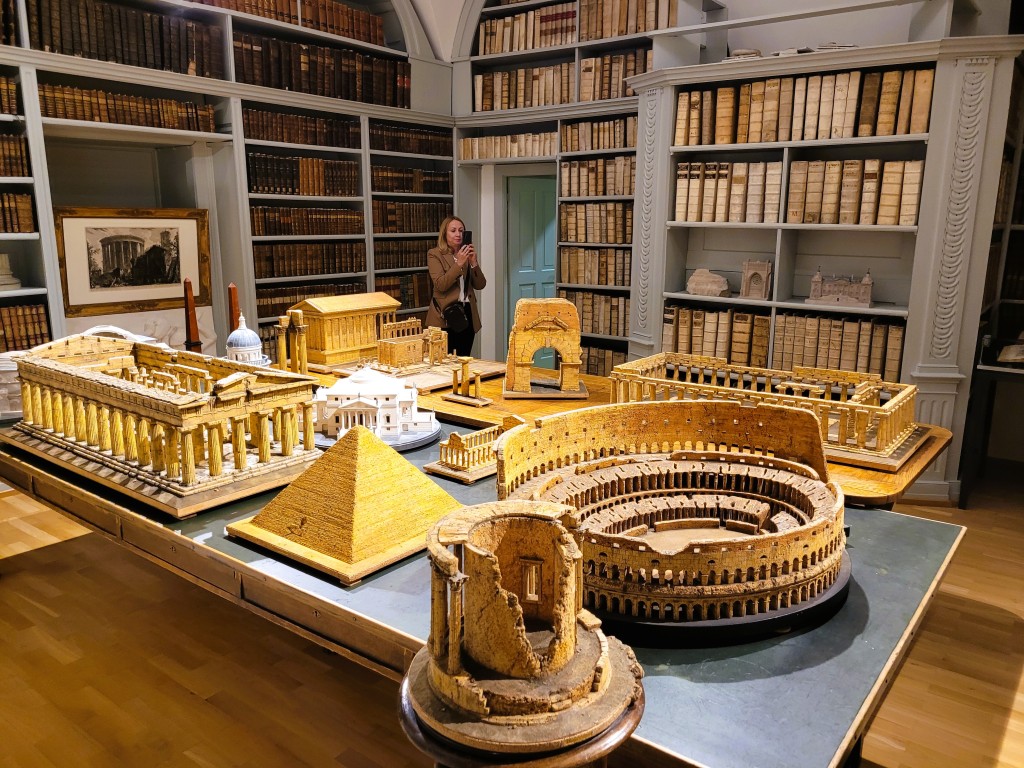
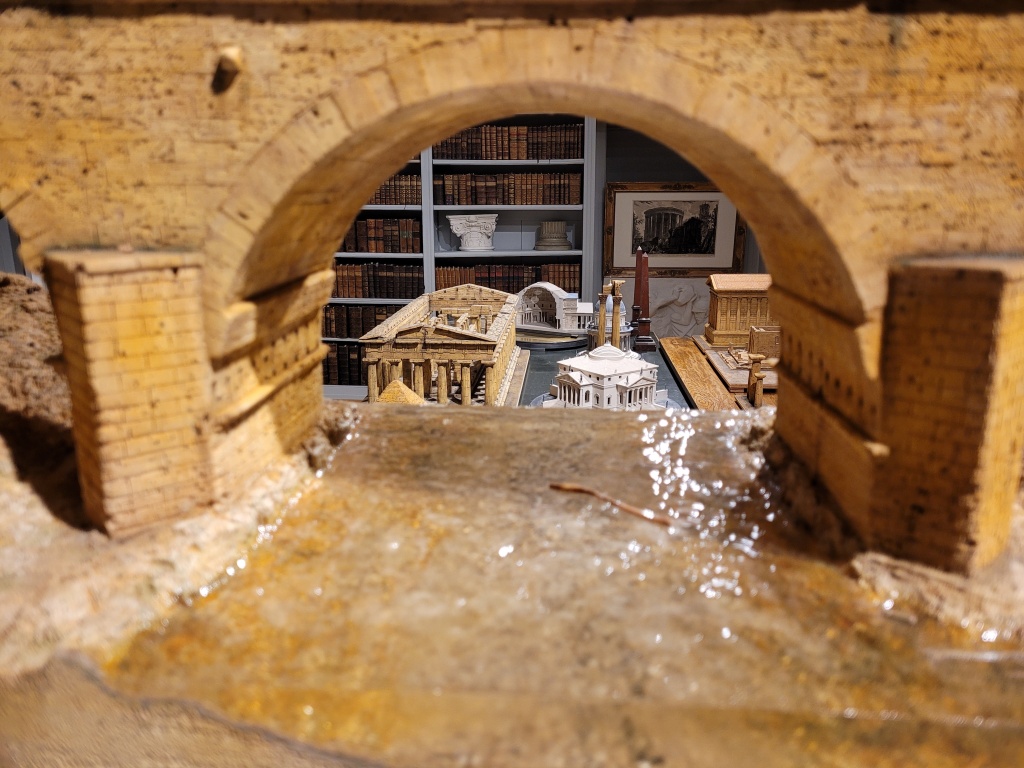
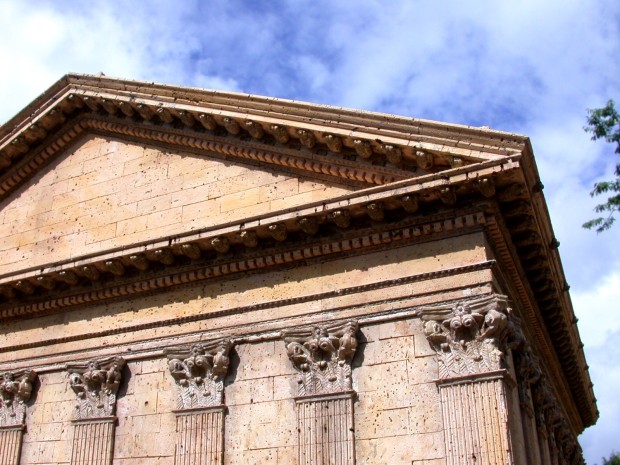
BACK ON STAGE
After a long time in the darkness of the archives, the cork model of the Capitol Temple can now be seen in Cologne in the Church of ST. MARY IN THE CAPITOL and shows the interesting architectural history of this place.
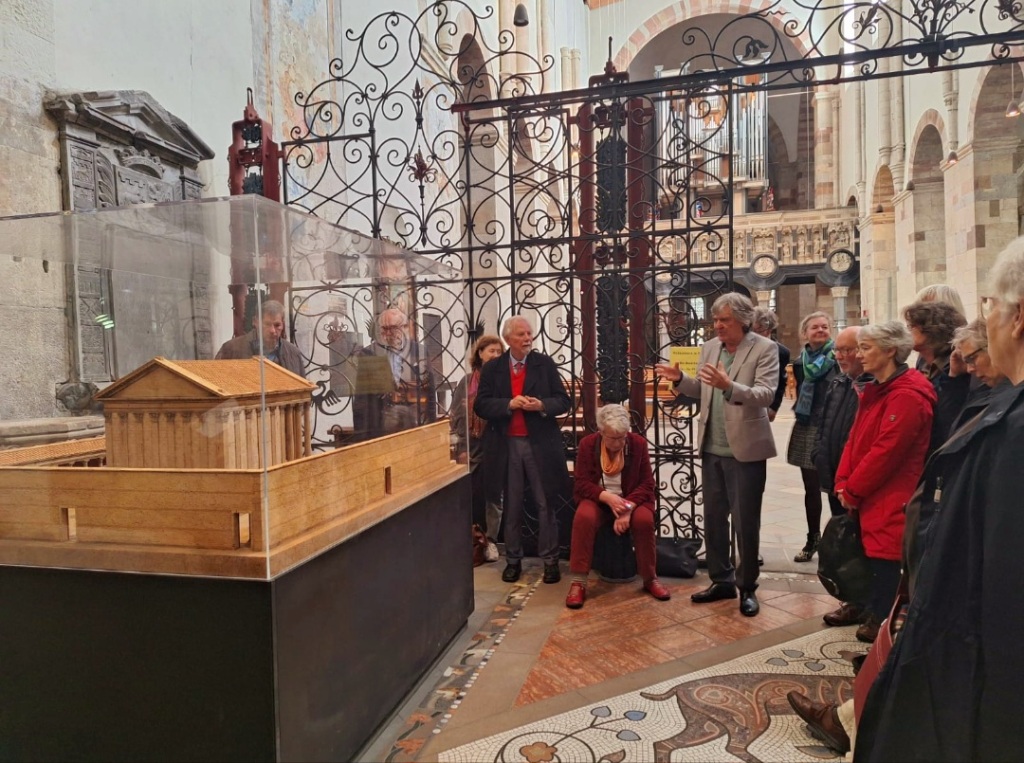
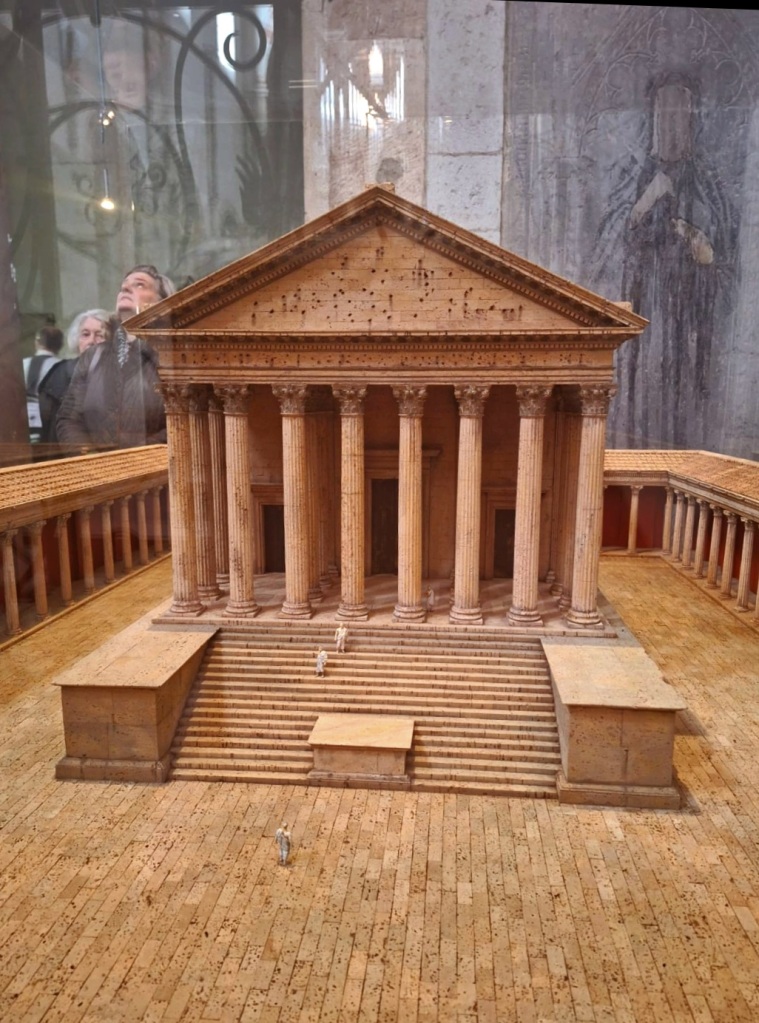
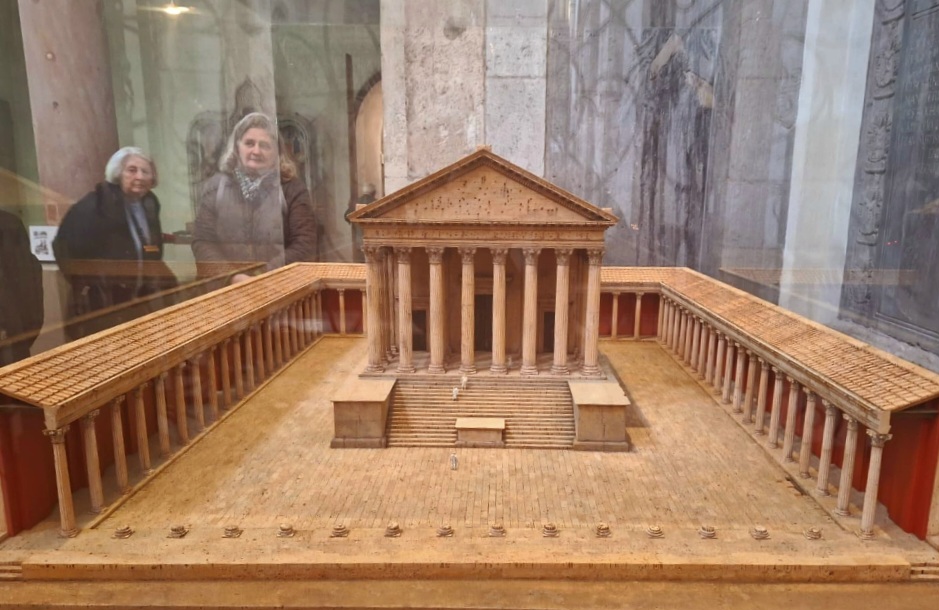
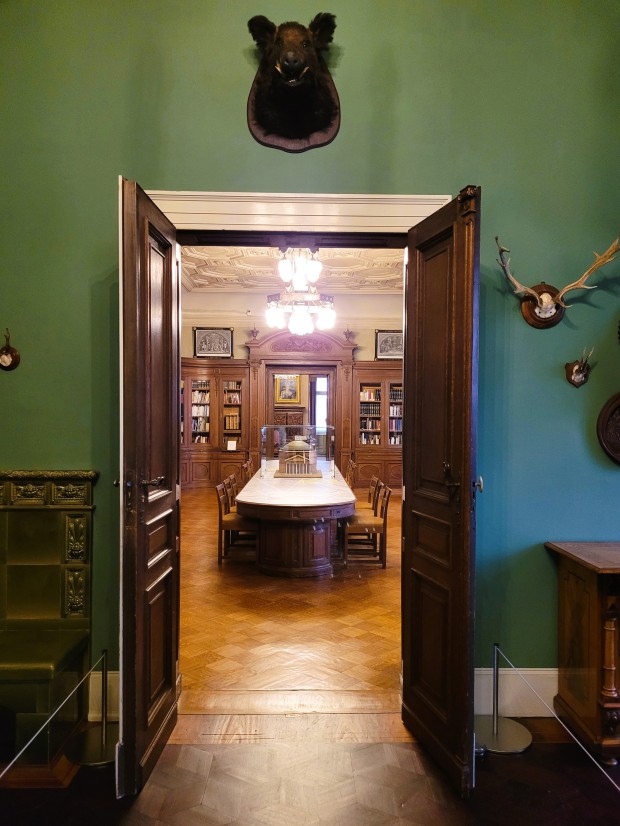
THE GATES ARE OPEN
The cork model of the Pantheon has arrived at the LINDENAU – MUSEUM and is open to the public in the wonderful ALTENBURG CASTLE…
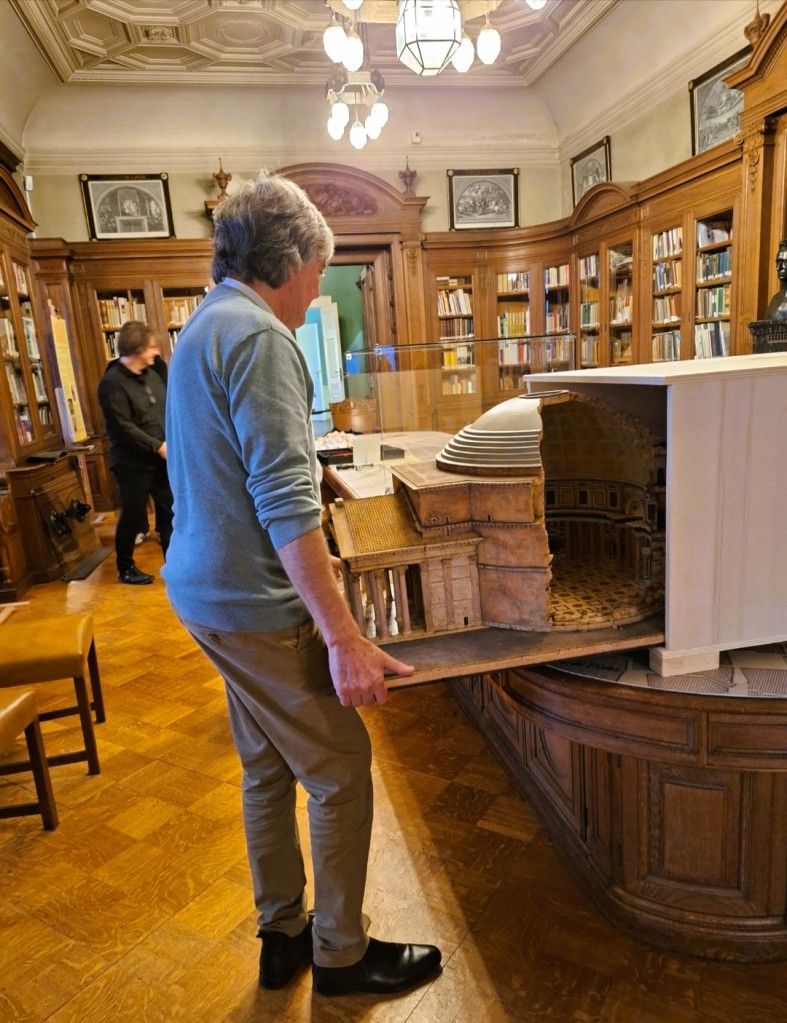
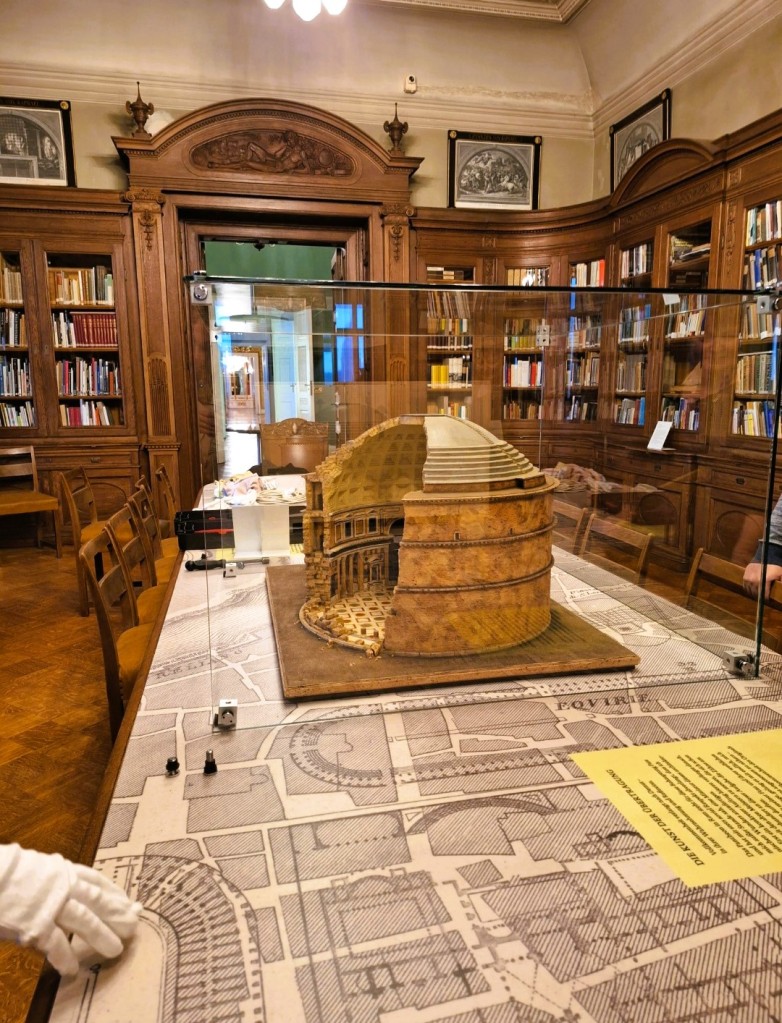
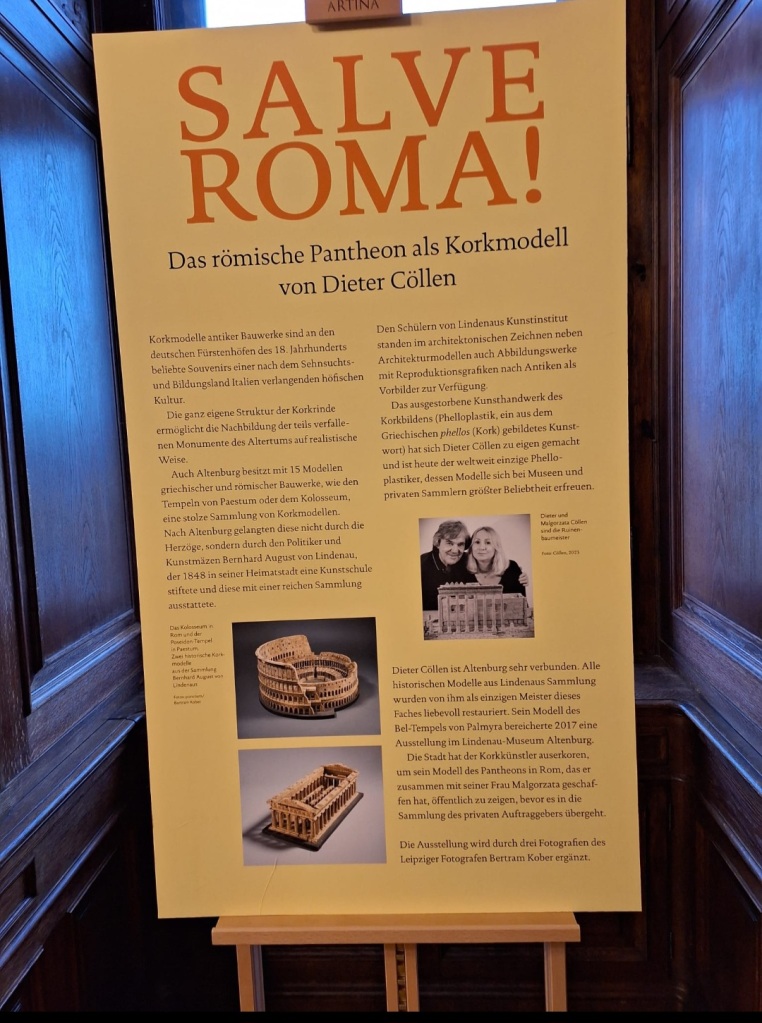
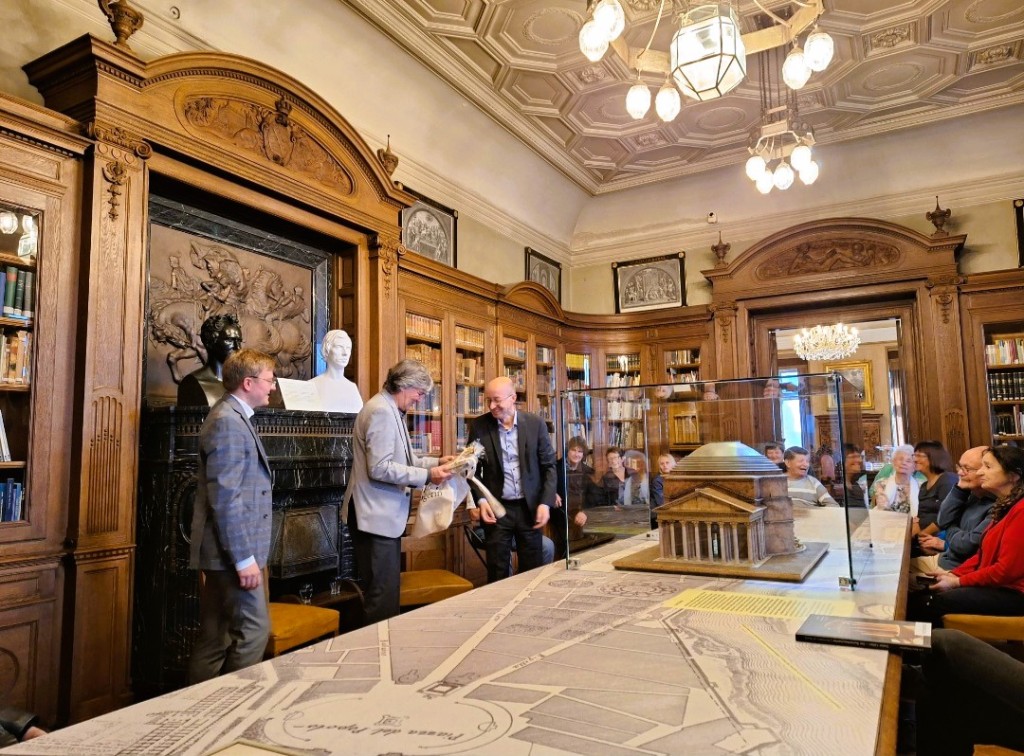
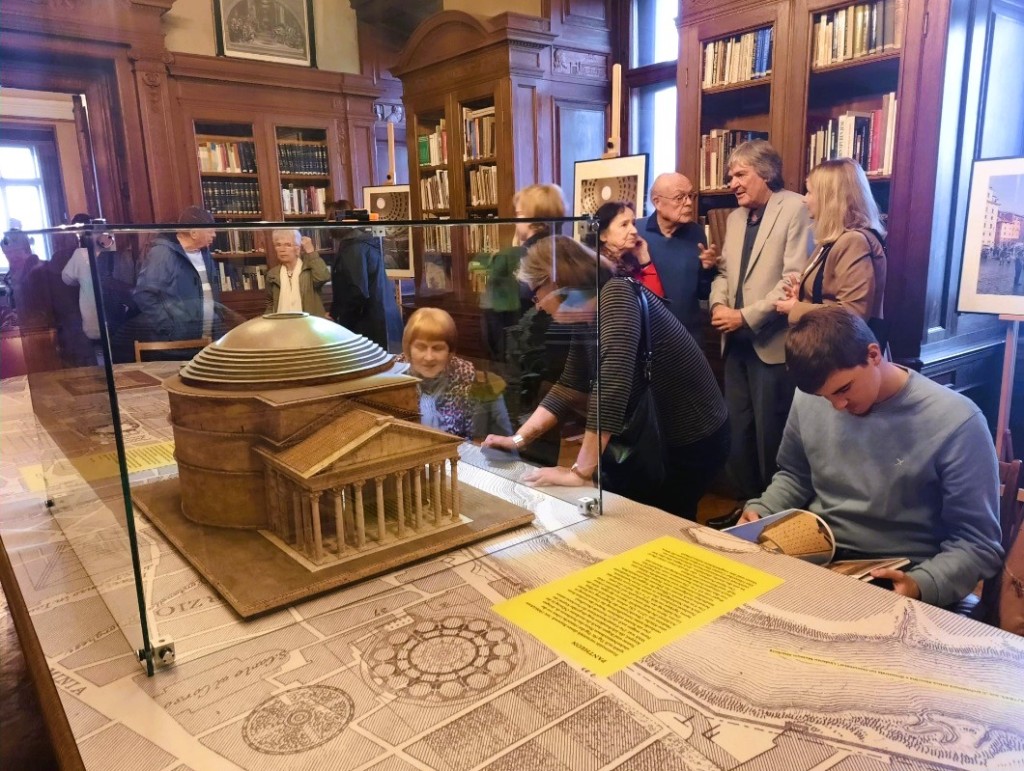
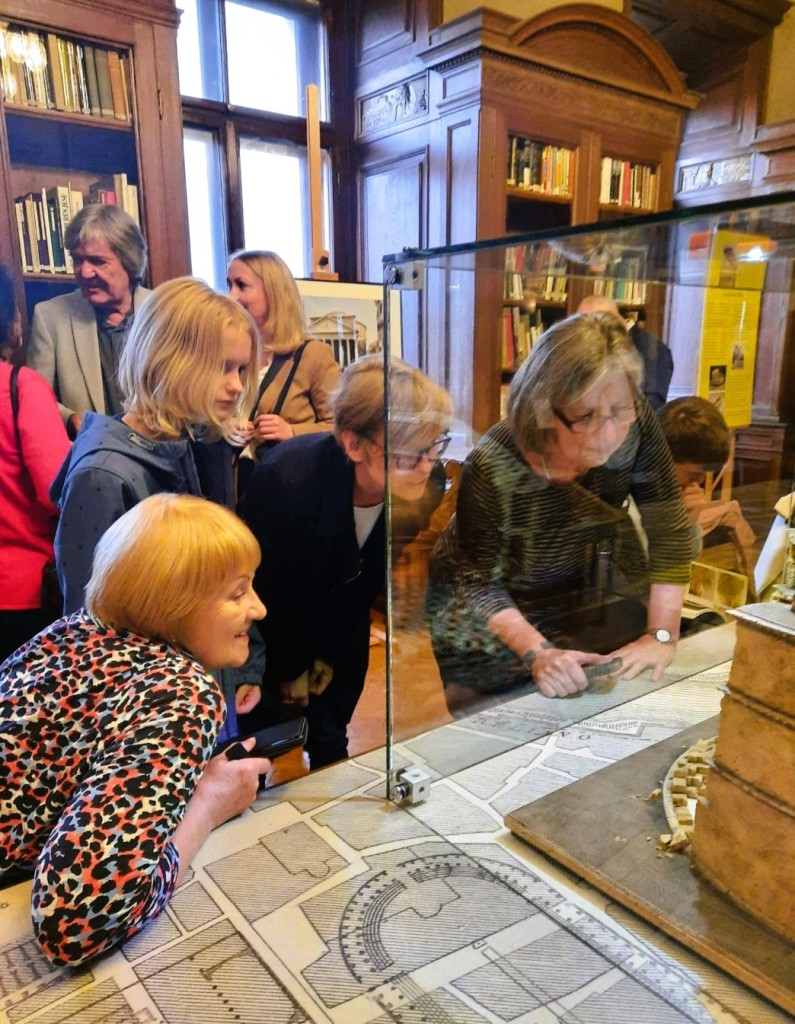
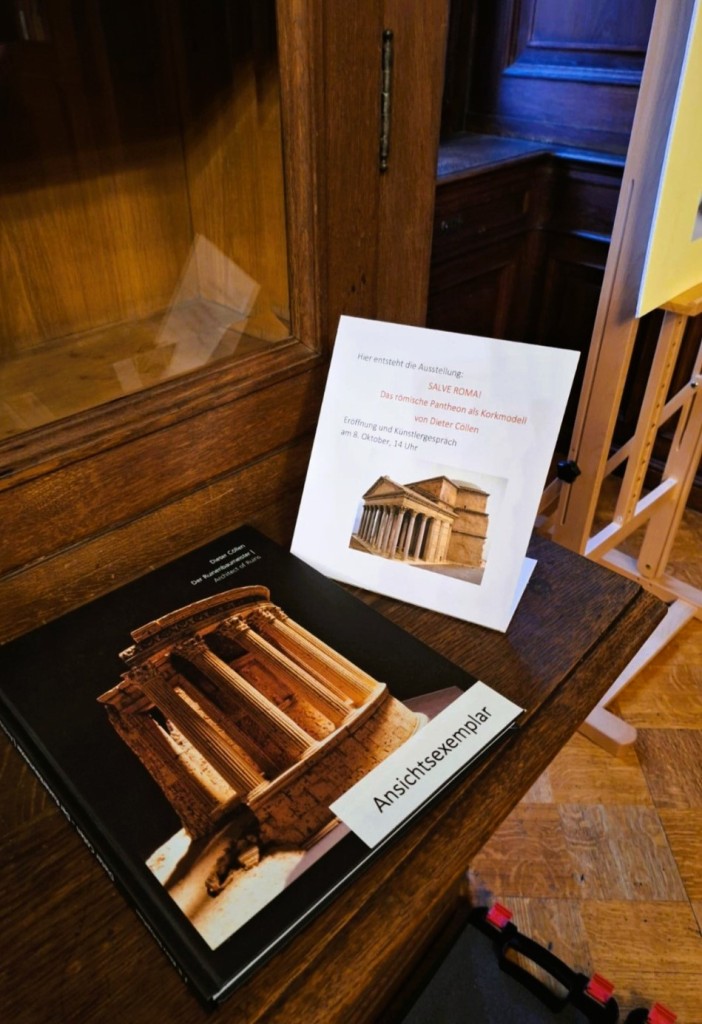
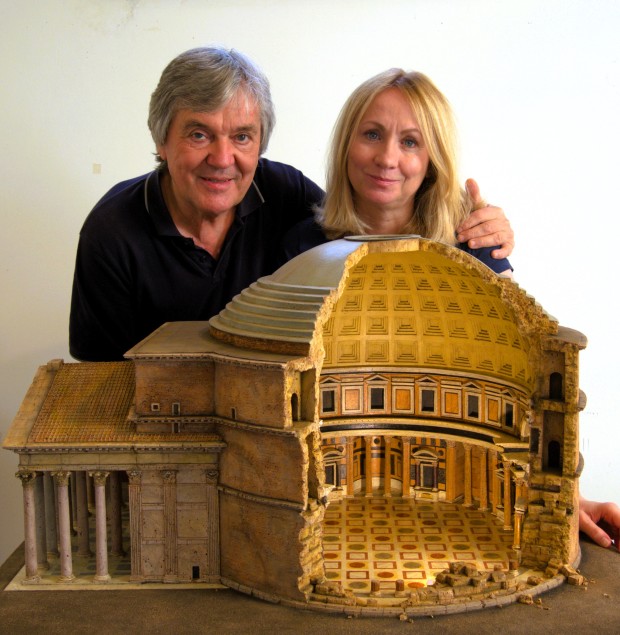
SALVE ROMA
The cork model of the Pantheon in Rome will be presented to the public in the LINDENAU MUSEUM / ALTEBURG in the exhibition „SALVE ROMA“ from October 8th, 2023 to July 28th, 2024.
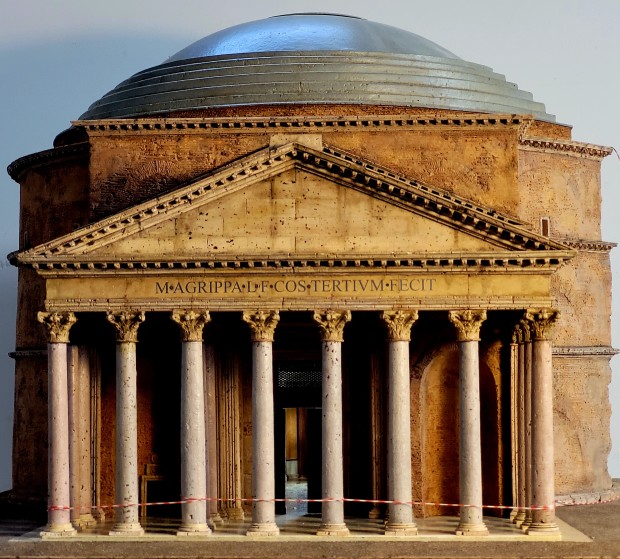
BEAUTY UNDER CONSTRUCTION
Corkmodel of the Pantheon in Rome, scale 1:100 by Dieter Cöllen and Malgorzata Lagan
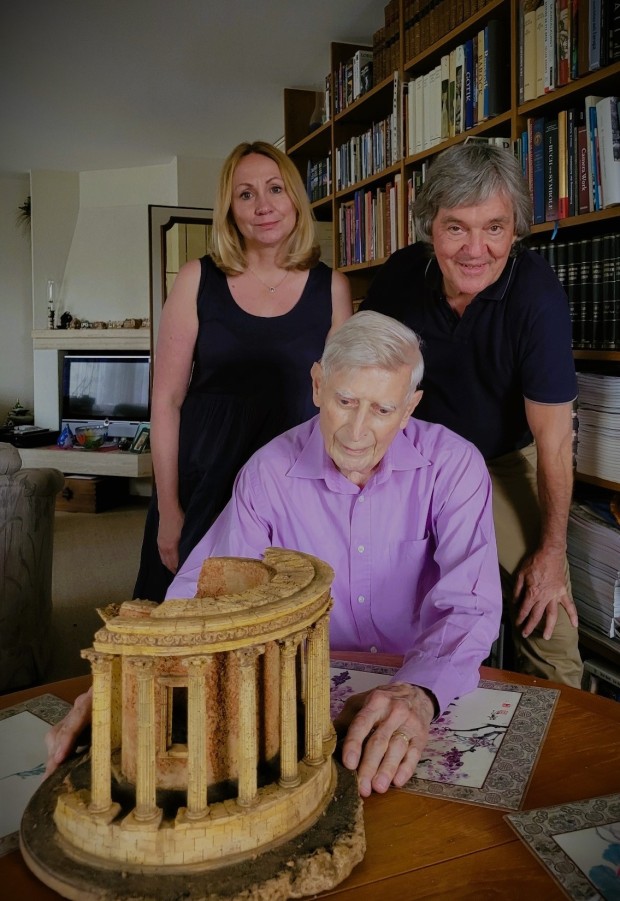
A GREAT HONOR
Today Dieter and Malgorzata had the honor of being guests of PROF. DR. HERBERT BLOMSTEDT in Lucerne. As an admirer and collector of their cork models, they were allowed to take a little journey through his eventful life and benefited from his warmth and immense knowledge. Now it’s summer break, but soon he’ll be touring again and conducting the most famous orchestras. Thank you from our hearts and good luck..
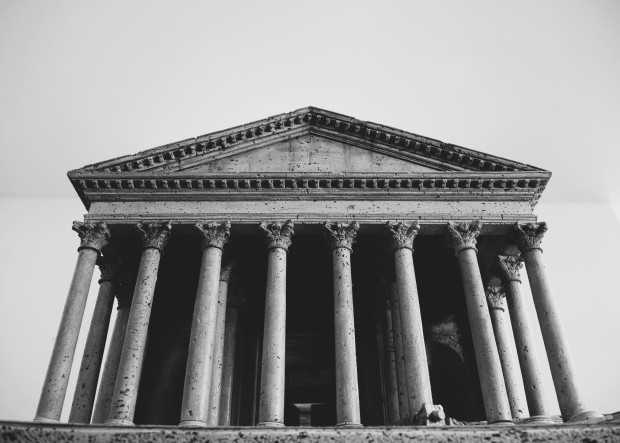
THE PANTHEON – CORK MODELL IN PROGRESS
Perfection demands respect – in it´s contemplation as well as in it´s reflection. The work on the cork model is entering now into it´s most important phase – the modeling of the small details…
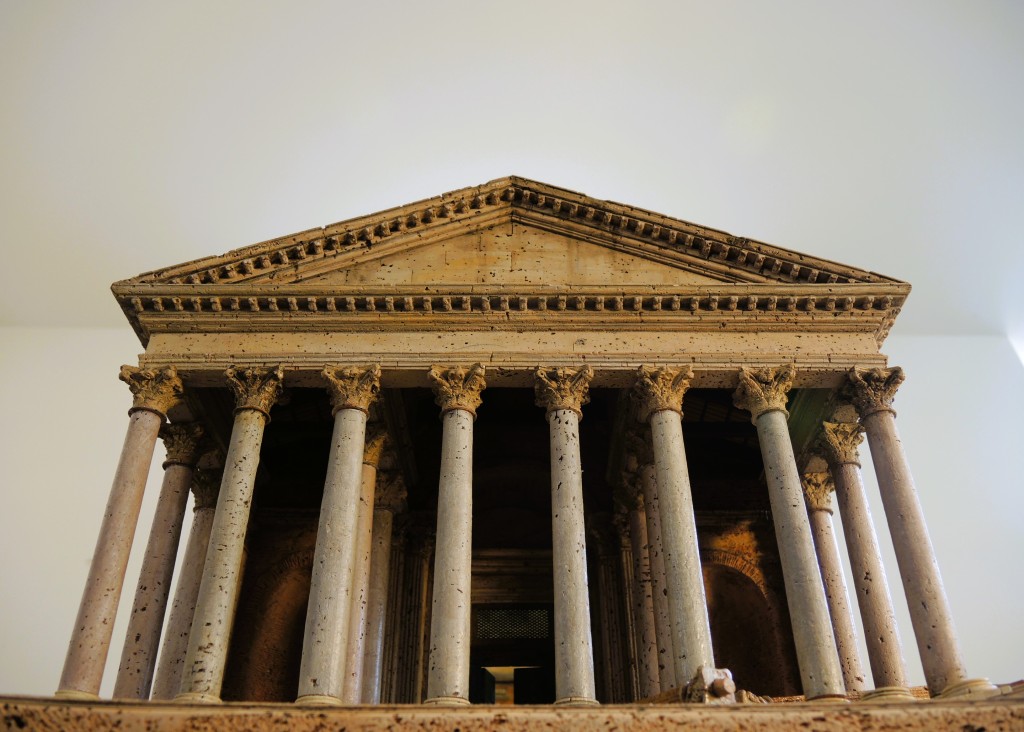
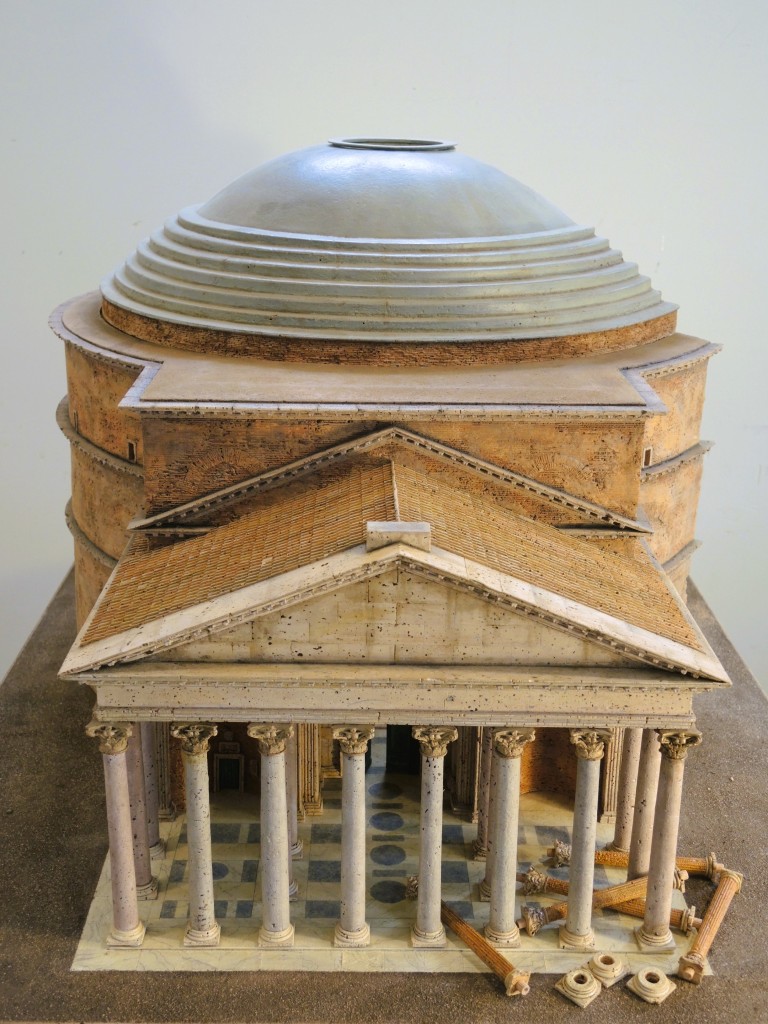
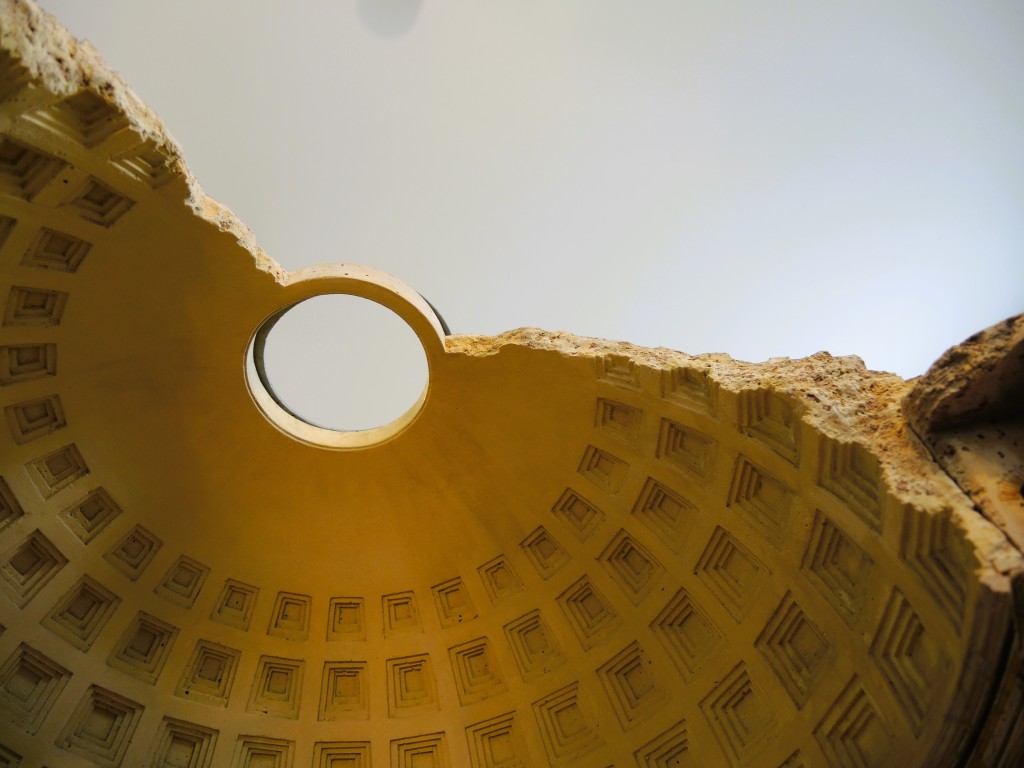
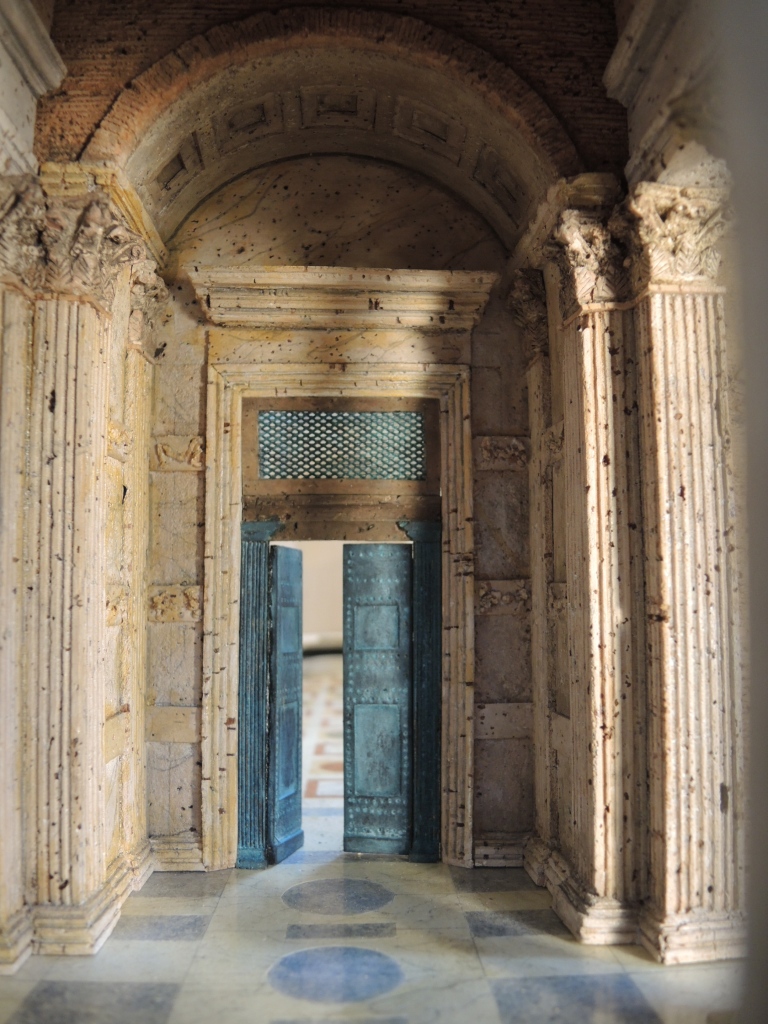
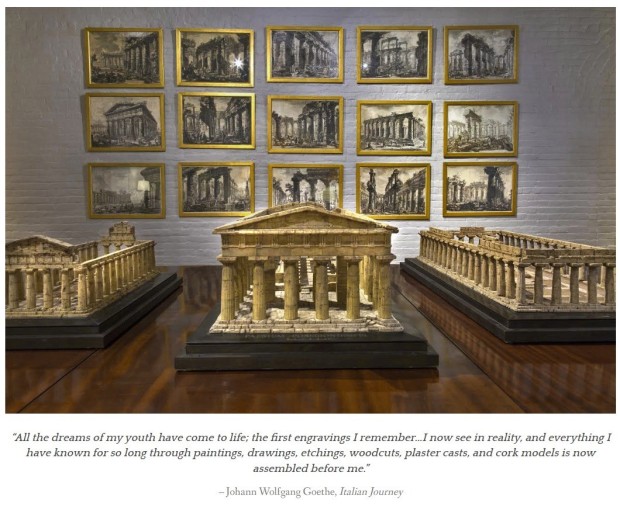
Architectural Masterpieces in Cork
The cork models of the three temples at Paestum in front of the engravings of Piranesi at BURDEN – Long Island, New York
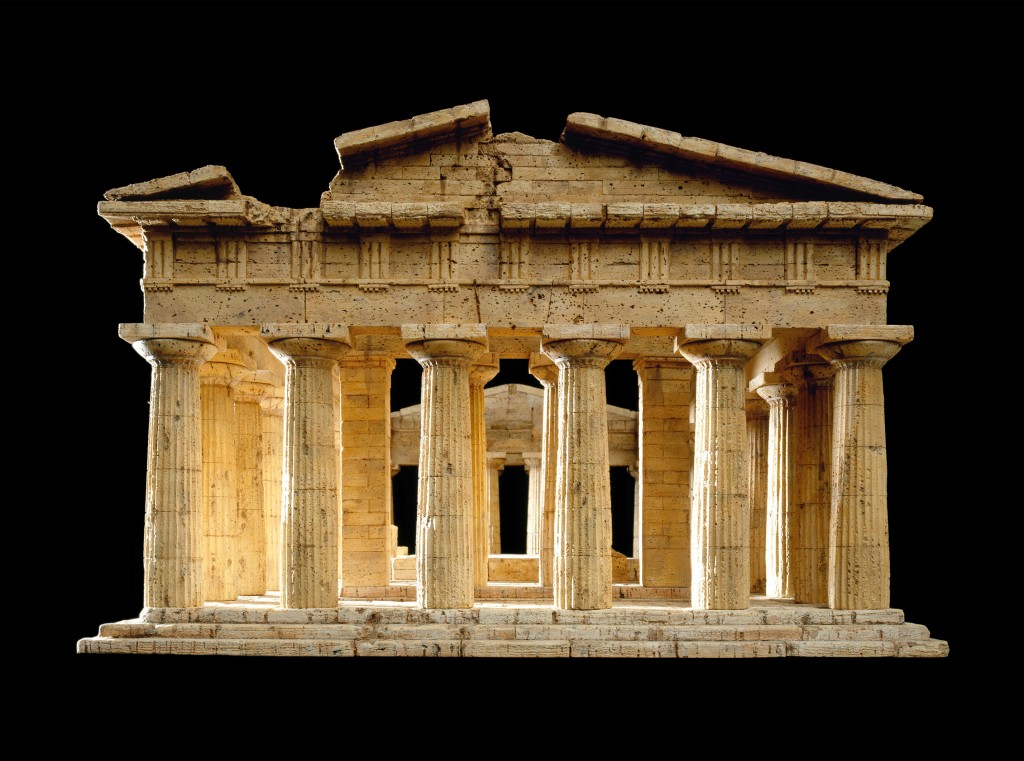
Photo: Rainer Mader
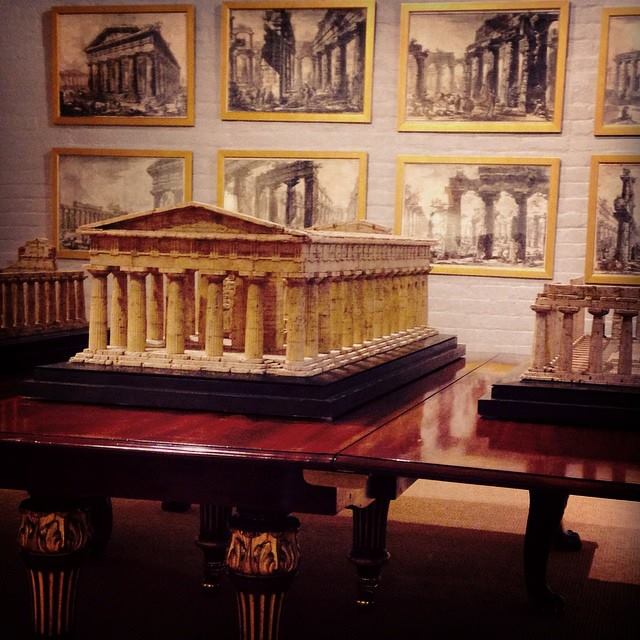
Photos: Burden
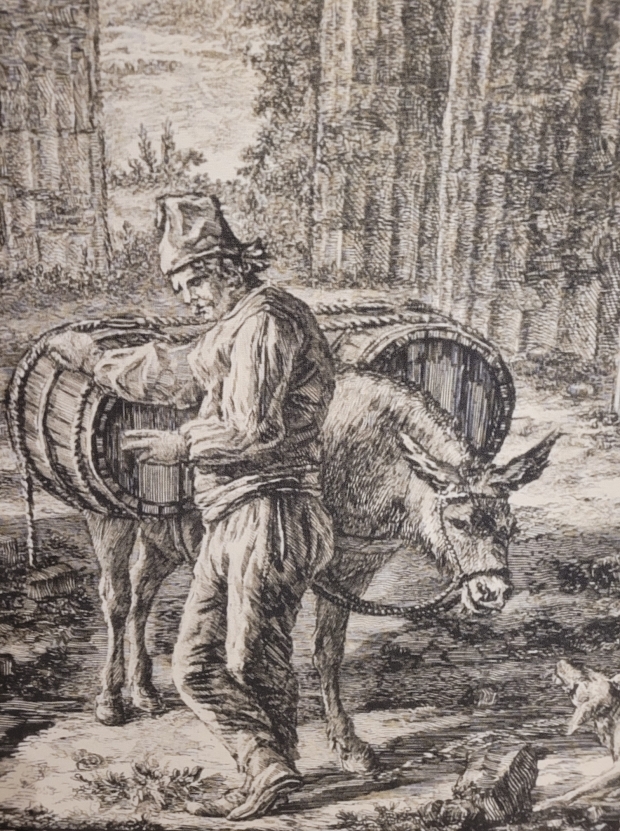
GOVANNI BATTISTA PIRANESI
and cork models by Dieter Cöllen and Malgorzata Lagan at AHLERS PRO ARTE with an excellent lecture by Dr. Phil.Vera Lüpkes VIDEO
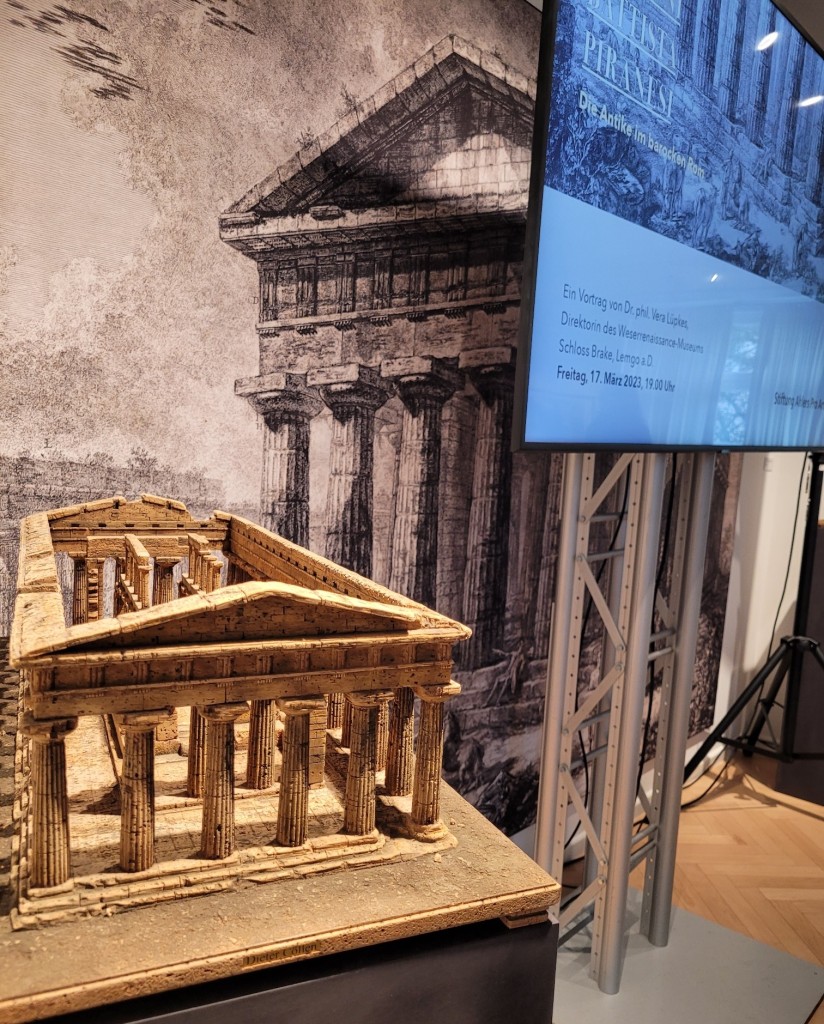
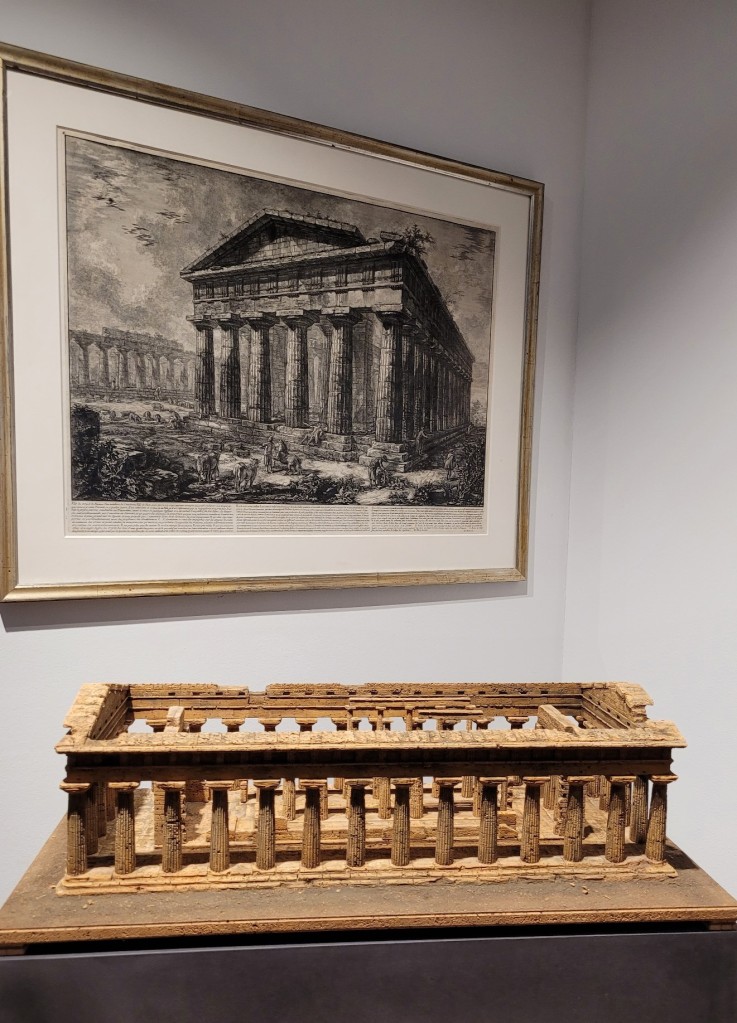
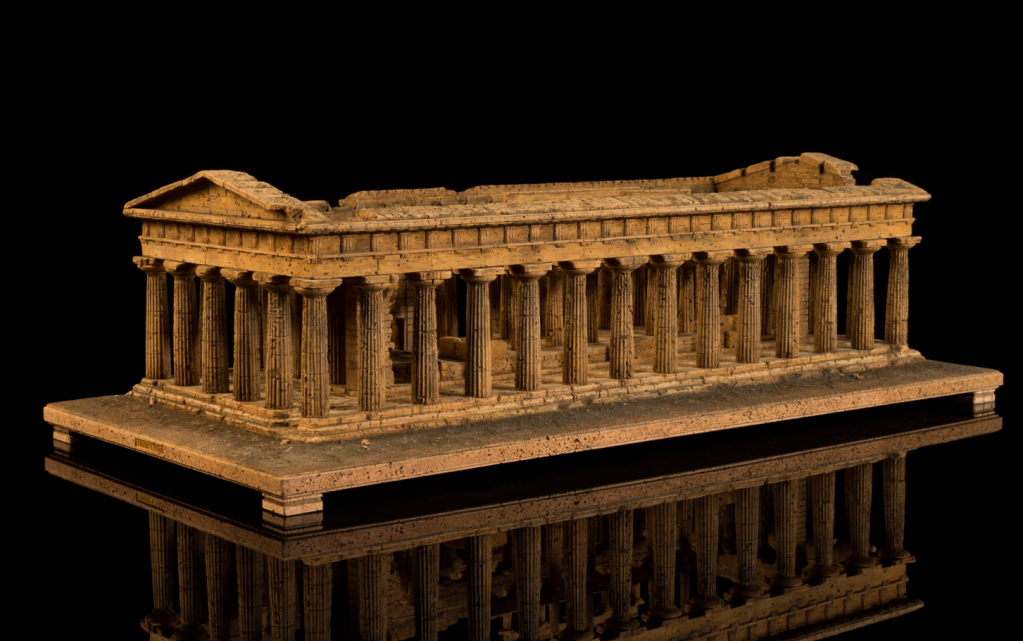
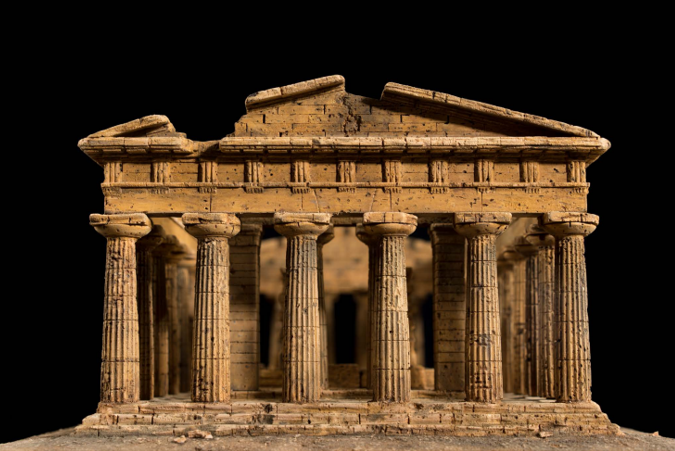
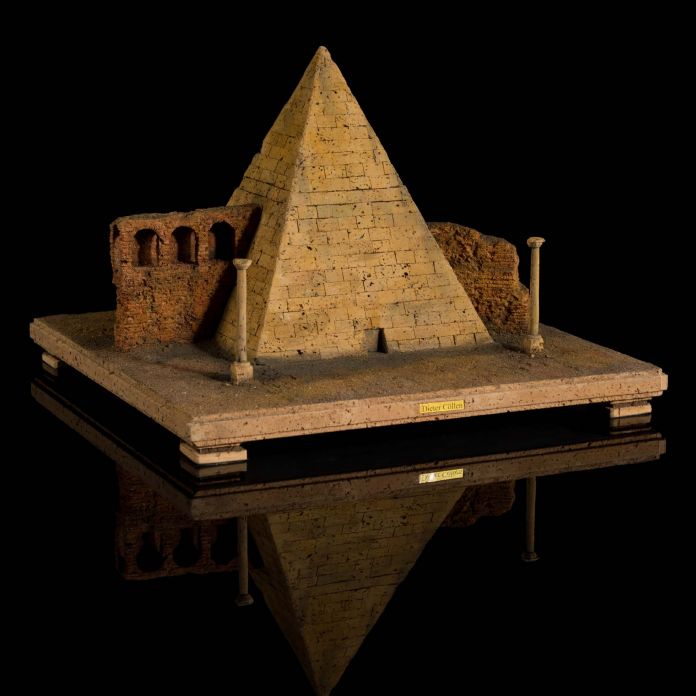
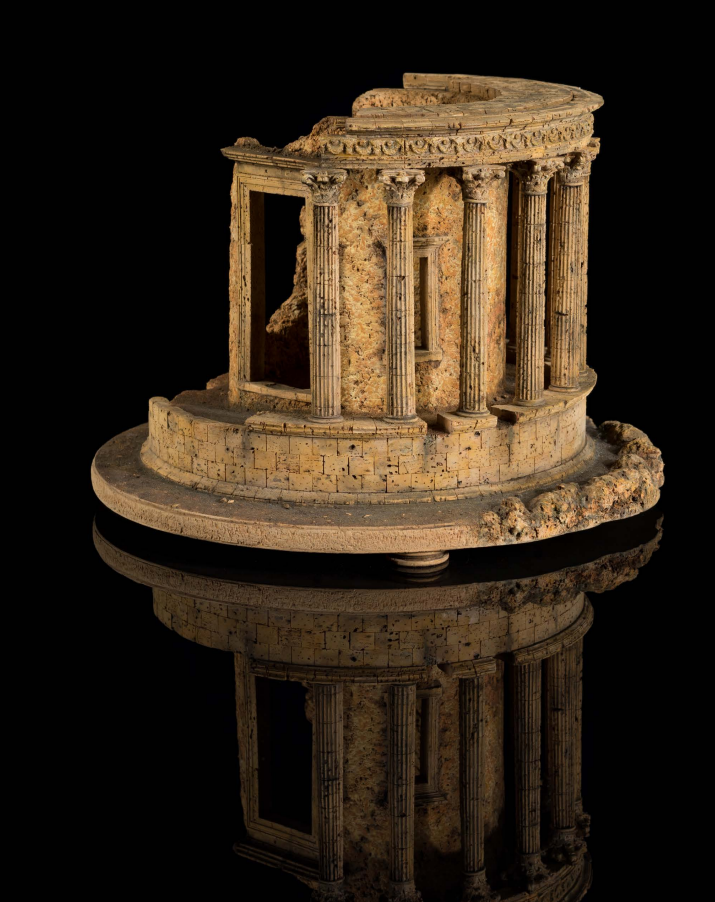
Fotos: Dieter Cöllen, FichterArt
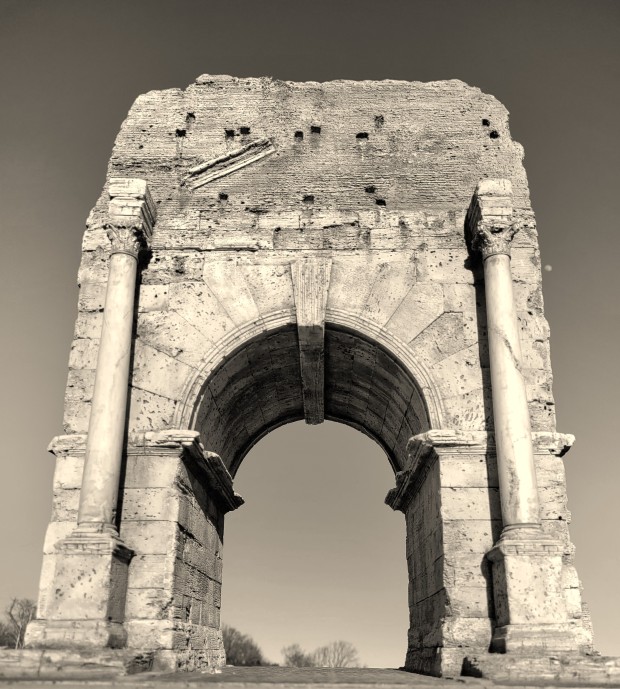
ARCHITECTURE CABINET
After completing the cork model of the , ARCH OF DRUSUS Dieter and Malgorzata integrated it into the architecture cabinet in the old Jesuit library in Passau – In good company…
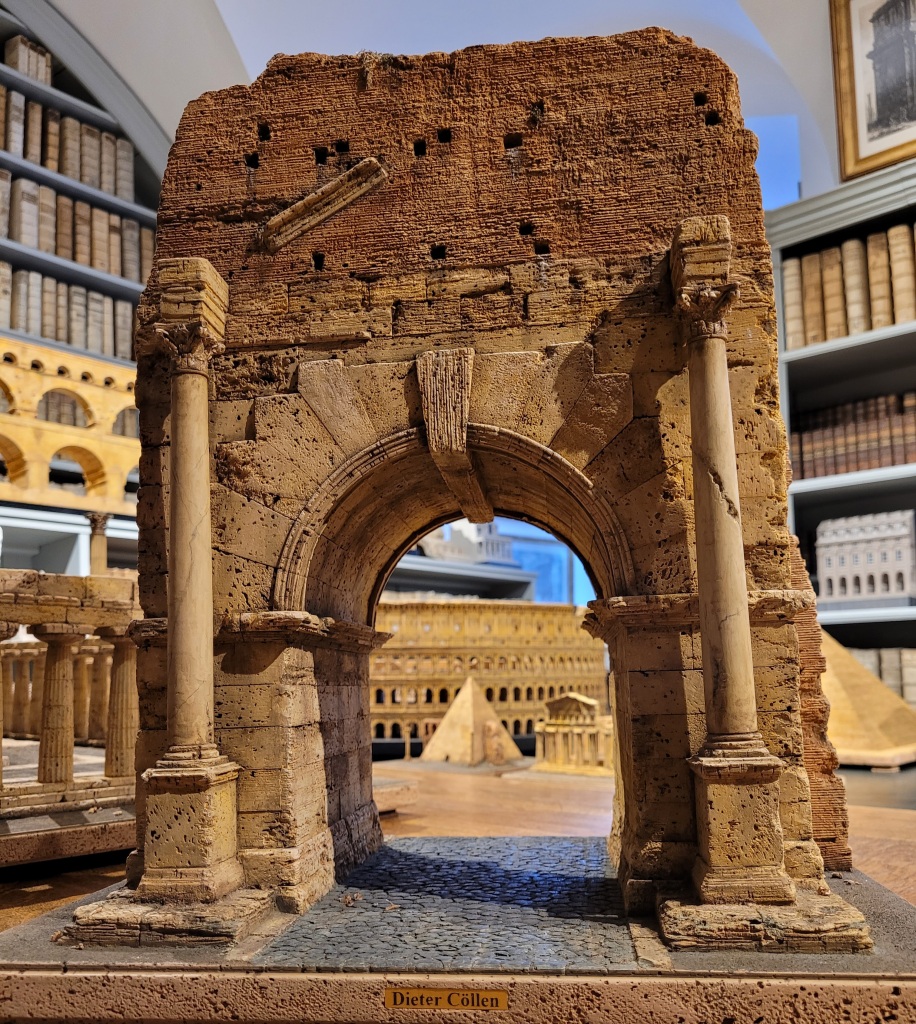
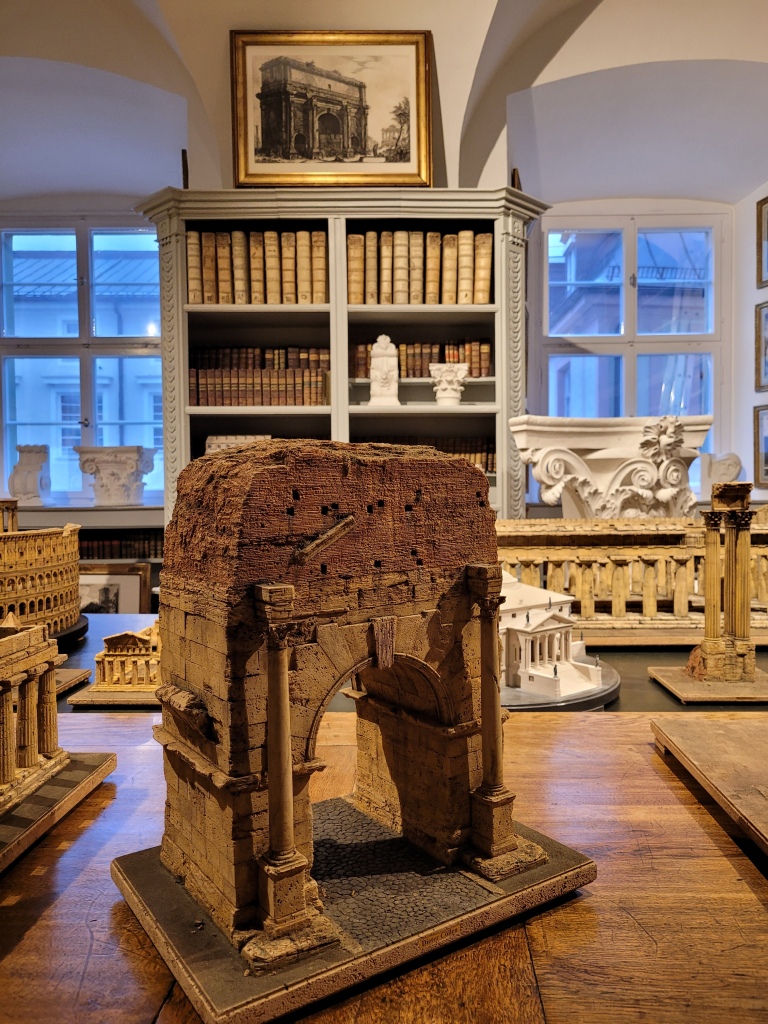
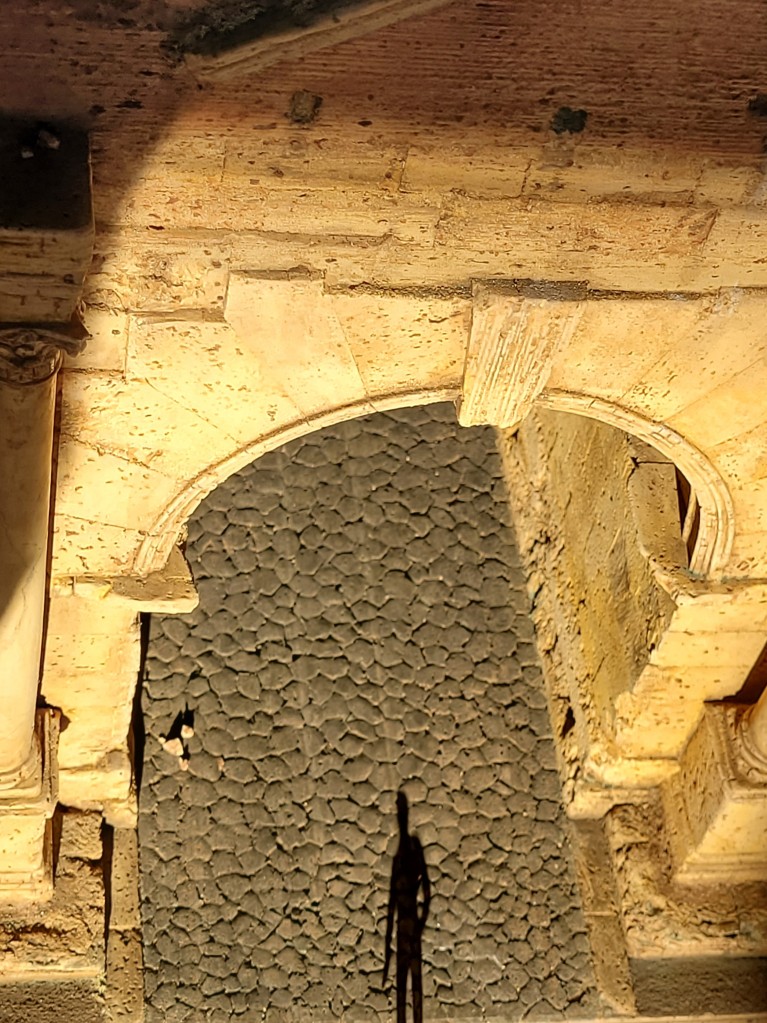
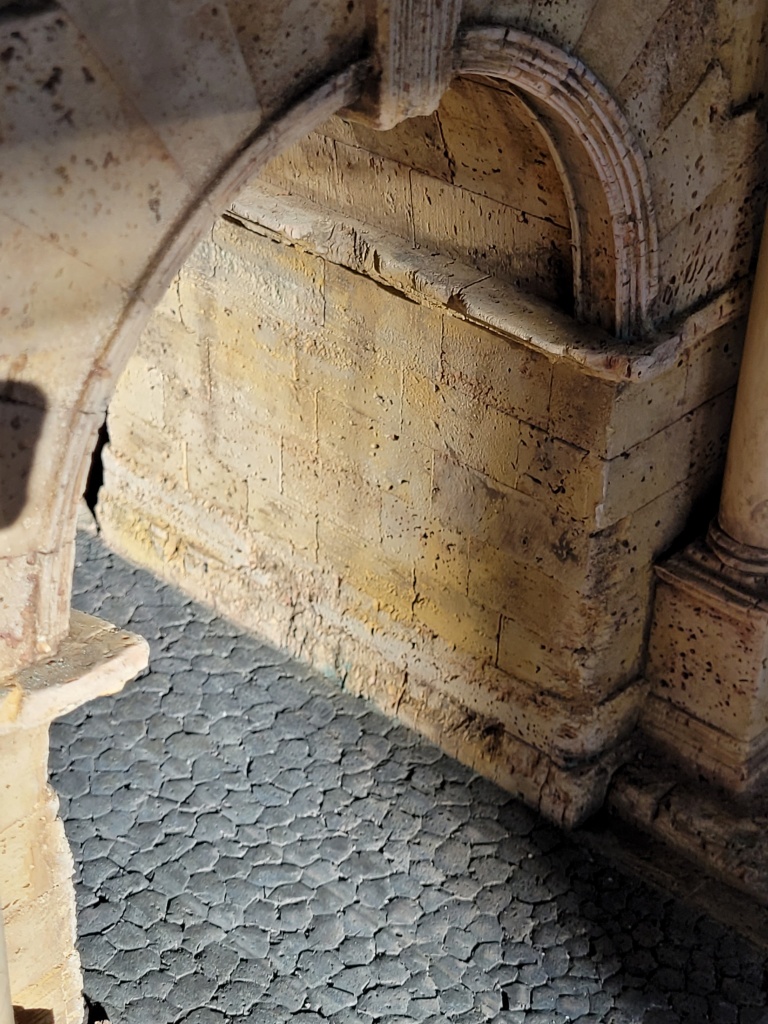
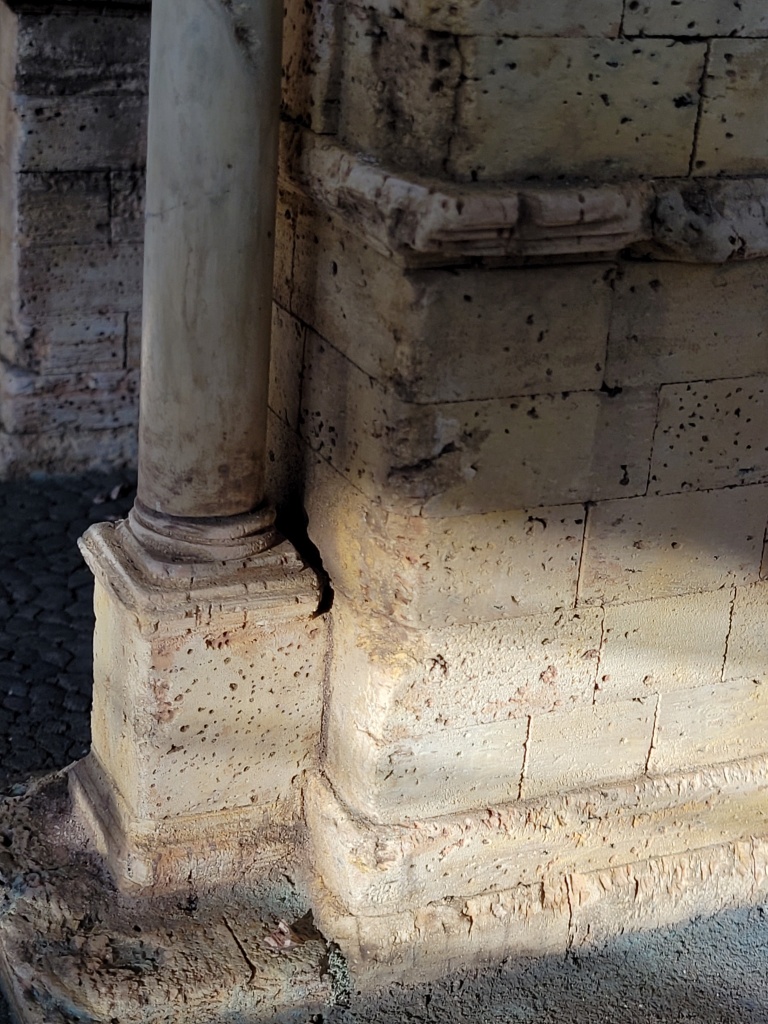
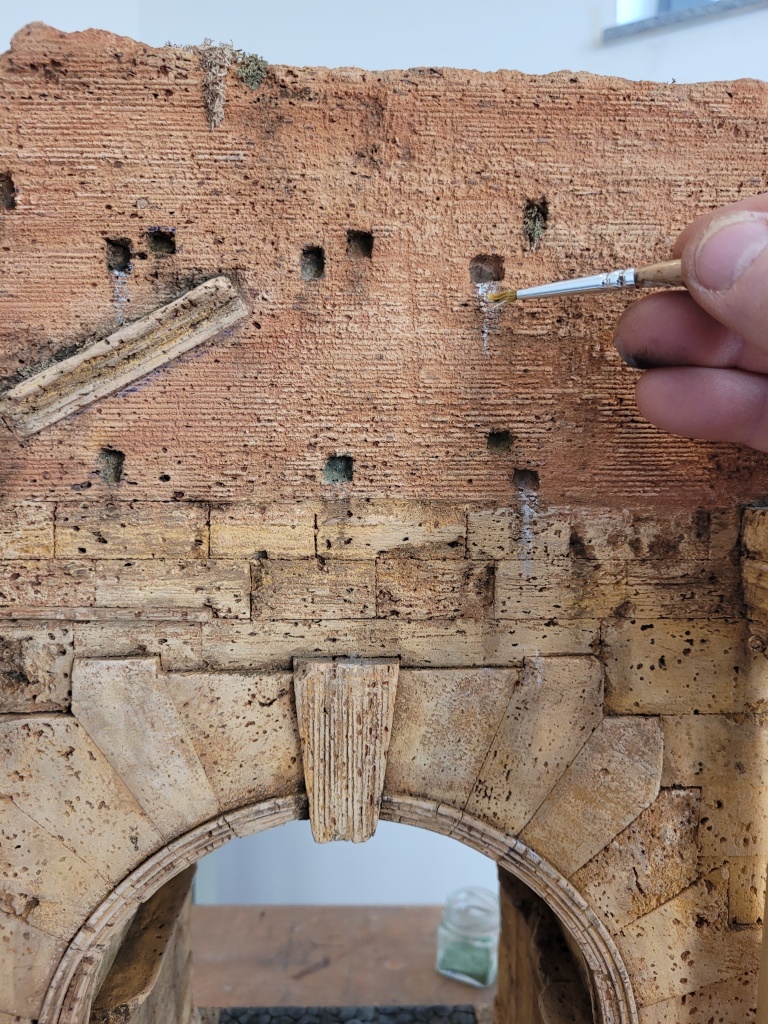
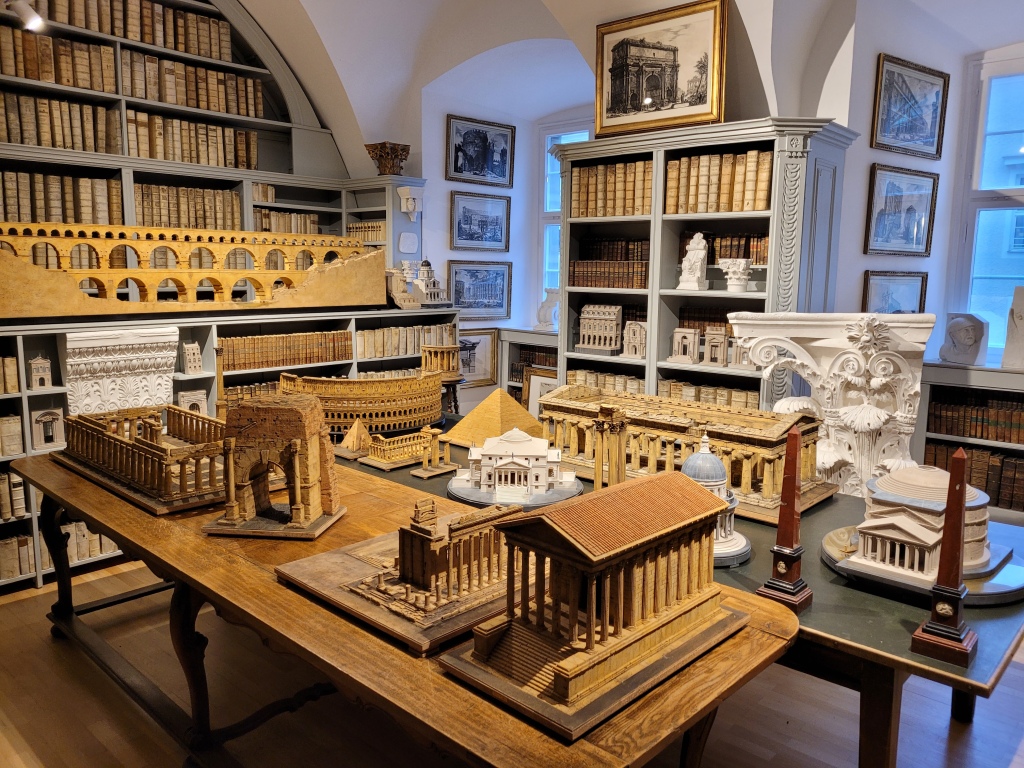
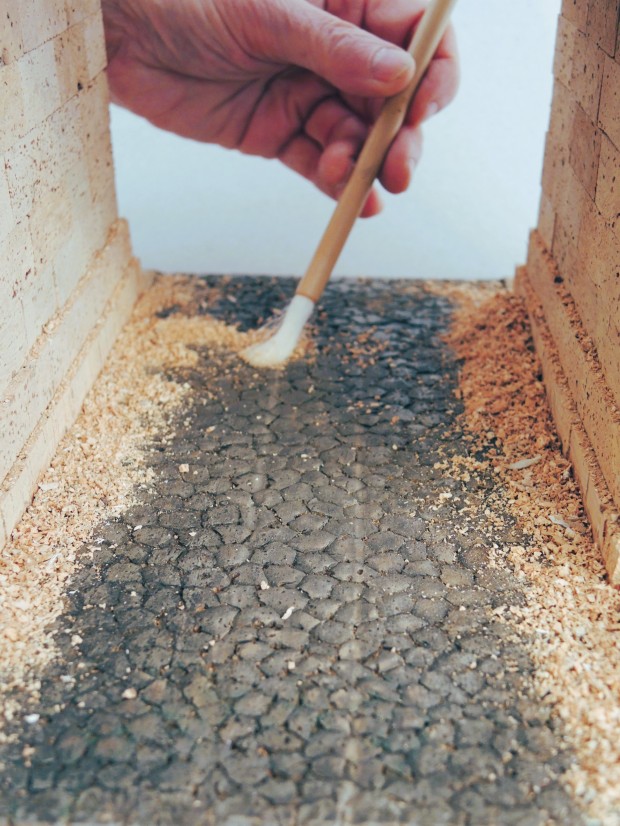
ON THE ROAD
Dieter and Malgorzata are starting a new project – the Arch of Drusus in Rome. It was part of the Roman aqueduct to supply the BATHS OF CARACALLA. Work begins with the construction of the VIA APPIA, which the arch crosses…
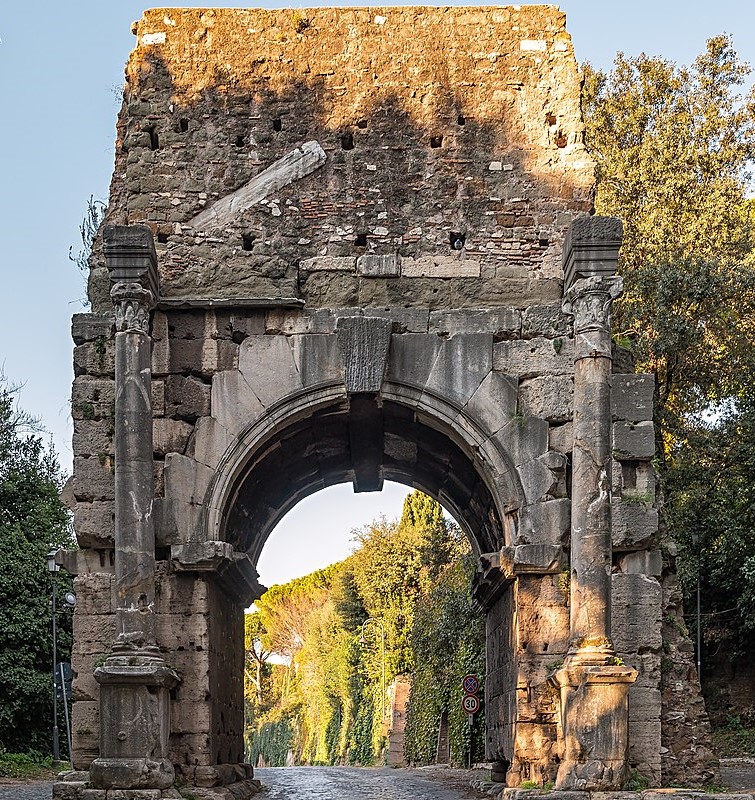
The planning was kindly supported by DR. HEINZ-JÜRGEN BESTE / DAI Rome. Literature: VALERIA DI COLA – L´ARCO DI DRUSO SULLA VIA APPIA.

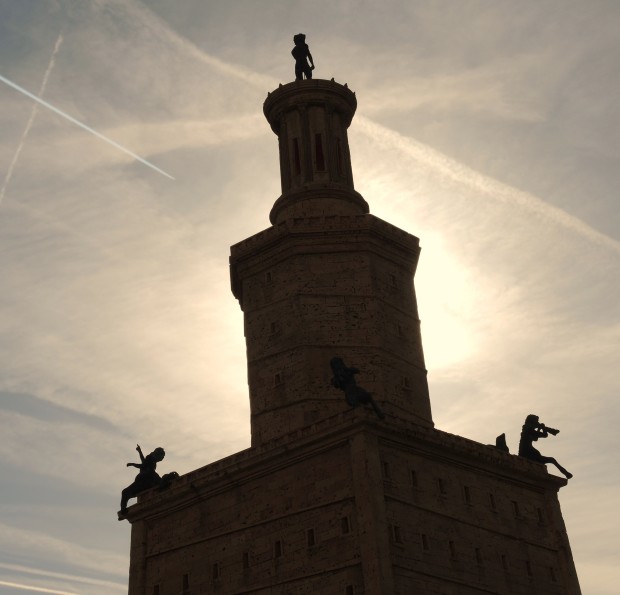
ALEXANDRIE : FUTURS ANTÉRIEURS
In the stormy seas, Dieter’s cork model of the Pharos of Alexandria shows us the way to the safe port of Marseilles. At the MUCEM it is part of the extraordinary exhibition ALEXANDRIE : FUTURS ANTÉRIEURS, that opens its gates on February 8th, 2023 – Just drop by…
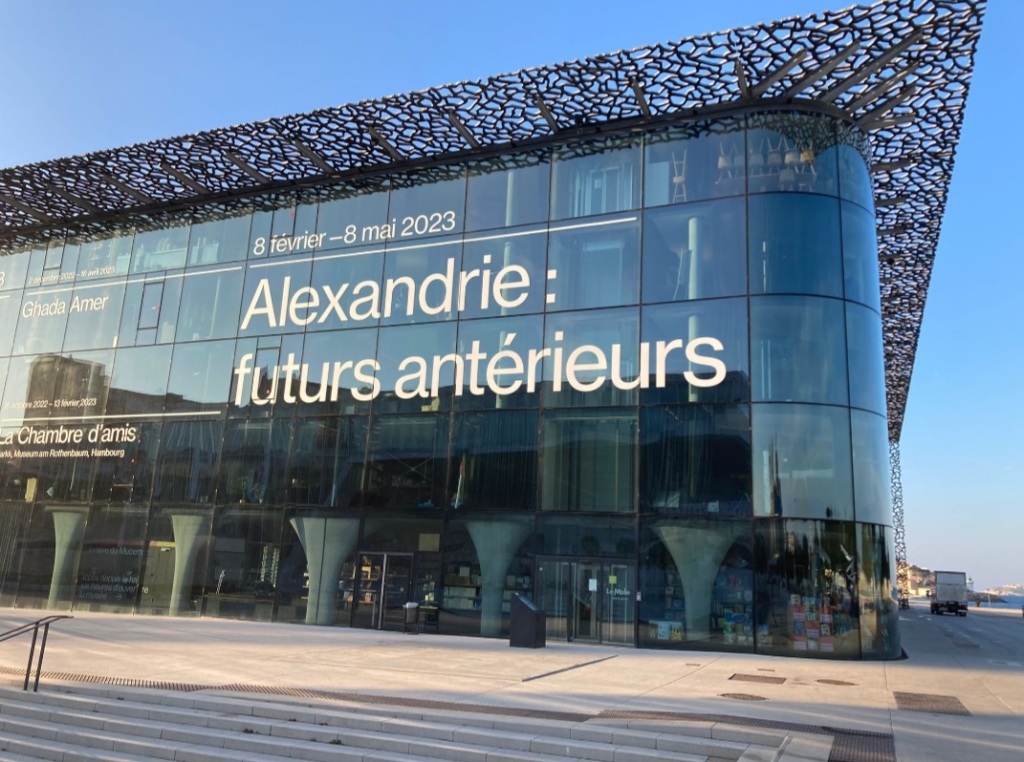
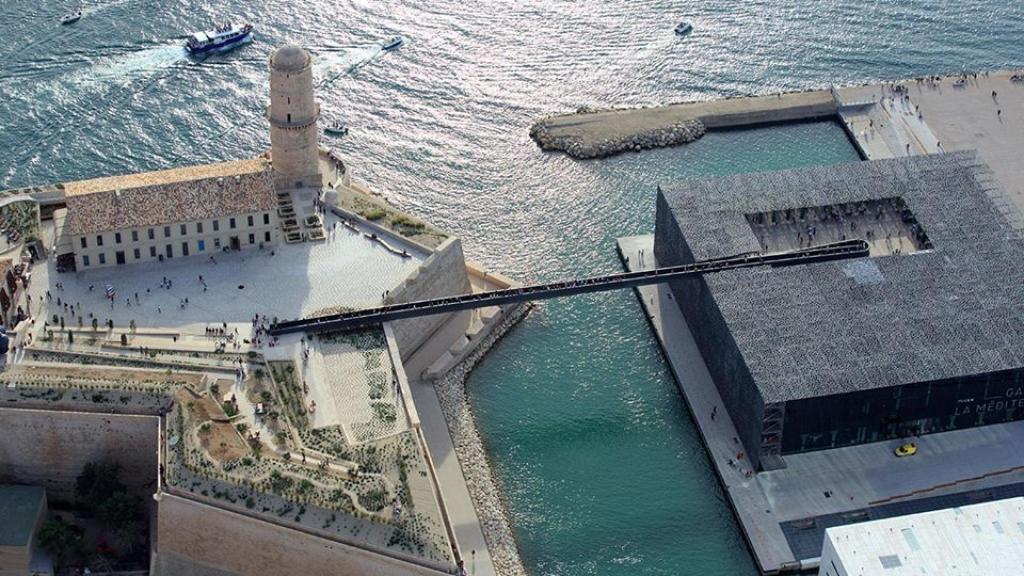
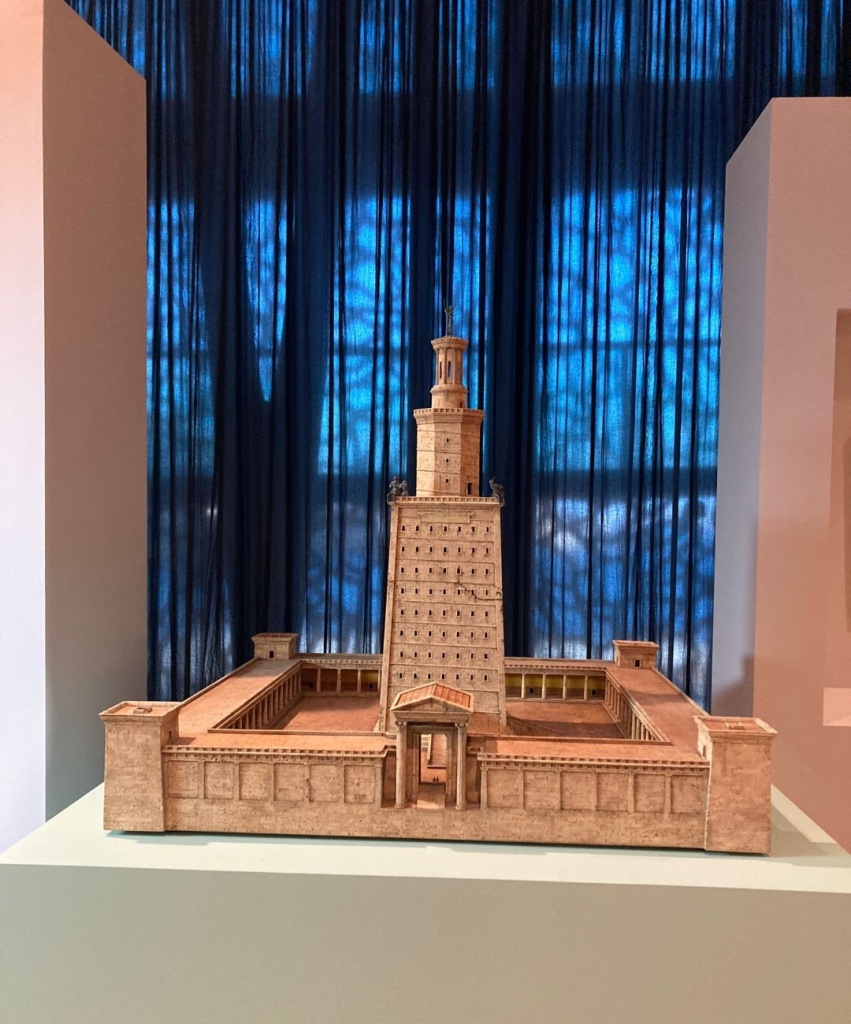
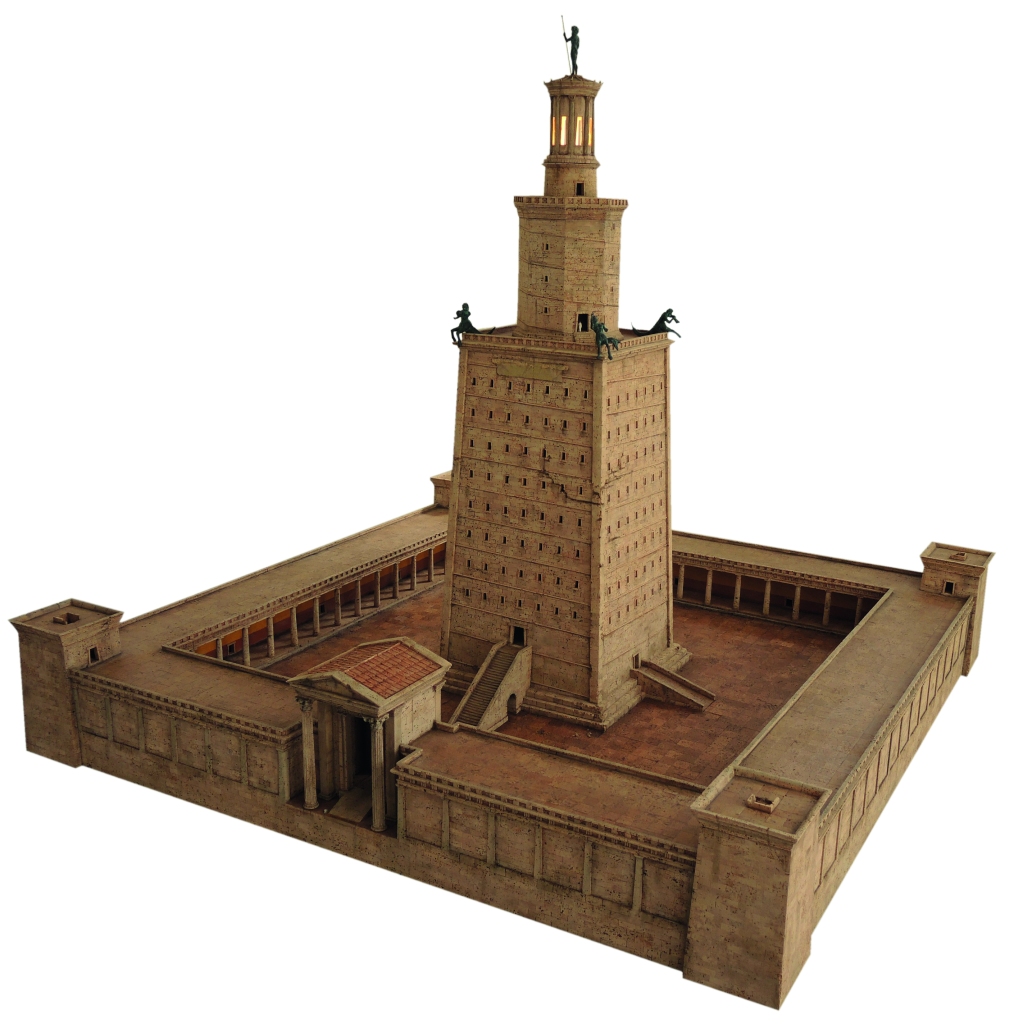
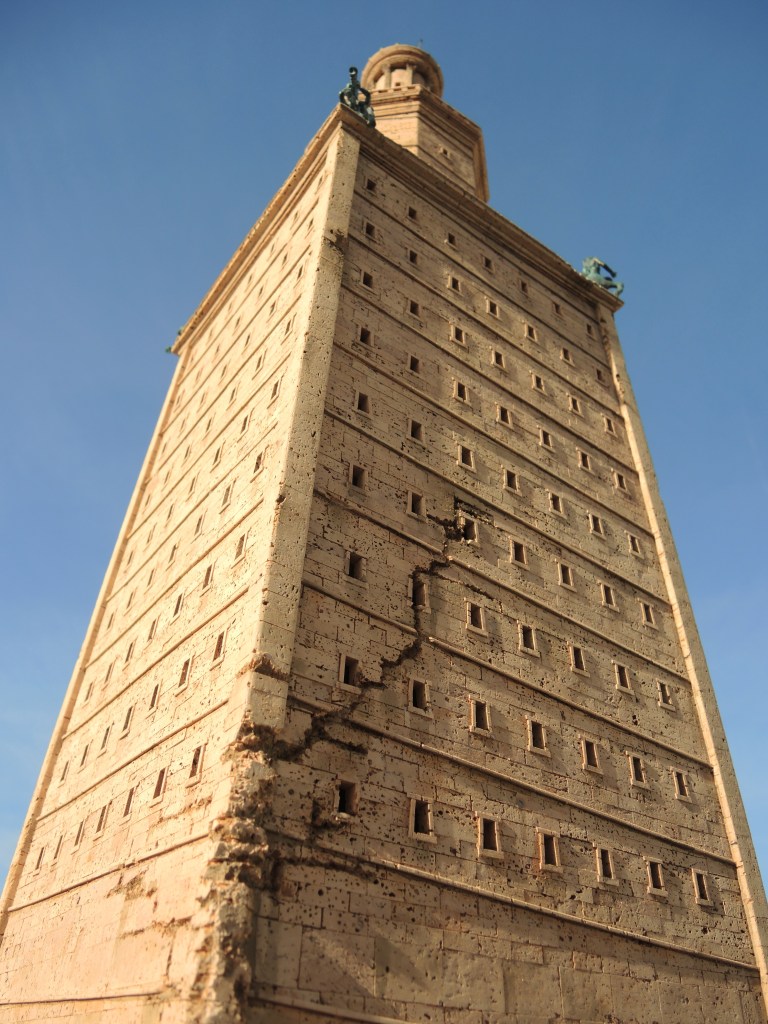
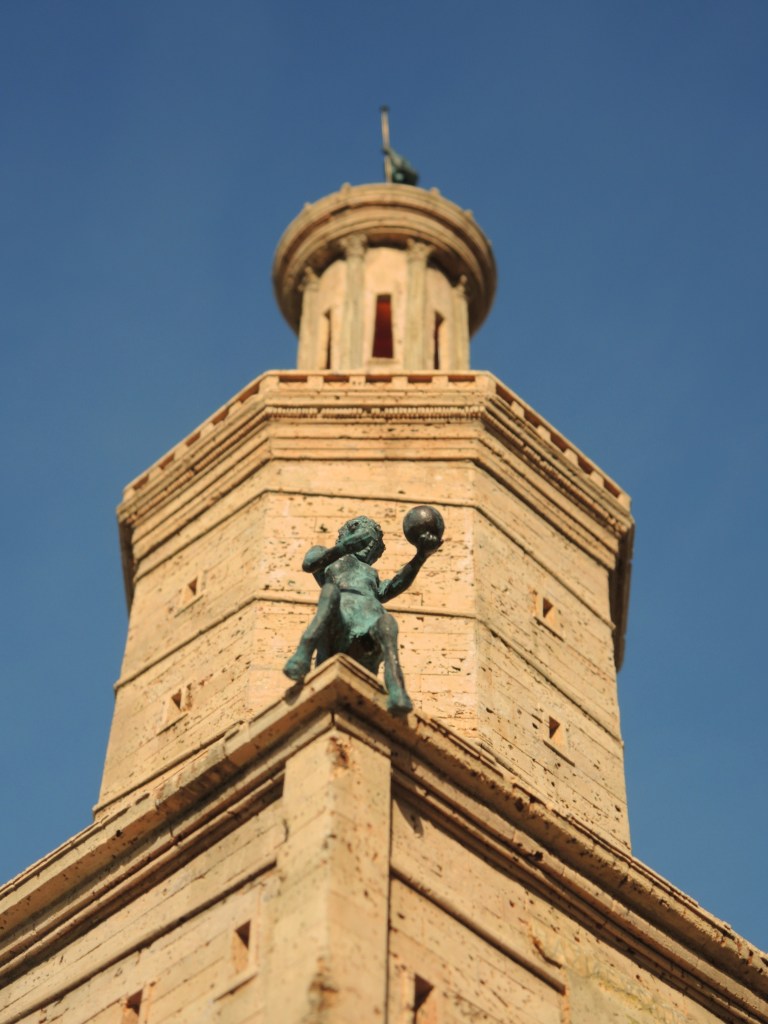
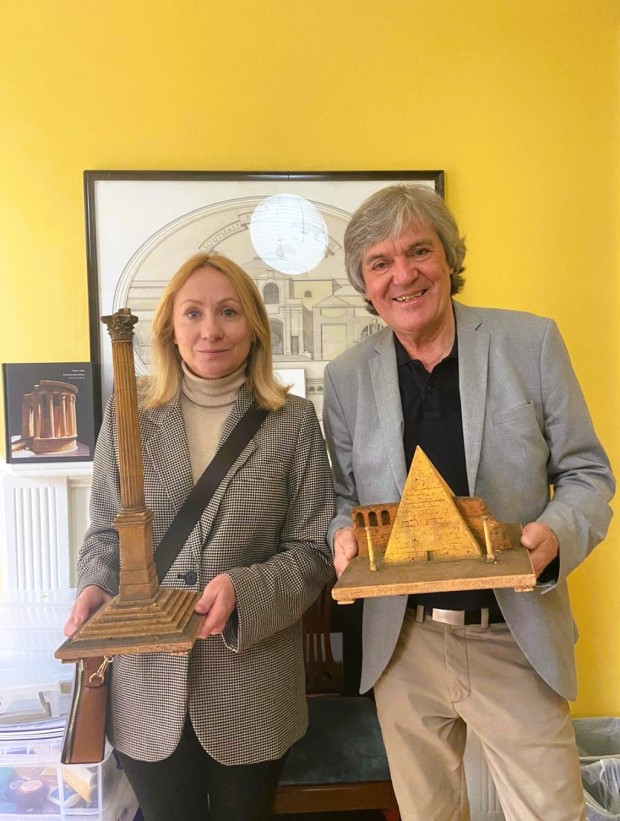
THANK YOU CAMBRIDGE
At DOWNING COLLEGE Dieter and Malgorzata spent an unforgettable time together with wonderful people from the university and a very interested audience at their seminar – thank you Cambridge!
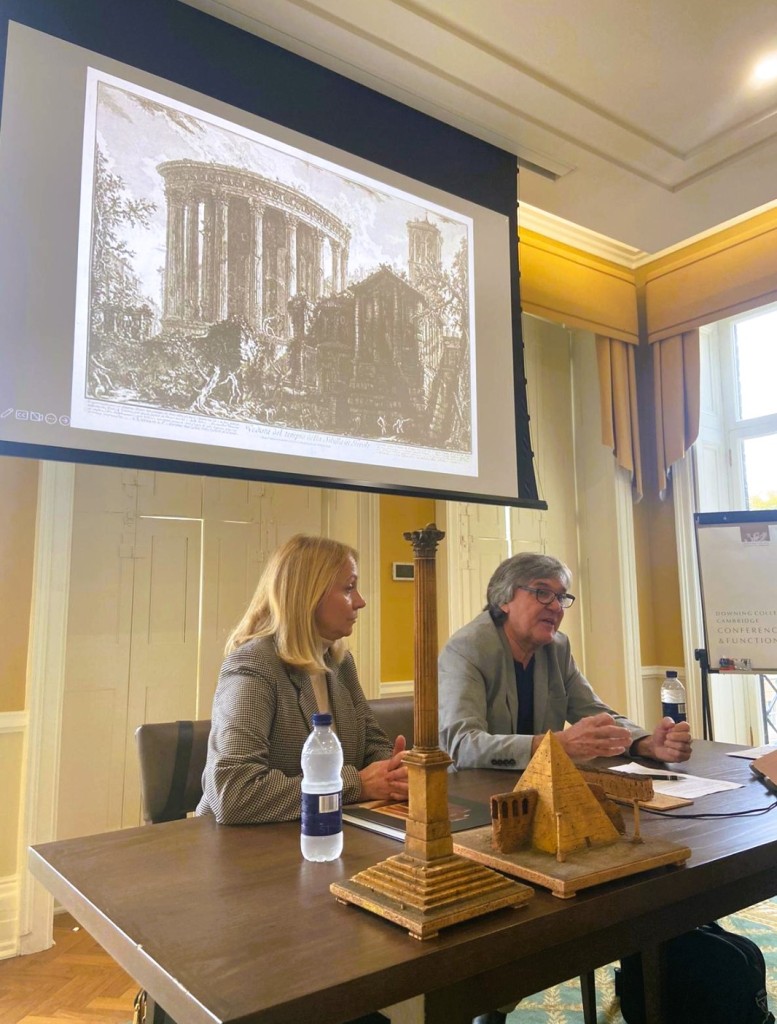
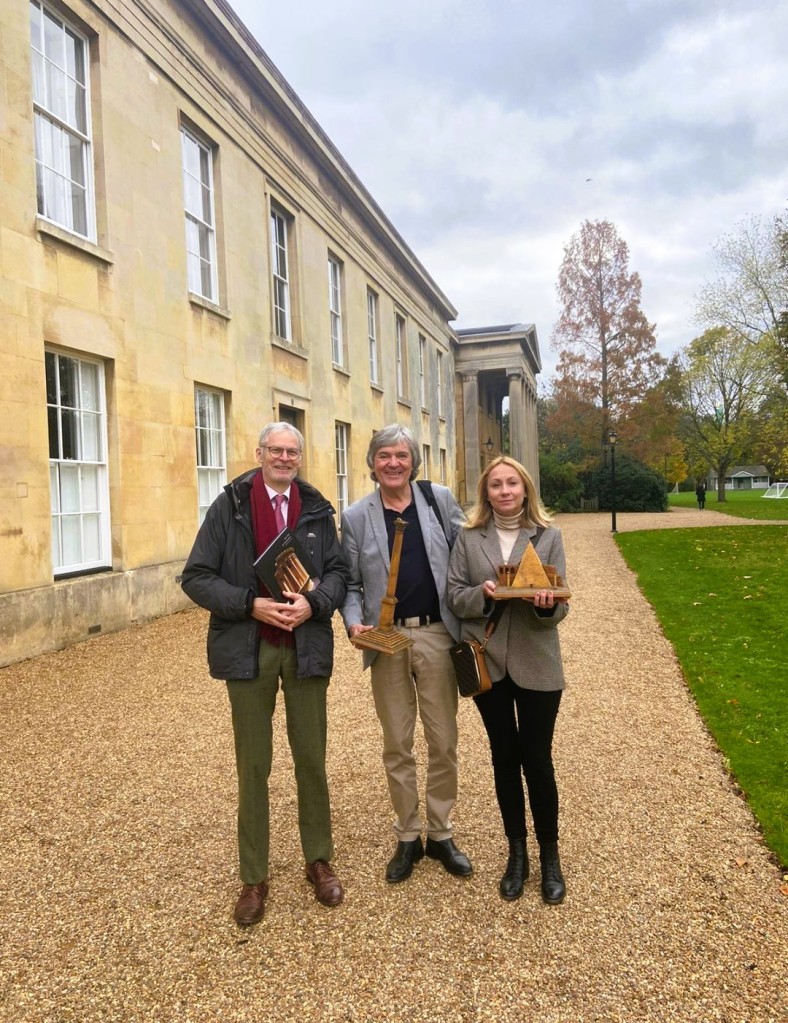
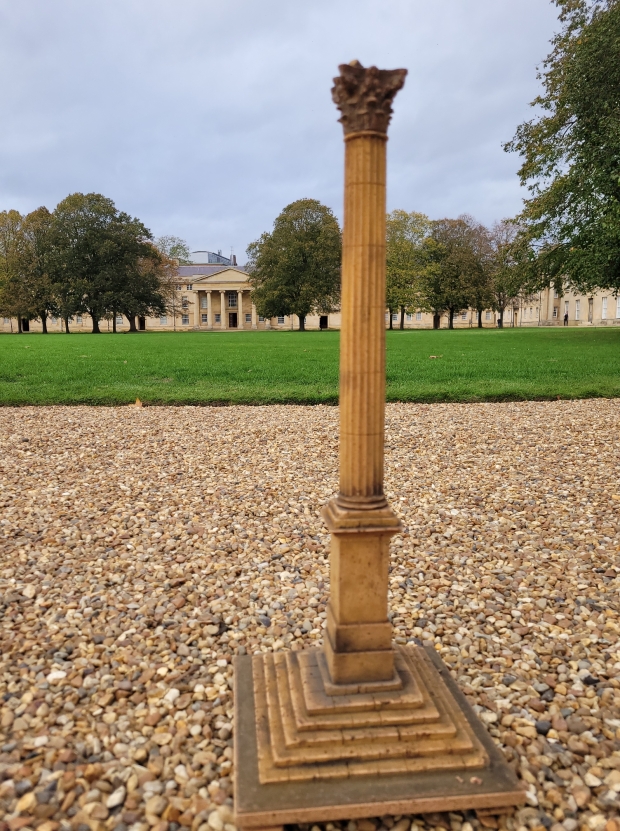
DIETER AND MALGORZATA IN CAMBRIDGE
Dieter and Malgorzata are invited to talk about their work in Cambridge, Downing College https://www.eventbrite.co.uk/e/the-architect-of-ruins-with-atelier-dieter-collen-tickets-418020068277

FURTHER STEPS
Work on the Pantheon continues. Here Dieter and Malgorzata assemble the columns of the hall…
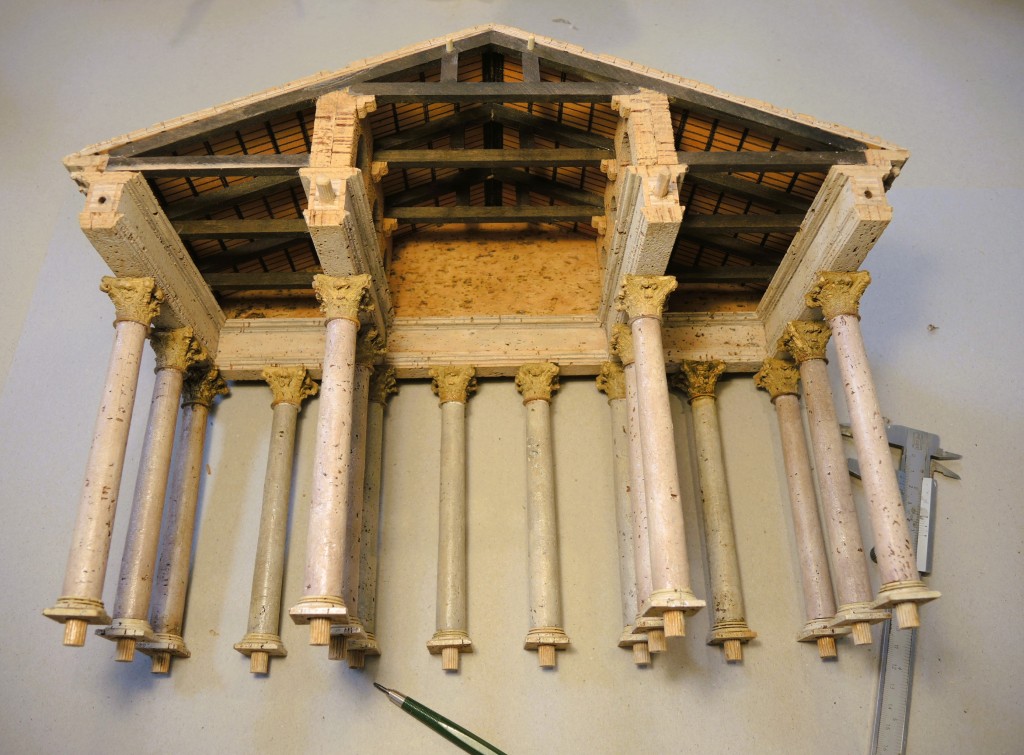
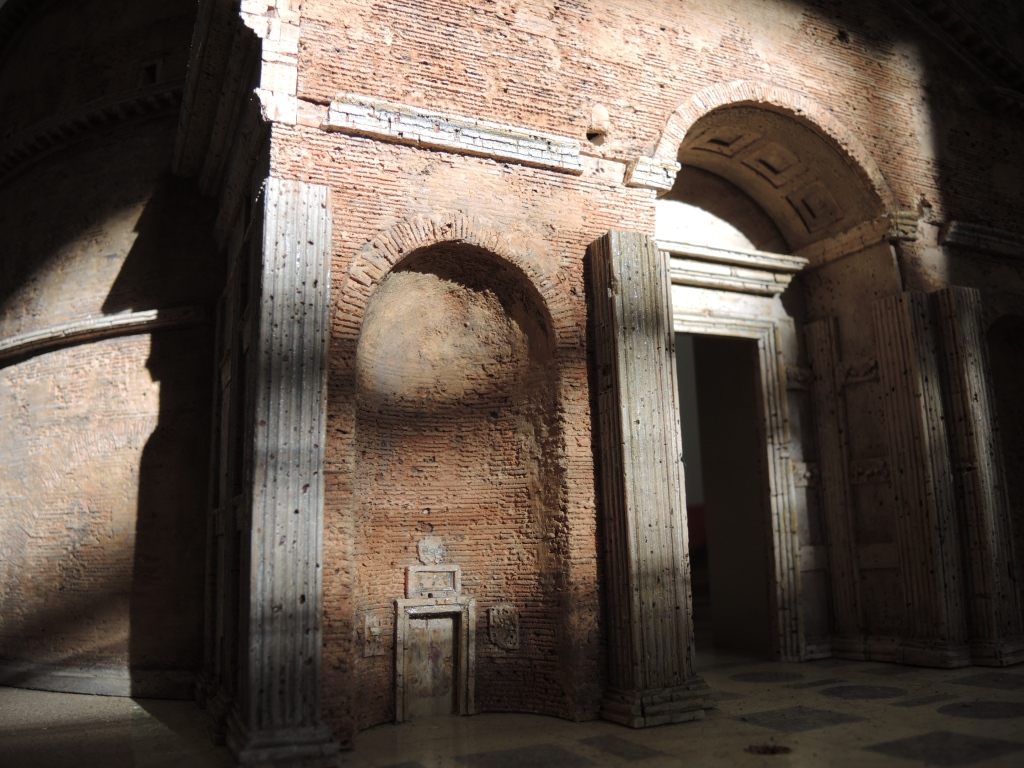
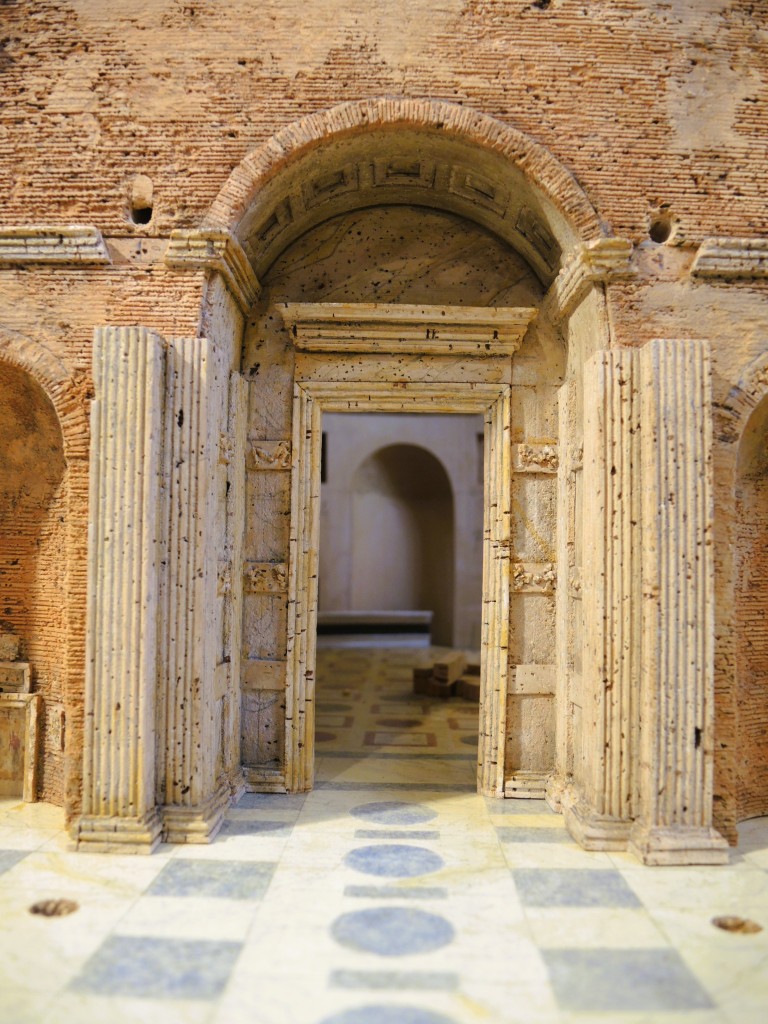

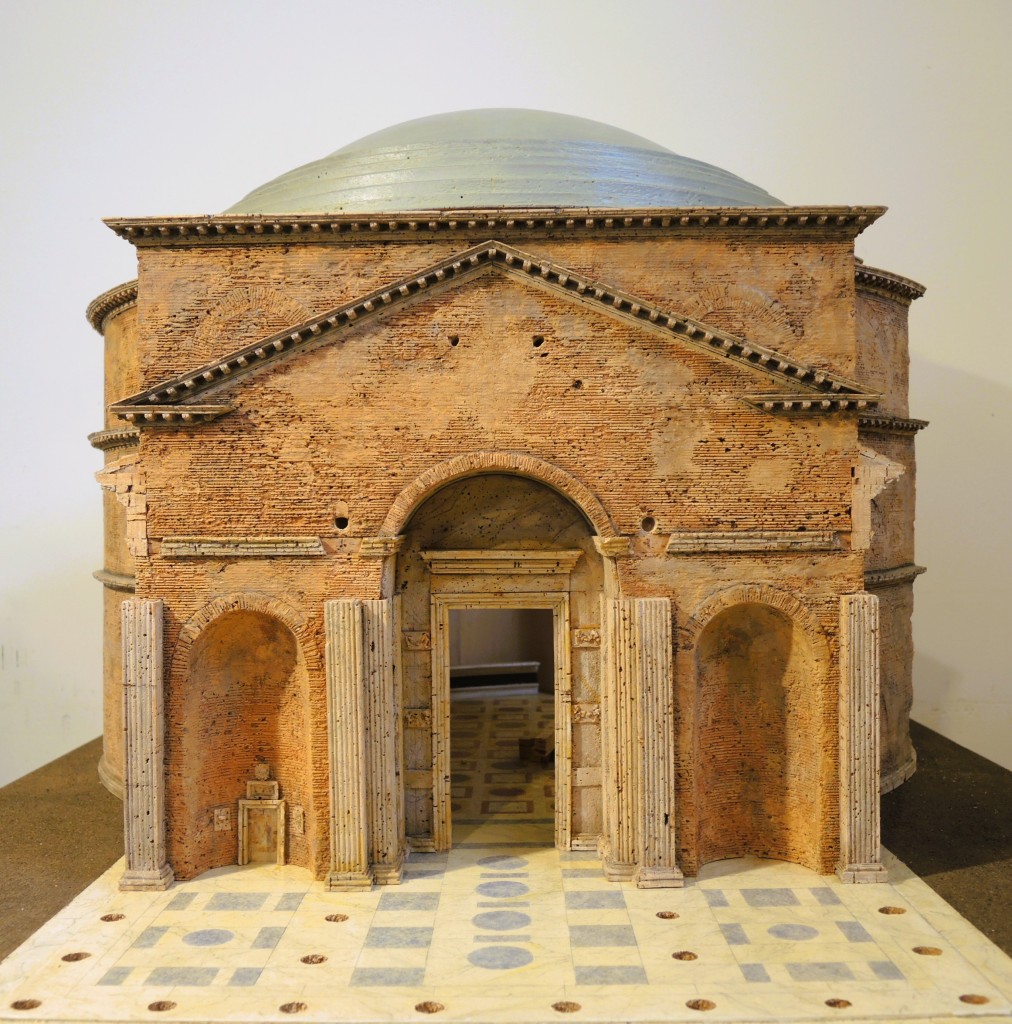
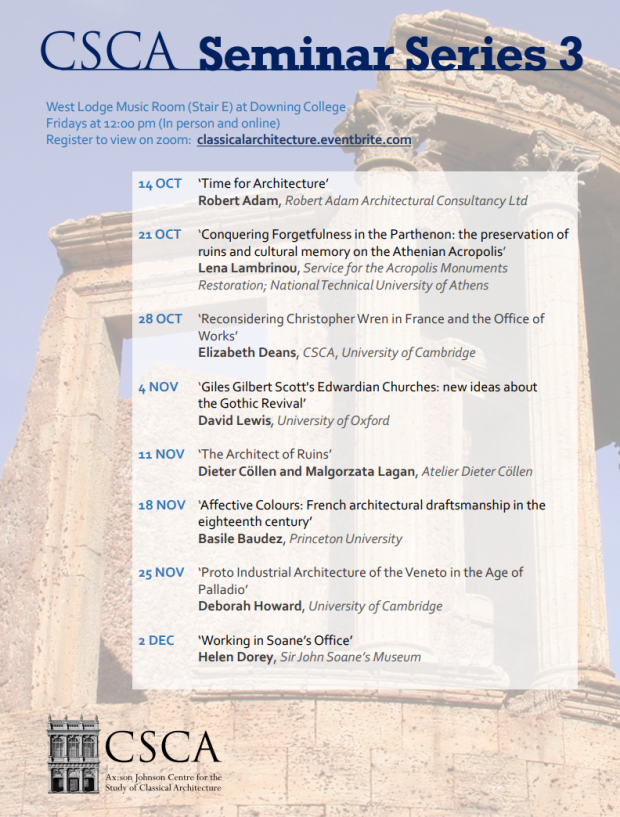
DOWNING COLLEGE
Watch here the seminars at Downing College and follow DIETER AND MALGORZATA to Cambridge
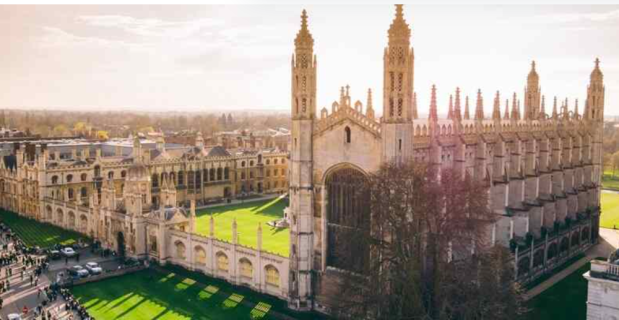
JUST COME TO CAMBRIDGE
Dieter and Malgorzata are very honoured to have been invited by DOWNING COLLEGE / CAMBRIDGE to report on their work – JUST VISIT
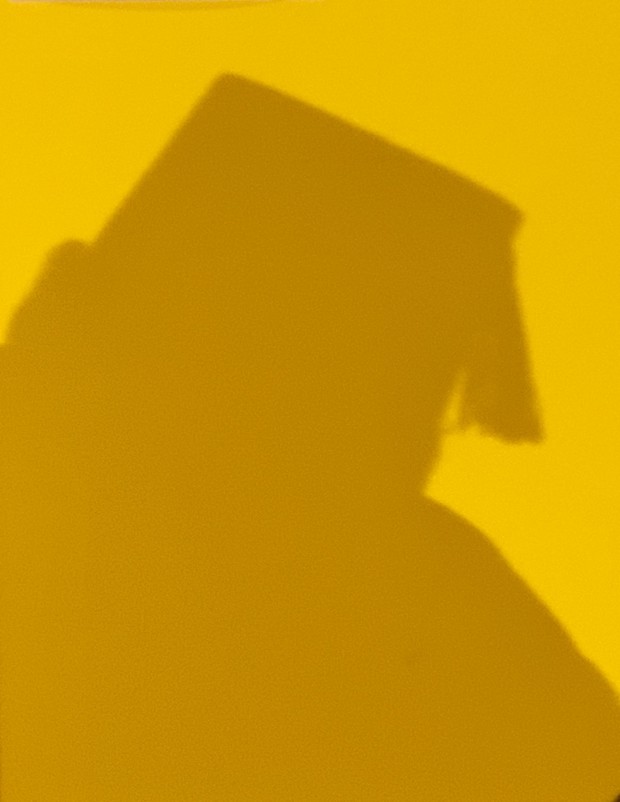
JUST LISTEN
the Syrian storyteller BASSAM DAWOOD and the musician ATHIL HAMDAN in the RAUTENSTRAUCH – JOEST – MUSEUM – SYRIEN – GEGEN DAS VERGESSEN
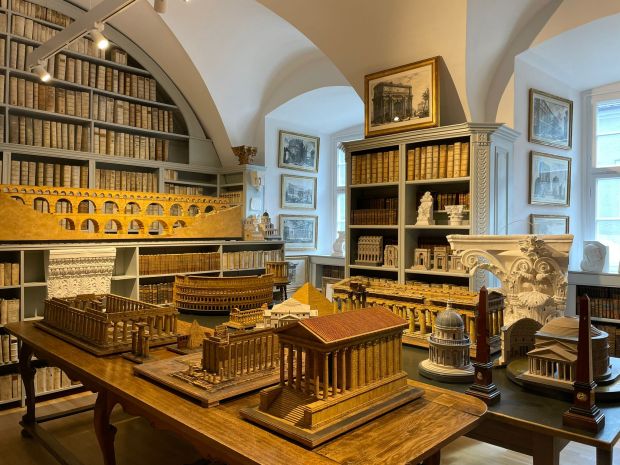
OPENING SOON
Dieter and Malgorzata have been building large cork models for the architektur cabinet in Passau for several years. With many other objects, they will soon be shown to the public in a wonderful ambience.
The architectural cabinet is part of the Historic Jesuits Library at the State Library of Passau. With the perfectly preserved historic rococo library hall as a starting point the Historic Jesuits Library tries to reconstruct the Jesuits Library in Passau. Jesuitic presence in the city goes back to the year 1612, when the Jesuits founded their institute for higher education in Passau. Also part of the Historic Jesuits Library is a WUNDERKAMMER. Opened in the year 2015 it uses old exhibits still present in the collections of the library as well as permanent loans from important collections of the Bavarian State. The Jesuits had a keen interest in architectural history, which is reflected by a remarkable collection of important literature on the subject. Part of this collection is also presented in the architectural cabinet.

CULTURAL HERITAGE
Dieter as a guest in a scientific stage discussion in the RAUTENSTRAUCH-JOEST-MUSEUM in Cologne about the cultural heritage of Syria and its importance in the future…

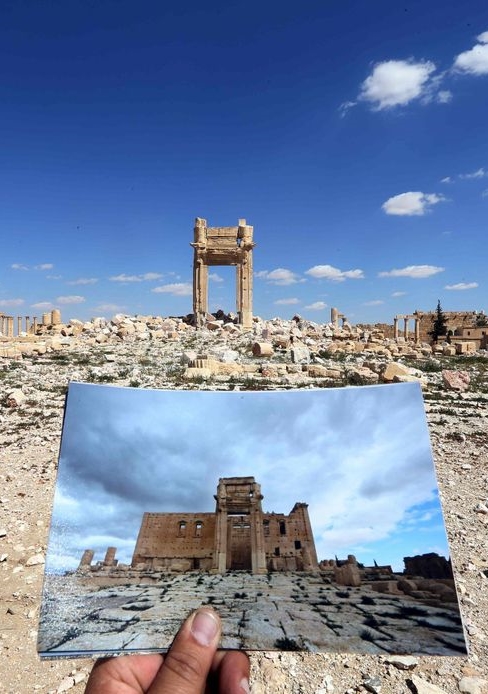
THE ART OF RECONSTRUCTION
is the title of a workshop by Dieter and Malgorzata in the RAUTENSTRAUCH – JOEST – MUSEUM in Cologne. Using the example of the Temple of Bel in Palmyra, children will try to recreate the porticus of the temple from the remains of the destruction (here: cork fragments) and make the personal experience that destruction is easier to do than reconstruction. Dieter and Malgorzata give the children complete freedom in their work. Ibrahim and Rosslin from Syria are also there. They had to leave their country from violence, and now they feel like „ambassadors“ between cultures… Many thanks to everyone – we adults also learned a lot!!!

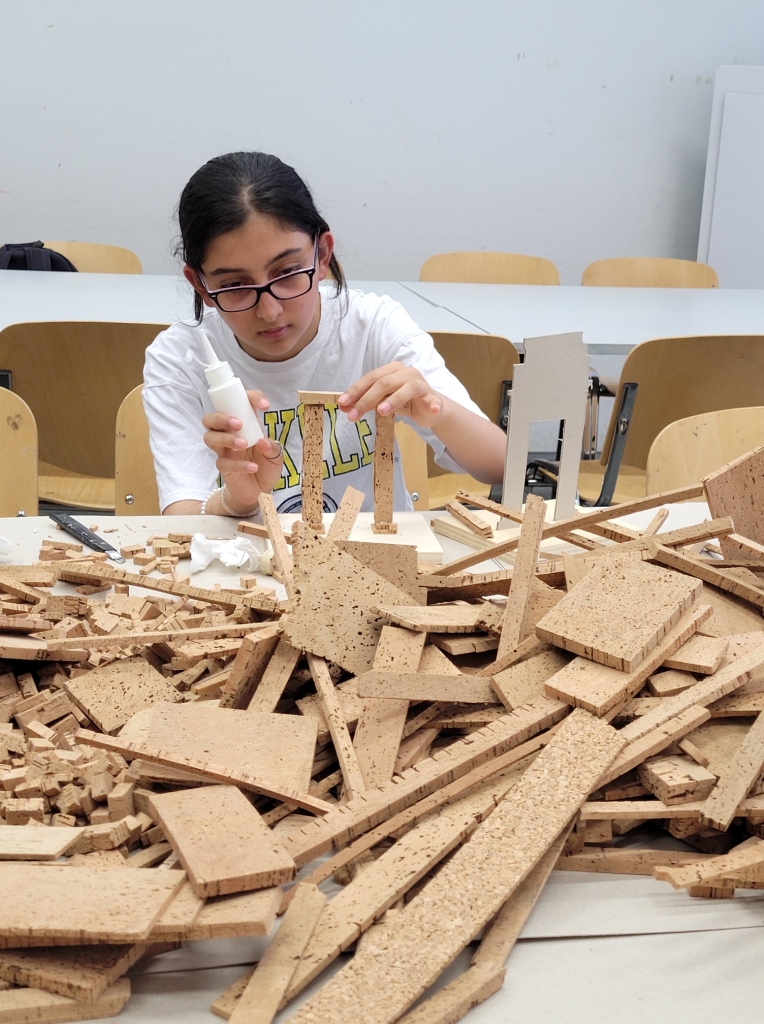
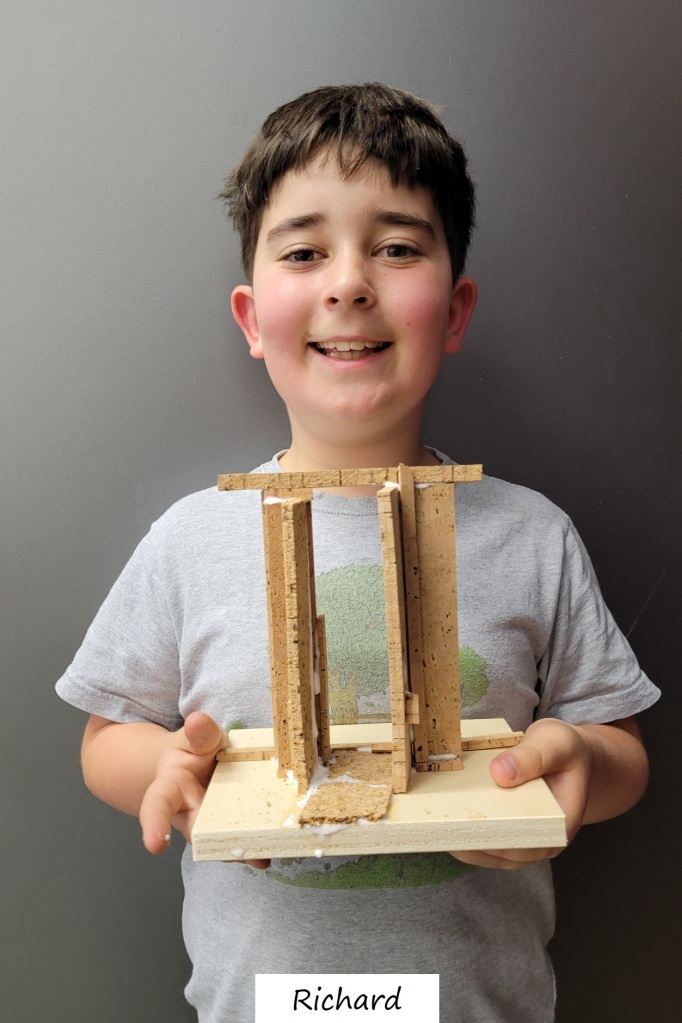
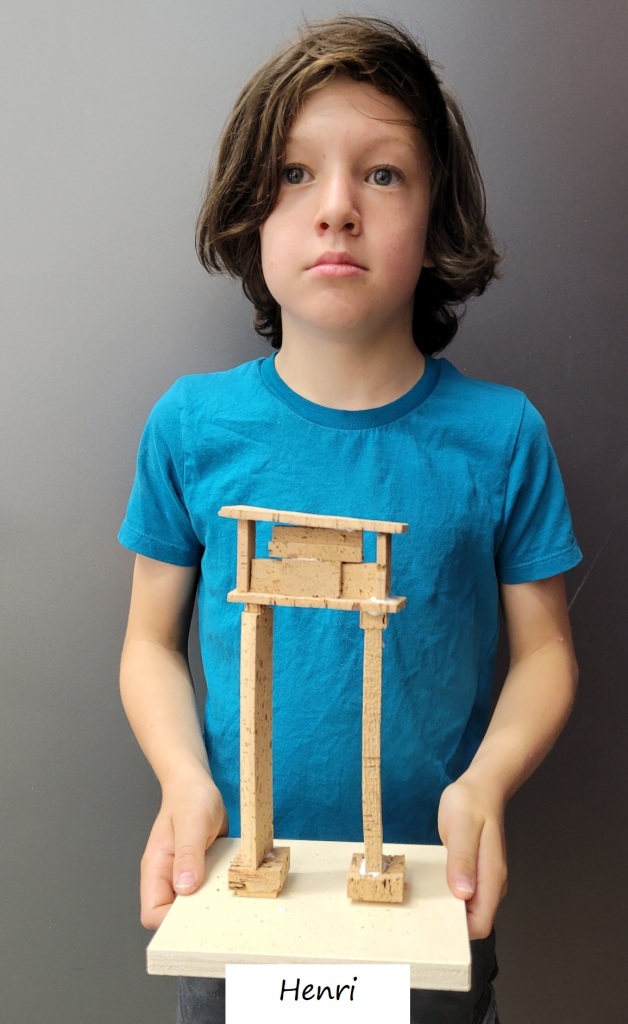
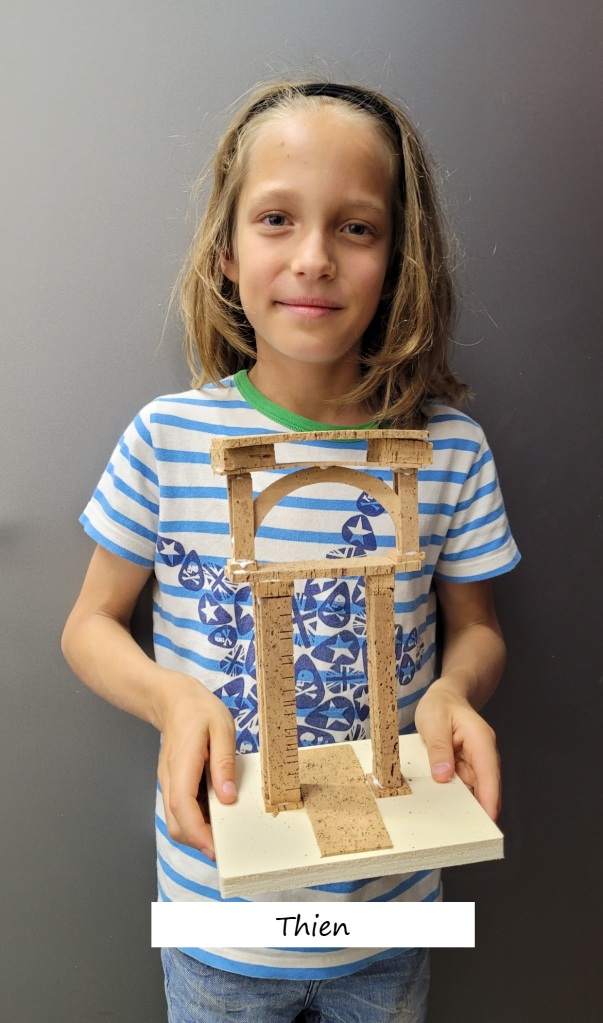
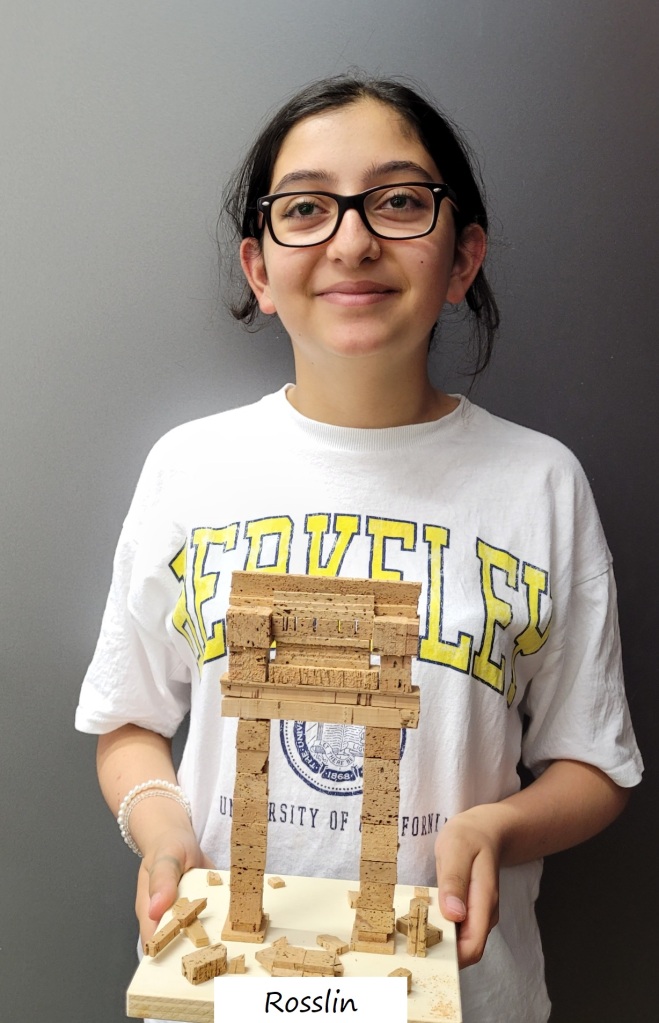
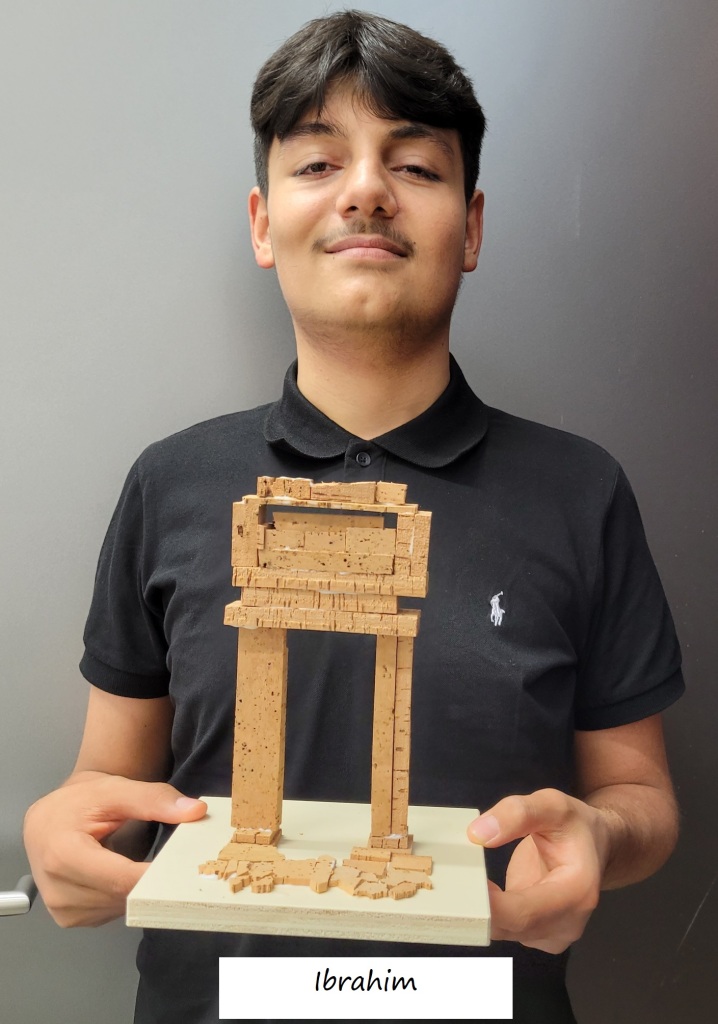
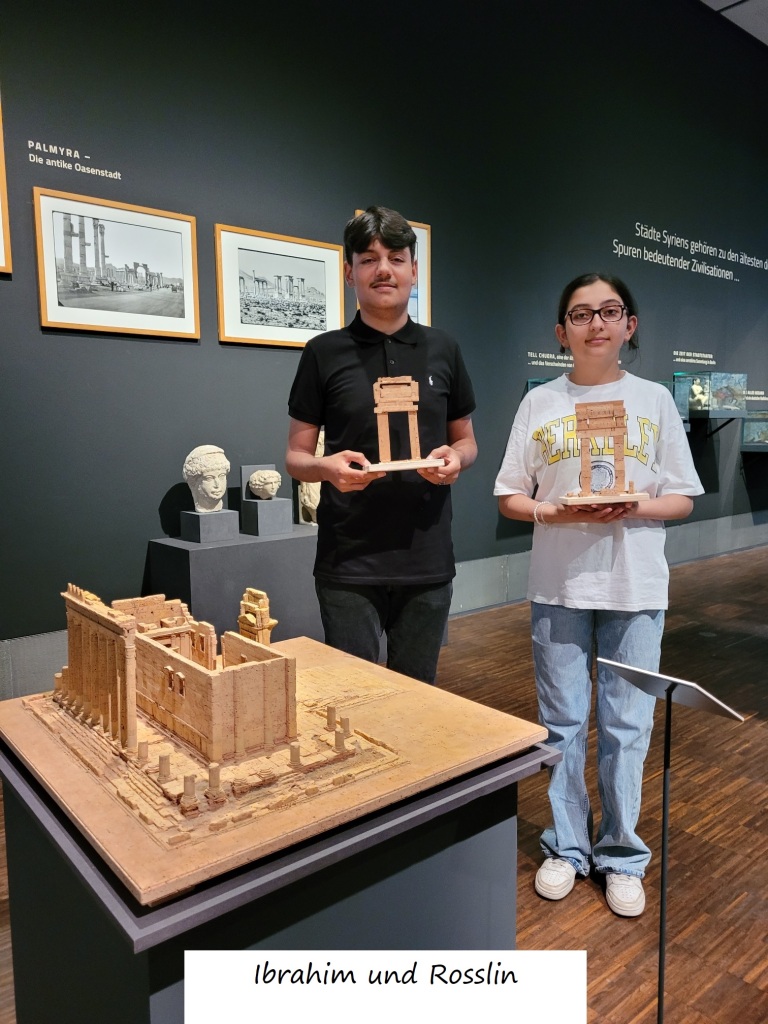
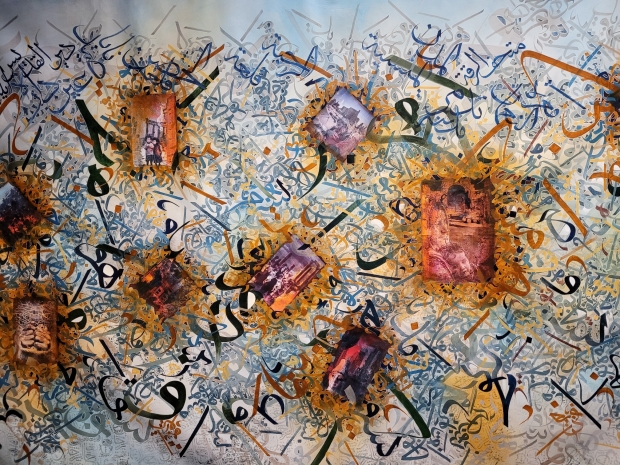
SYRIEN – GEGEN DAS VERGESSEN
The RAUTENSTRAUCH – JOEST – MUSEUM in Cologne is showing a unique exhibition on the great loss of Syrian culture in times of peace. The curator JABBAR ABDULLAH has spared no effort in bringing together artefacts, films and photos that have never been shown before. Dieter’s cork model of the TEMPLE OF BEL can also be seen here. The model was started a few days after its violent destruction in 2015 and completed a year later.
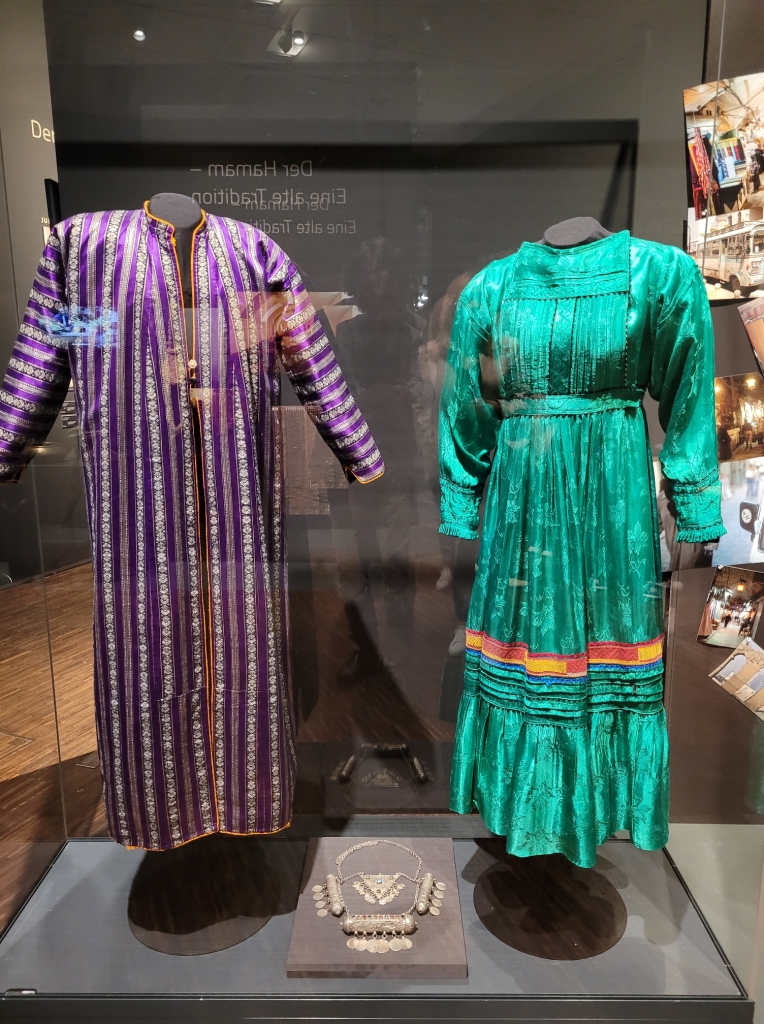
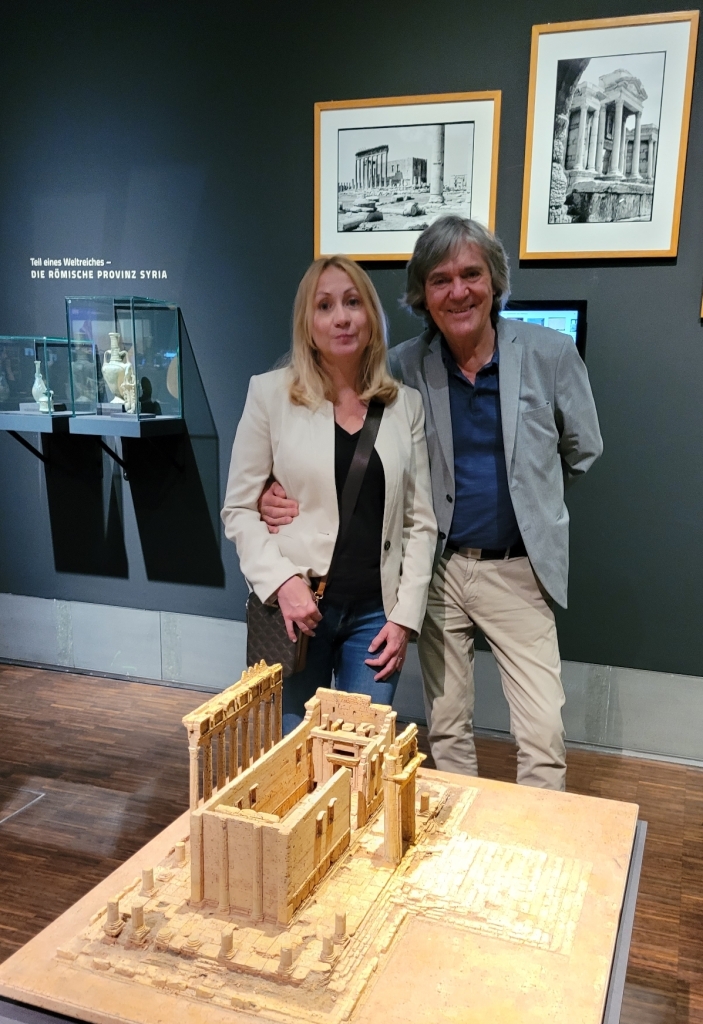
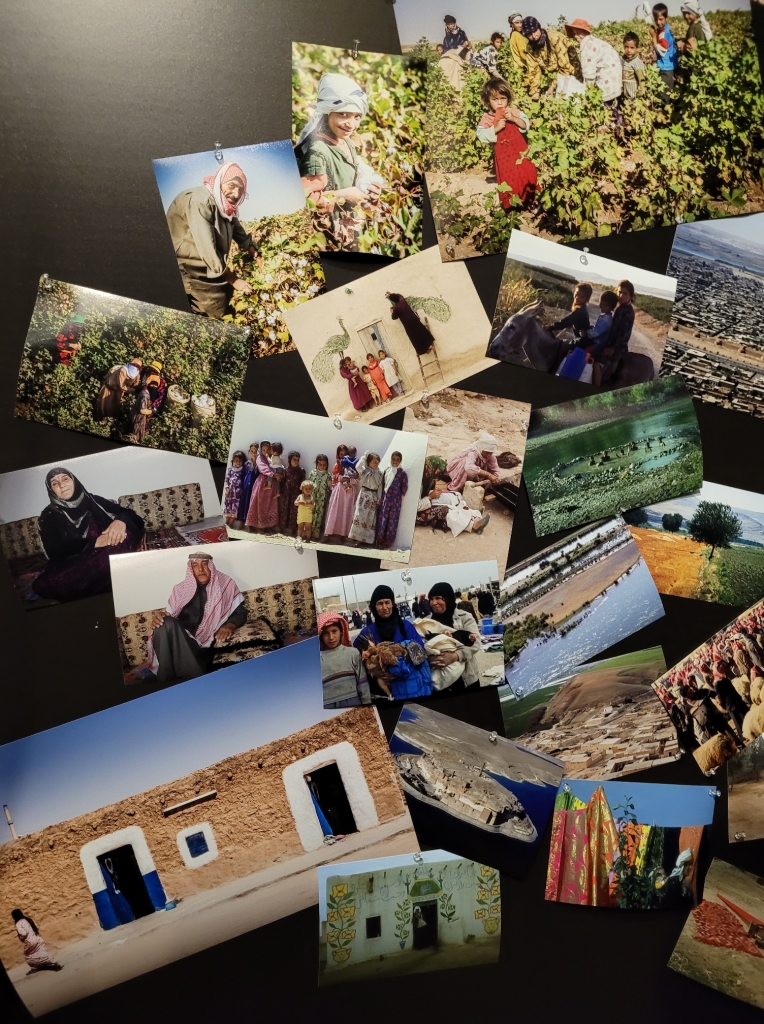

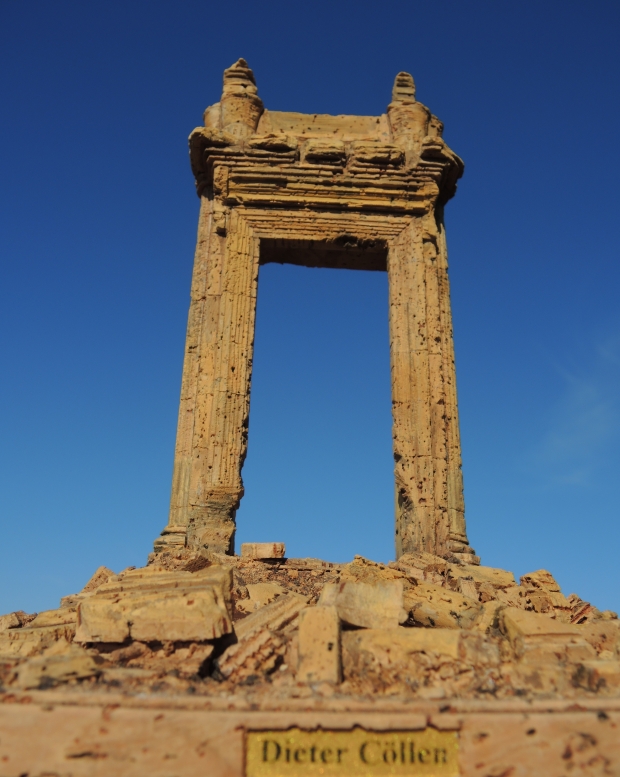
AGAINST DESTRUCTION
As we know, targeted activism is the best medicine for mental paralysis brought on by human stupidity… Inspired by their trip to Rome, Dieter and Malgorzata work diligently on the construction of the Pantheon. As the video shows, the shell of the model is almost complete. Fly with us and maybe enjoy the great architecture of the old masters, which can still bring us closer to the beauty of human creativity even after 2000 years…
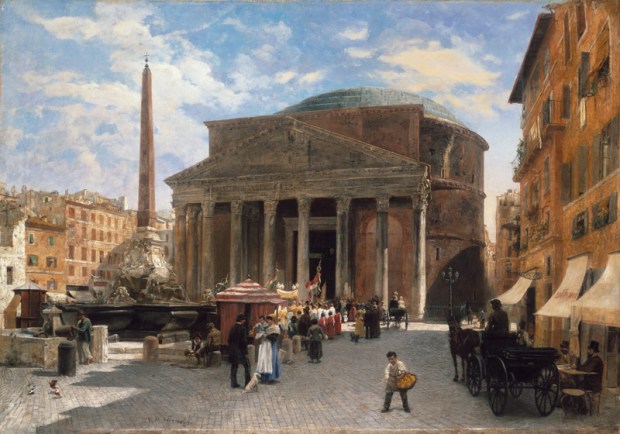
ROME -THE BEAUTY
Dieter and Malgorzata visit Rome to study the details of the Pantheon for the construction of the model. Of course they also enjoy spring and are inspired by the charm of this unique city…
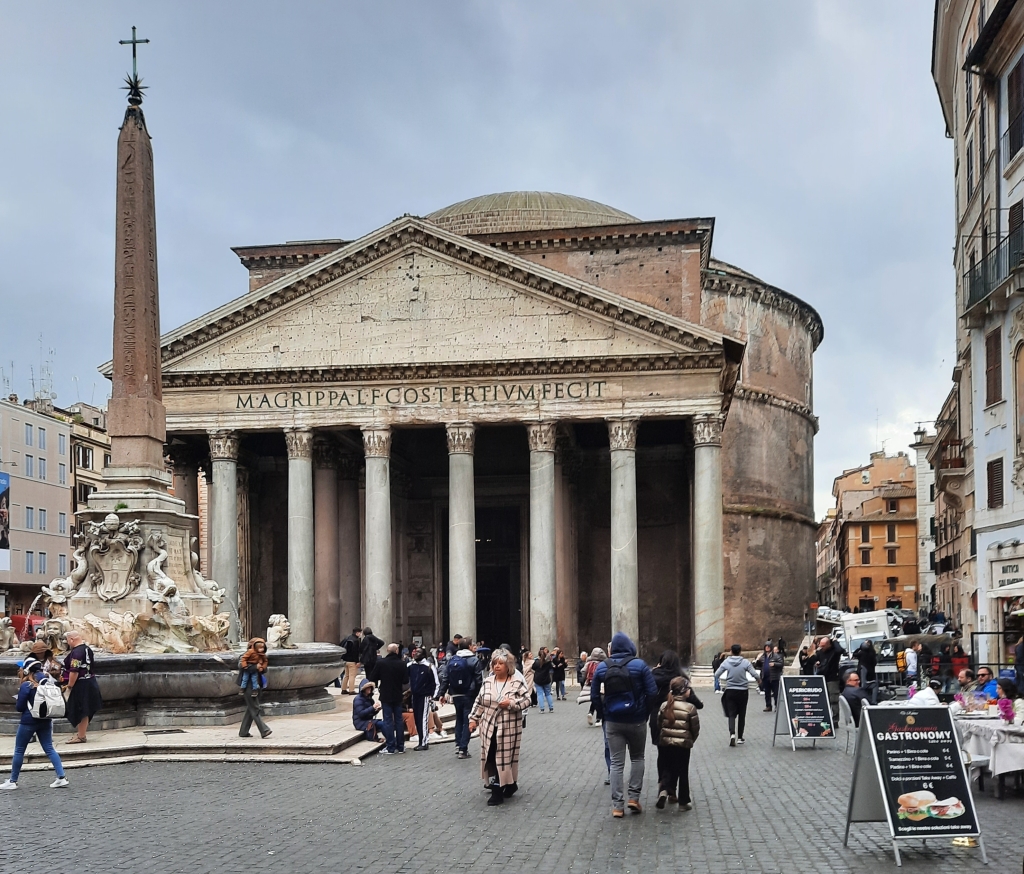

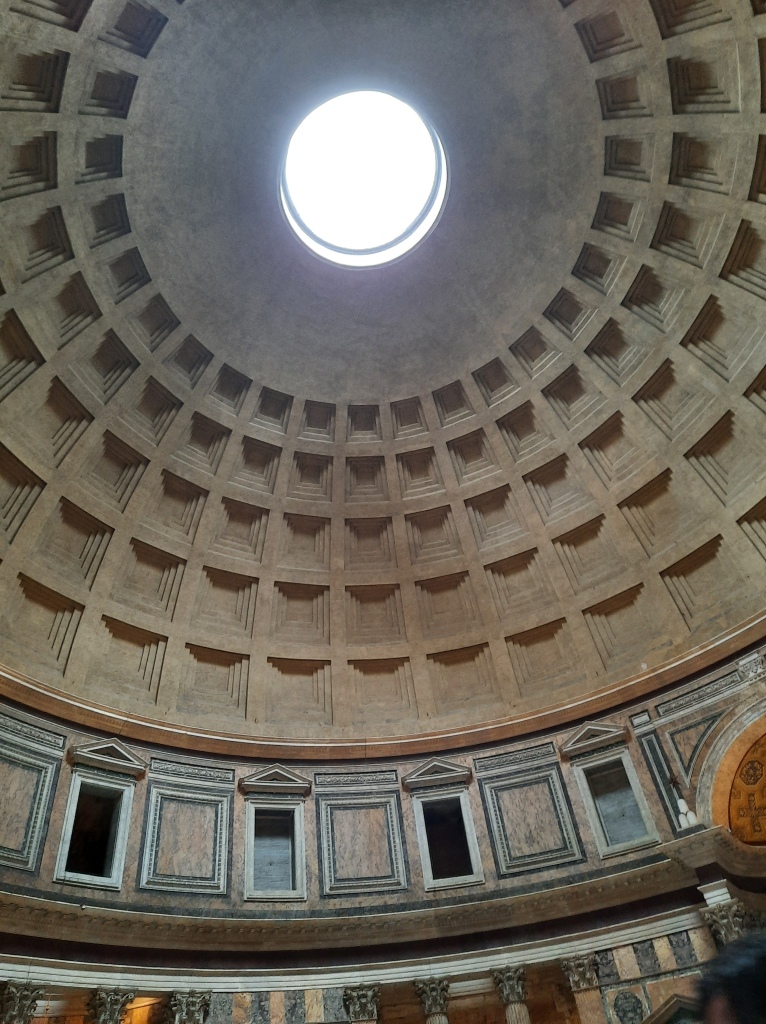

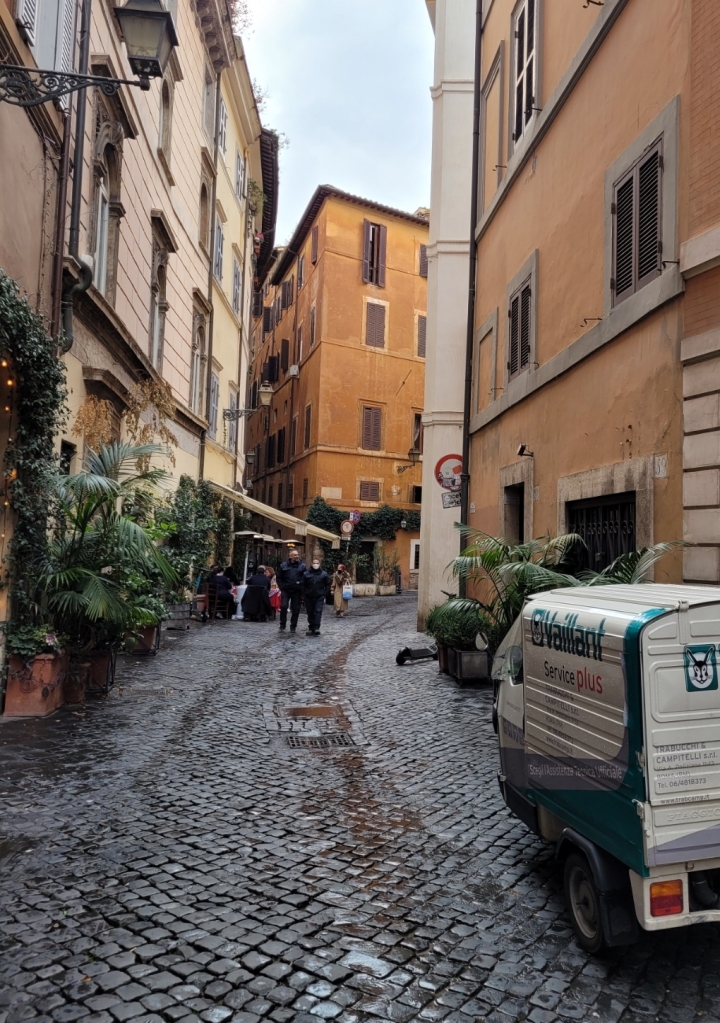
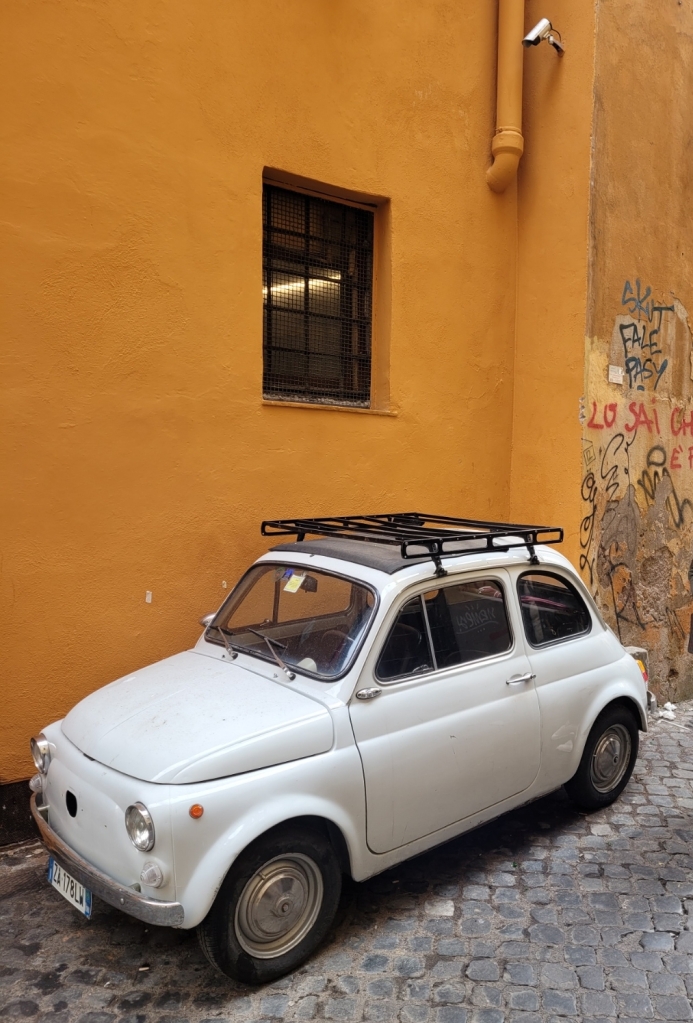
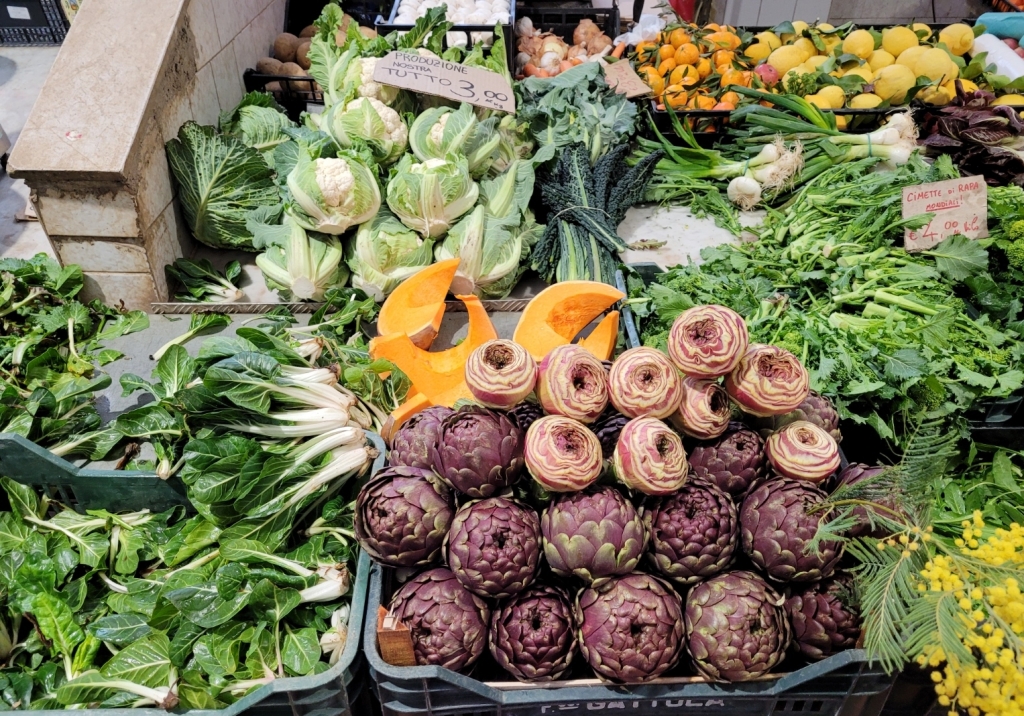
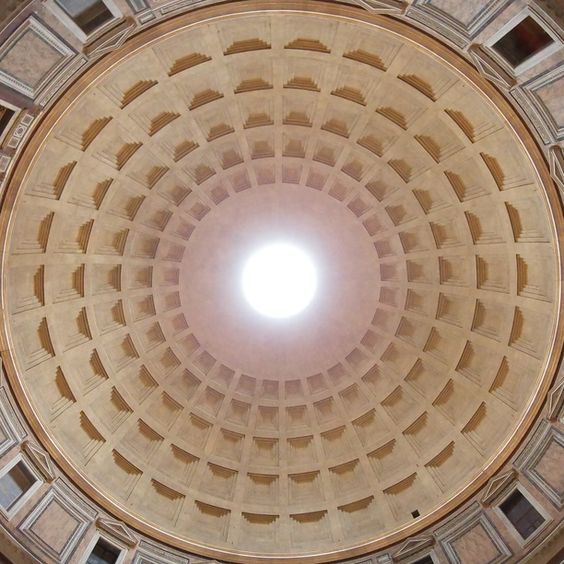
THE DOME
The dome of the Pantheon, with an inner diameter of 43.30 m was the largest of its kind for a long time, built with Roman concrete OPUS CAEMENTICIUM Its coffered structure posed a great challenge for Dieter and Malgorzata. First they make a negative mold, which is then filled with 7 layers of cork. The individual segments are then joined together to form the imposing dome.
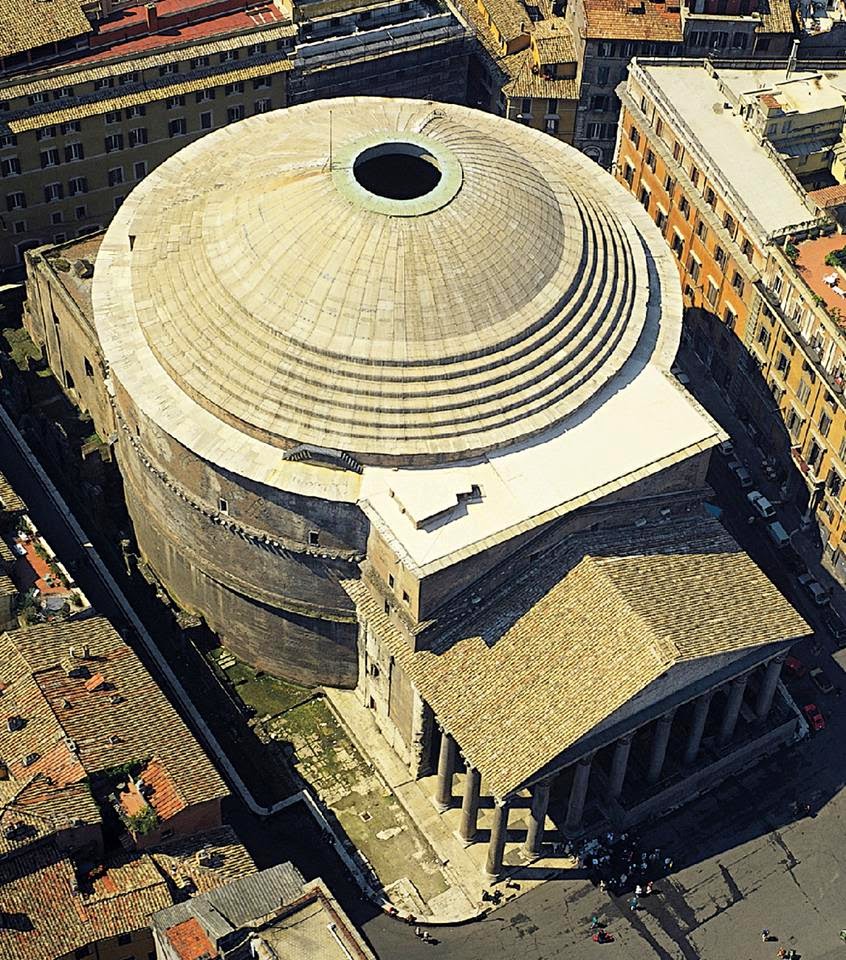
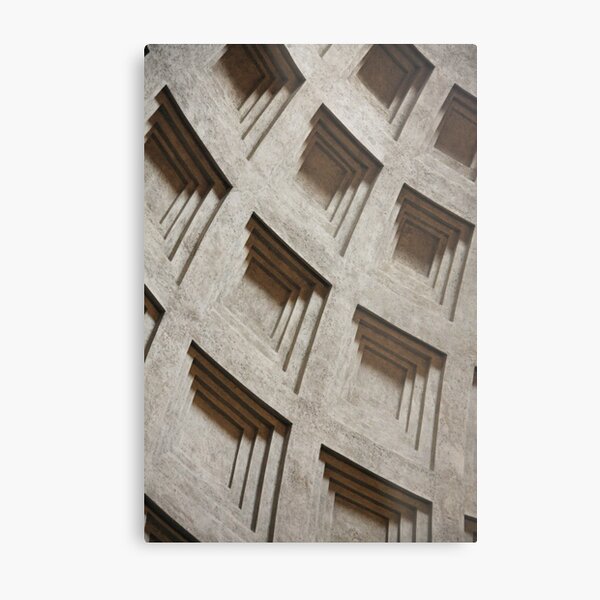
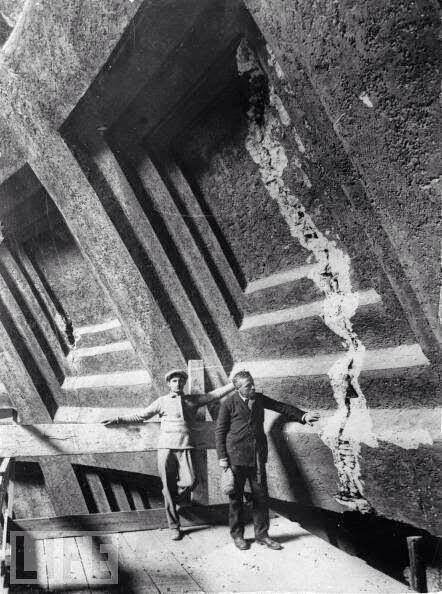
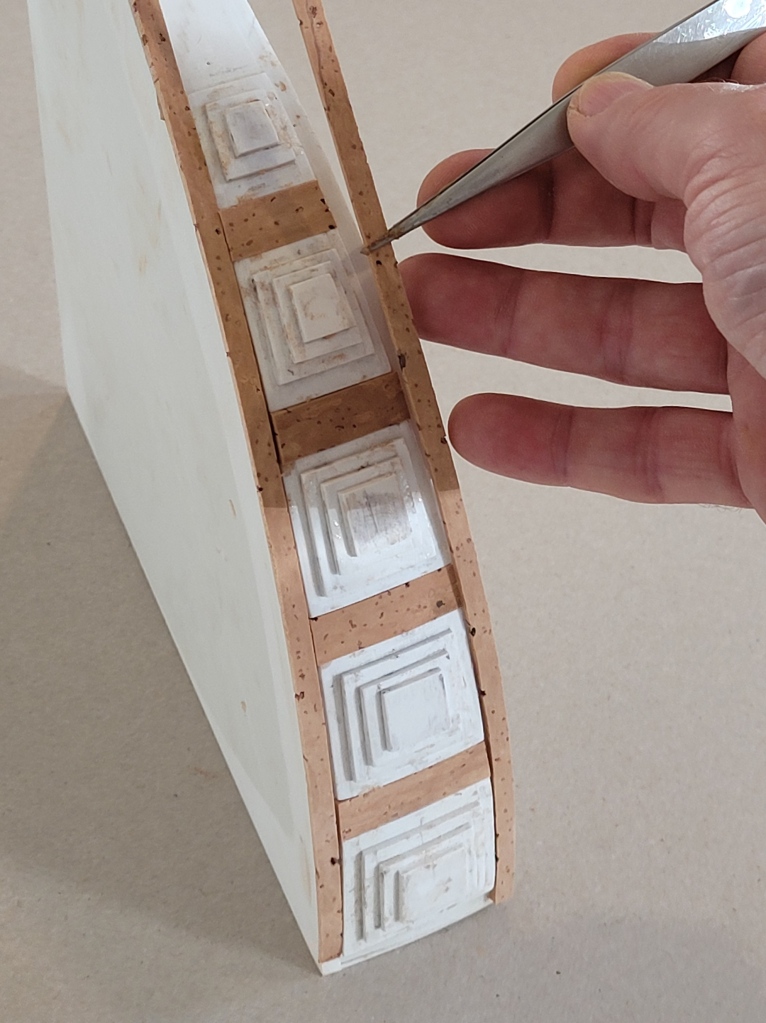
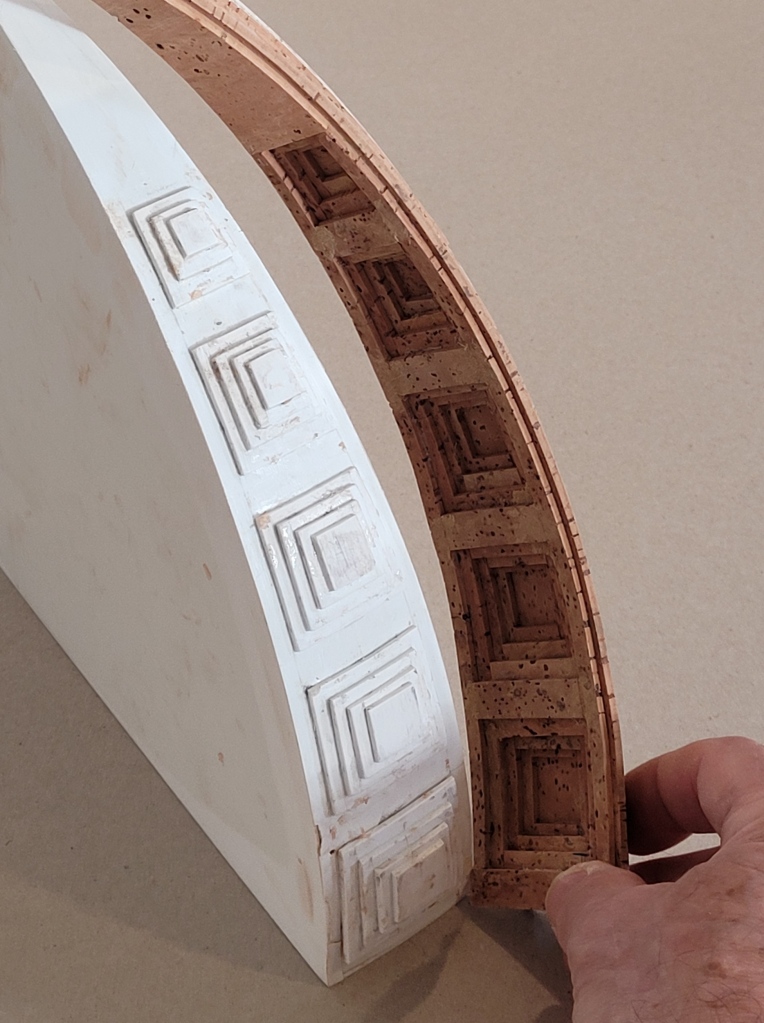


THE FLOOR
The floor of the Pantheon, which corresponds to the diameter of the dome (43.3m), is inlaid with a pattern of large squares and circles in PORPHYRY, gray GRANITE and Gialla Antico, a coveted yellow marble from SIMITTHU, framed by strips of Pavonanzetto. In order to reproduce this valuable material realistically, the cork base of the model is first coated with chalk primer and later sanded. Then Dieter and Malgorzata apply the intricate pattern in many layers of paint to get the desired effect…
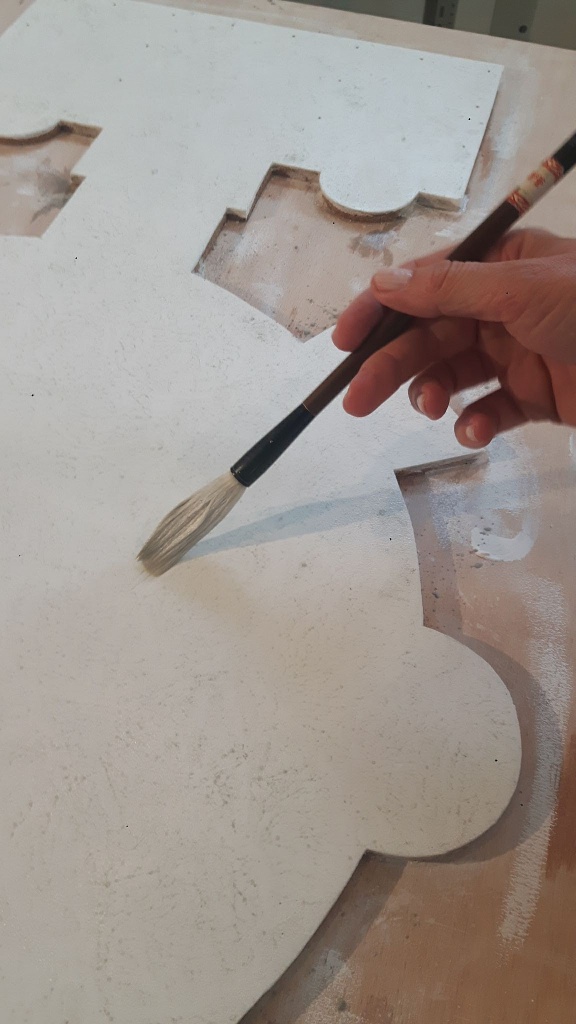
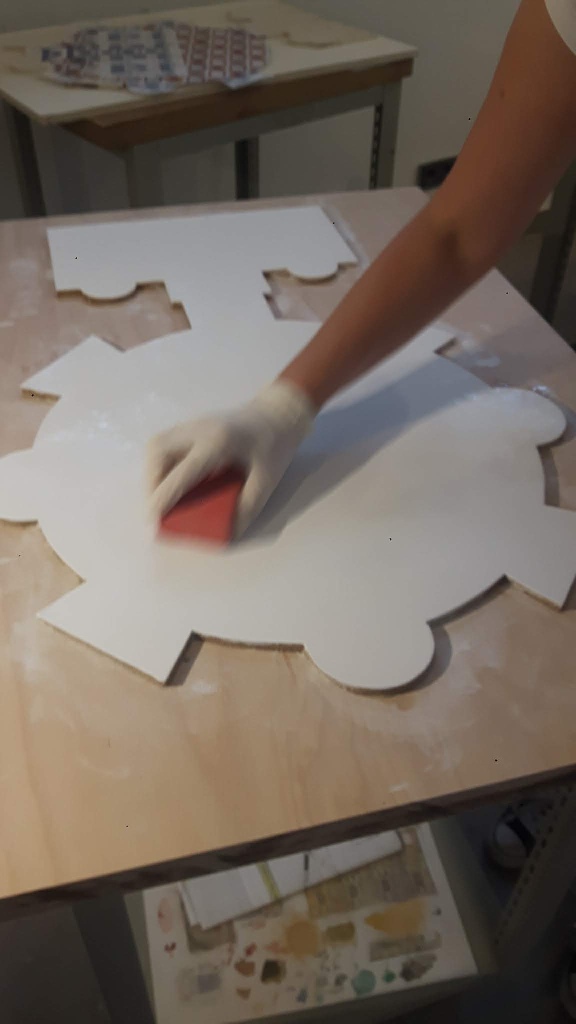
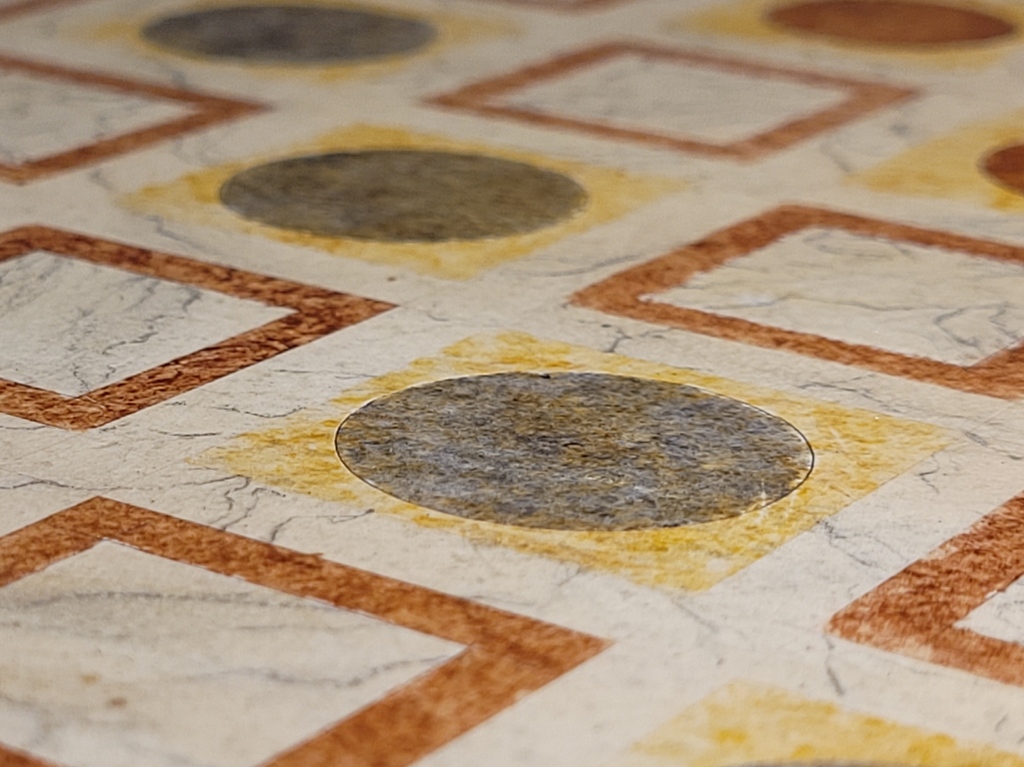
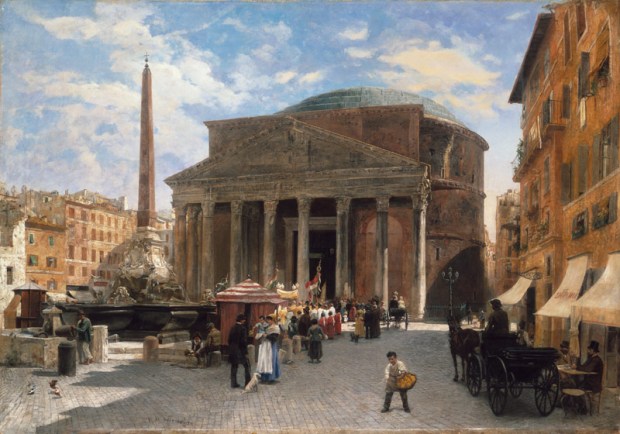
THE PANTHEON IN ROME
For most people, the mere memory of visiting the PANTHEON in Rome arouses great emotional feelings, combined with a longing to return to this magical place. So why not bring the object to the viewer?! Dieter and Malgorzata will face this great challenge. They plan over a year to produce a cork model scale 1:50, which should also show the complete interior with its elaborate equipment. Let’s watch the two of them at work and follow the single steps of this forgotten craft until completion…
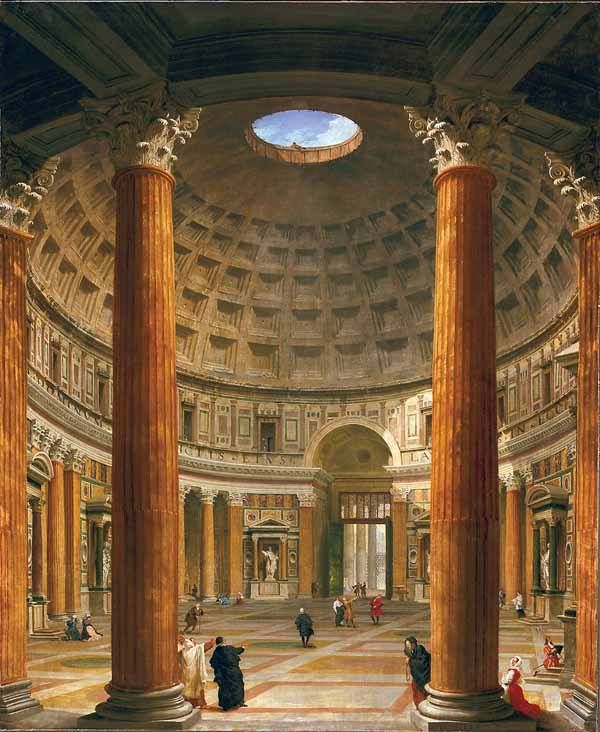

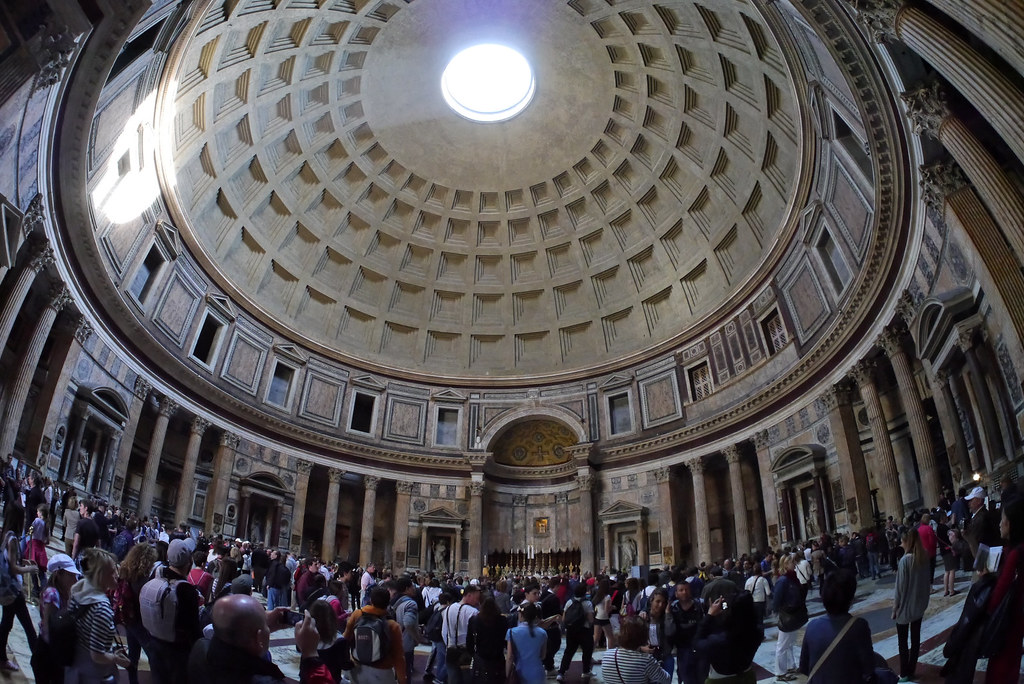
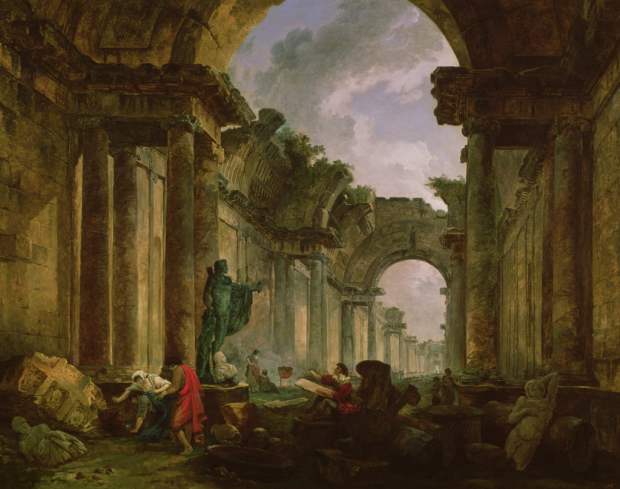
BACK TO THE FUTURE
A new designed building by the Berlin studio KAHLFELD ARCHITECTS is the base for the next cork model from Dieter and Malgorzata. The task is to turn the time further into the future and to capture the imaginary decay in maybe 2000 years – an interesting perspective from two points of view …
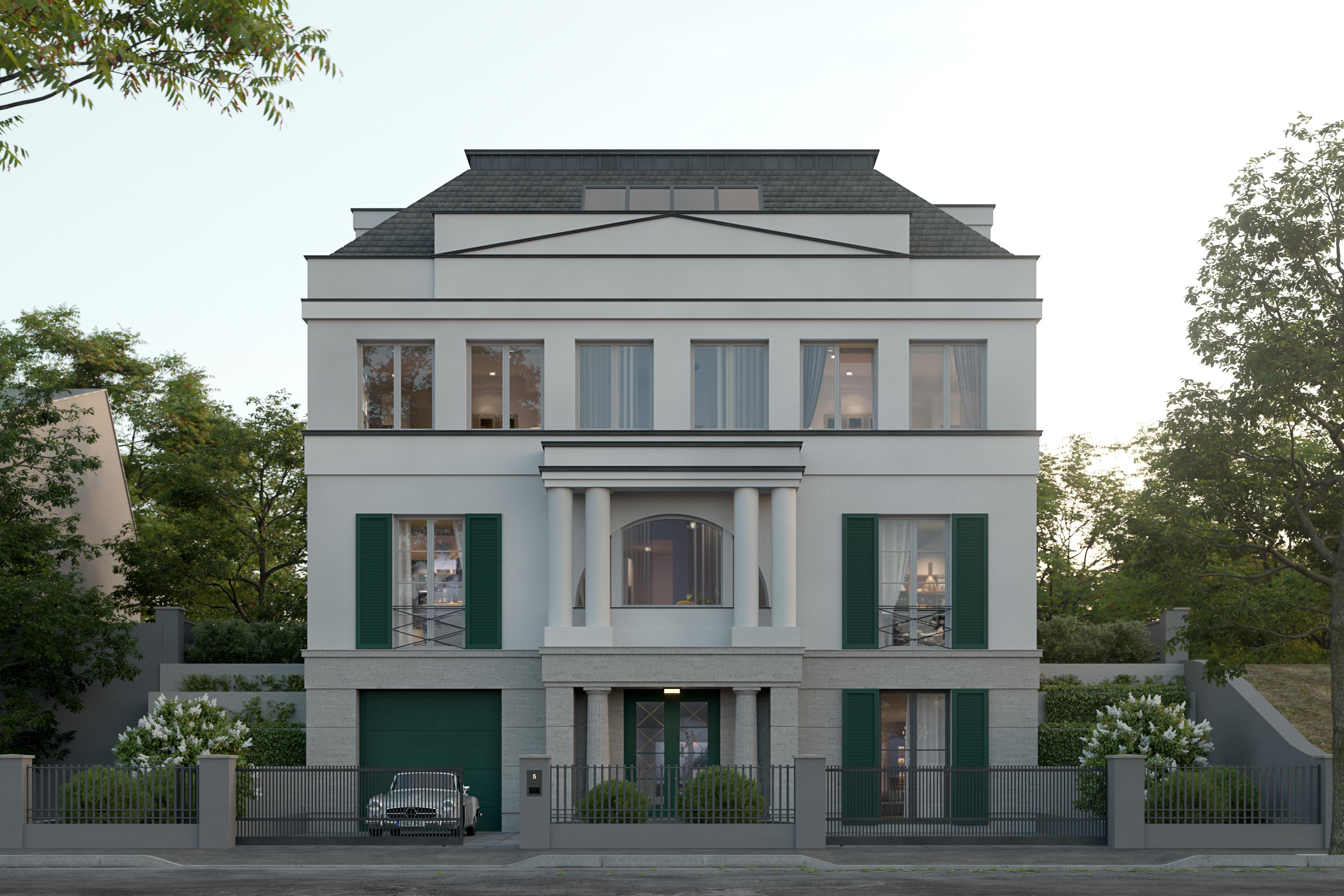
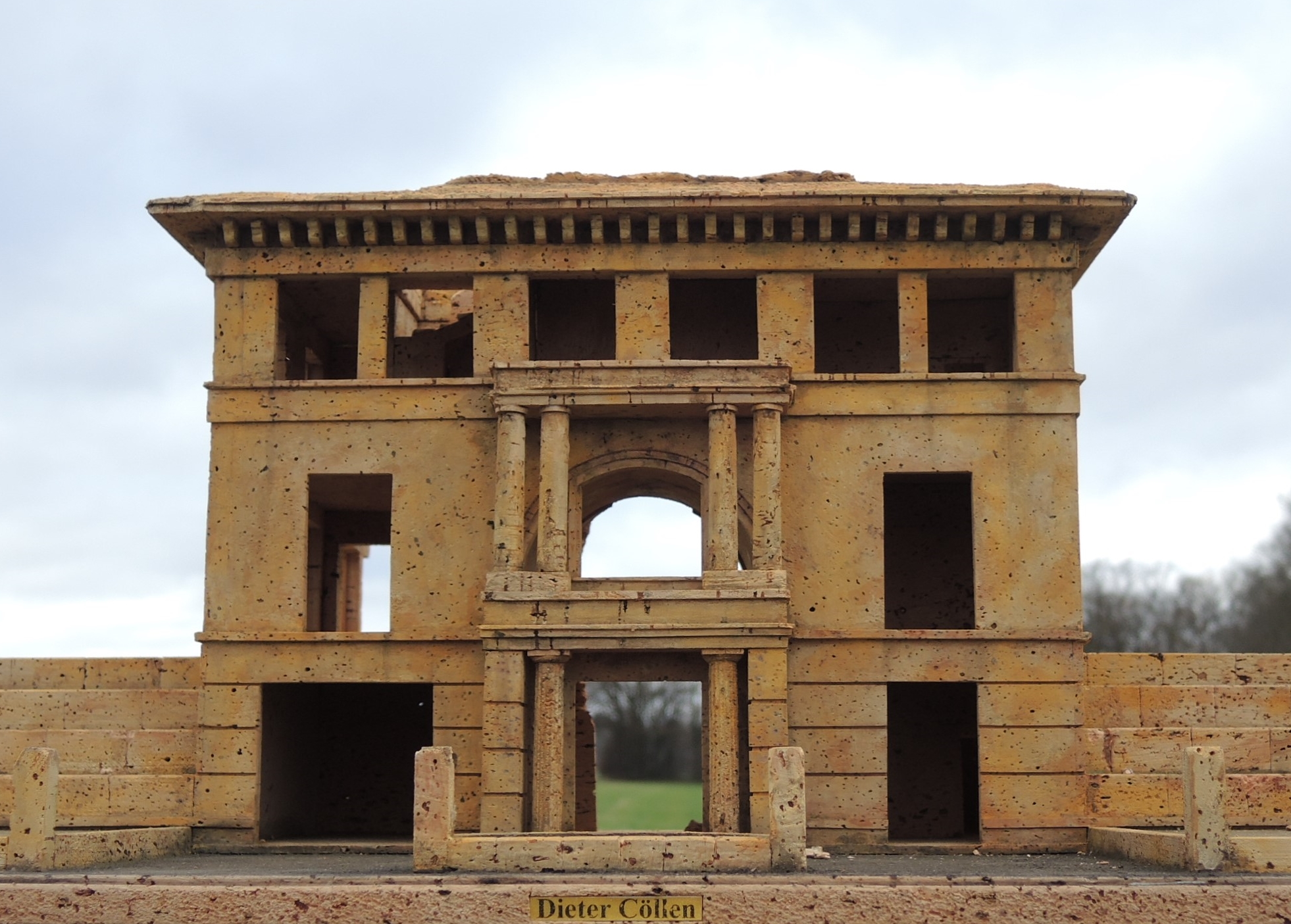
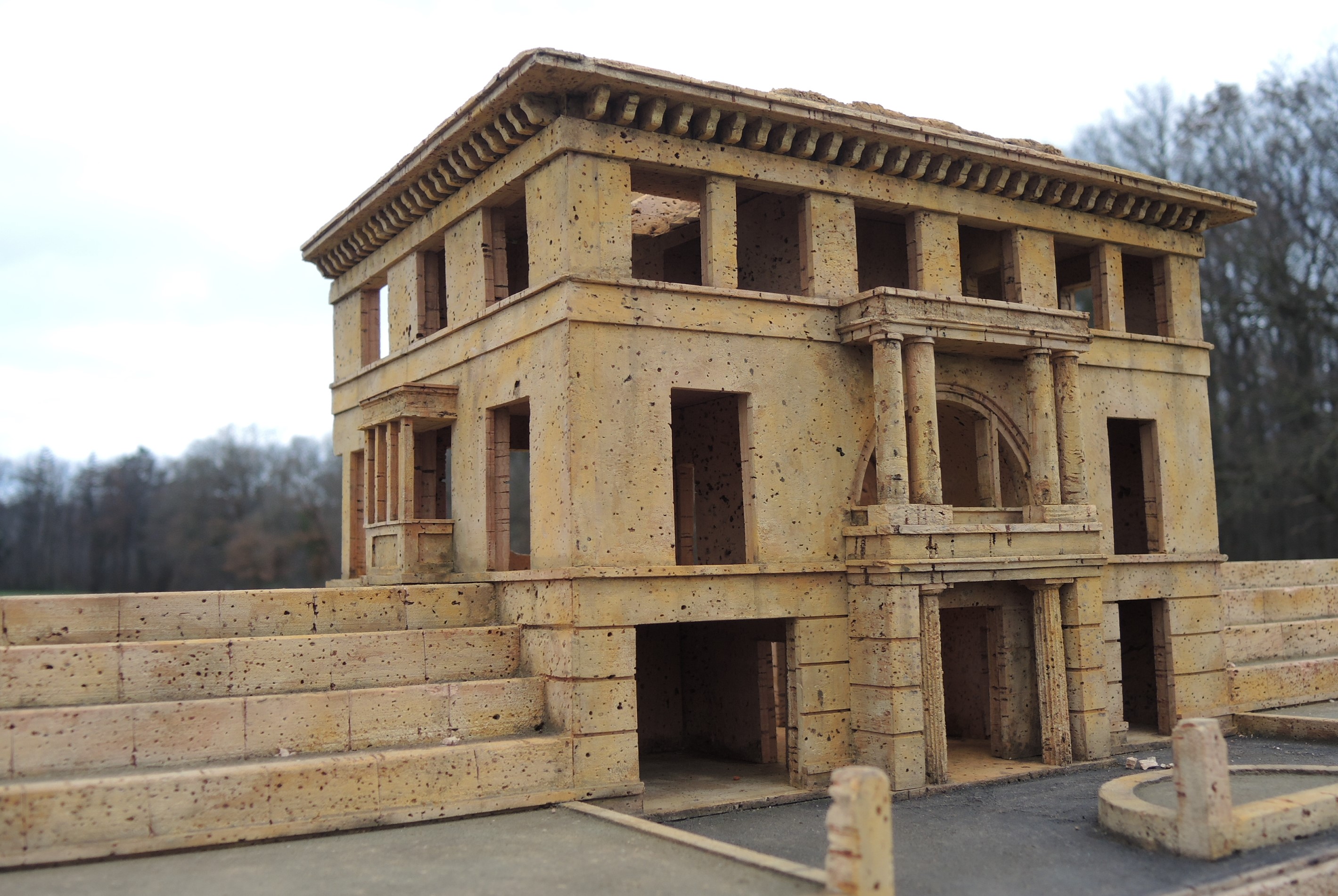
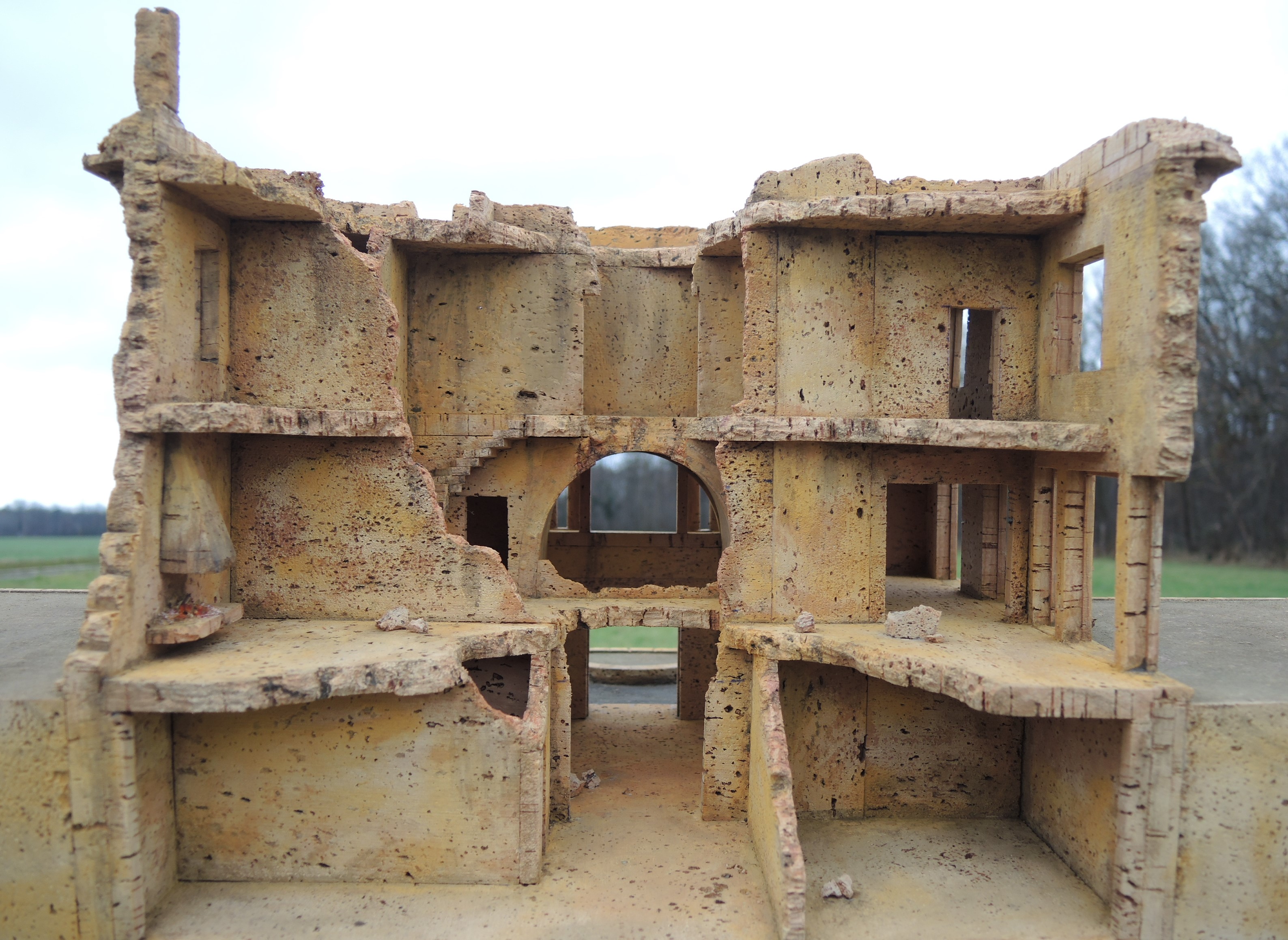
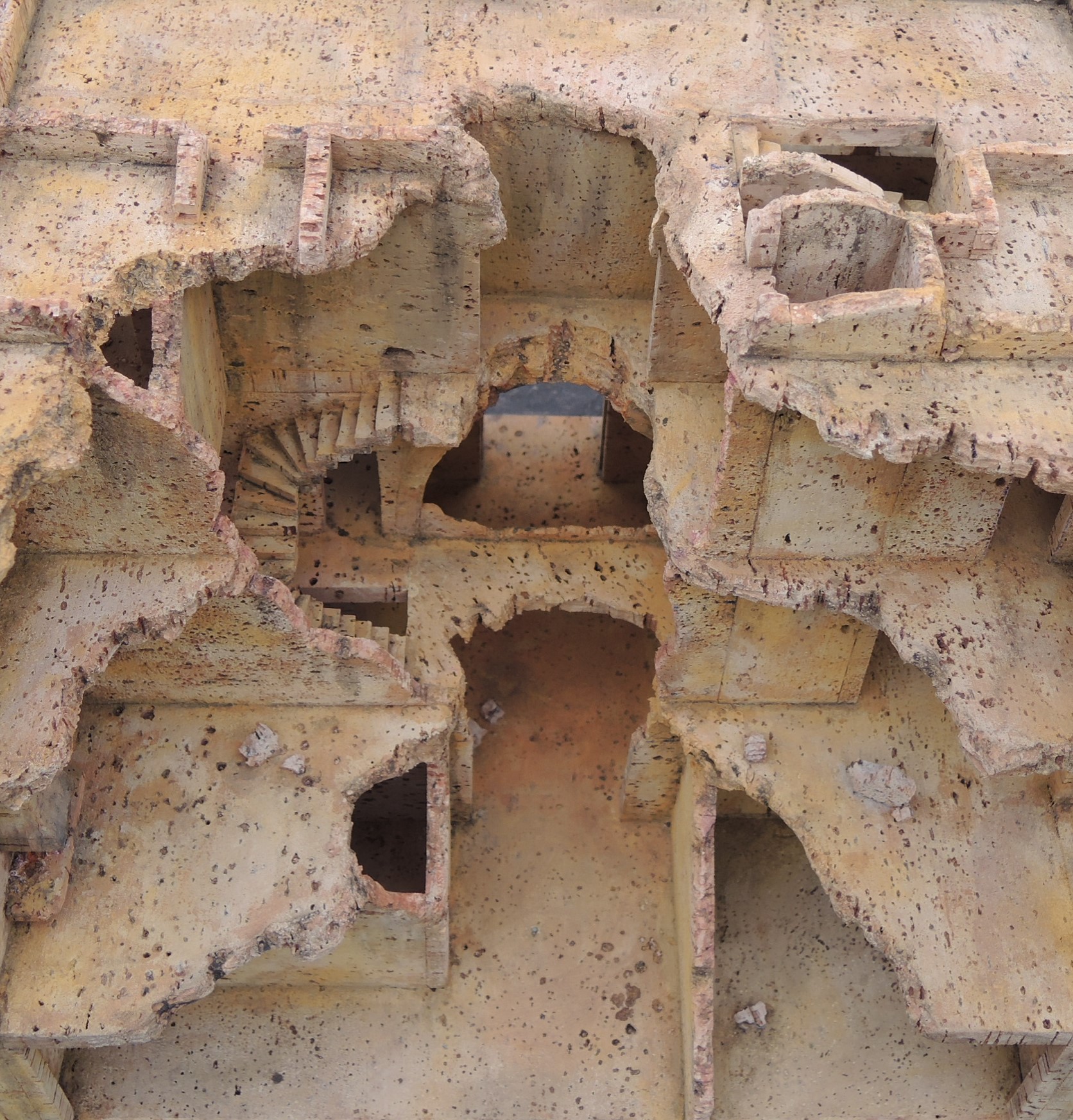
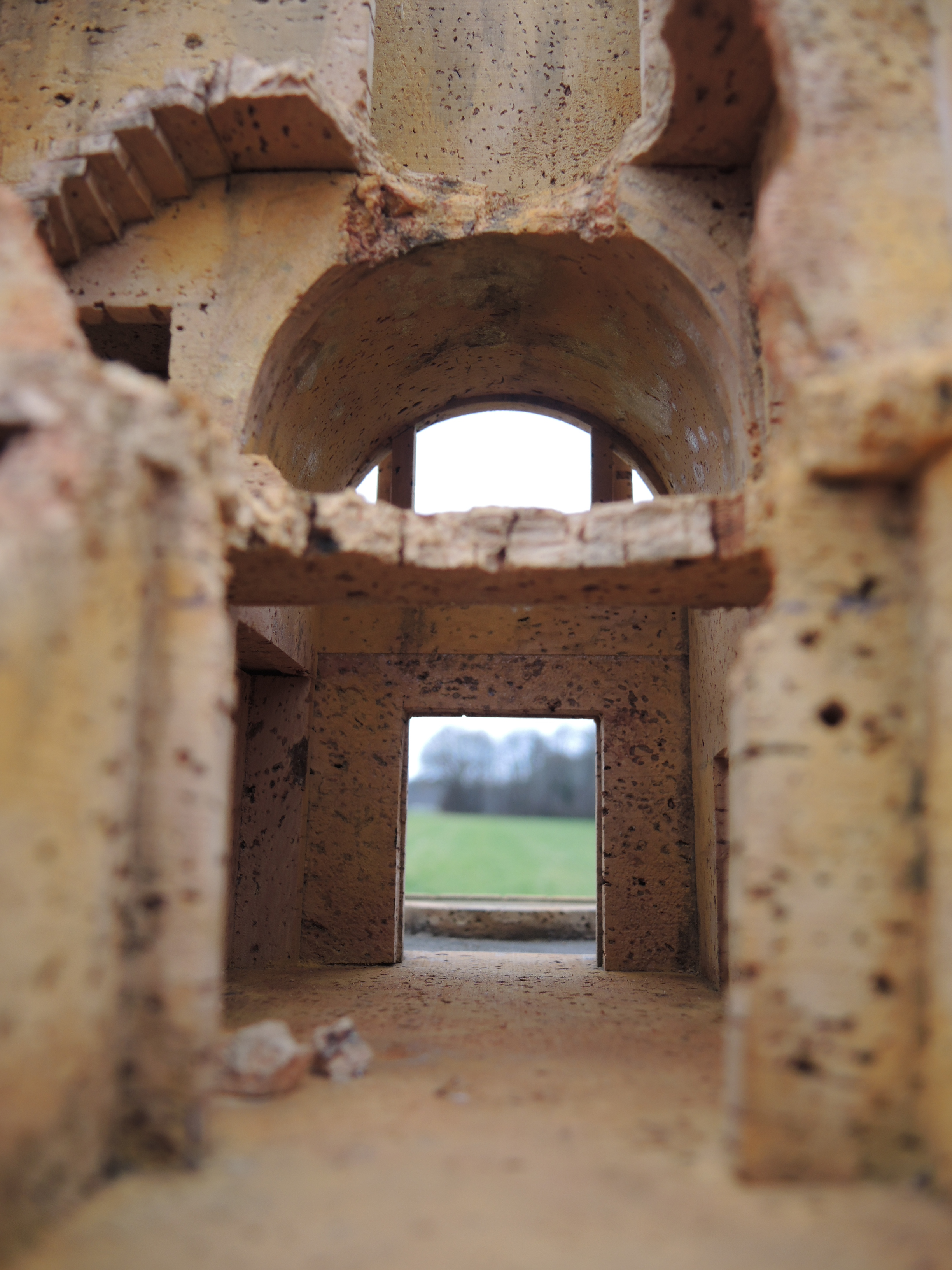
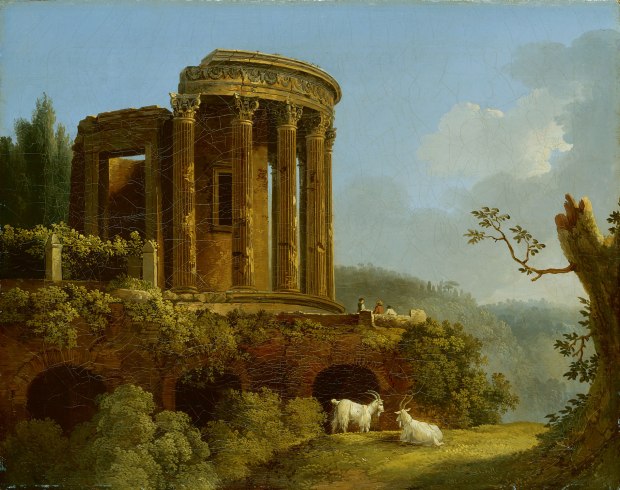
TIVOLI
Until today, the round temple of Tivoli is considered as the ideal of Romanticism for artists and architects. It was modeled in various interpretations by the grand masters of “phelloplastics” and carried across the Alps. Today Dieter and Malgorzata not only restore the few preserved objects, but they also create new cork models of the temple for various requirements. With this they not only keep a forgotten craftsmanship alive, but also try to redirect the viewer’s gaze to perfect proportions and beauty …


NEW HOME FOR THE COLOSSEUM
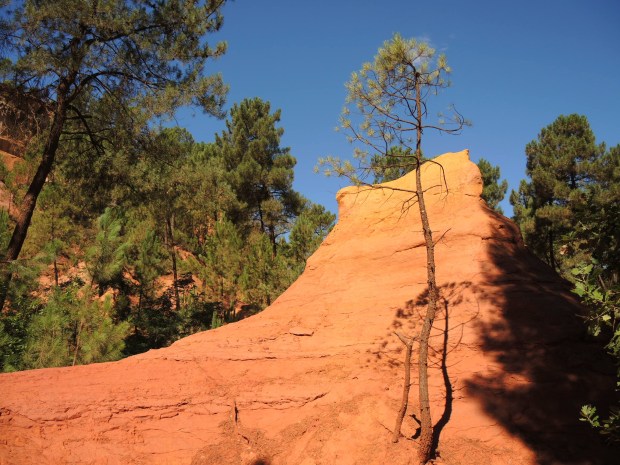
COLOUR
Malgorzata uses natural pigments from the ROUSSILLON in France, which can be found in the landscape there, for the surface of the model. This work takes a lot of time because the paint is applied in several layers in order to achieve the desired result. After that, the pillars must be fixed. A final „make-up“ follows to highlight the contours …
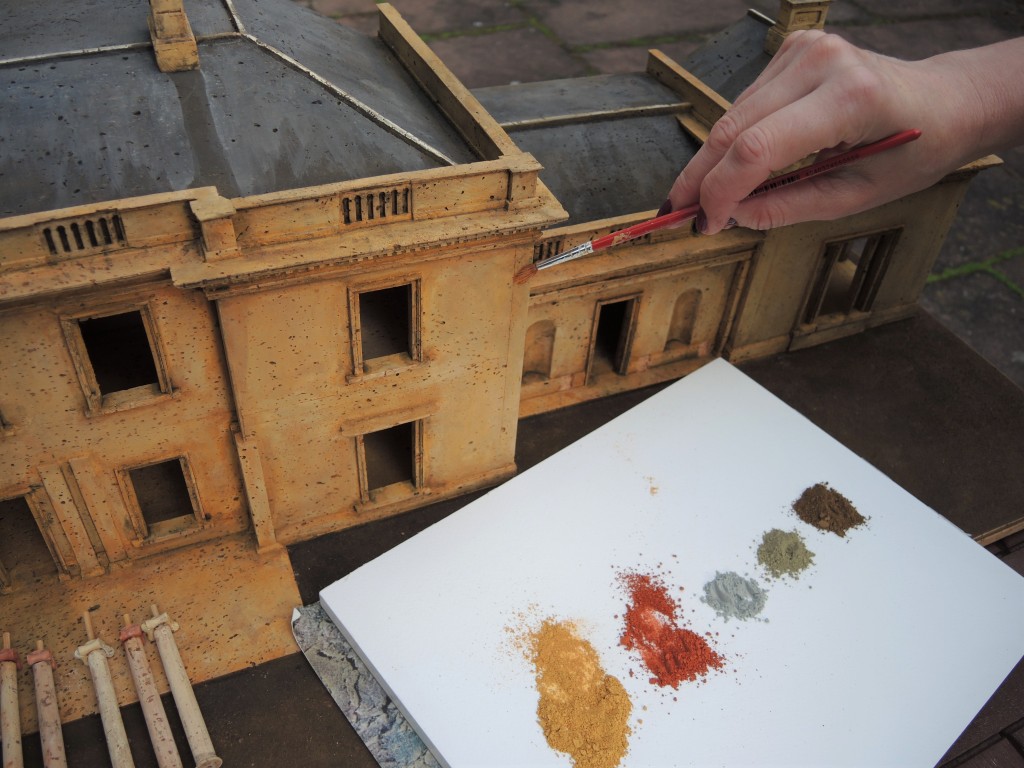
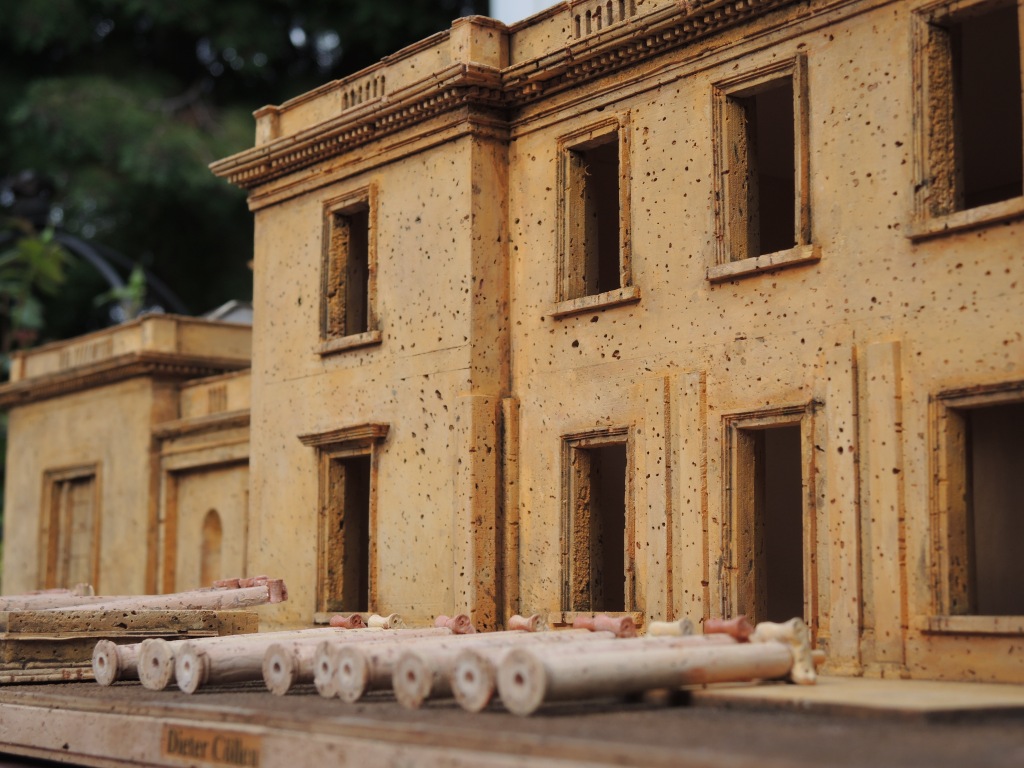
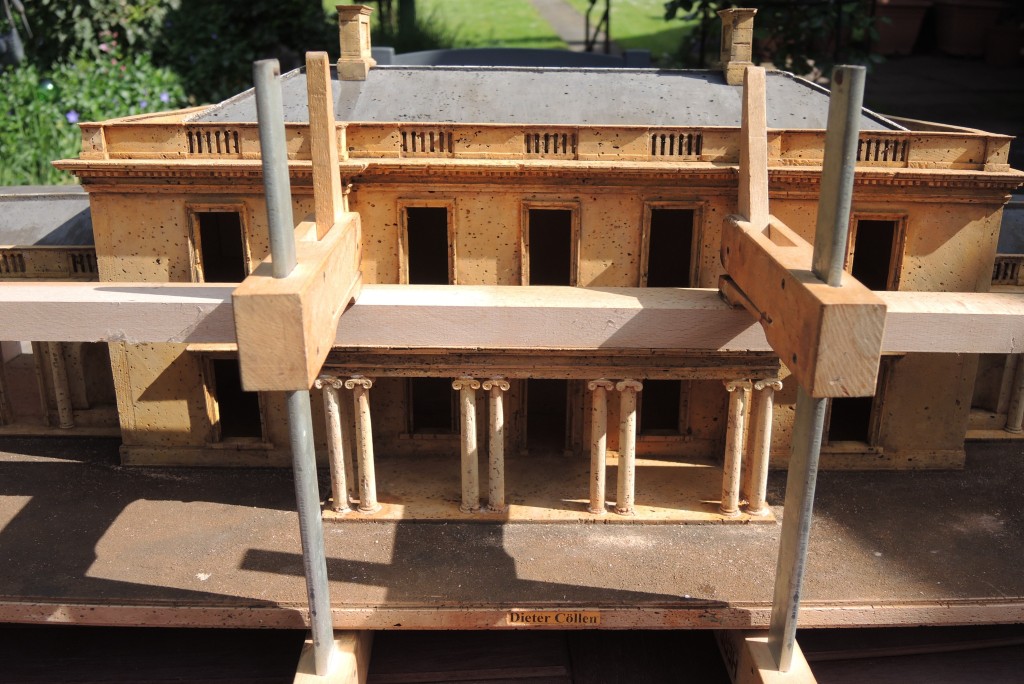
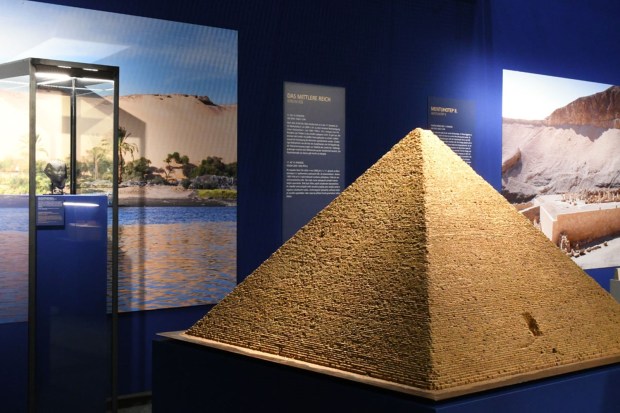
THE TIME OF PHARAOHS
Dieter’s cork model of the Great Pyramid has safely crossed the Atlantic … It will be on view in an exhibition at the Utah-Museum / Salt Lake City from May 20th, 2020 – January 2nd, 2021.
Exhibition title: EGYPT THE TIME OF PHARAOHS
“Let´s hit the dusty trail!”…
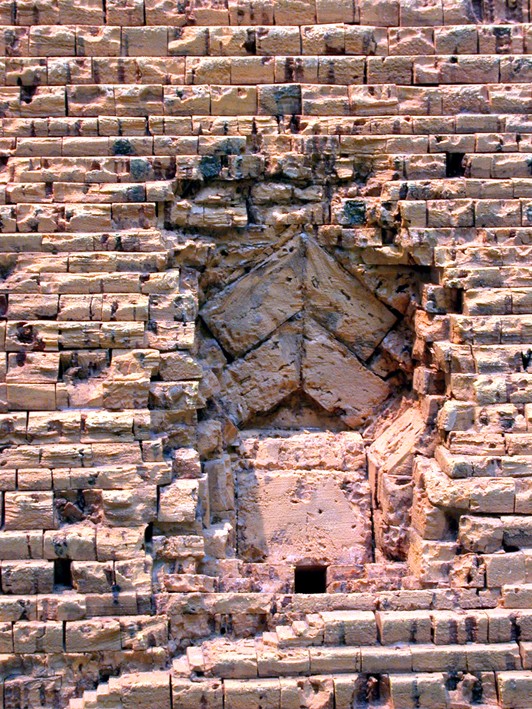

LIVING FOR BEAUTY
A new project by BEN PENTREATH poses a major challenge for Dieter and Malgorzata. They have to create an object of his design that touches the viewer’s emotions and shows that real beauty never dies. Cork seems to be the right material for this purpose. Let’s watch them at work …
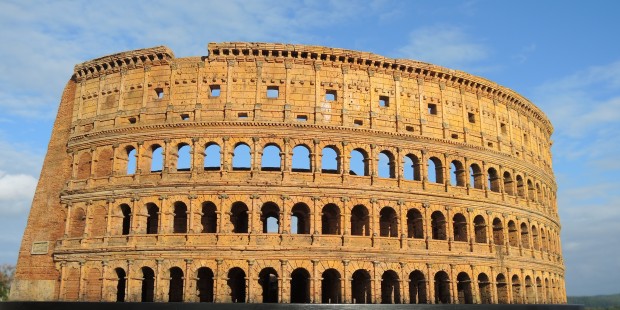
PICTURE SHOW
Today Dieter and Malgorzata would like to invite you to a picture show of their cork models – have fun!
CORK MODELS OF ANCIENT MONUMENTS

THE PHAROS OF ALEXANDRIA
The cork model of the Pharos of Alexandria was built by Dieter in 2015 for an exhibition in the Kunsthalle Leoben / Austria, with the scientific support of Prof. Dr. Michael Pfrommer . Now an exhibition team is working on a new presentation. We are all very excited and will report on the development of the efforts on the blog …
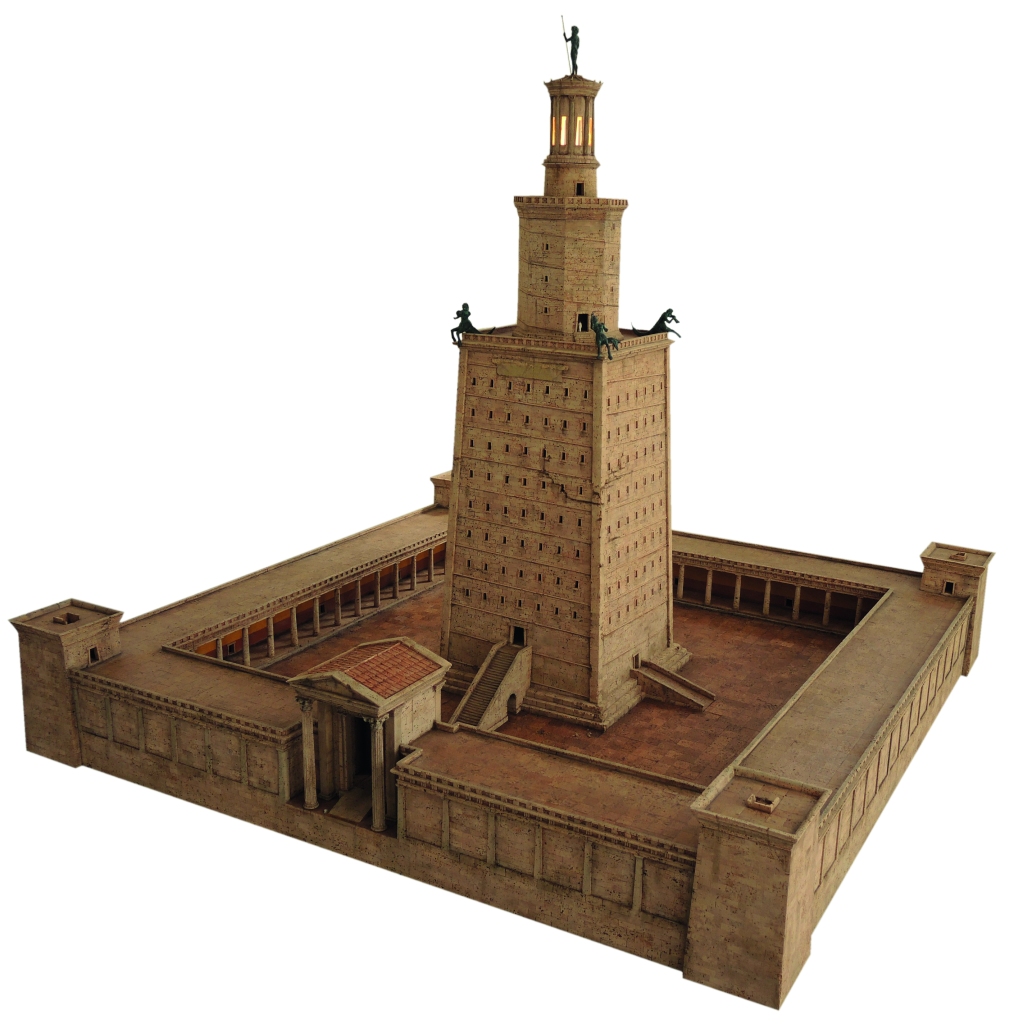
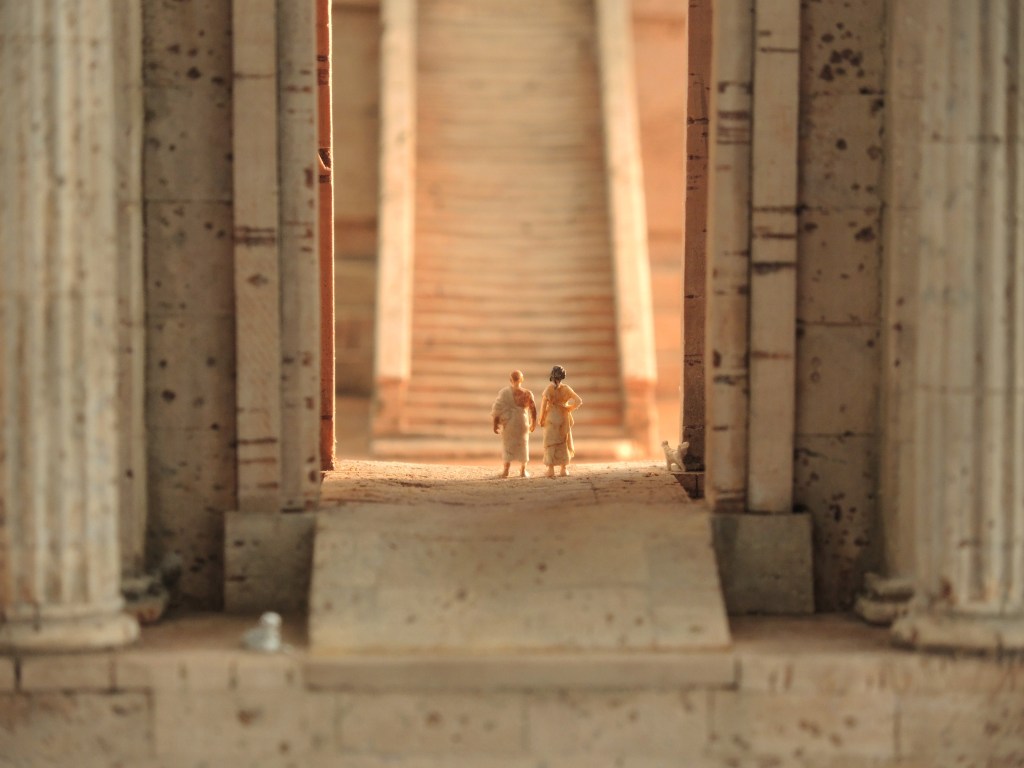
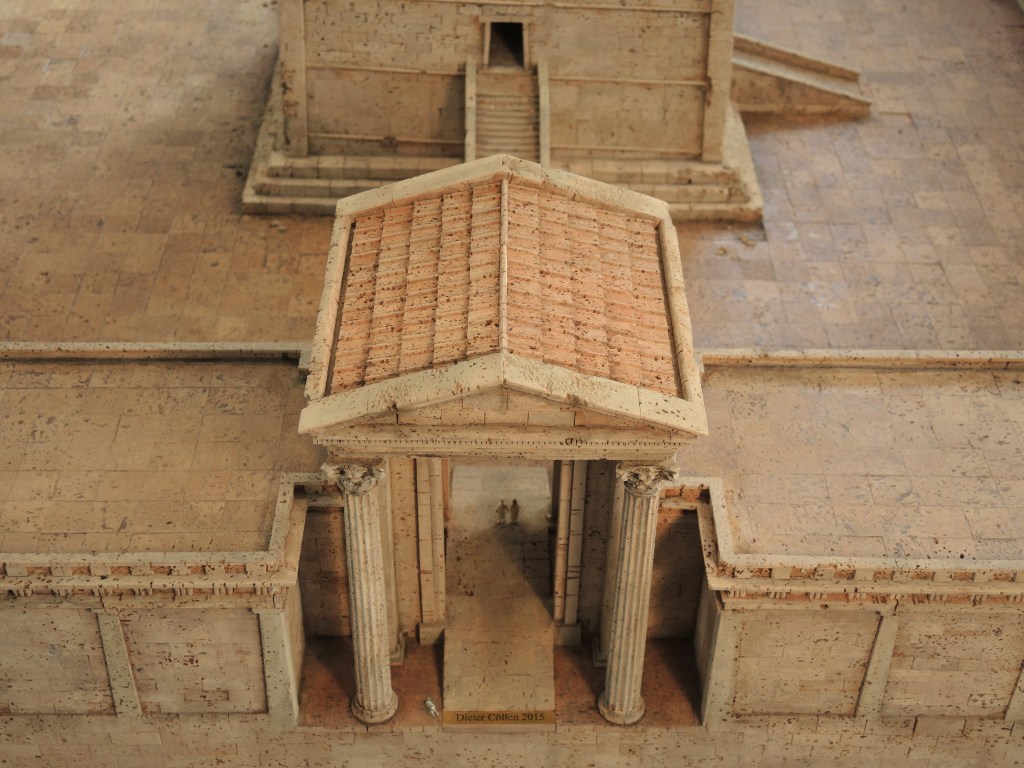
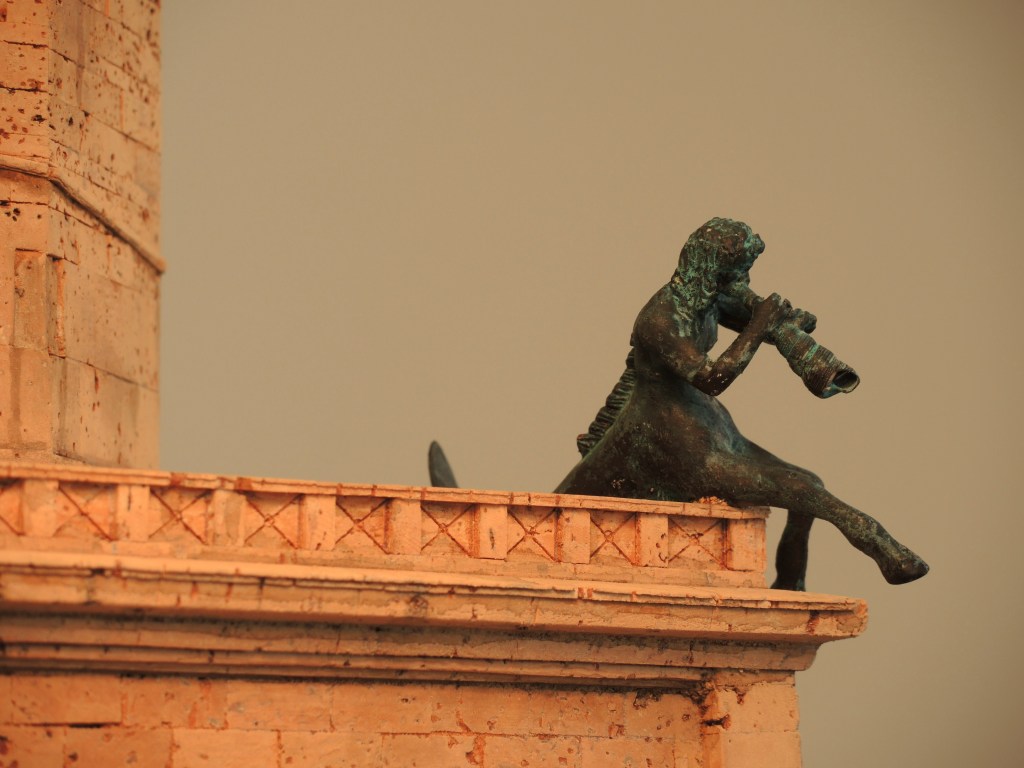
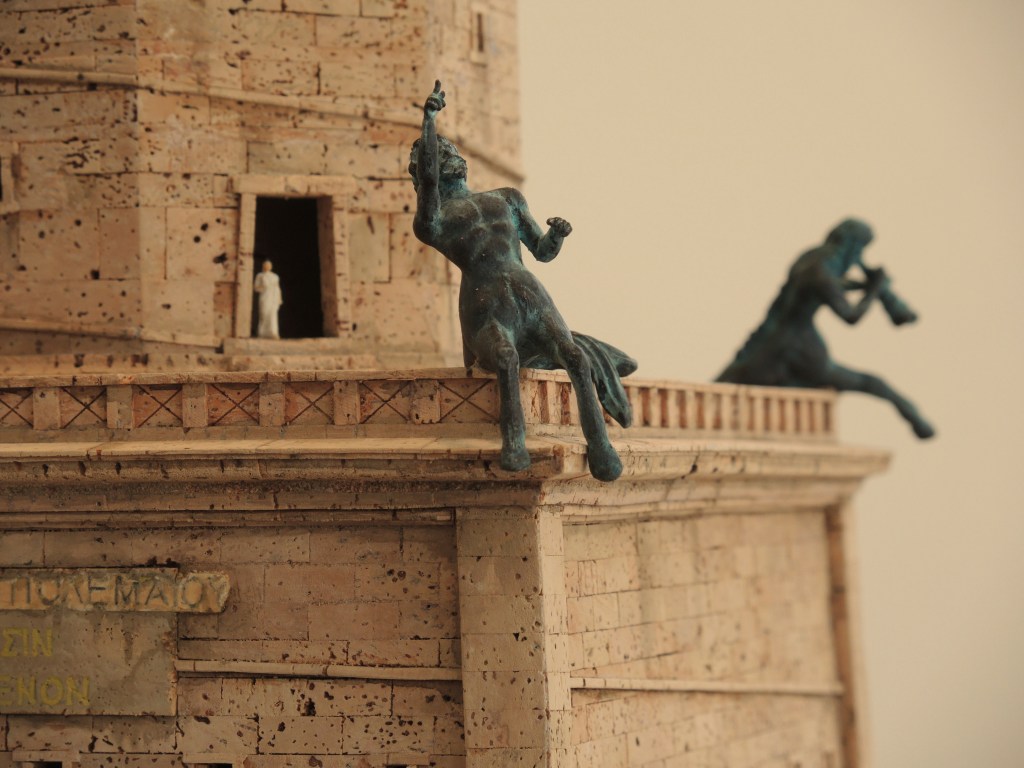

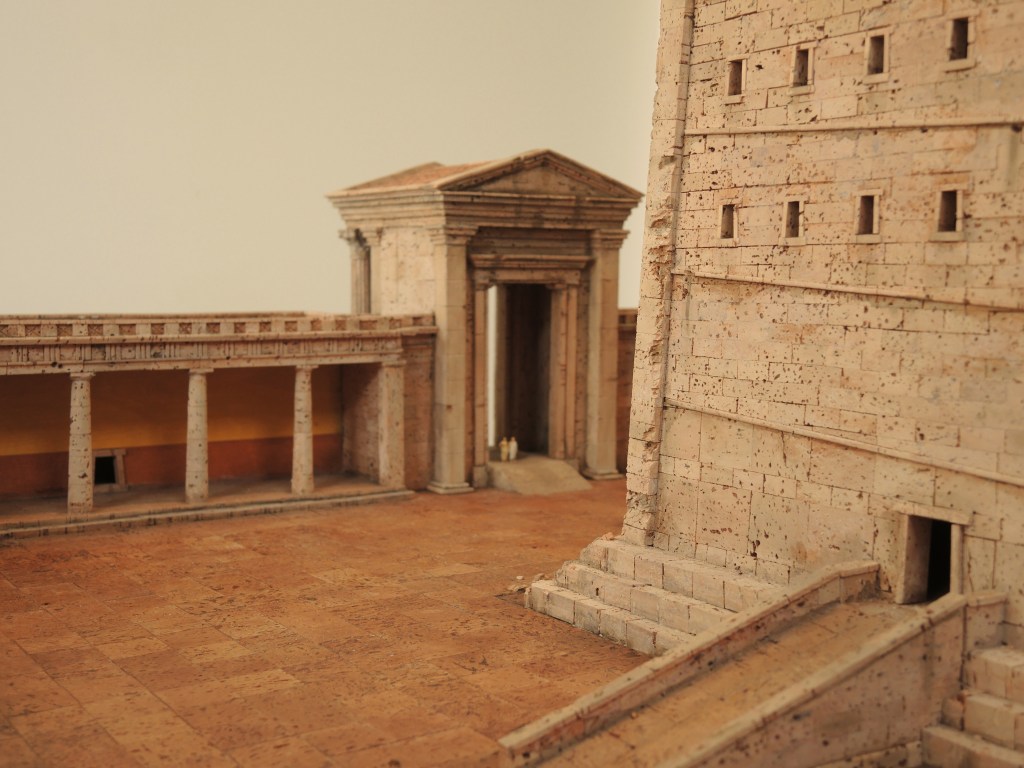
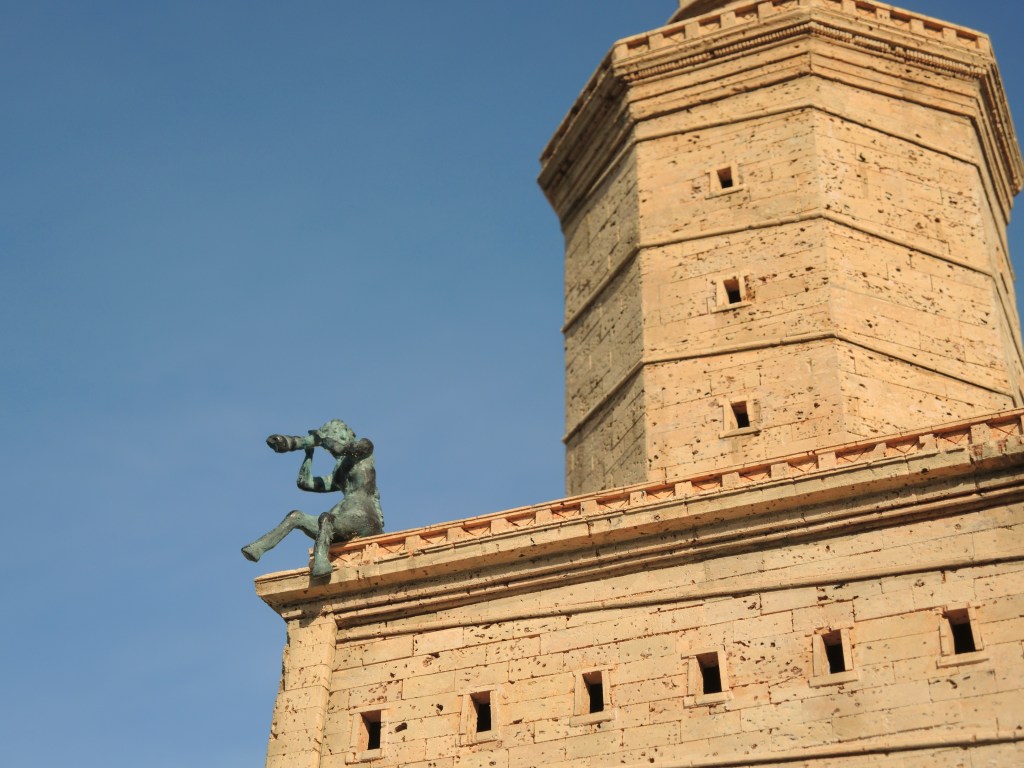
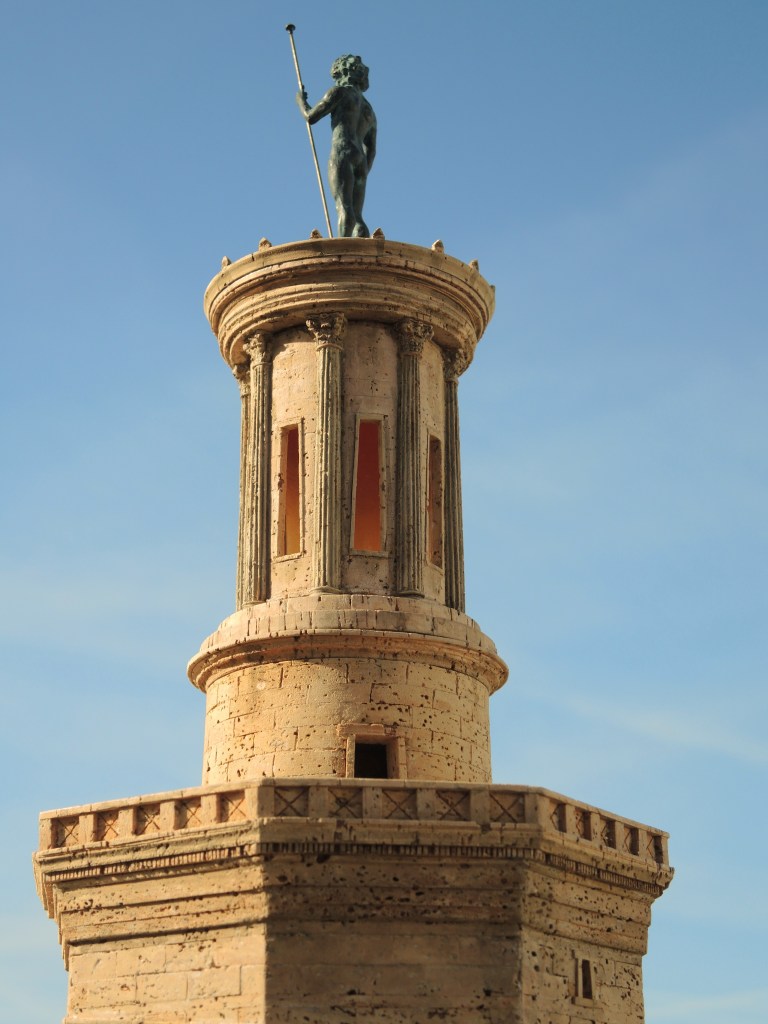

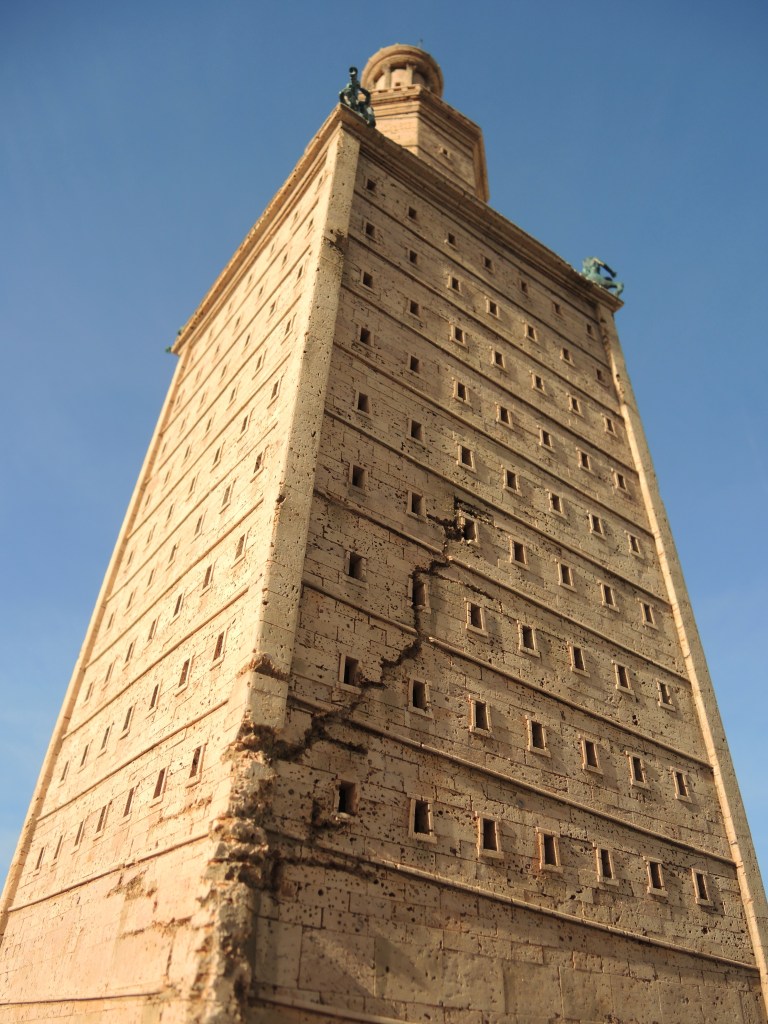
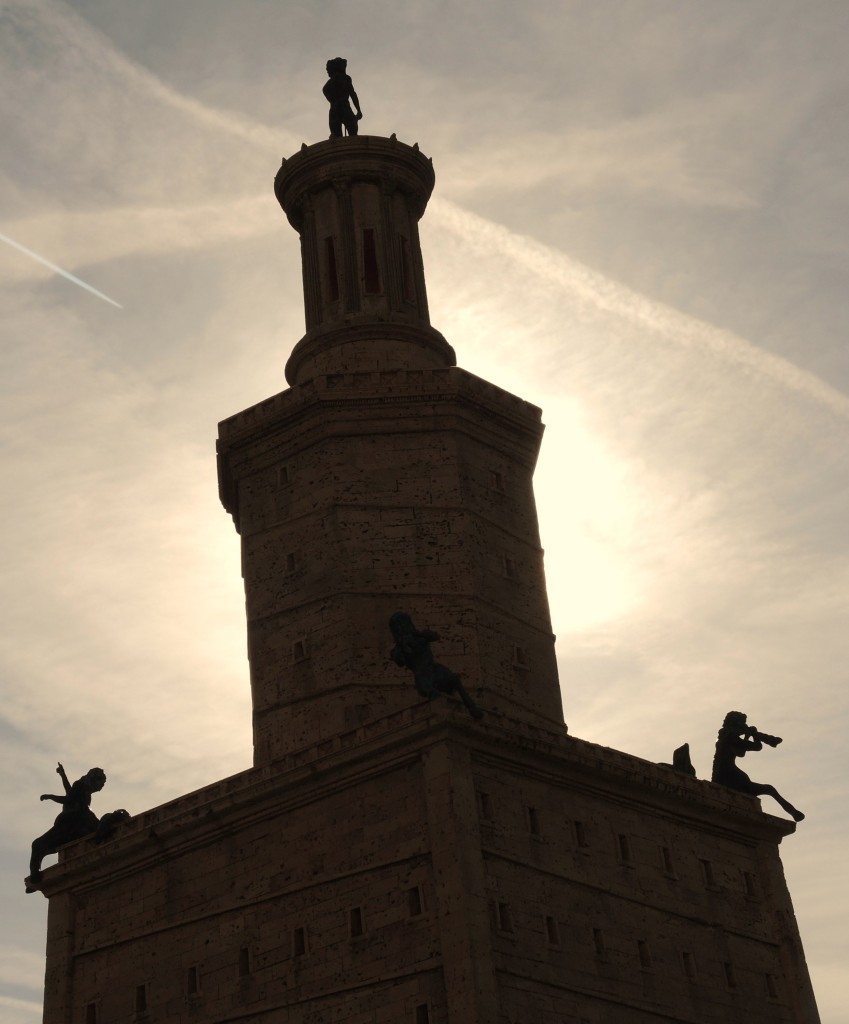
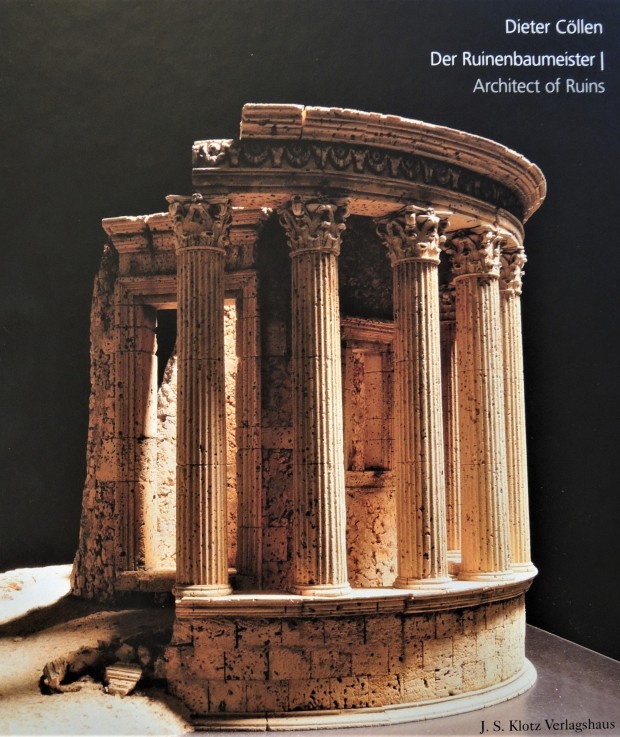
ARCHITECT OF RUINS
The current book with the cork models by Dieter Cöllen from the JEFF KLOTZ VERLAG in German and English
Why do ruins never cease to provide refreshing shade, despite of their turbulent past?
This question occupied my mind from a young age, when I was a boy searching for lizards in the cracks of ruinous walls. Fortunately, to this very day I did not receive an answer – instead, it inspired my curiosity, humbleness and dreams as well as the wish to erect a monument for these patient witnesses of deterioration.
“Quercus suber” (CORK OAK) made the realisation of these dreams literally “easy”. All the cracks, fractions and damages of stone are already inherent in the cork´s bark and invited me to uncover them.
It is a work against all reasons and custom, only focused on preserving the most authentic picture of ageing; to acquire and transmit a rare monument of undisturbed awe – because in the blink of an eye, it´s like nothing ever happened.
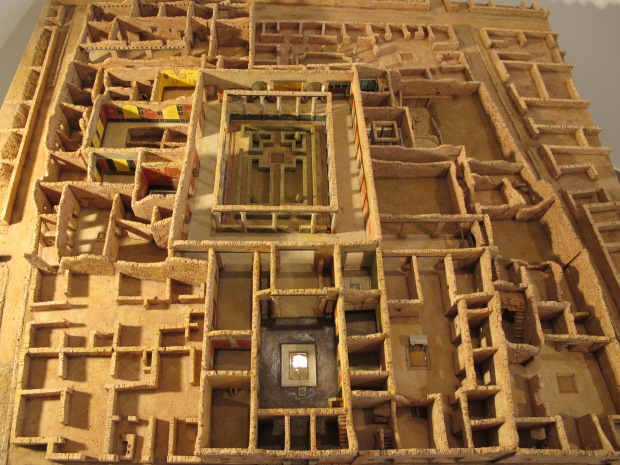
THE CITY
Ten years ago Dieter made a cork model of the „Casa del Menandro“ in Pompeii. Soon this object will be part of a spectacular exhibition at SMAC https://www.smac.sachsen.de/sonderausstellungen.html in Chemnitz …
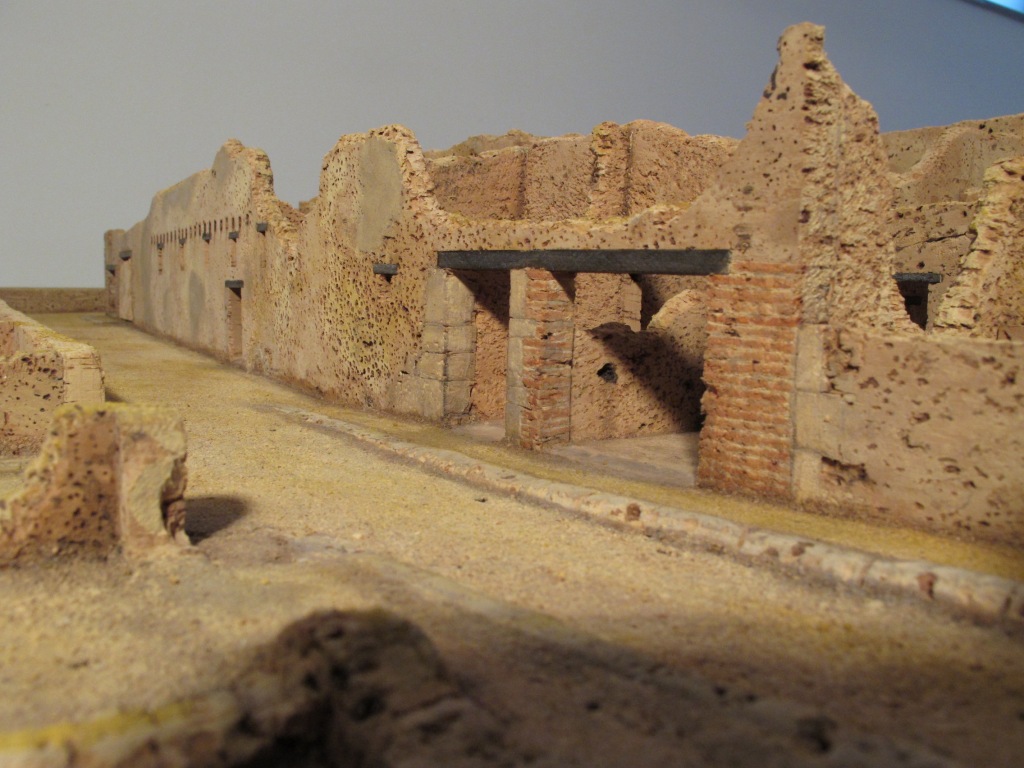
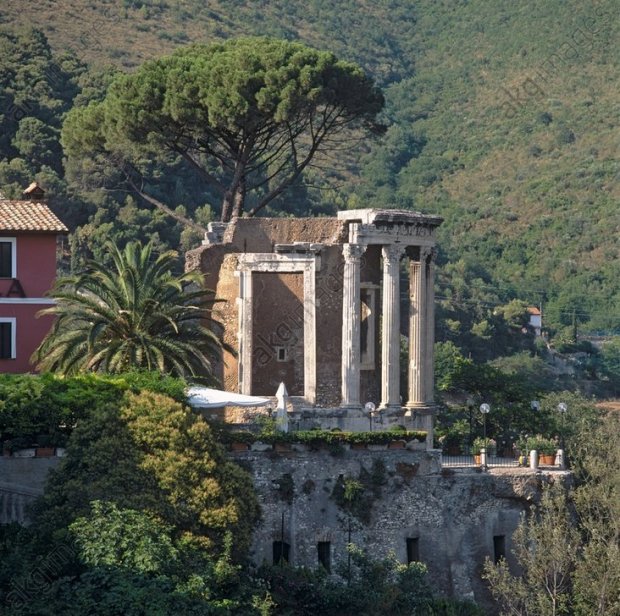
TIVOLI
The Vesta Temple in Tivoli was a must for travelers on the „Grand Tour“ in the 18th century. It was, and still is, a symbol of Romanticism in painting and architecture. Dieter and Malgorzata have tried to capture this effect in a new cork model.
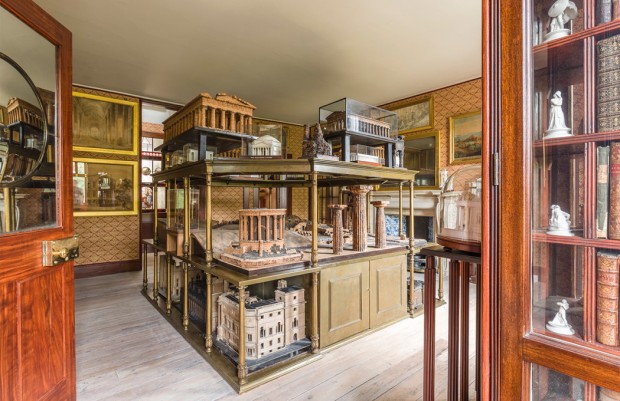
OPENING UP THE SOANE
The Sir John Soane’s Museum in London is one of the most beautiful and interesting museums in the world. Soane collected many cork models during his lifetime, which can still be admired today in a wonderful ambience. Dieter Cöllen had the honor of completing and restoring the famous „model stand“. Together with his friend Hannes Fischer and many other specialists he worked on completing Soane’s dream and living space. Here Dieter invites you to follow him at work in a VIDEO https://www.soane.org/collections/videos/creating-cork-architectural-model
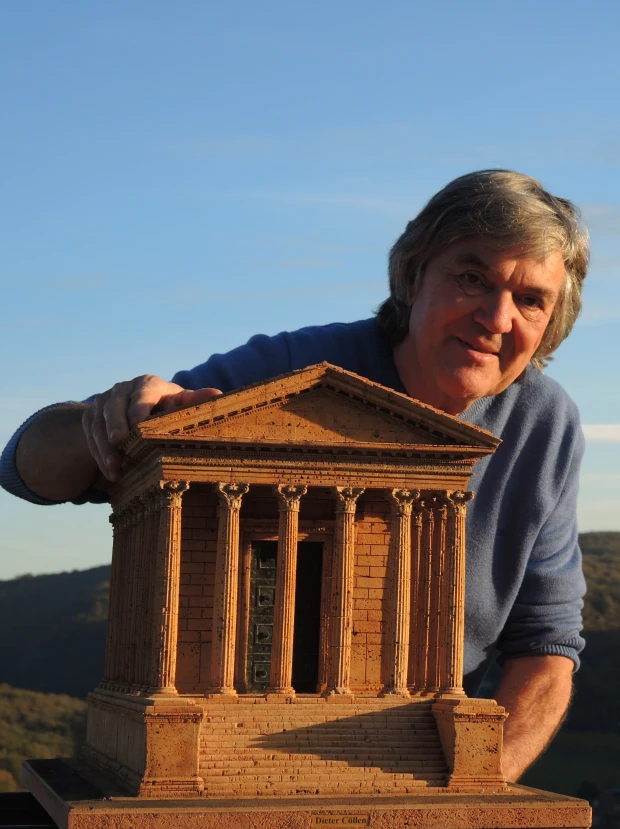
BIRTHDAY
After all parts have been fixed in place and the pigment layers have been applied, Dieter and Malgorzata photograph the cork model in optimal daylight. The southern French evening sun, which brings the object to life in warm tones, is ideal for this purpose …
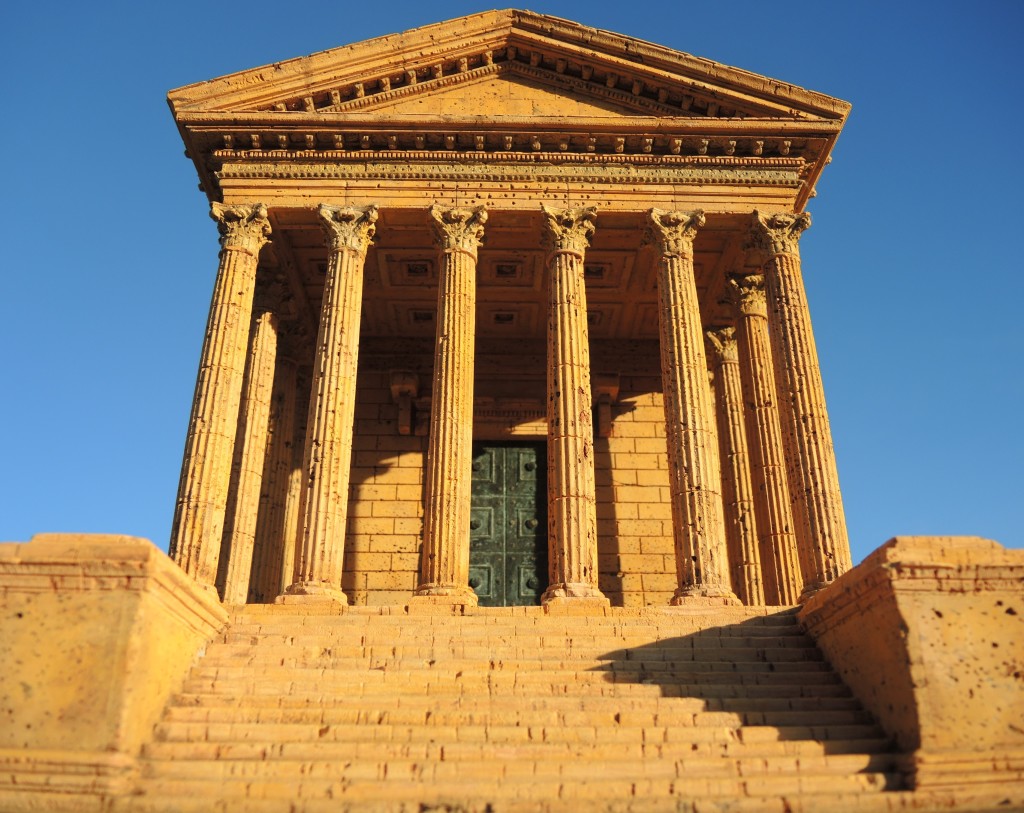
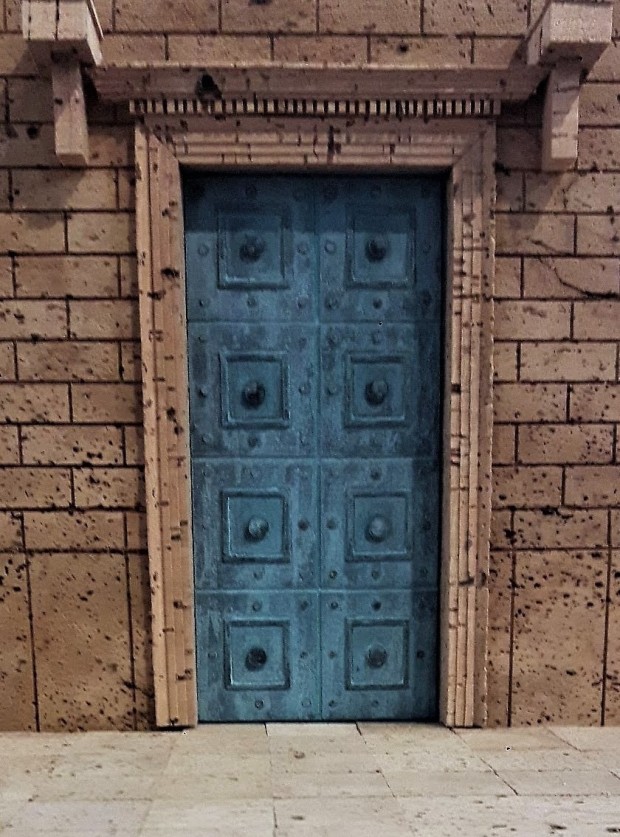
HEAVENS GATE
The cella is the sanctuary of the temple and was only accessible to the priests through a more than 6m high bronze portal. Dieter and Malgorzata try to reproduce the effect of this monumental entrance as precisely as possible. They do the same with the roof tiles…

STRAIGHT UP
The pillars of the temple are the supporting elements of its architecture. It takes a lot of time and precision to manufacture. Dieter and Malgorzata therefore work with the greatest care and patience…

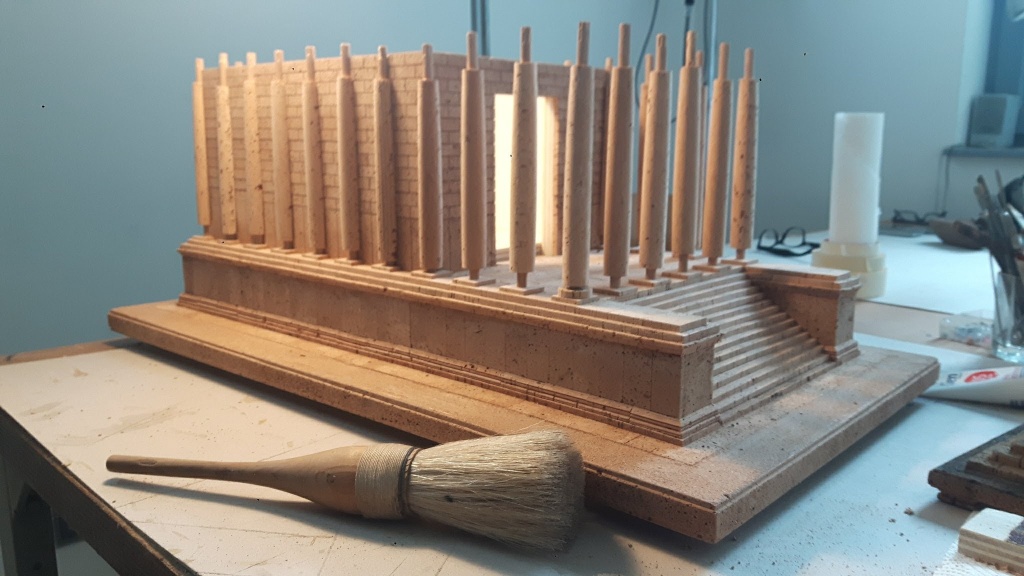

WORKING OPEN AIR
Dieter and Malgorzata work on the columns in the warm French daylight of the Cahors region. A very meditative work …
Meditative work
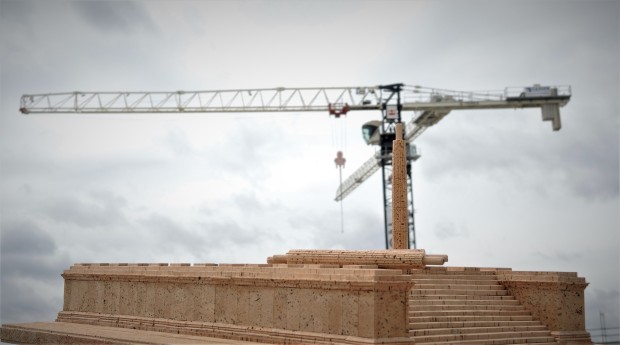
MAISON CARRÉE UNDER CONSTRUCTION
https://de.wikipedia.org/wiki/Maison_Carr%C3%A9e
A new project is on the way to be realized. After Dieter has visited thewonderfully restored temple in Nimes, he starts building the cork model according to precise plans of the famous monument.
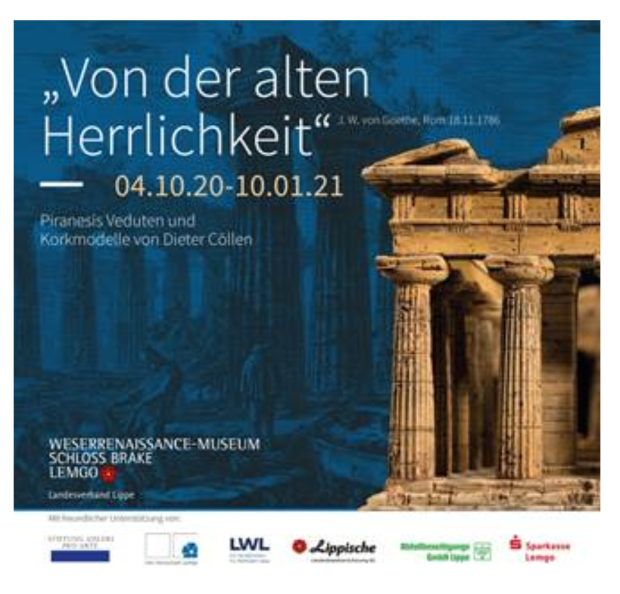
LIVING FOR BEAUTY
A new exhibit comes along at the https://museum-schloss-brake.de/sonderausstellung/ WESERRENAISSANCE-MUSEUM Schloss Brake / Lemgo, showing cork models of Dieter Cöllen beside the famous work of GIOVANNI BATTISTA PIRANESI
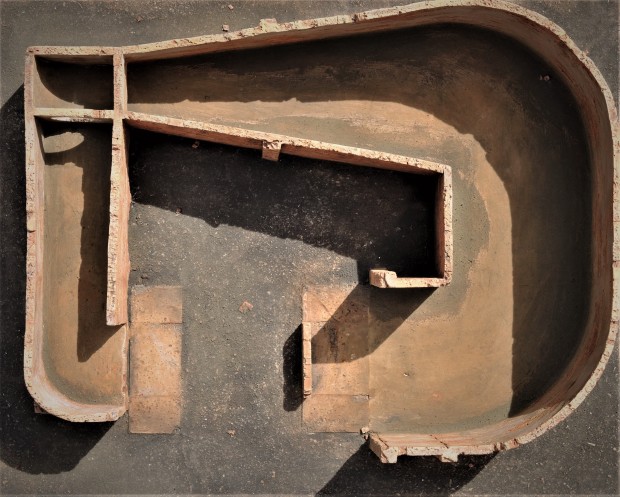
WAITING FOR A FRESH BREEZE
After Dieter has finished working on the cork model, 5000 bricks are waiting for a fresh breeze…
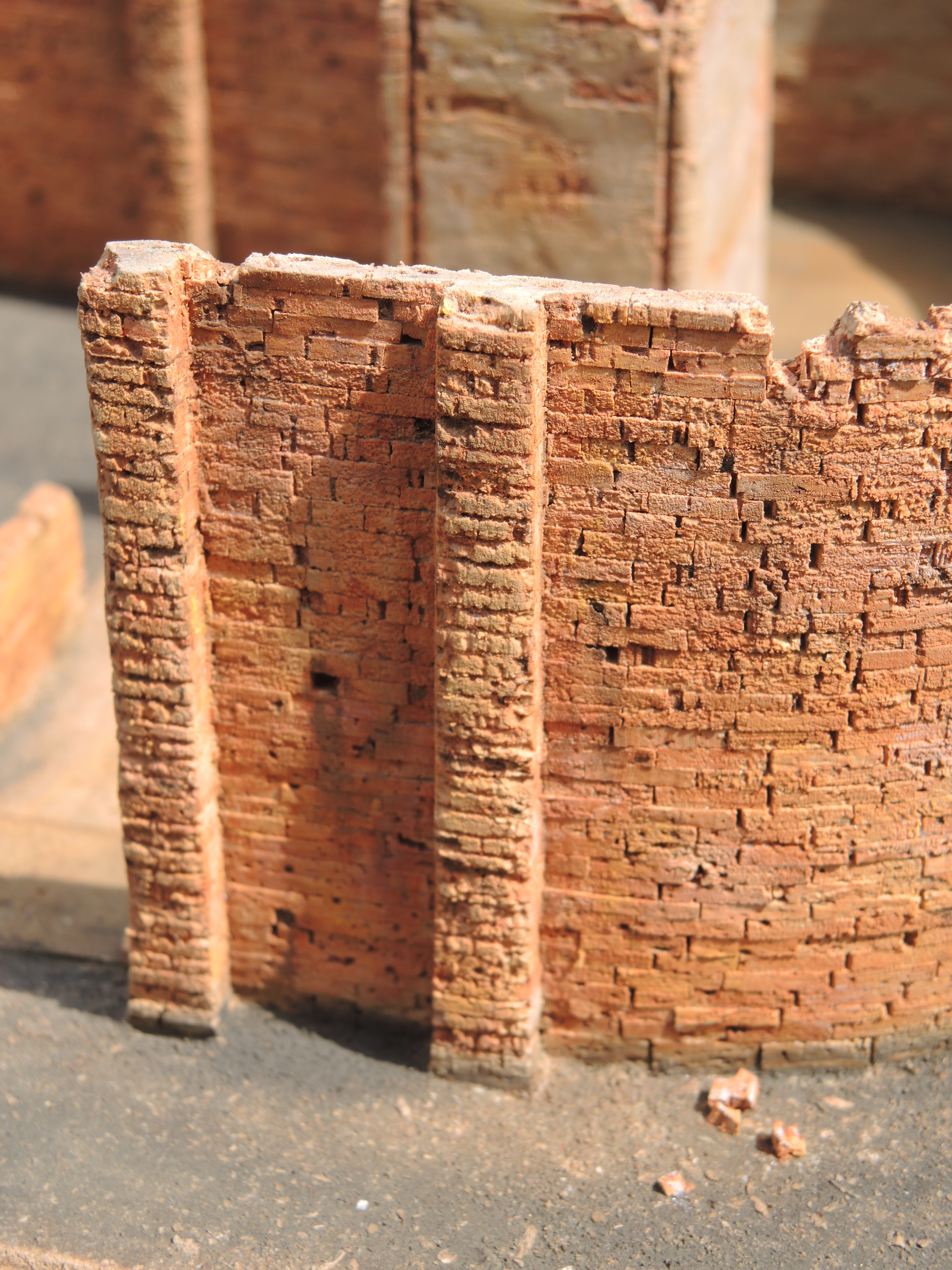
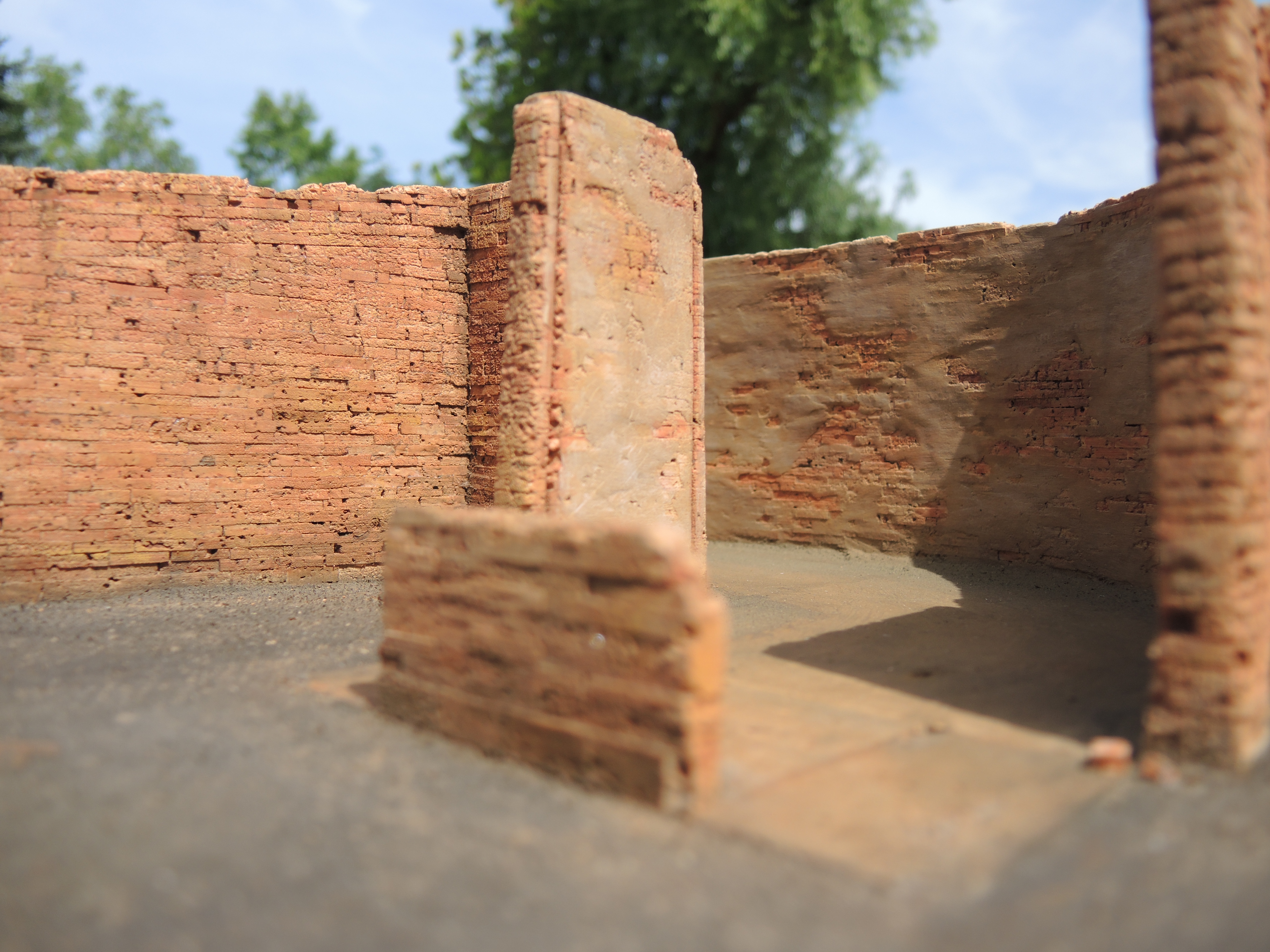
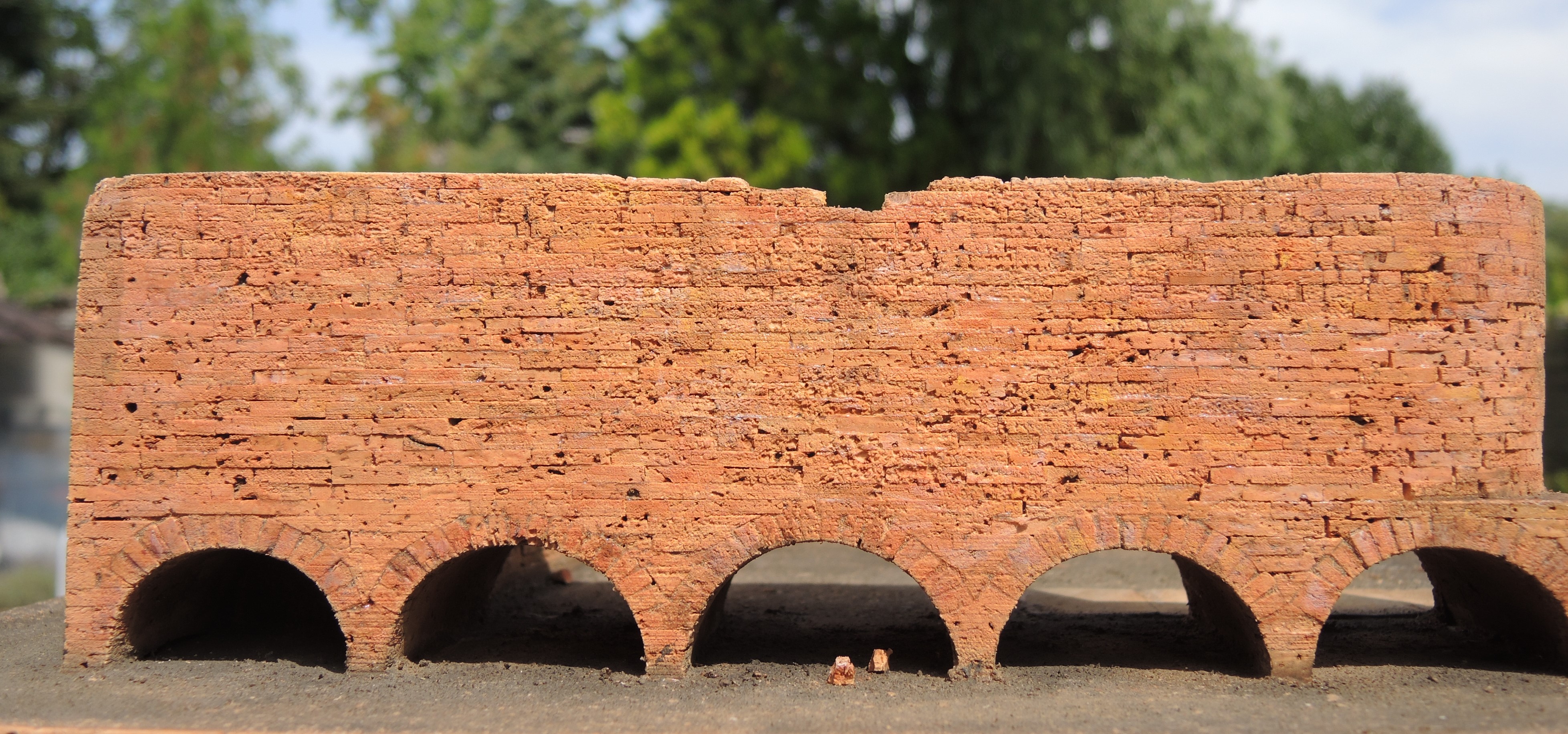
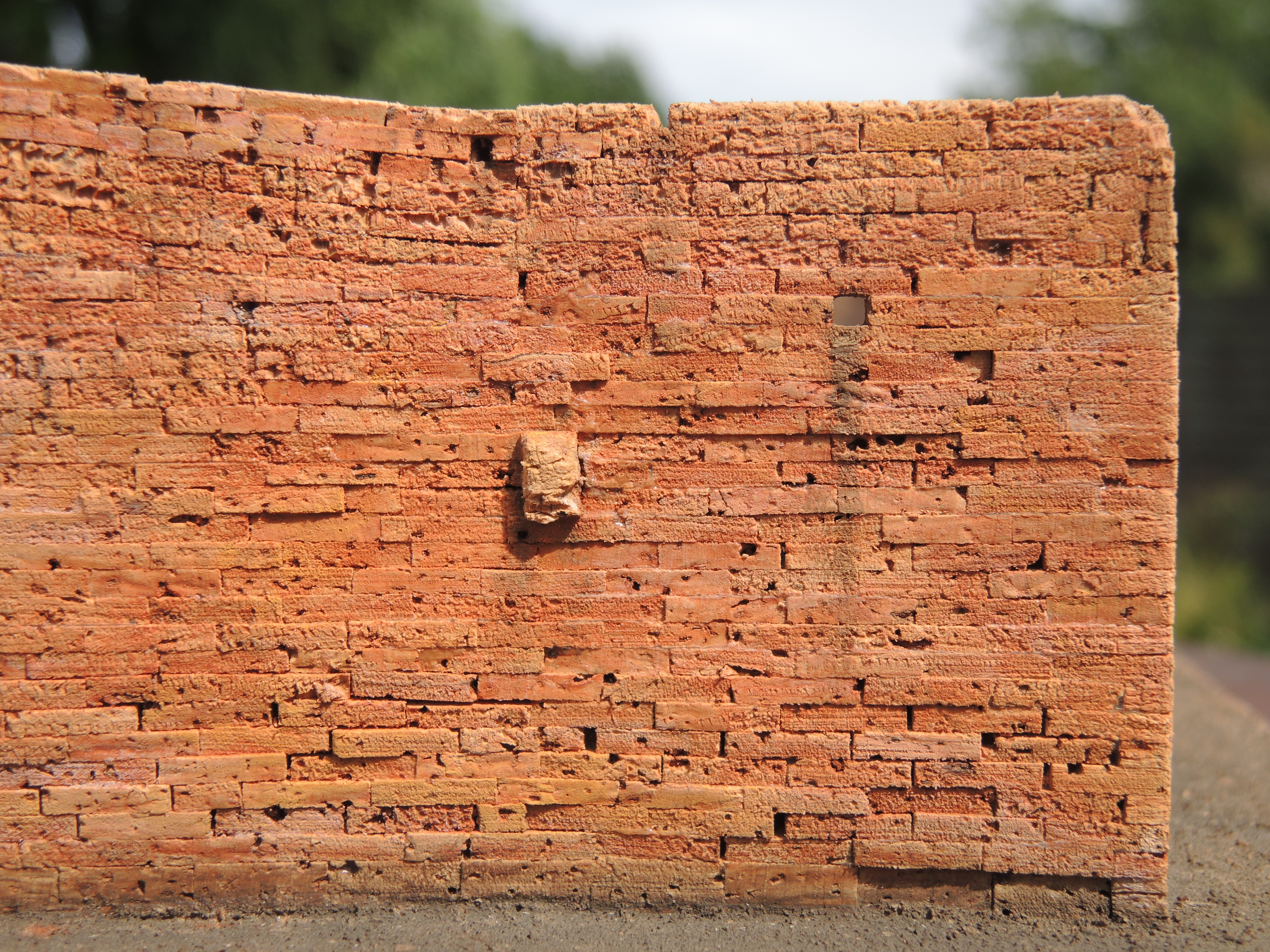
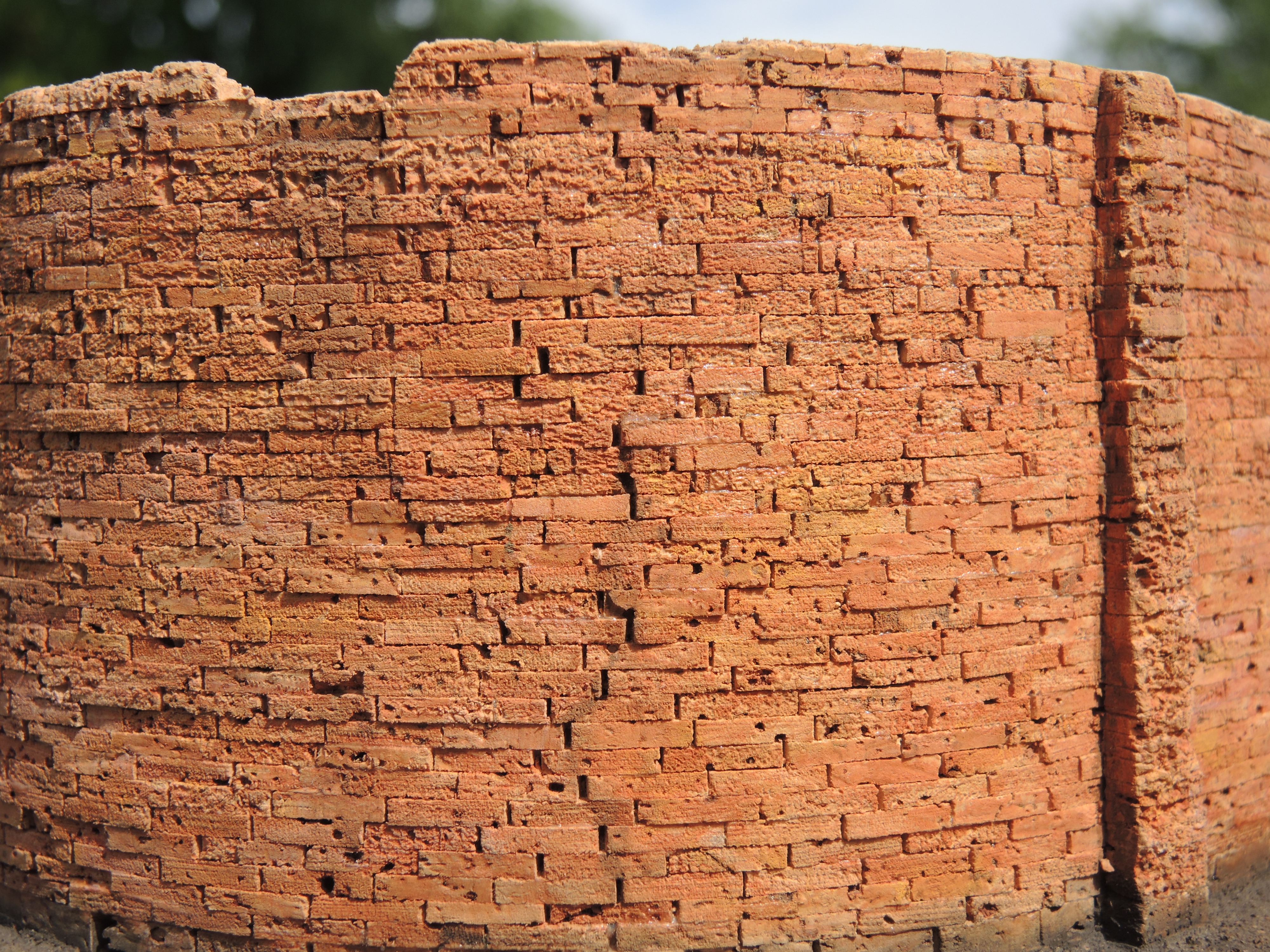
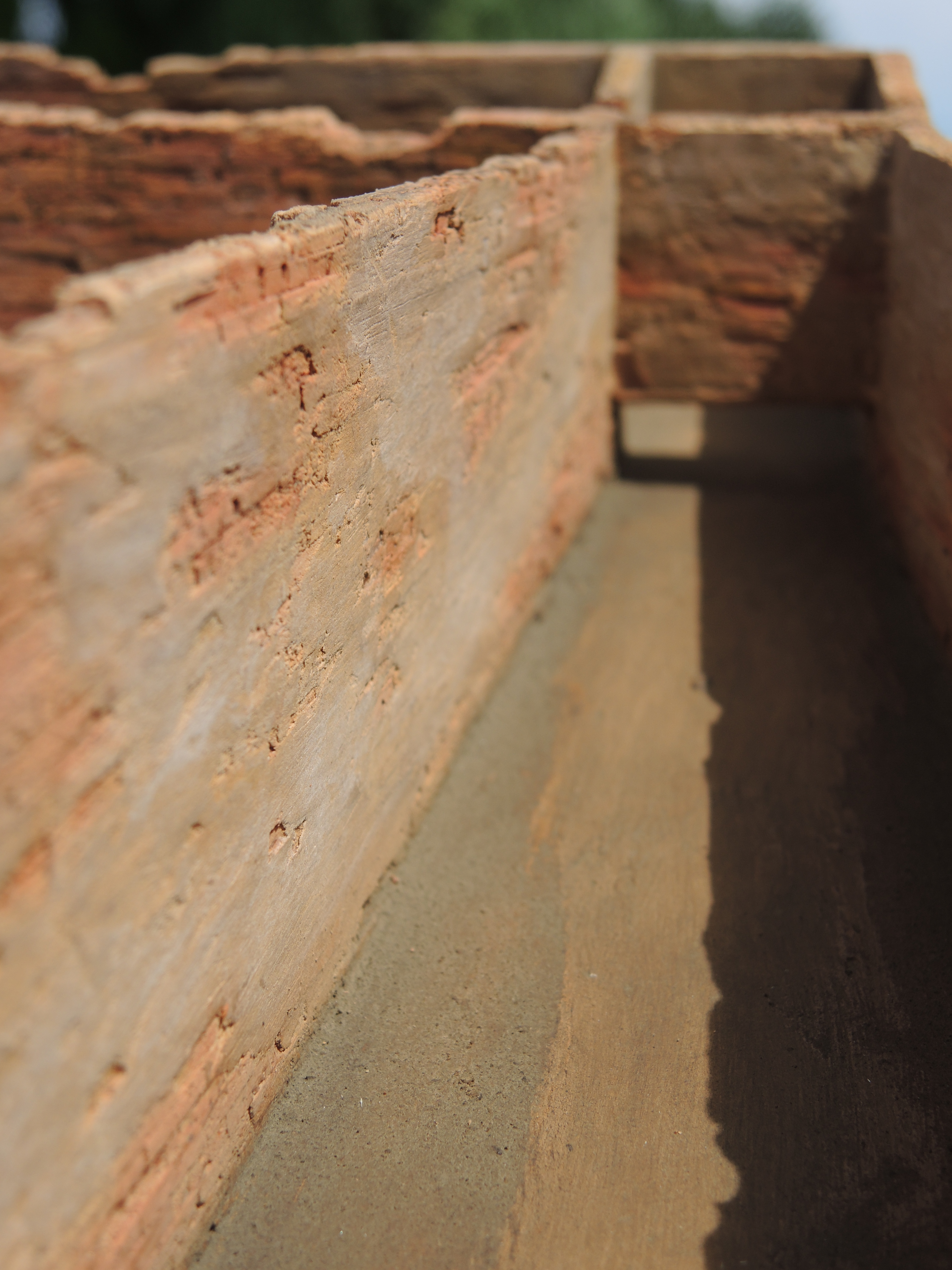
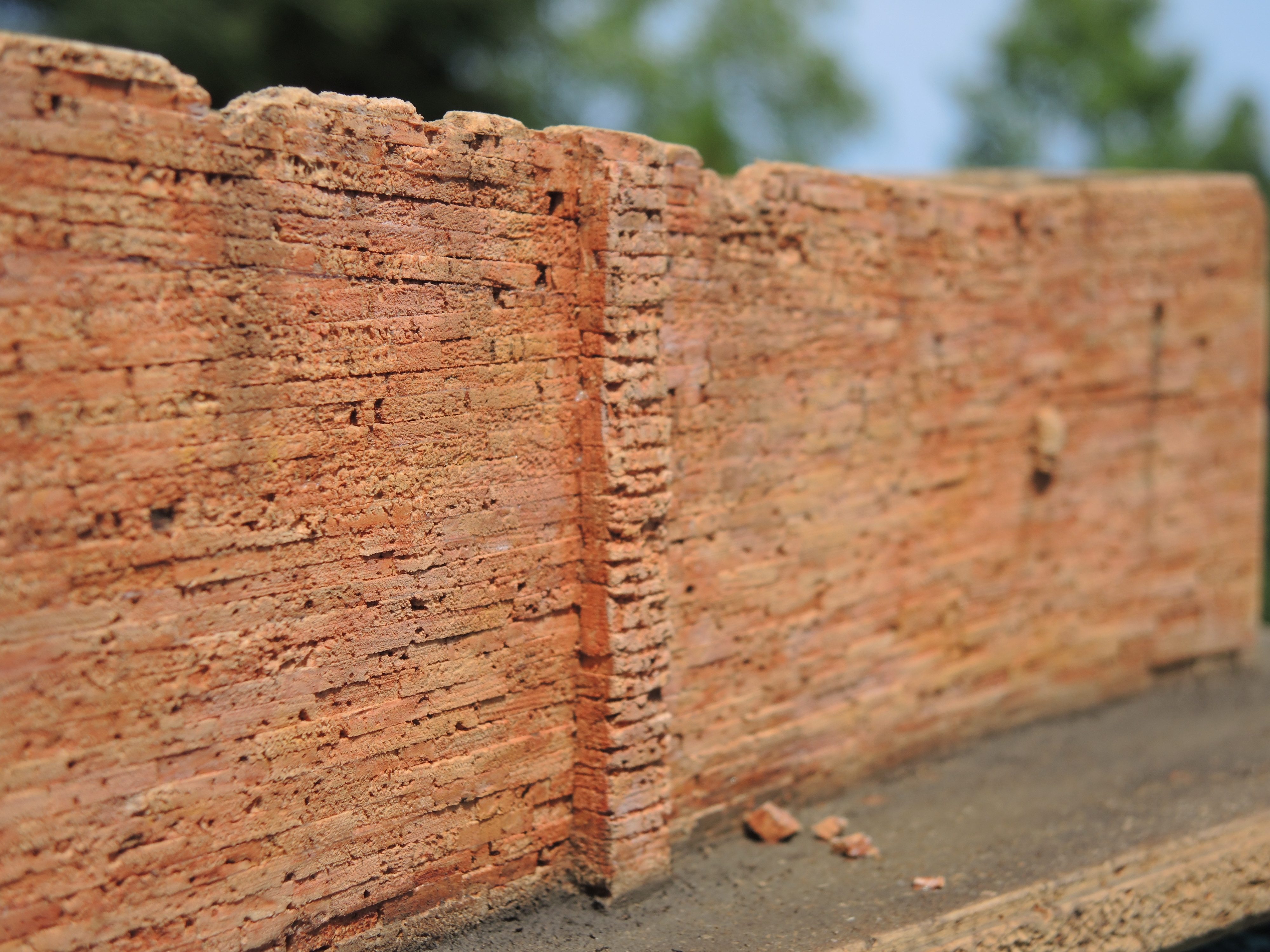
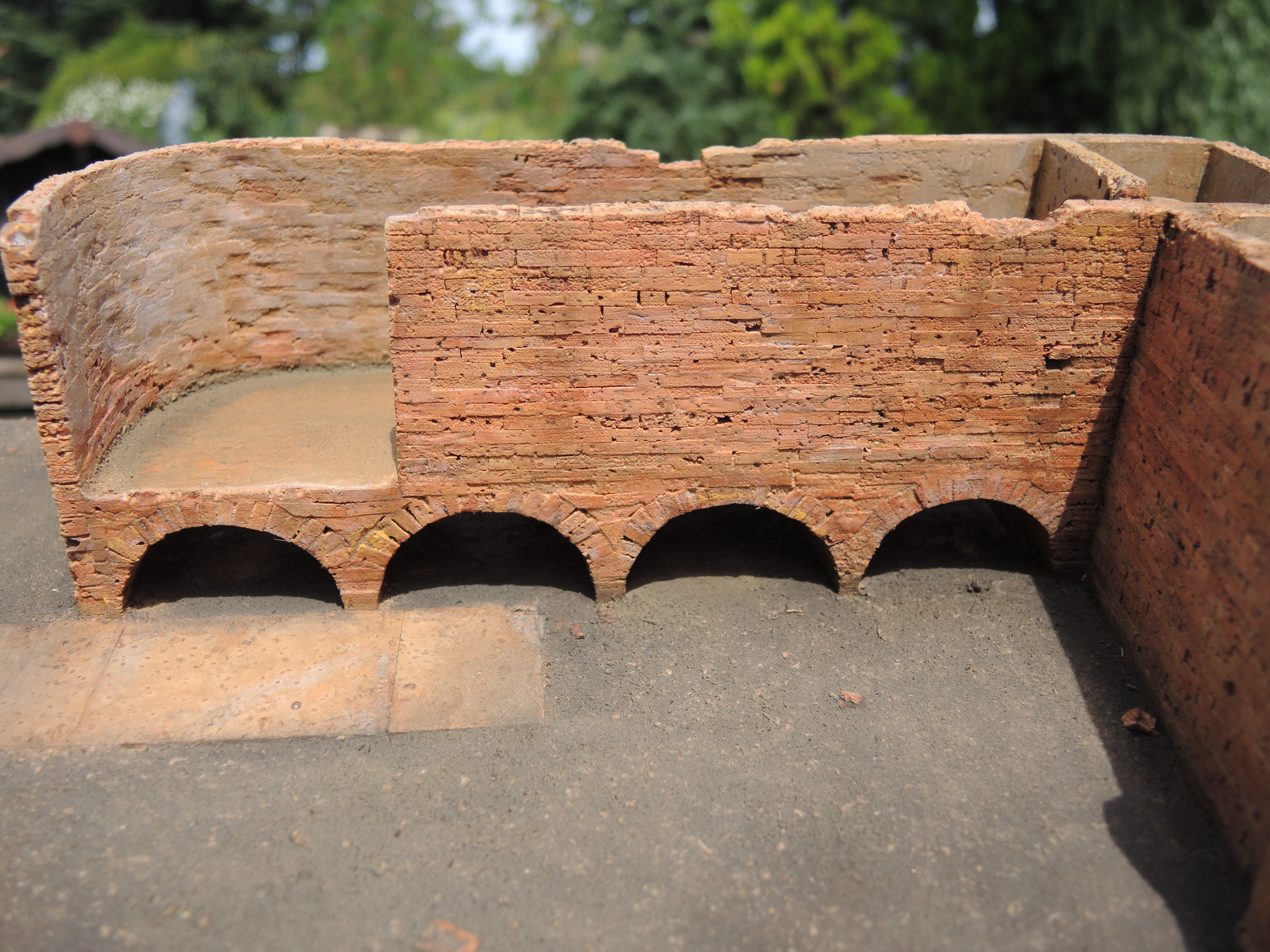
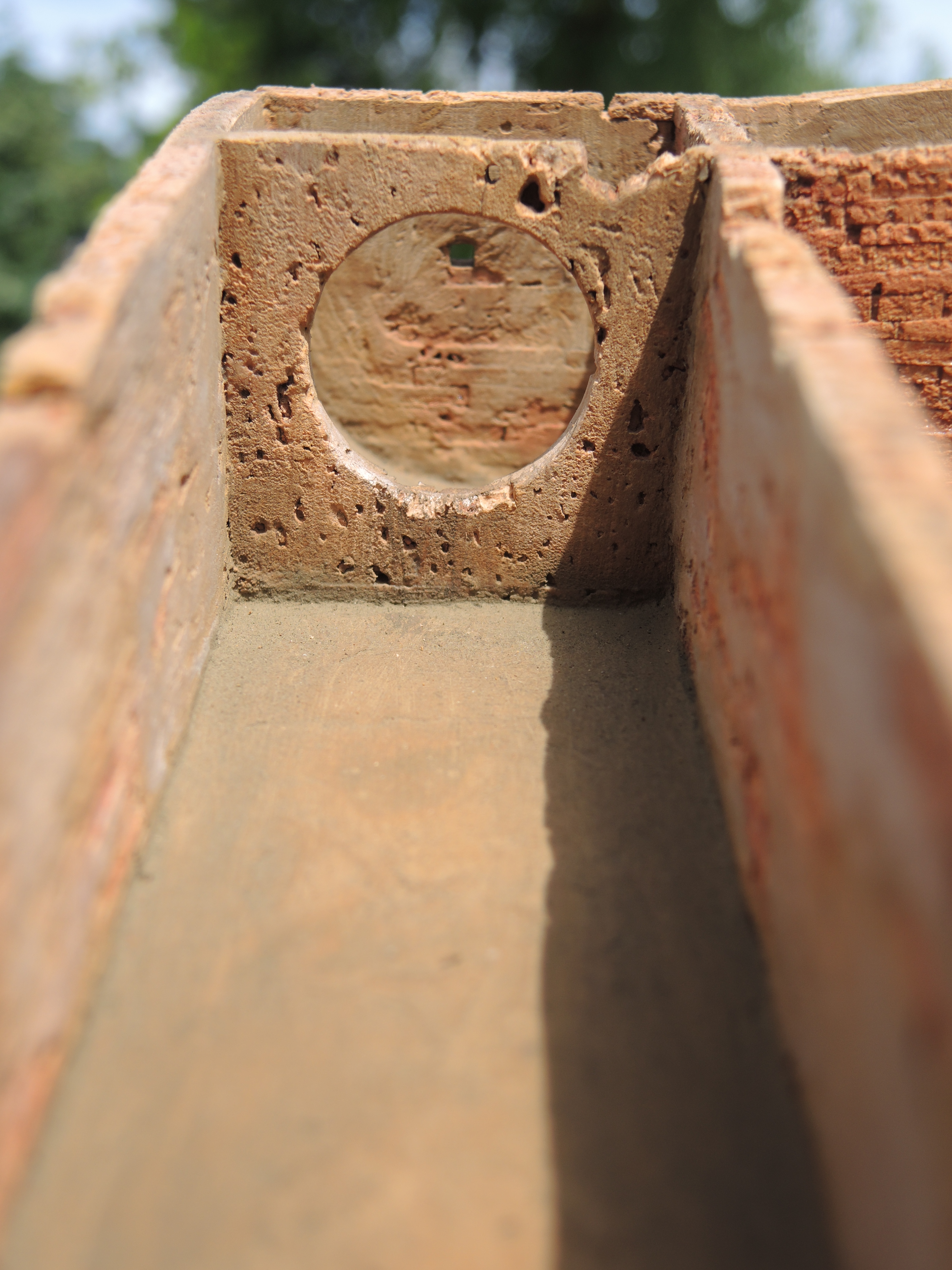
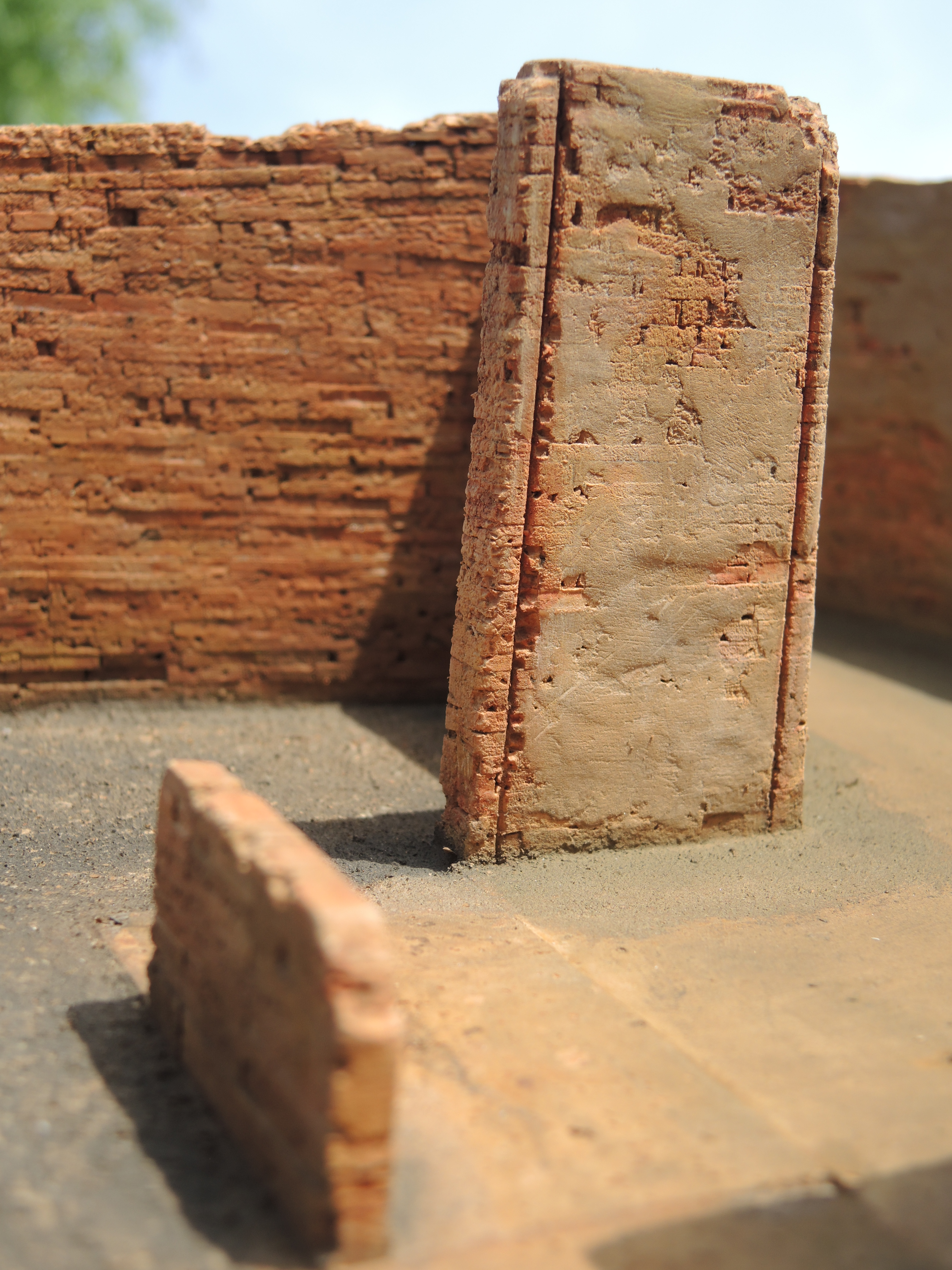
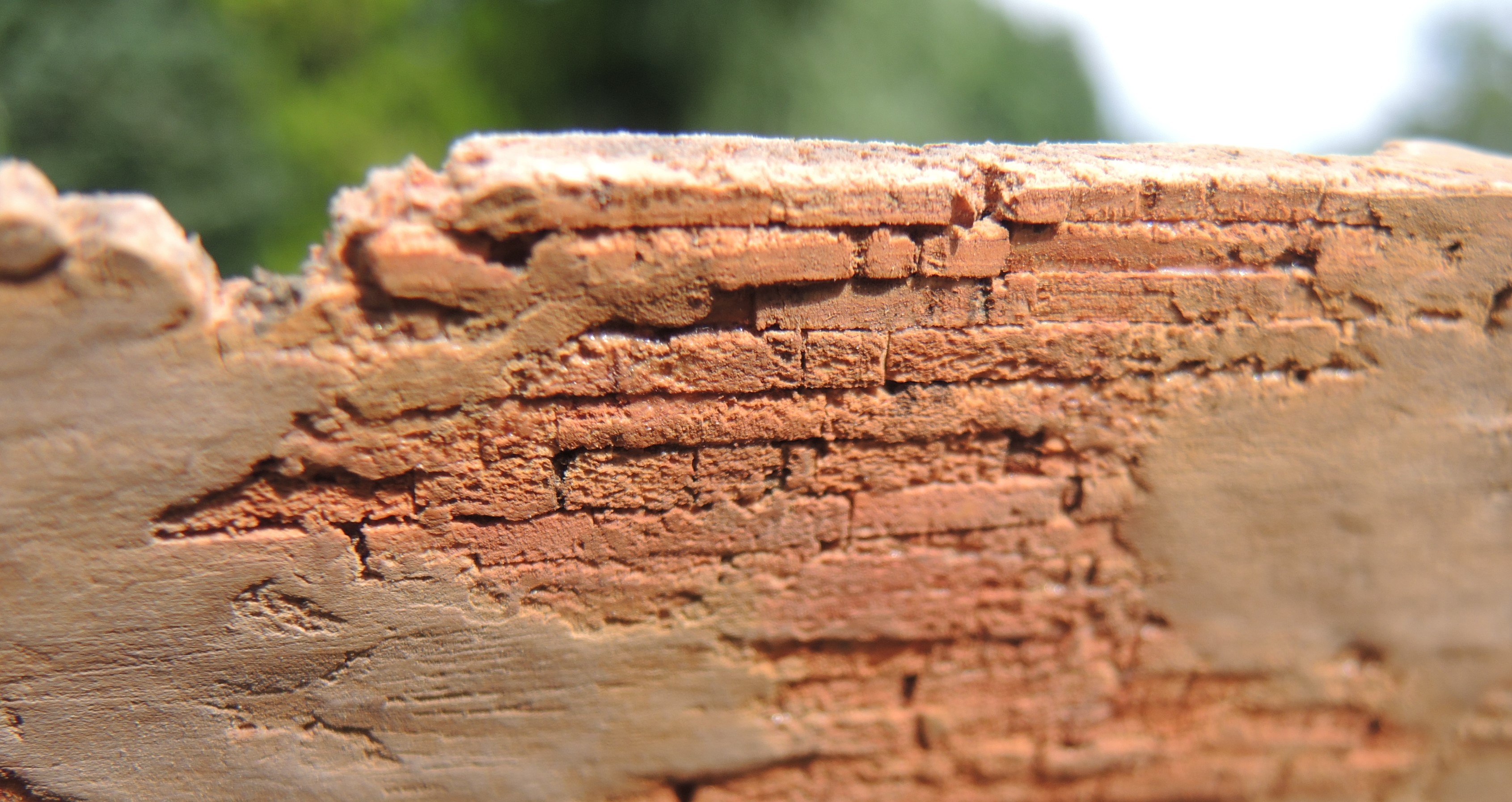
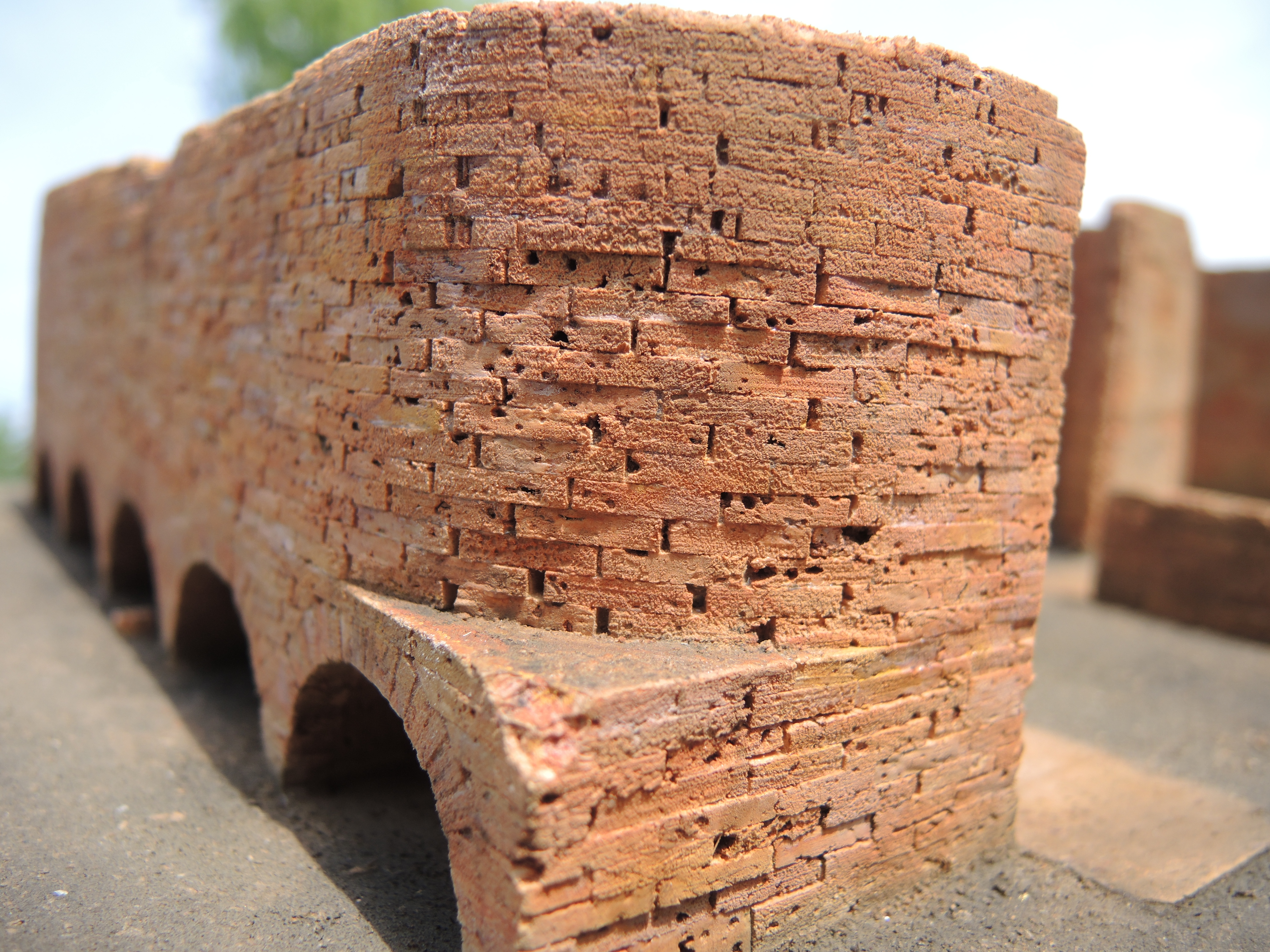
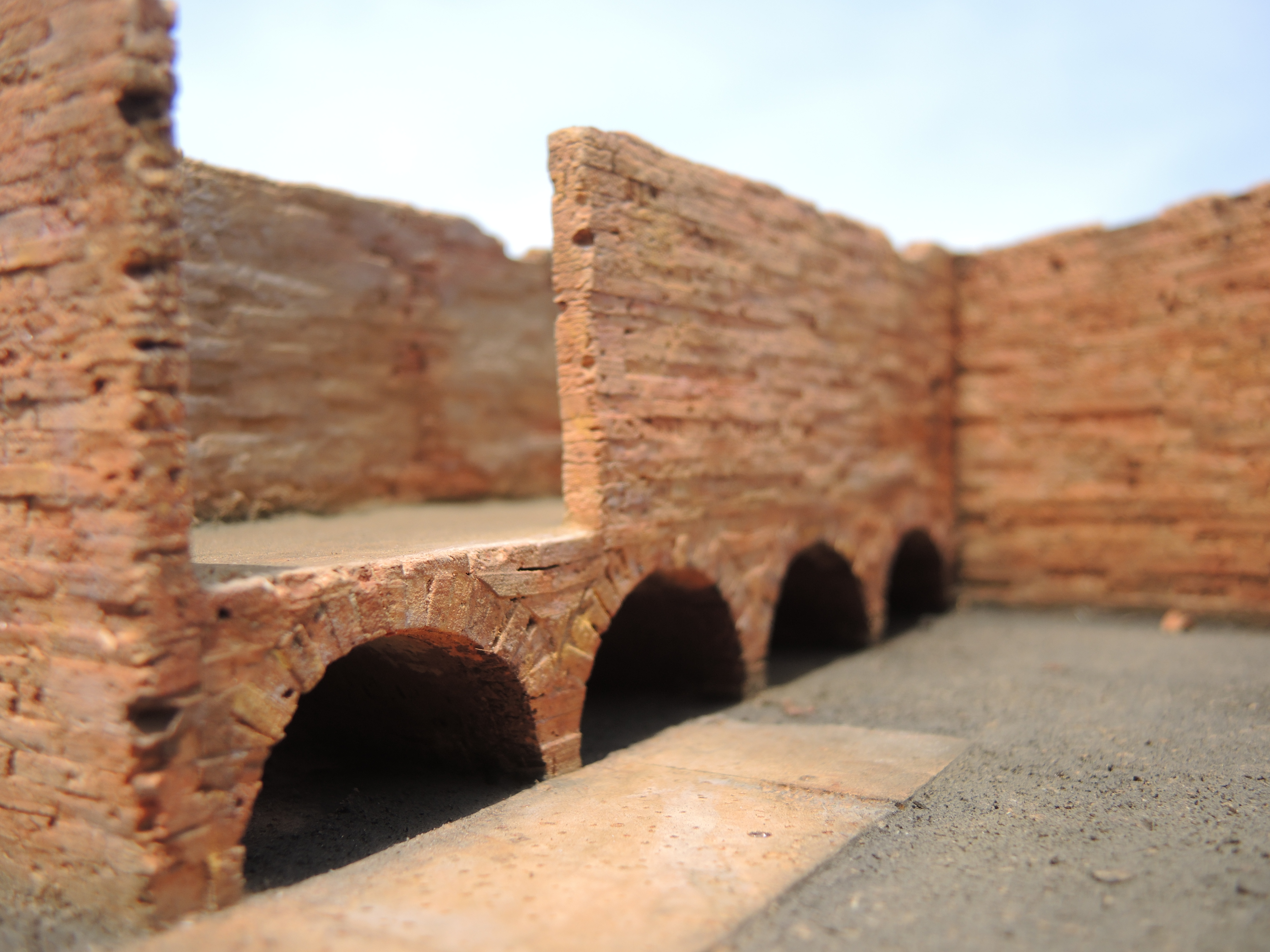
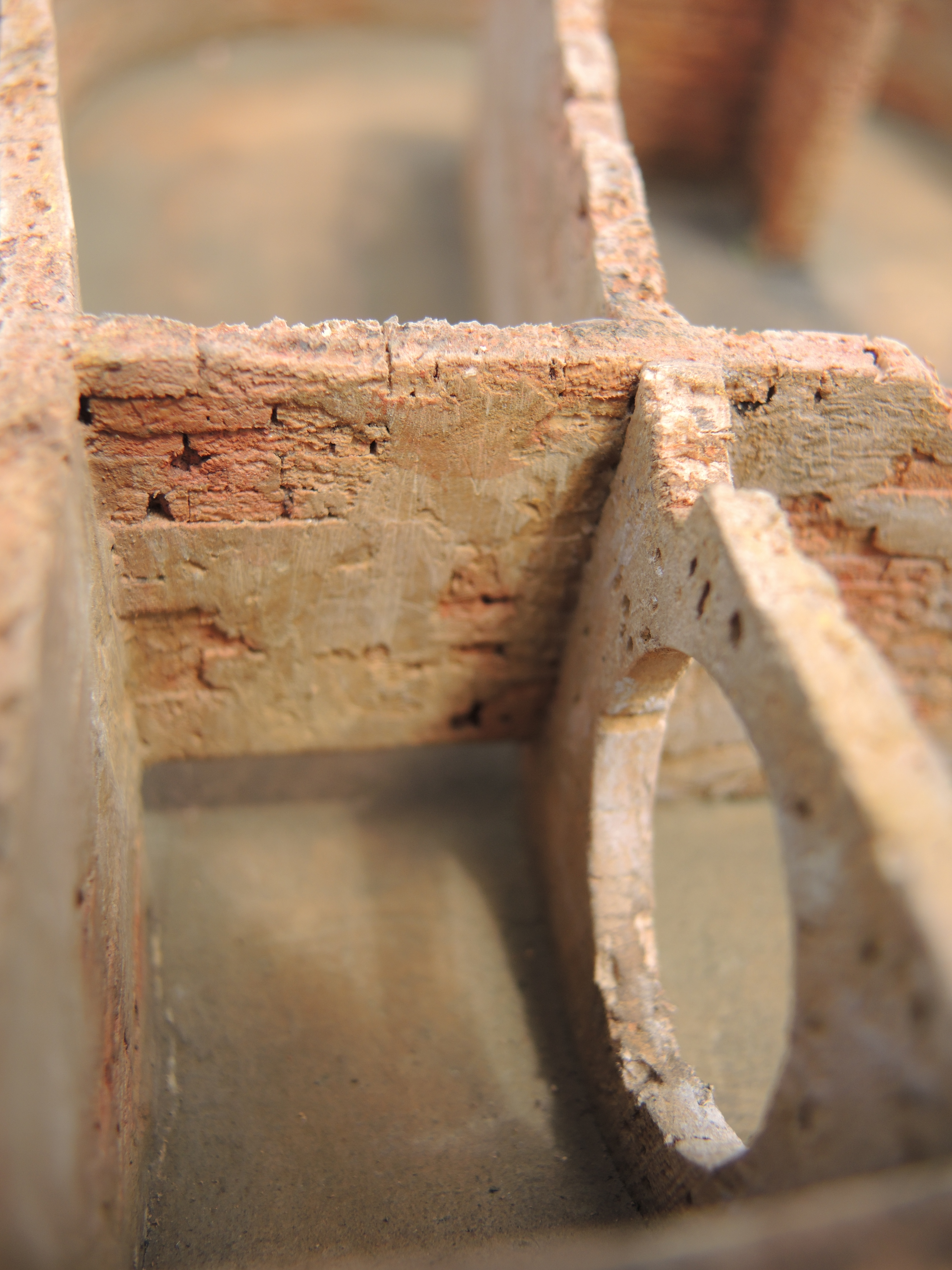
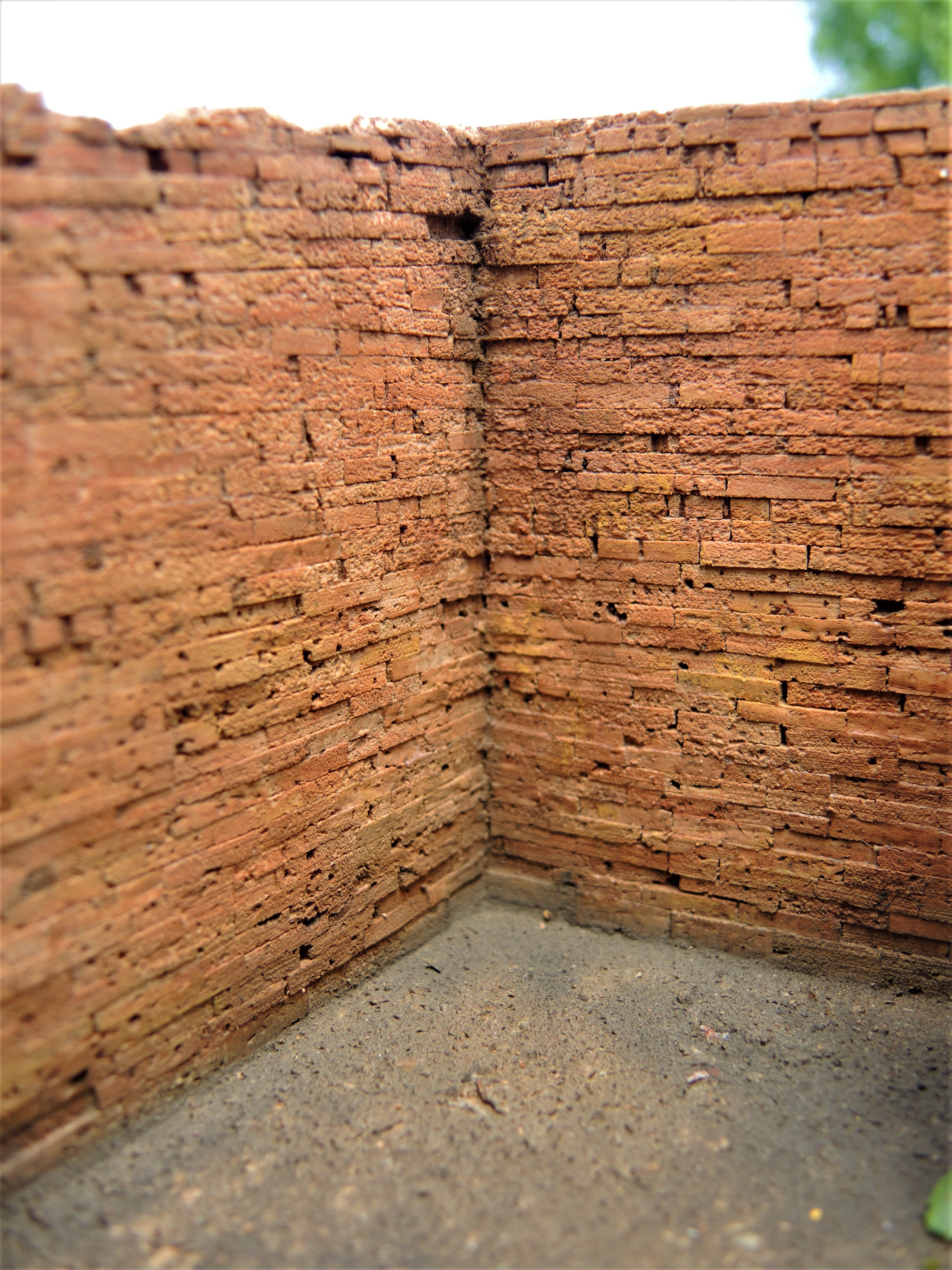
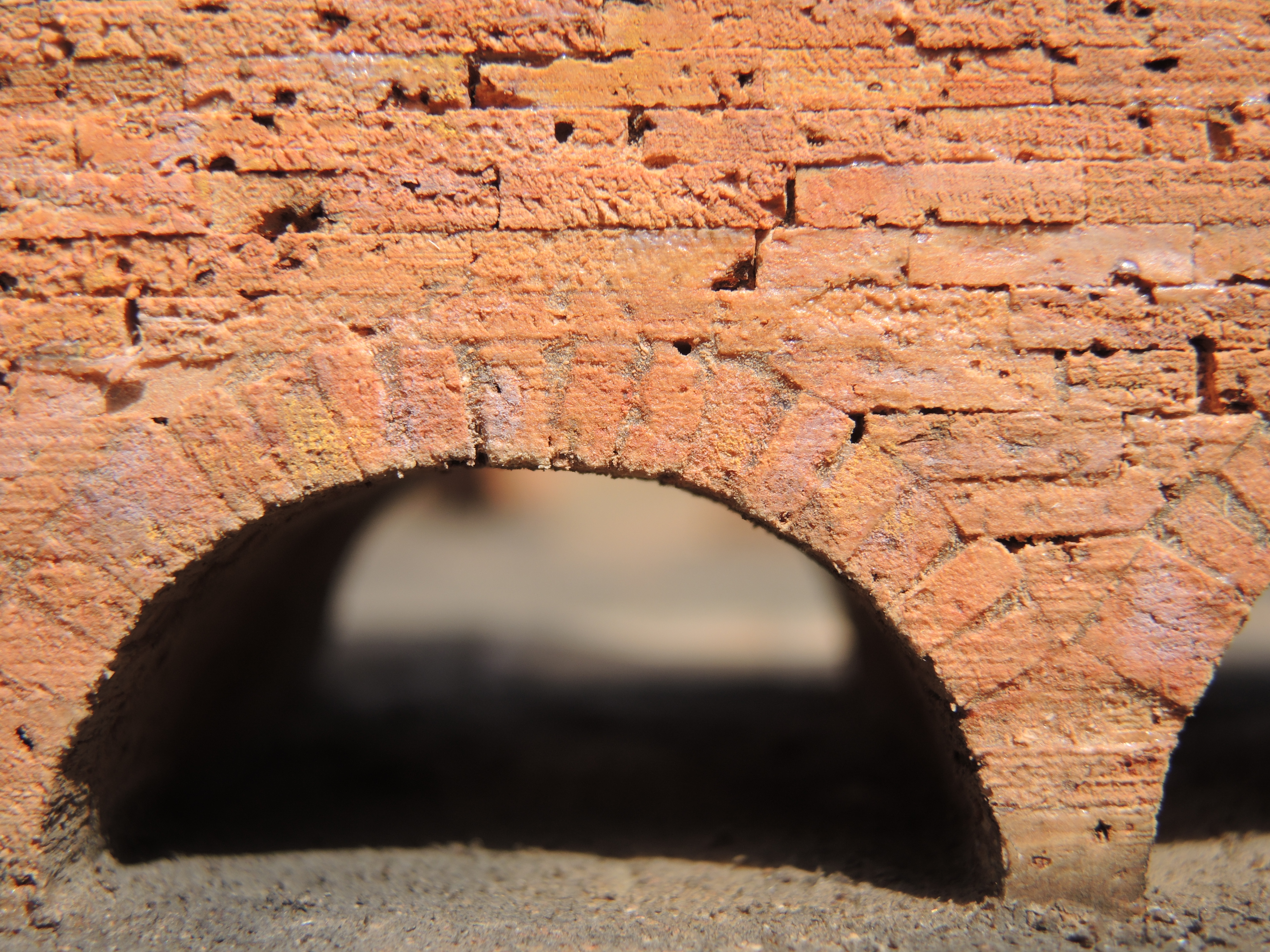
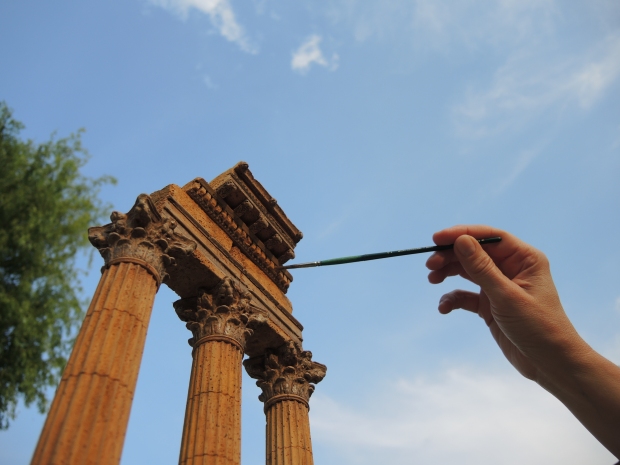
MAKE UP
After putting all parts together, Dieter and Malgorzata apply natural pigments, just as the old masters did …

AERODUCT
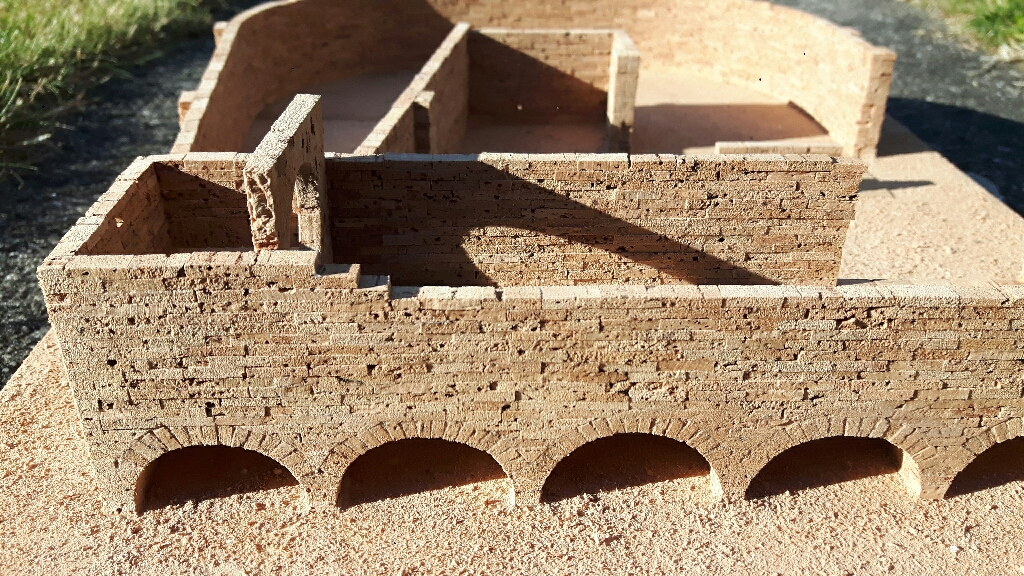 Next to it Dieter builds another cork model of an antique aeroduct. The first visualization is created in collaboration with Florian Dombois…
Next to it Dieter builds another cork model of an antique aeroduct. The first visualization is created in collaboration with Florian Dombois…
AERODUCT
The ancient Romans are known for their viaducts, pathways, and aqueducts, watercourses, with which they directed and shaped spring water over many kilometres and led it into their cities. Similarly, aeroducts direct and shape the wind, while at the same time guiding it in a circle to study its behaviour. In aeroducts, phenomena such as thought resistance or torsional wind can be simulated and understood in order to, for example, optimise ventilation or underfloor heating in houses. The research facility is also suitable for extended contexts when, in urbanism (cf. Vitruvius‘ „10 Books of Architecture“), attempts are made to improve the human climate by intelligently setting building volumes and creating spaces in between. Today these facilities are called wind tunnels.
In the attached photos, an excavation site of such an aeroduct is reconstructed according to drawings by the artist Florian Dombois. Dombois himself runs a wind tunnel laboratory on the roof of the Zurich University of the Arts AERODUCT and realized, among other things, a wind tunnel for the Research Pavilion in Venice from found building materials from the lagoon. For the Day of the Monument in September 2020, he will realize an aeroduct as a 1:1 model made of mudbricks in Allschwil, Switzerland, together with Martin Burr and the Fachwerk Association.
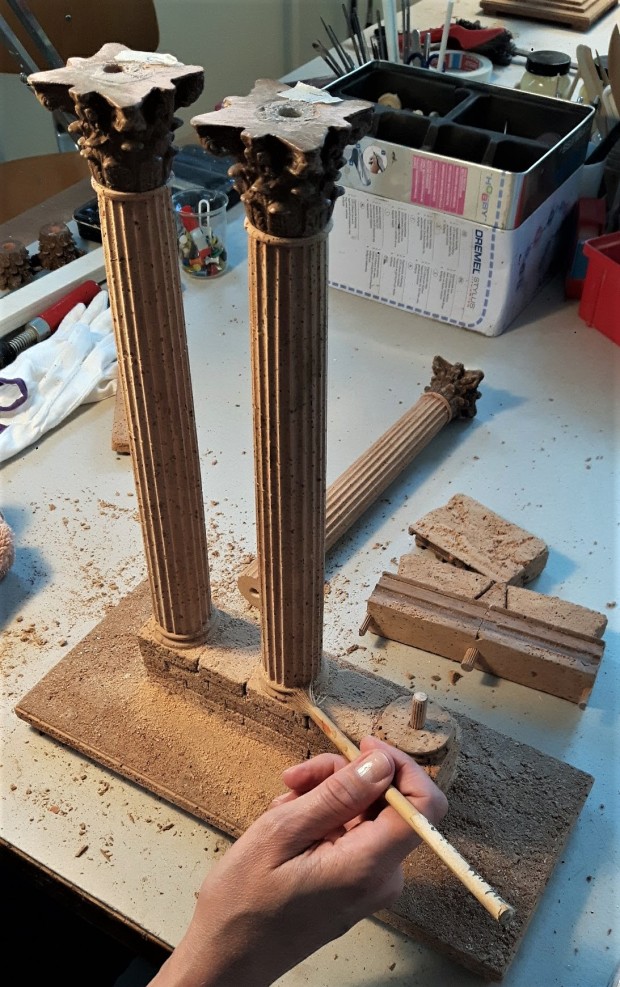
BUILDING UP
After the columns have been finished Dieter and Malgorzata start modeling the architrave and its details…
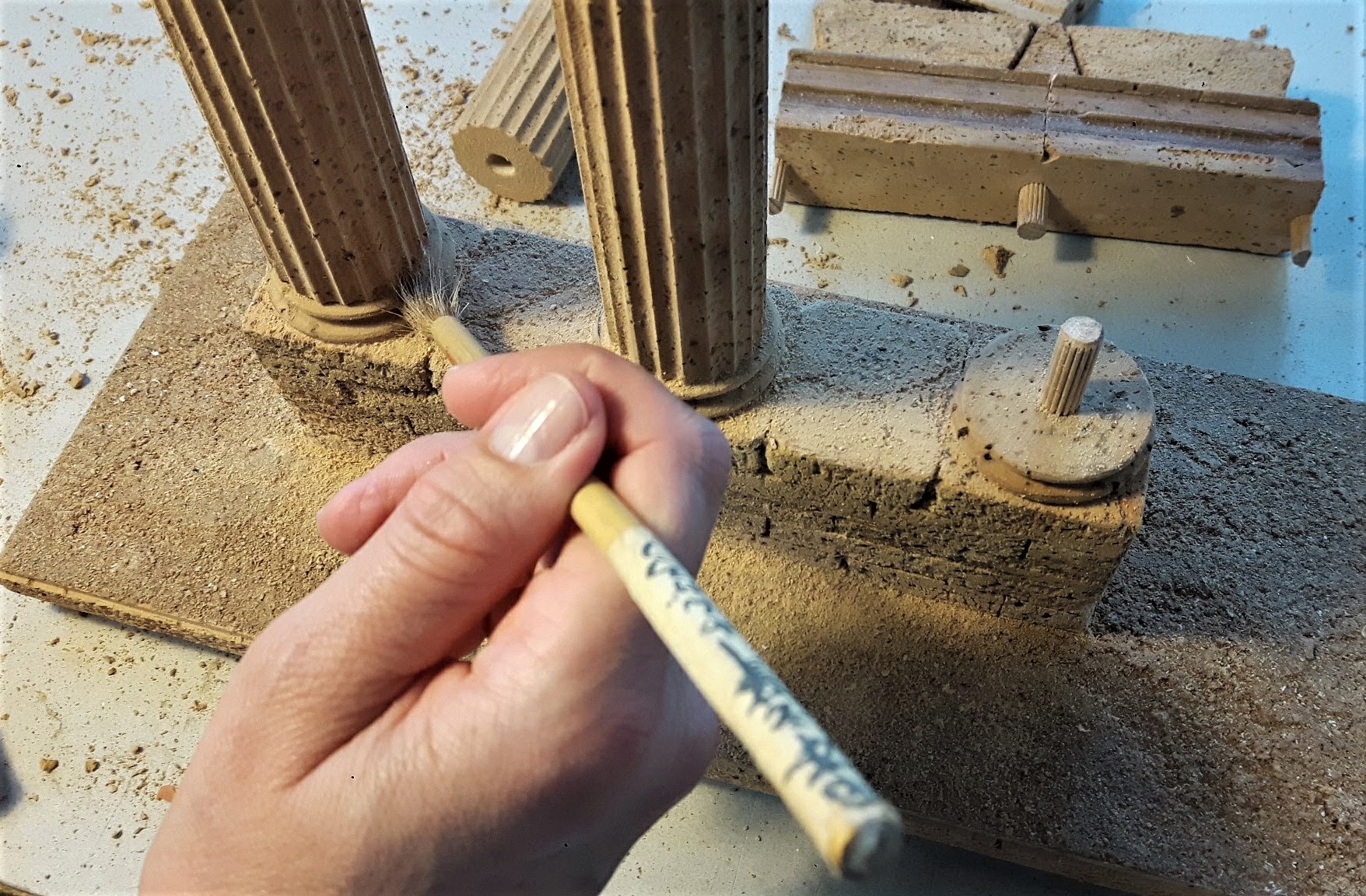
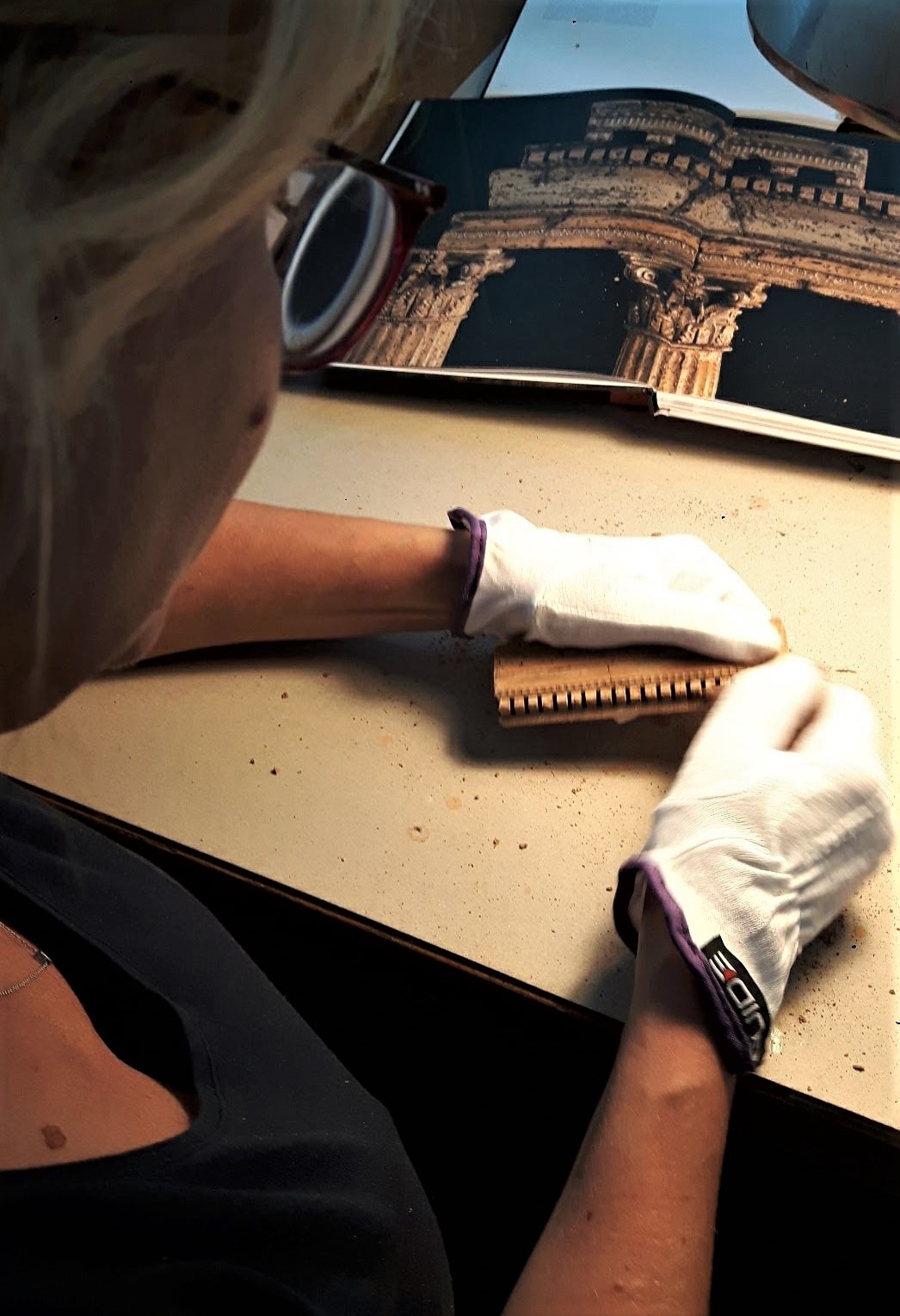
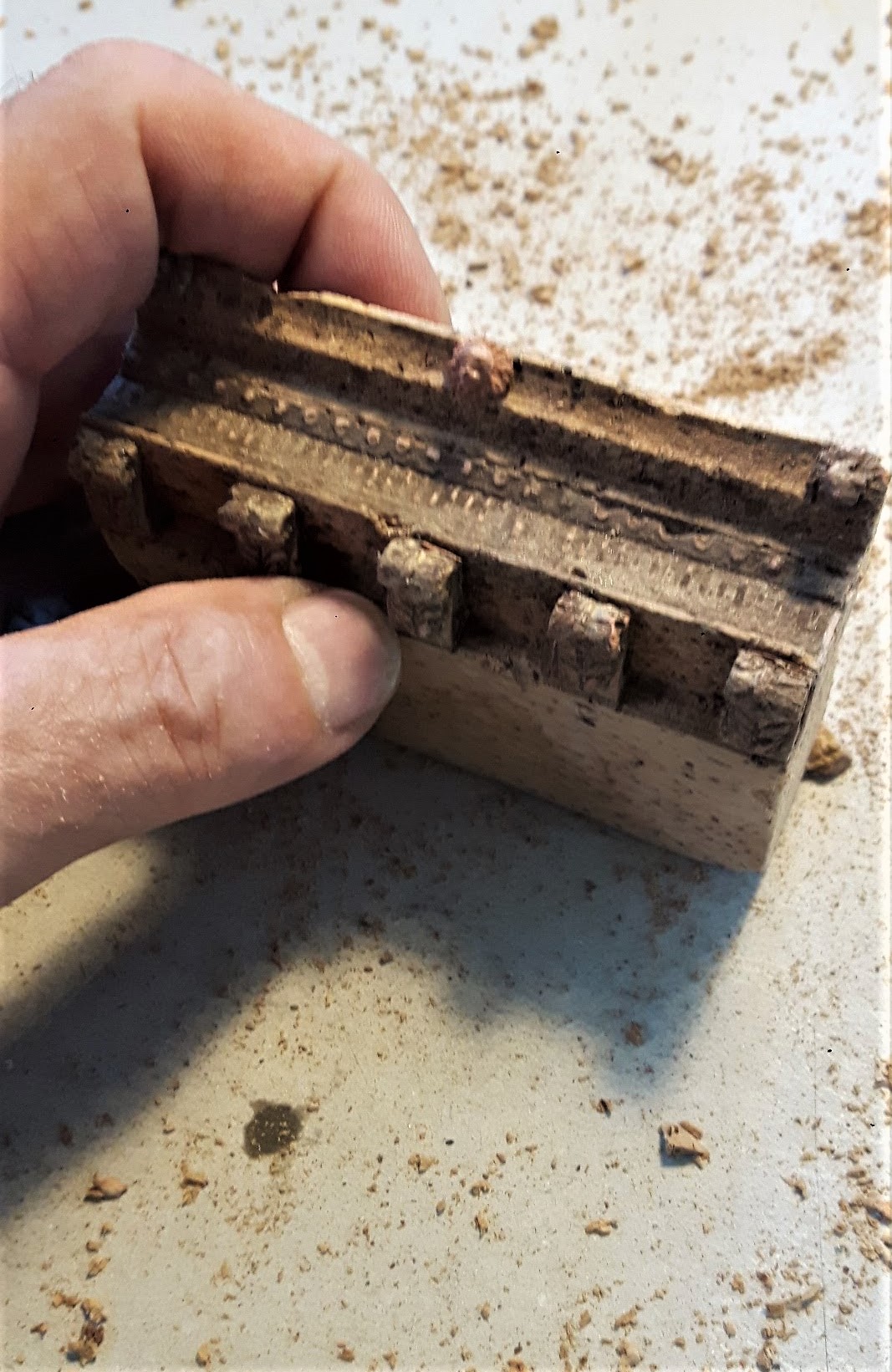
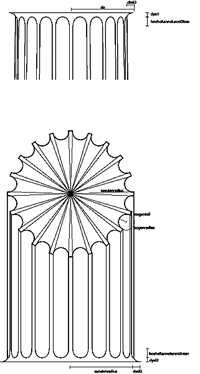
THE FLUTING OF COLUMNS
The FLUTING of the columns is the next step in Dieter’s work. He engraves the cannelures by hand and uses special grinding tools for this purpose…
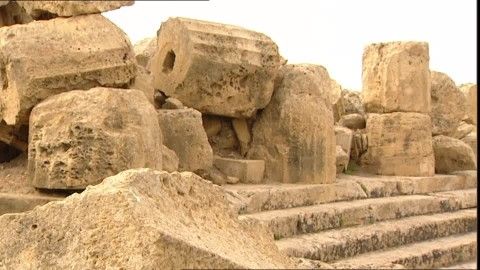
THE SECRET OF COLUMNS
Making a column requires a lot of calculations and accurate work. The right representation of the ENTASIS gives the object the correct proportion. After determining the exact shape, Dieter grinds it by hand on an ordinary lathe …

JUST A SOUVENIR
In the 18th century, a cork model of the Castor and Pollux temple in Rome was a popular sovenir for travelers of the „Grand Tour“
Today Dieter and Malgorzata create a new interpretation of this ruin scale 1:50. Let’s look over their shoulder at work …
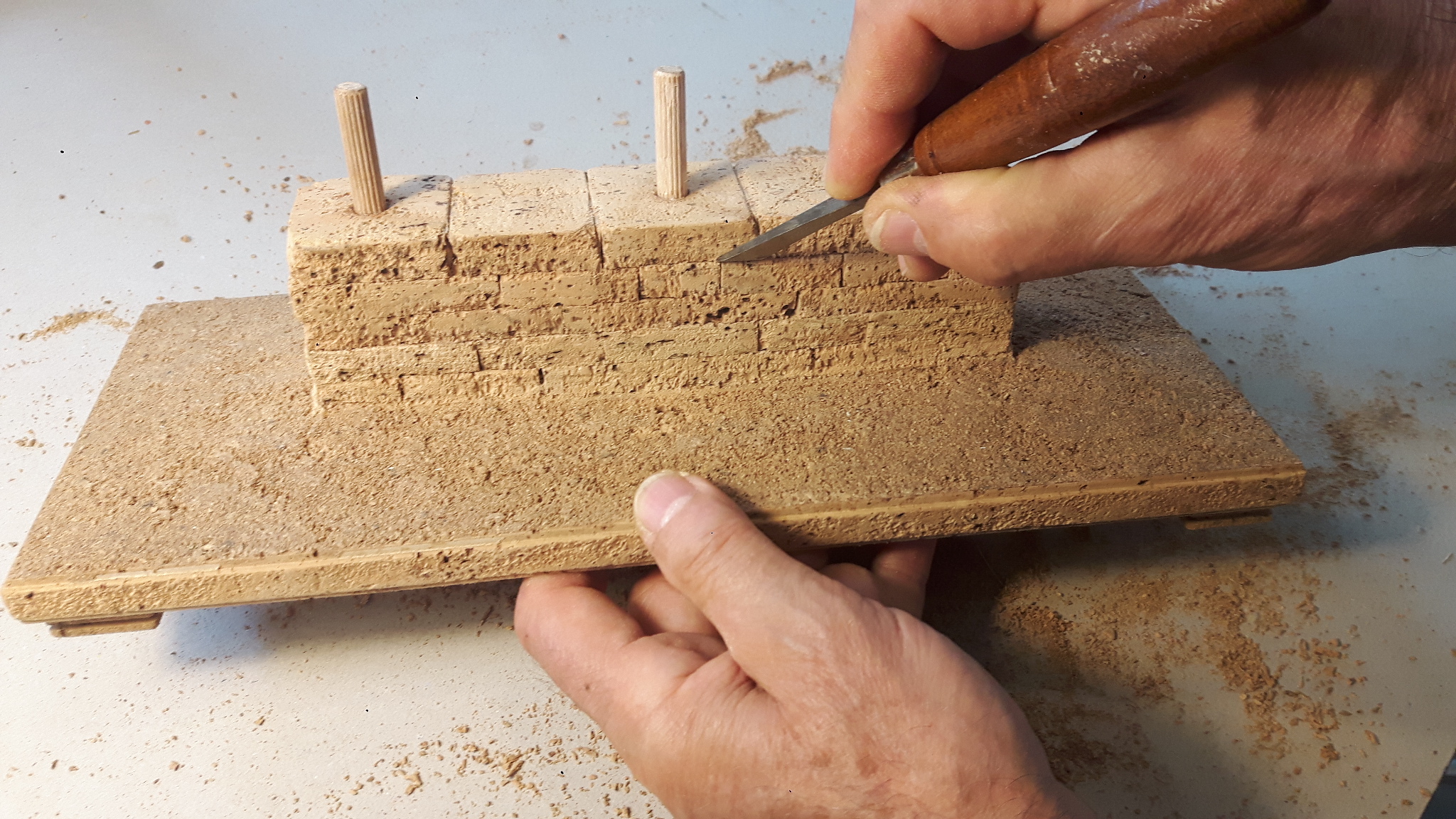
It all starts with a solid foundation

FINAL STEPS
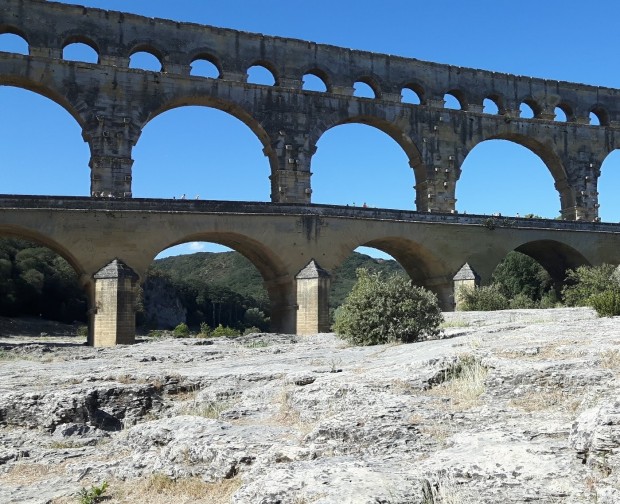
LIKE A ROCK
The Pont du Gard is founded on solid rock. To visualize this perfectly in the model Dieter uses 9 years grown cork bark from selected oaks in Portugal. After gluing the cork 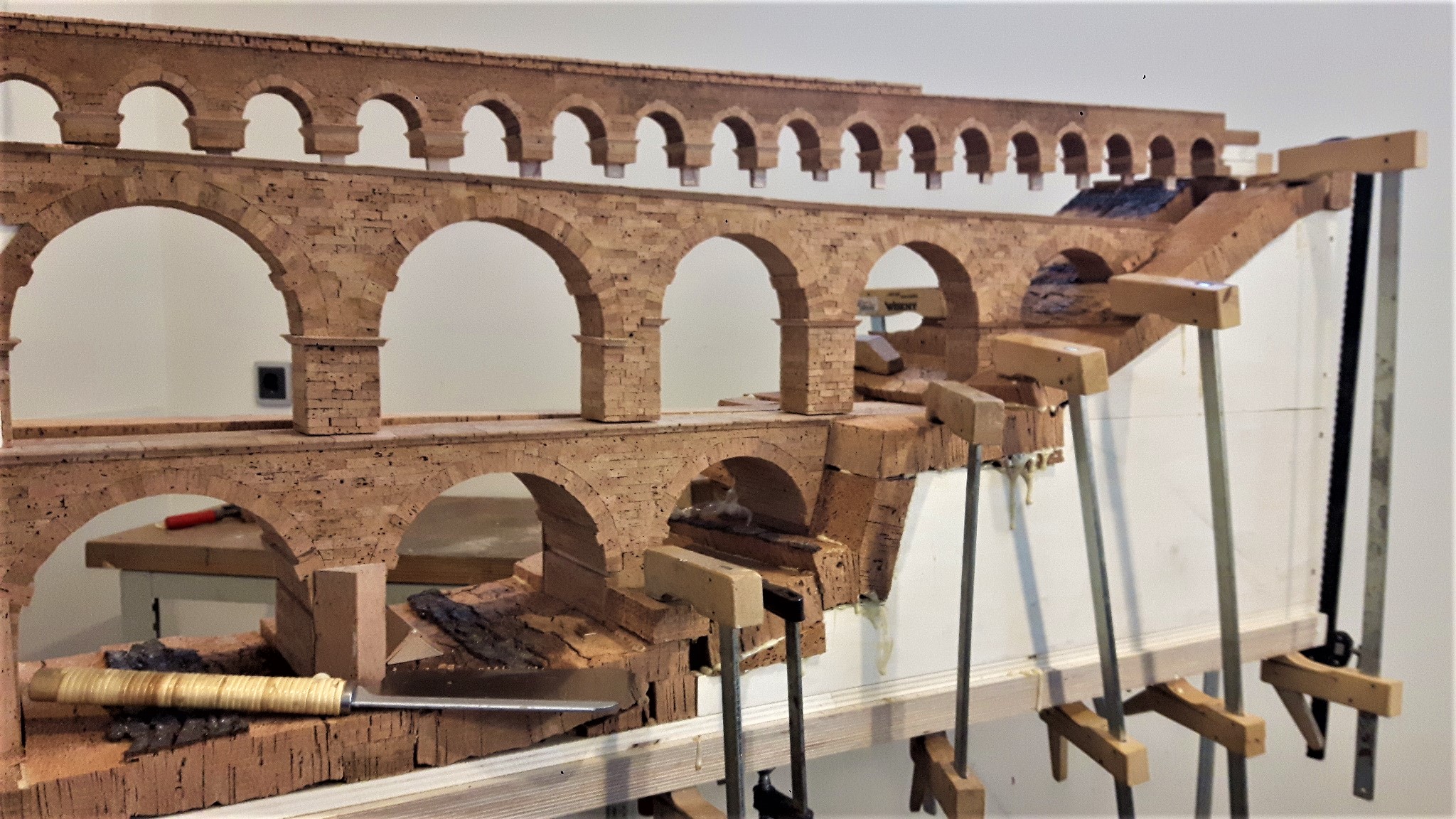
 he will treat the material like a sculpture to imitate the beauty of nature as best as possible…
he will treat the material like a sculpture to imitate the beauty of nature as best as possible…
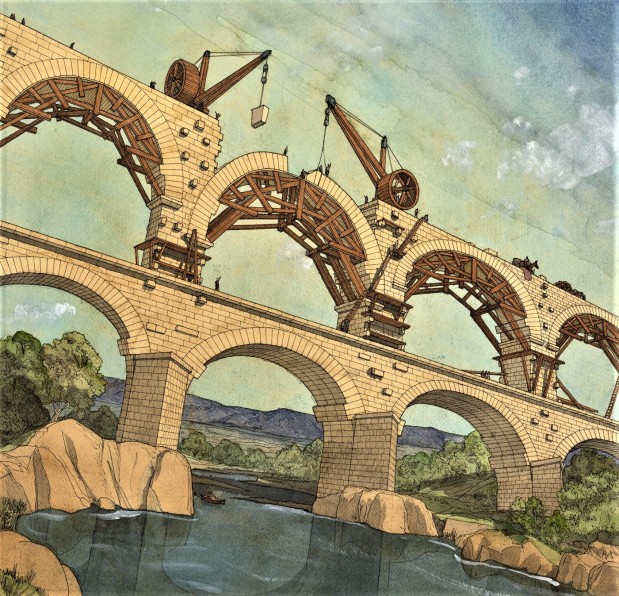
BRIDGE UNDER CONSTRUCTION
Like the ancient builders Dieter constructs the 52 arches of the Pont du Gard „stone by stone“…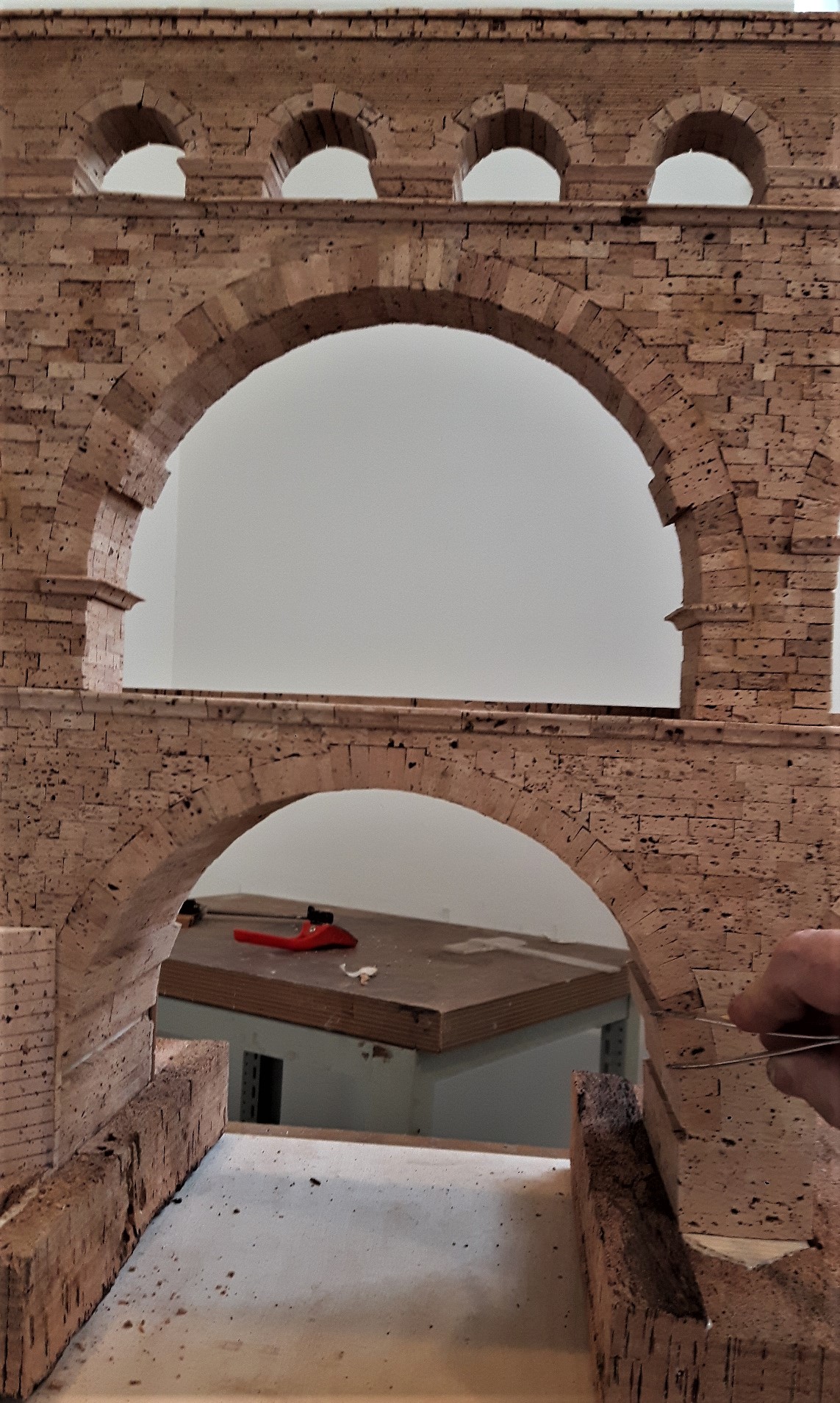
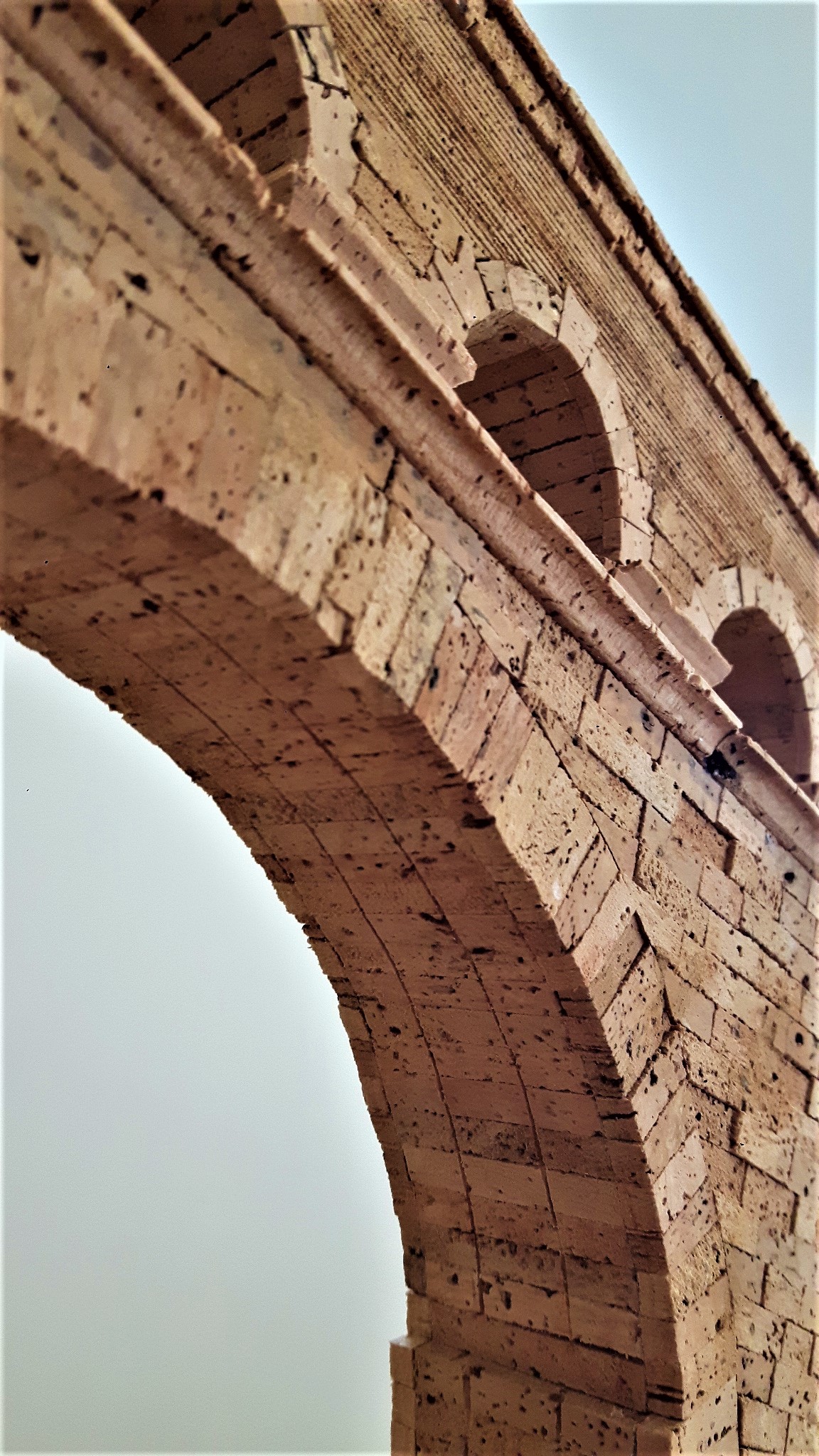
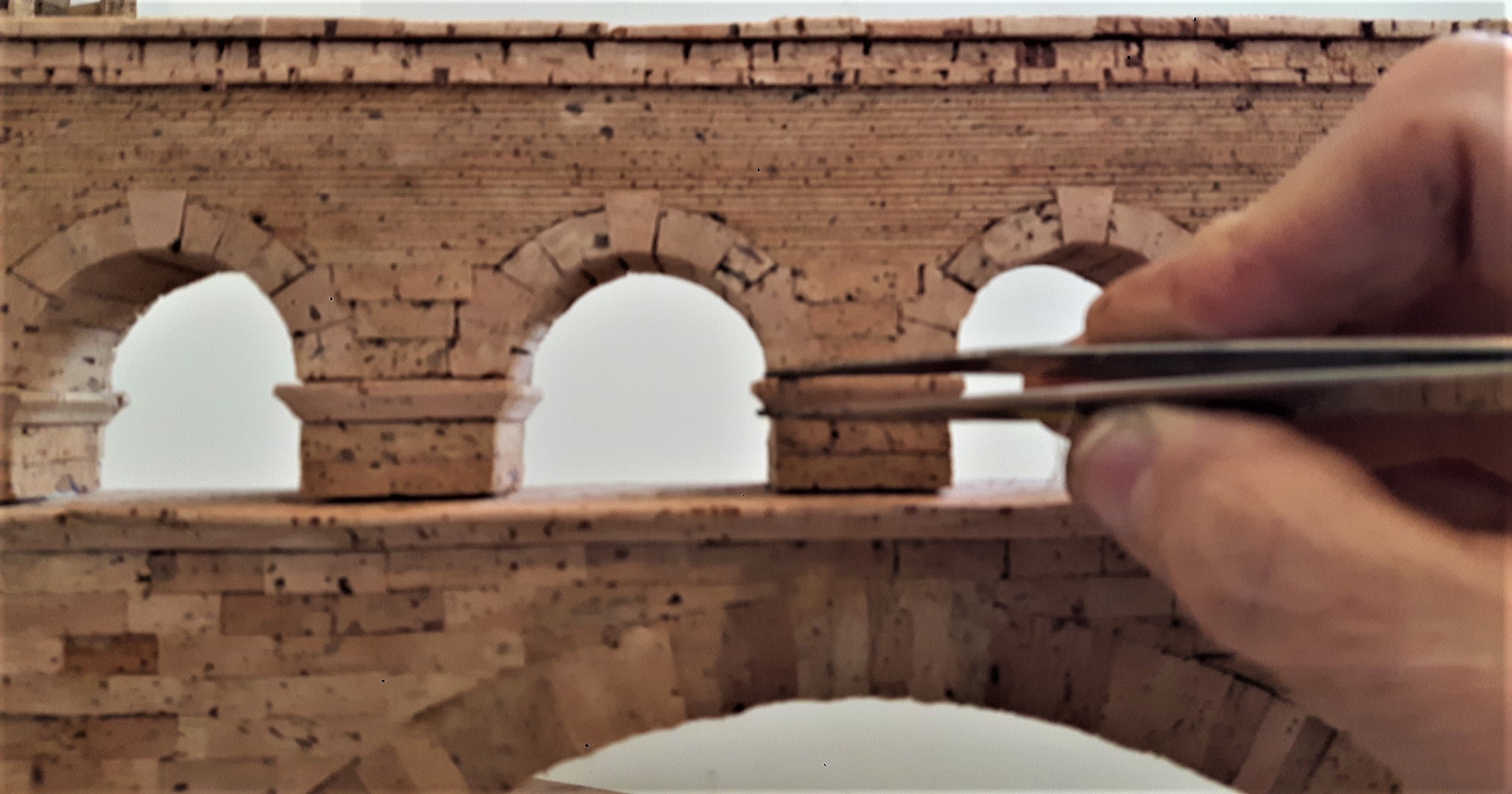

LOVE-KNOWLEDGE-SUPPORT
With every new project Dieter is supported by many people in the background. First there are the cork workers in Portugal, who provide him with the best material. In Germany, he can rely on Mr. Engels for the woodwork with his knowledge and experience. Dieter himself fell in love with cork in 1962 – until today …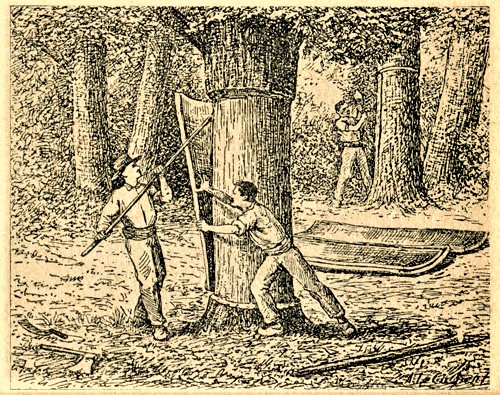
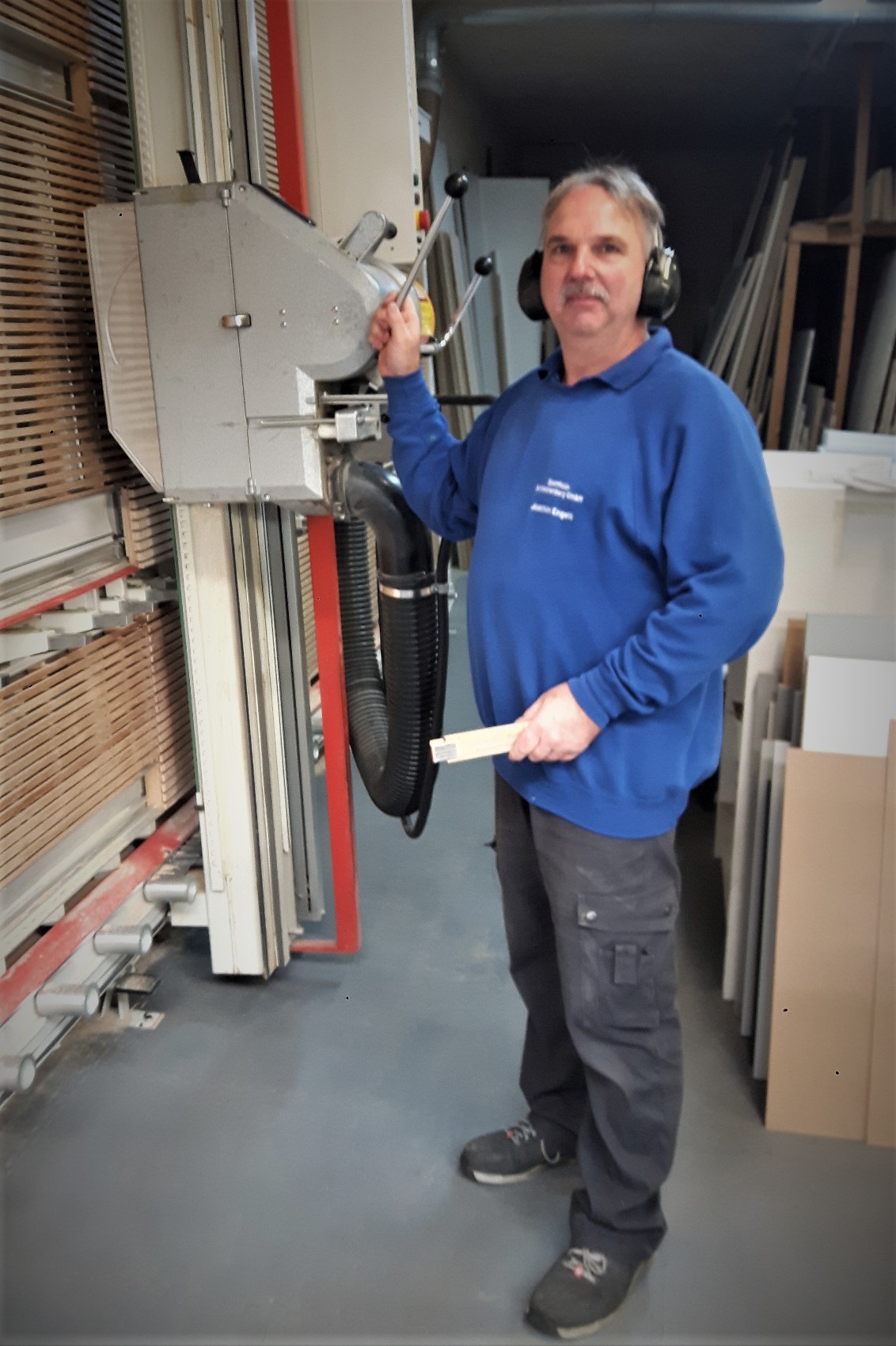
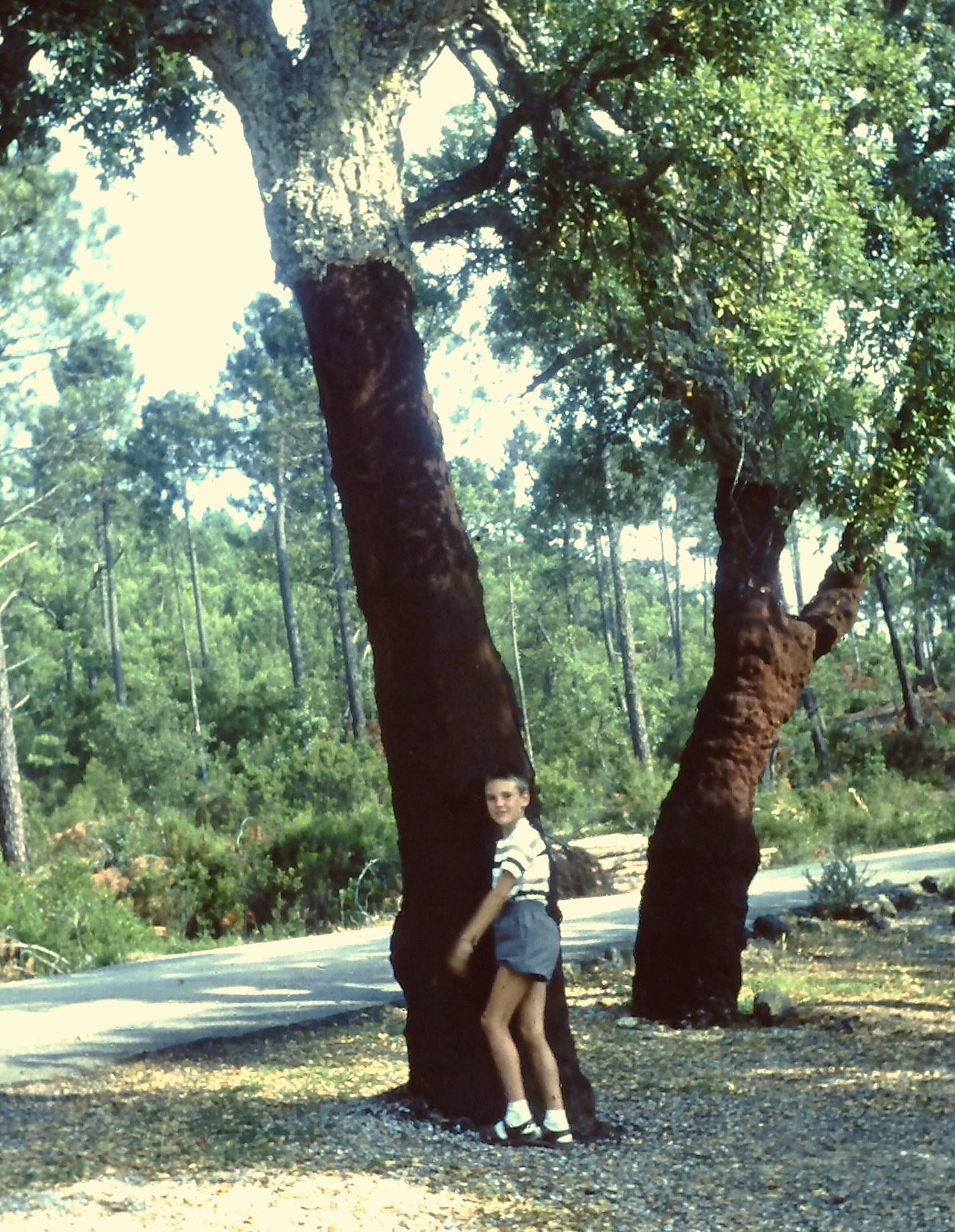
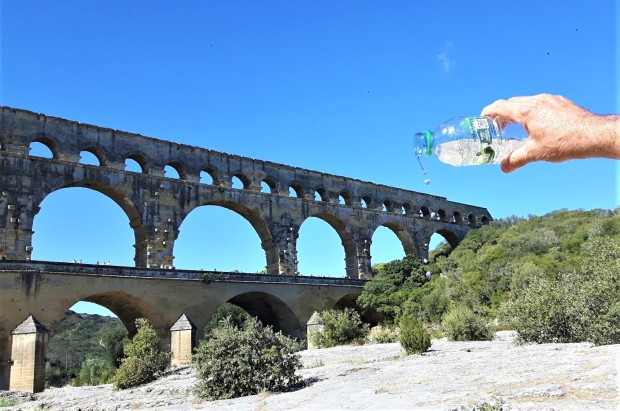
NEW PROJECT: PONT DU GARD
After completing the Coliseum, Dieter focuses his attention on an extraordinary Roman monument – the aqueduct PONT DU GARD north of Nimes. This cork model with a length of 2.75 m will be unique worldwide…
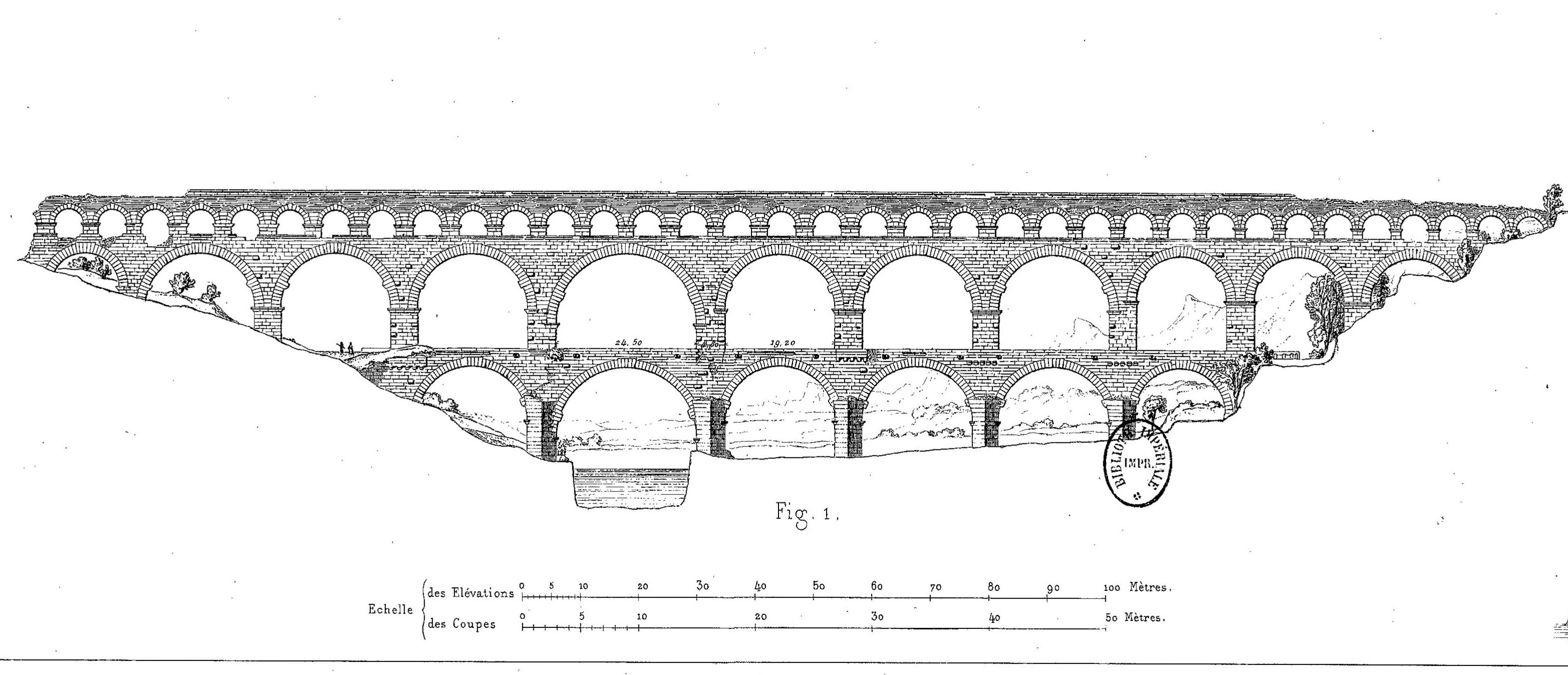
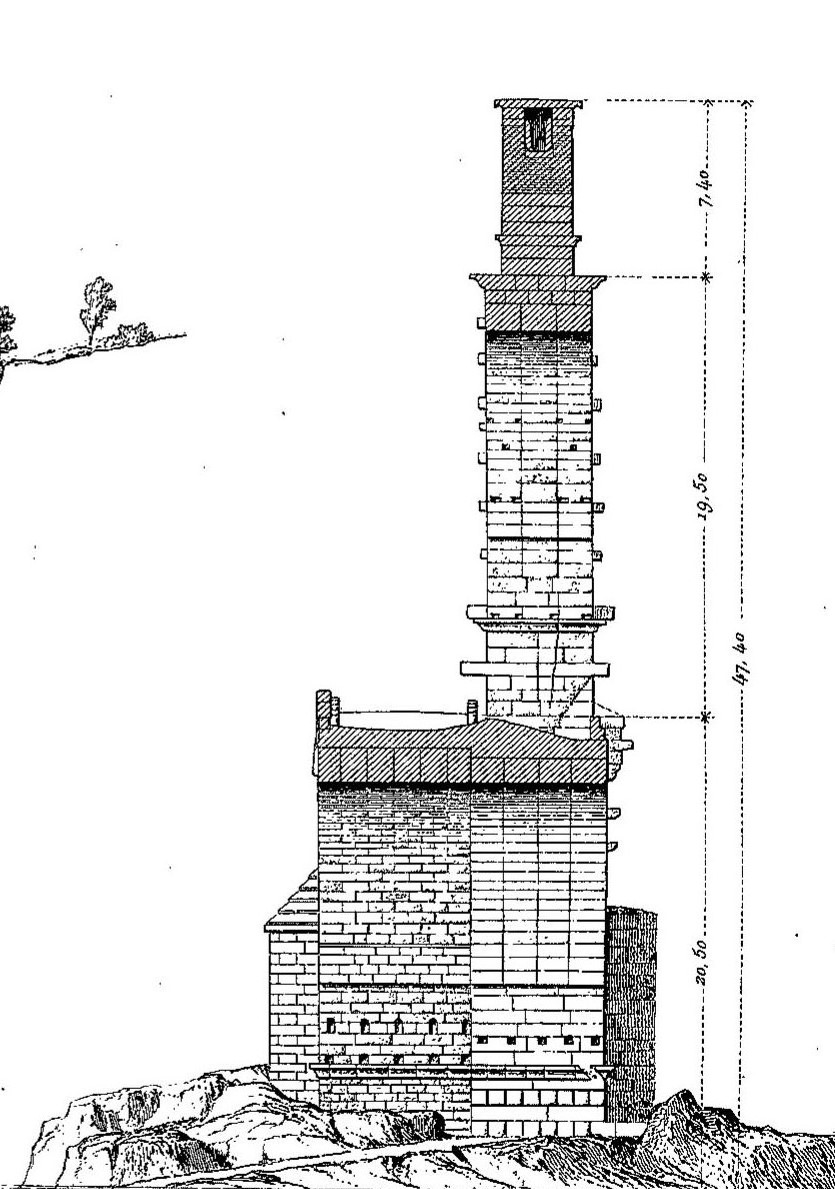
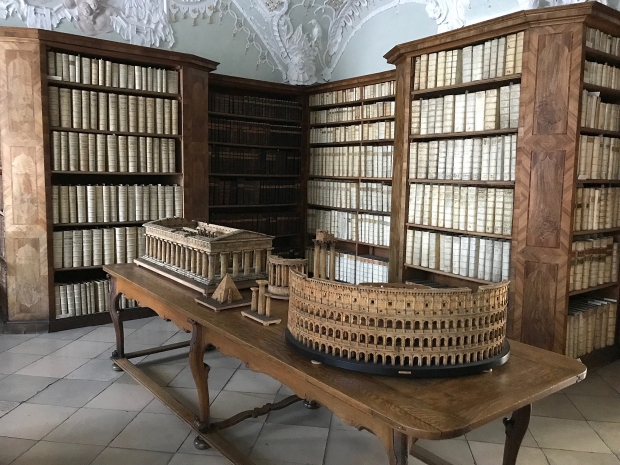
ULTIMATELY AT HOME
Together with other cork models, the Colosseum finaly finds its place in the STATE LIBRARY PASSAU
ON THE ROAD TO PASSAU
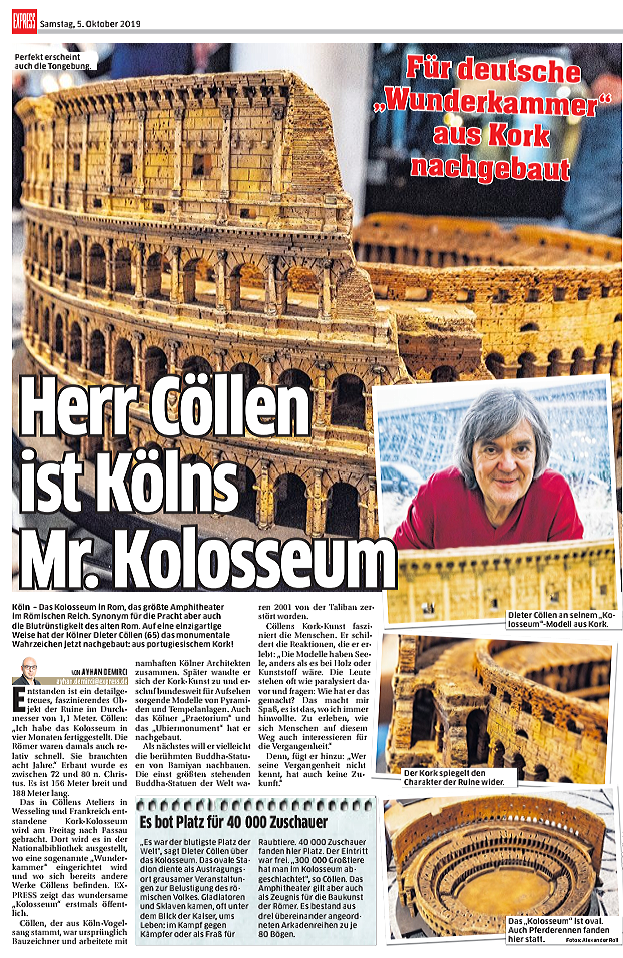
Detailgetreue Auftragsarbeit: Sensationell: Kölner baut das römische Kolosseum nach

PLEASURE AND SADNESS
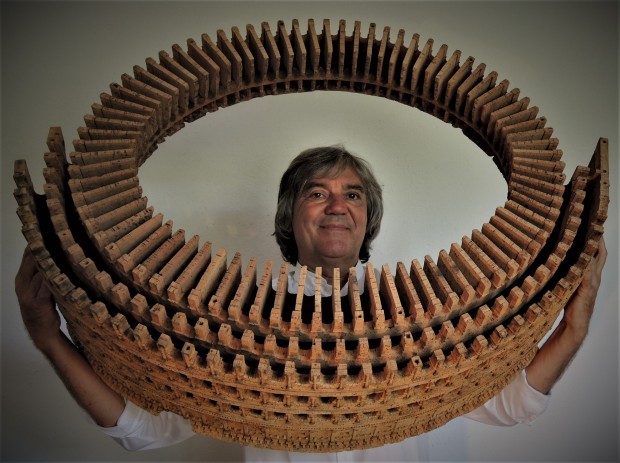
THE FINAL STEPS
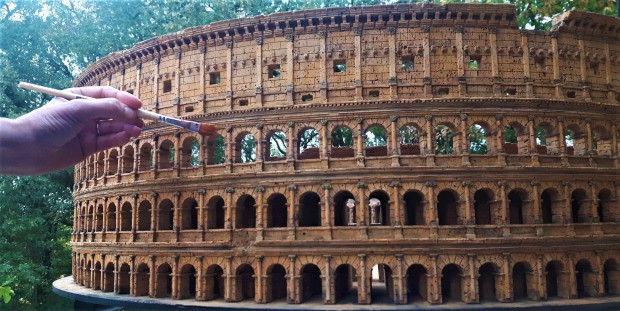
CAPITALS AND COLOURS
After fixing the capitals Dieter and Malgorzata are going to mix the natural pigments they got from Roussillon
in south of France. This technique was born in the 18th century and gives the cork a warm and smooth surface.
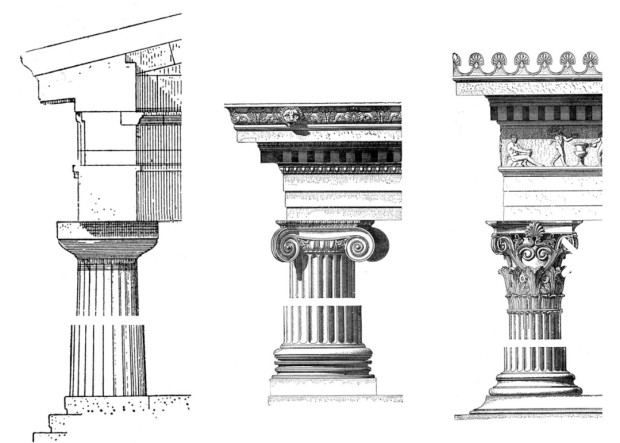
CAPITALS
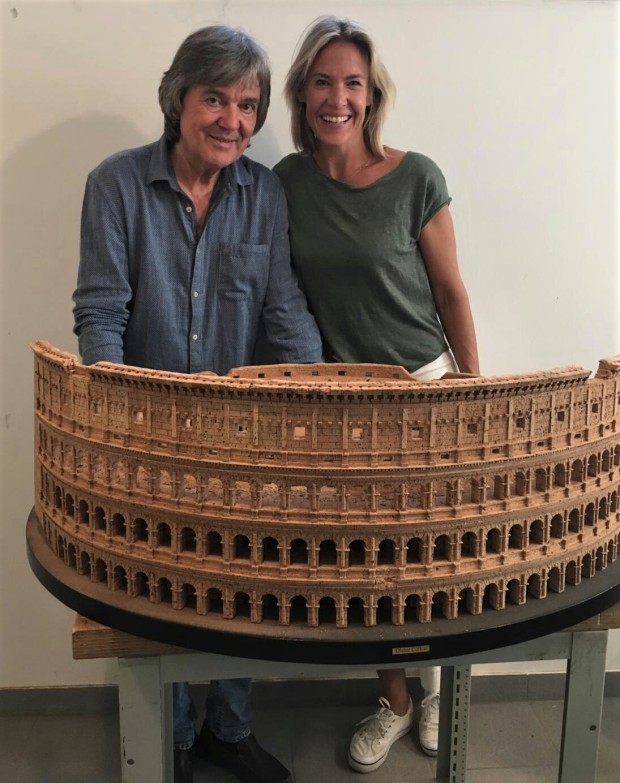
NORTHERN VISITORS
Yesterday Dieter had charming guests from Finland. The famous TV moderator ELLA KANNINEN and her team visited his “small kitchen” to talk about cork models and filmed Dieter at work.
We all are waiting now for the result that will be shown at the beginning of next year – thank you so much…
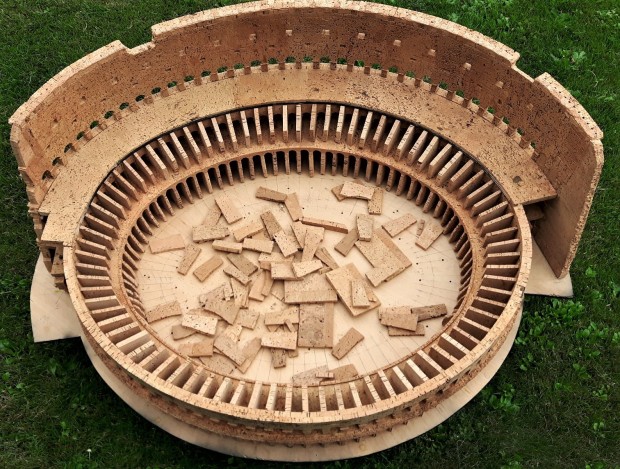
THE INNER STRUCTURES
The inner part of the Colosseum has cosmic dimensions. During the next days Dieter will build all the constructions for the audience tribunes that made the monument once to the biggest stadium at its time…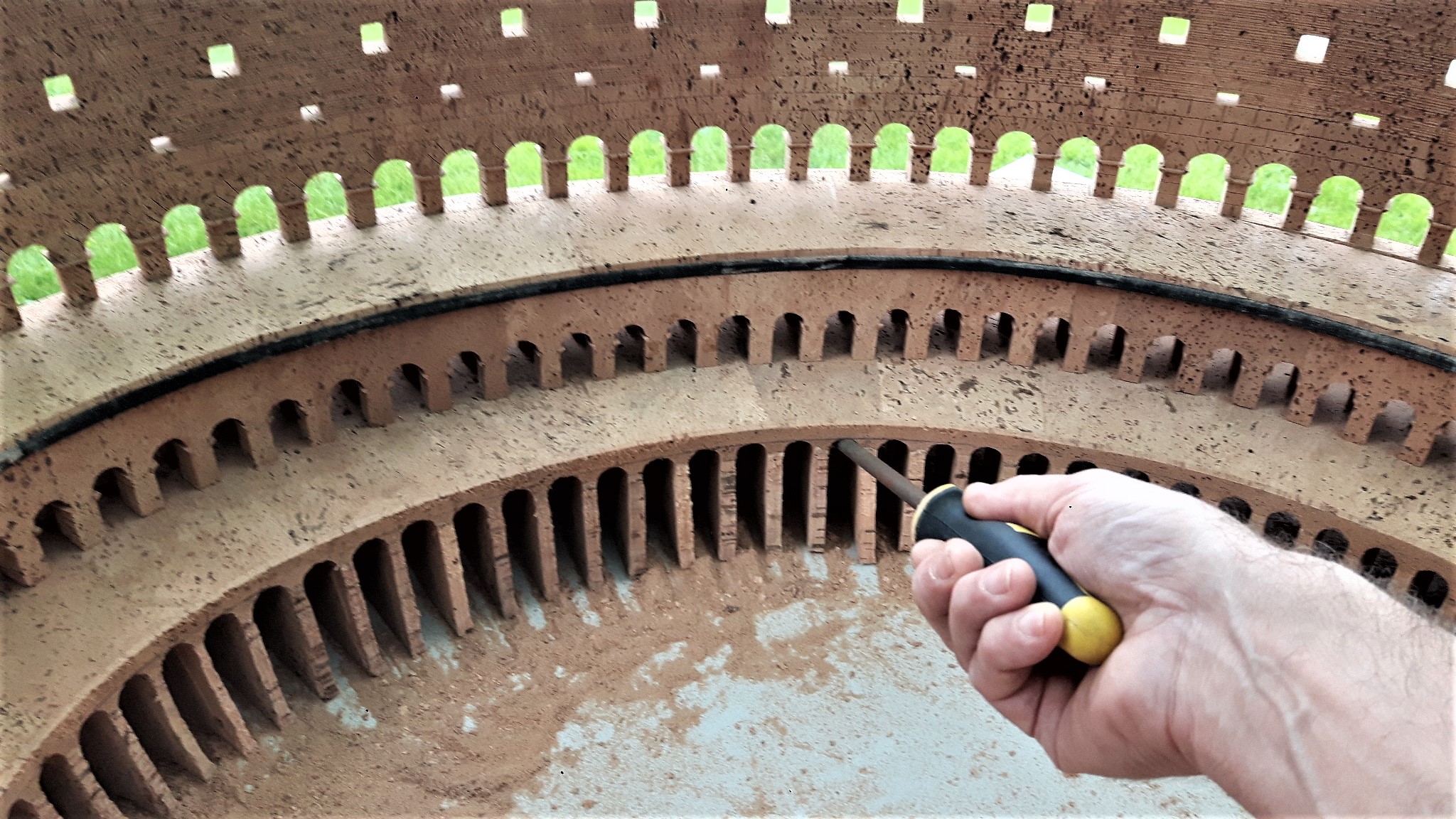
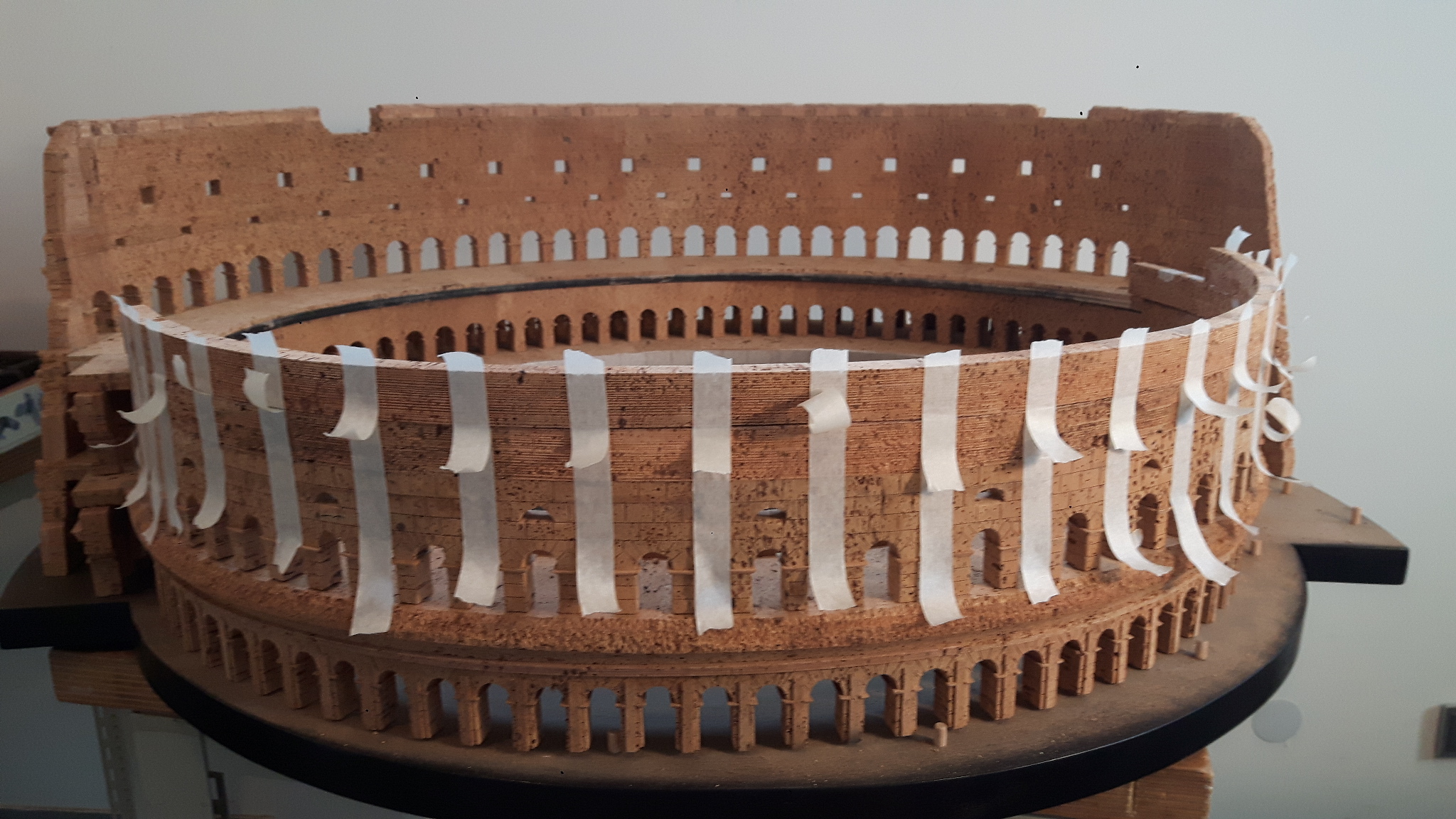
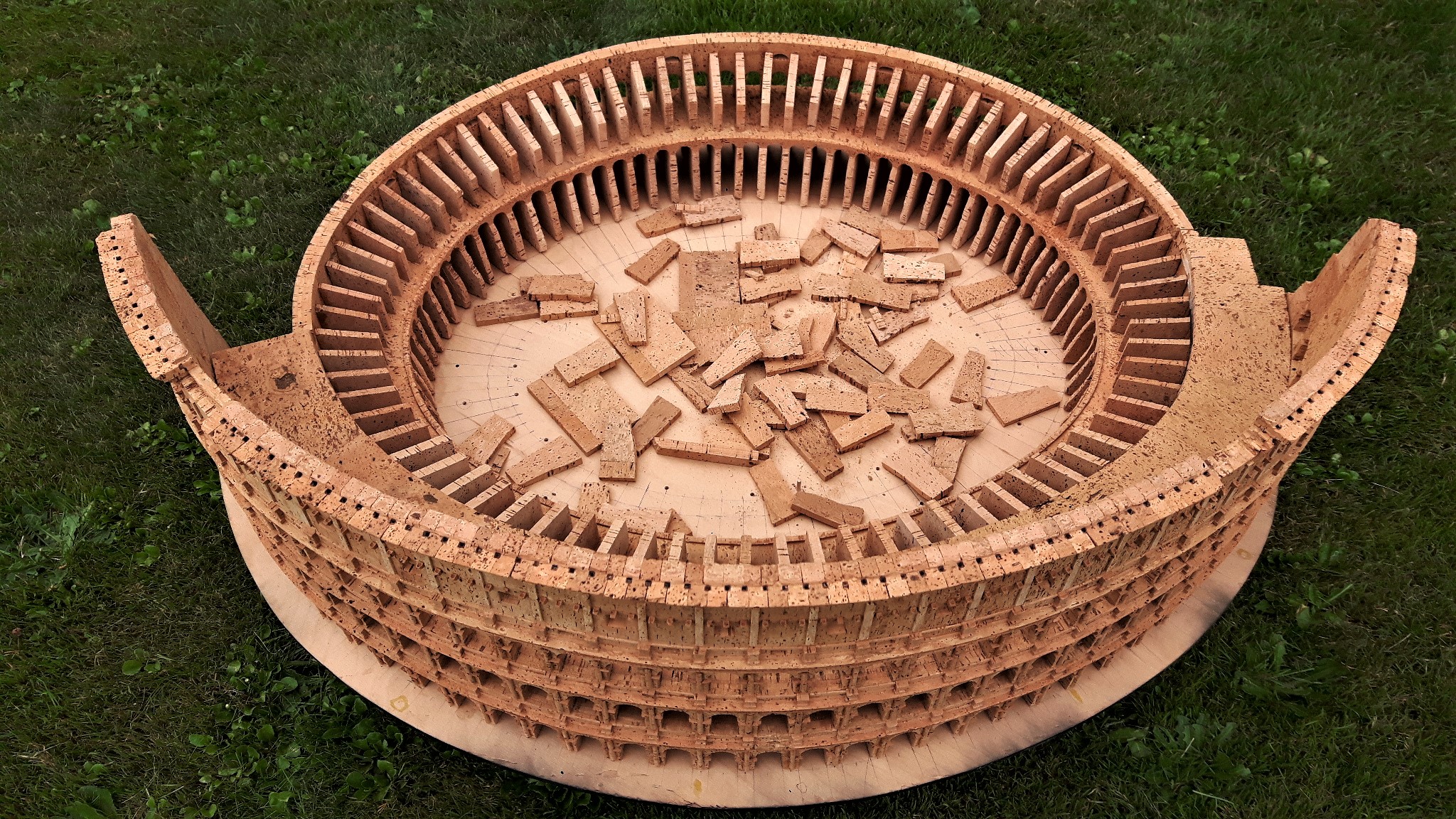
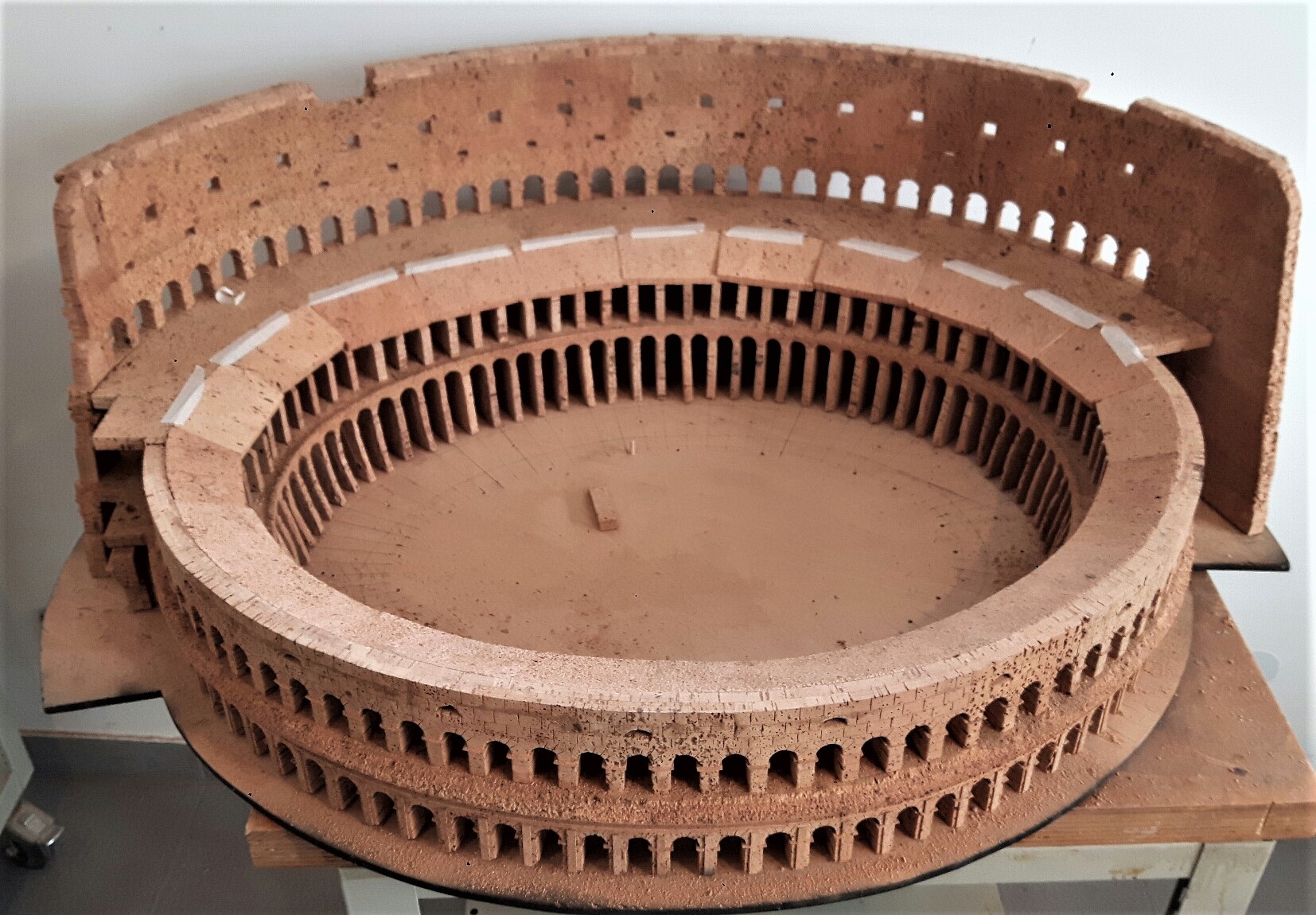
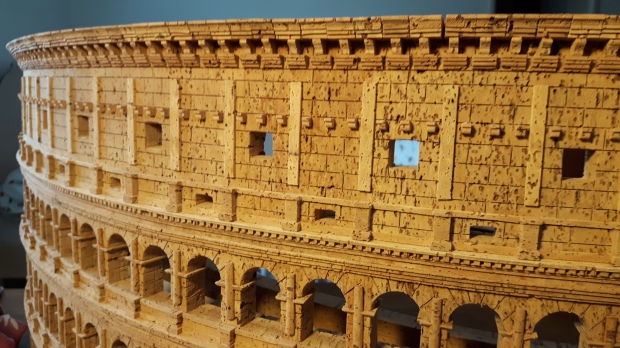
SHADE ON THE AUDIENCE
Now the upper section of the facade is nearly finished including the brackets which support the wooden poles for the shading construction. We don’t know much about that, because all that disappeared during the centuries. Watch here a video about an idea how the VELARIUM could have worked.
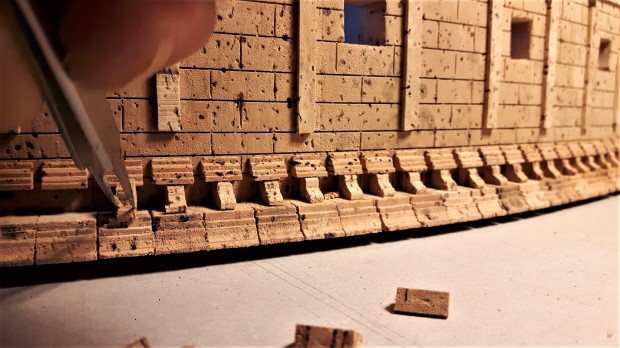
PROFILING
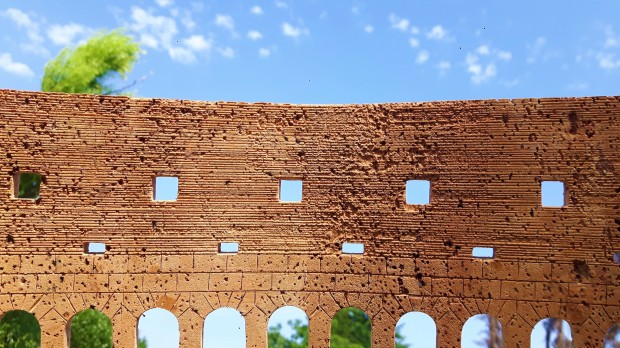
STONES AND STRUCTURES

350 ARCHES
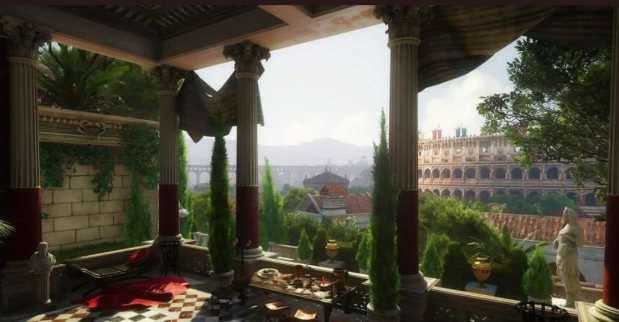
LIFESTYLE
Imagine yourself – sitting there on a Sunday morning in company with some friends having this spectacular view of the Colosseum. Some birds are singing in the trees interrupted by the roaring noise of more than 50 000 people hypnotized by a bloody fight behind that beautiful facade…
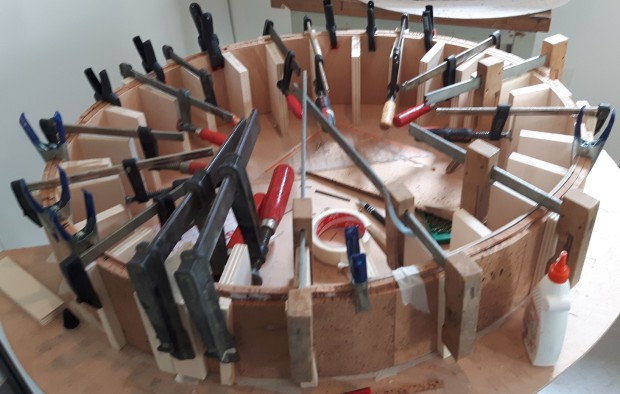
SHAPING THE OVAL
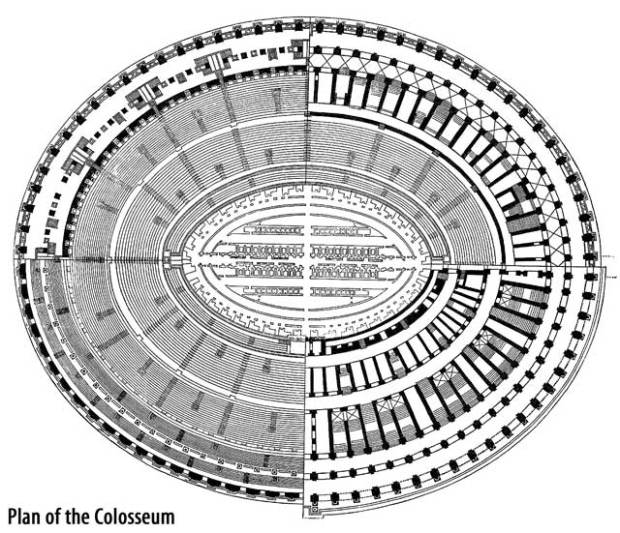
THE „NEW“ COLOSSEUM
Since Luigi Carotti built the last cork model of the Colosseum in 1840 nobody toughed that theme again. Today Dieter Cöllen decided to create another object of this incredible monument. He calls his project “Homage á Luigi Carotti” and wants to discover if his artwork can exist beside the quality of the ancient master. The audience is invited to decide…
After getting the plans Dieter starts first to form the oval walls of the Colosseum. Here you can see him working on that basic part. With the assistance of Malgorzata he builds the support structures…
Perspektiven der Sehnsucht – Korkmodelle antiker Ruinen von Dieter Cöllen | H. W. Fichter Kunsthandel
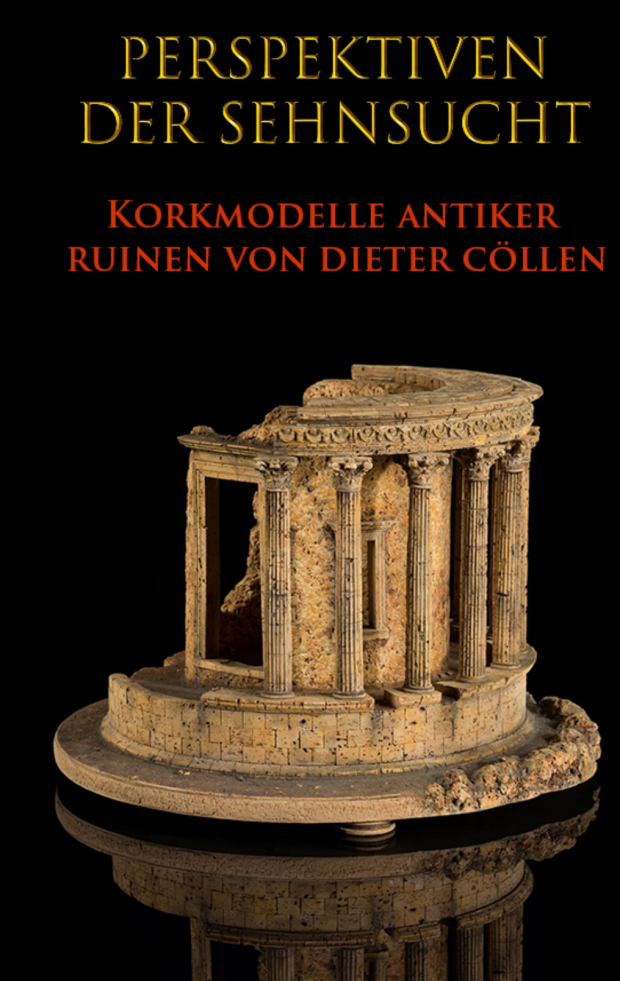
NEW EXHIBIT
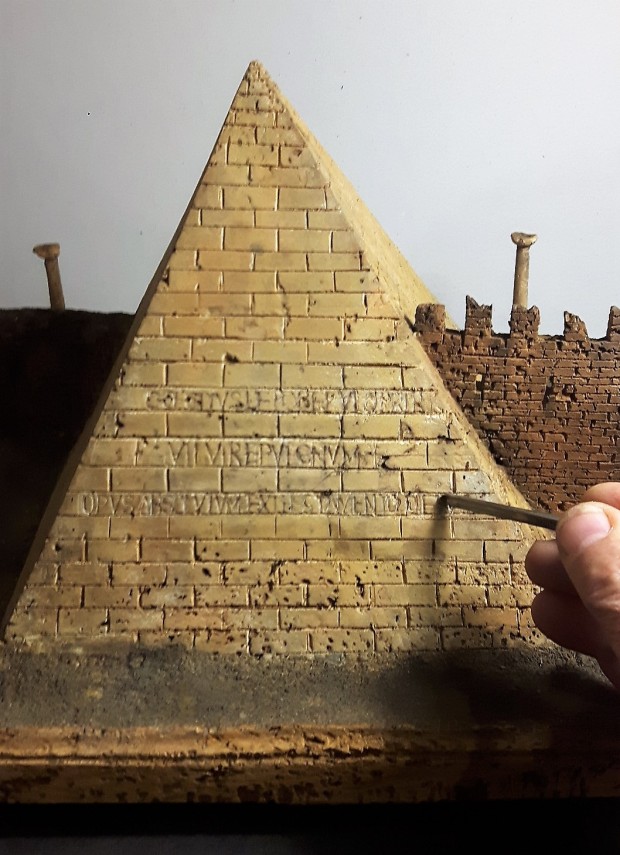
COLOUR AND VERNICE
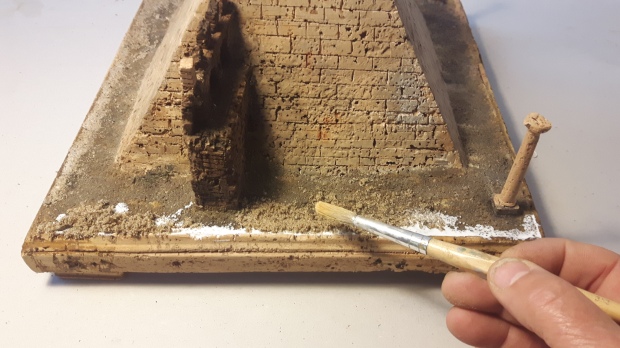
SAND – GLUE – PATINA
The old masters often used sand for the ground but over the centuries it disappeared on different parts. Dieter uses river sand and glue for the restoration. After the drying process he applies patina to make the repaired areas invisible.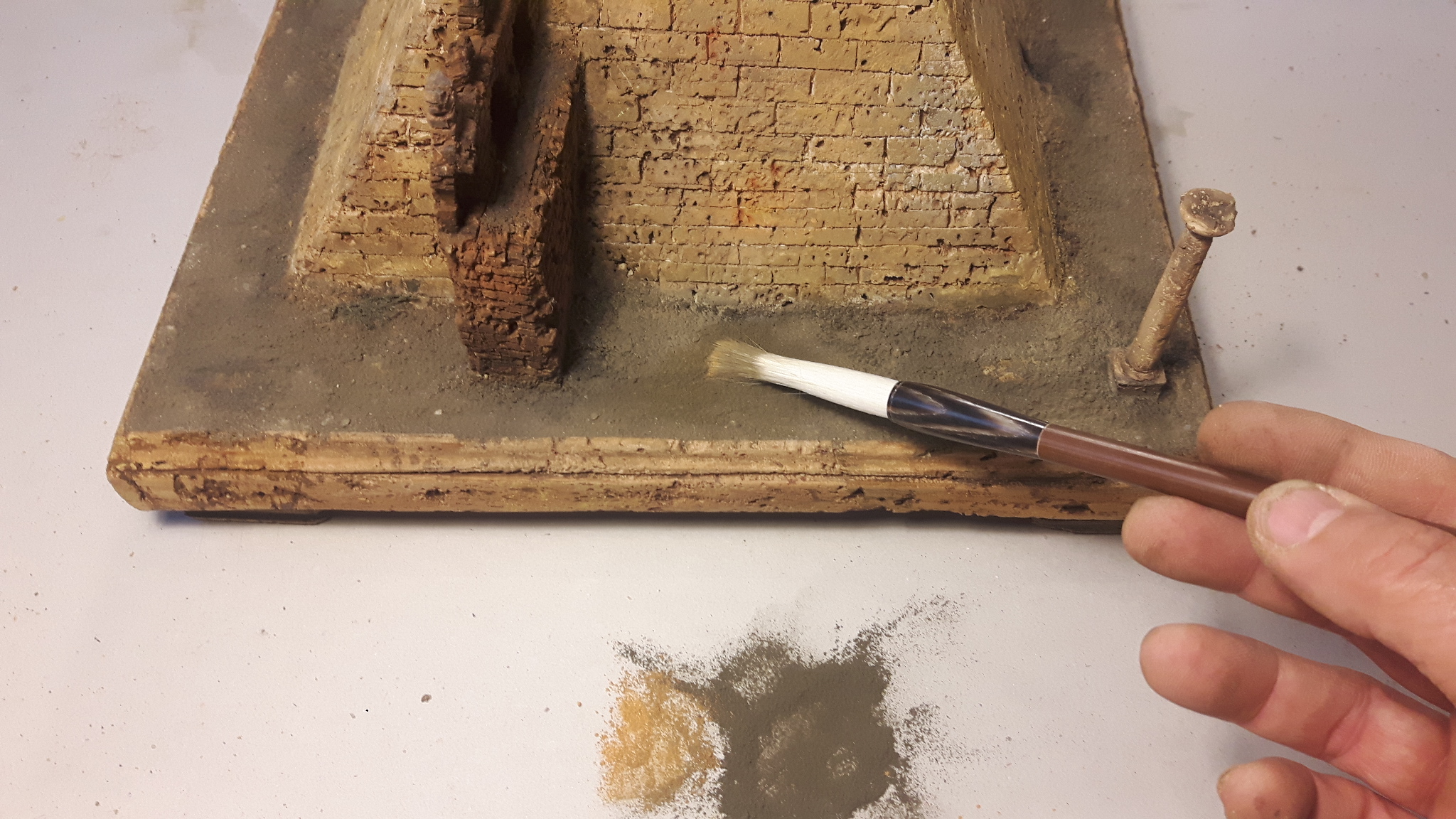
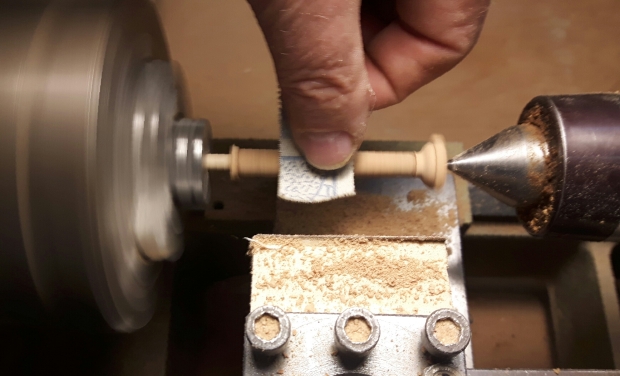
TWO COLUMNS
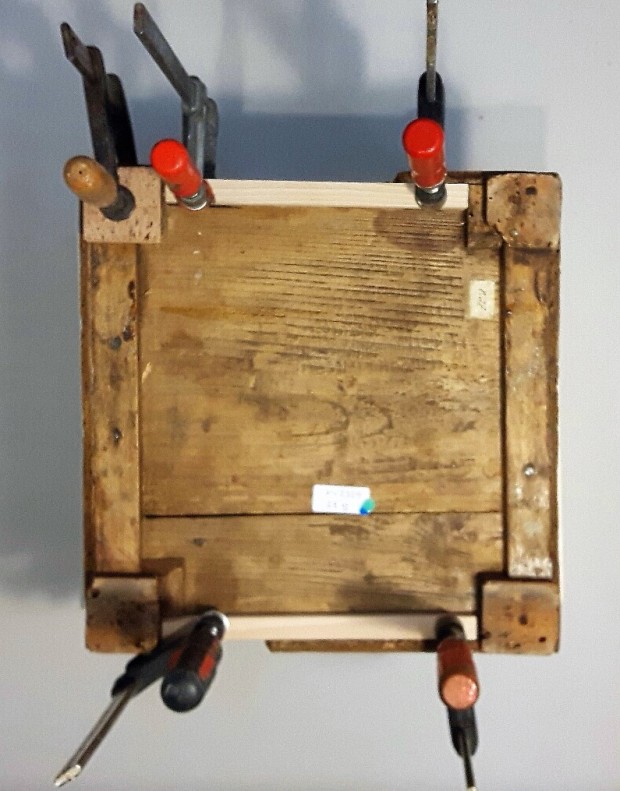
A SOLID BASE
i
in the 18th century most of the cork models where manufactured in a hurry due to high demand. Especially the wooden base was often made very carelessly. For that reason many old cork models are in very bad condition today. For Dieter, a solid base is therefore the top priority. After this work is done he begins to restore the cork frame of the object…
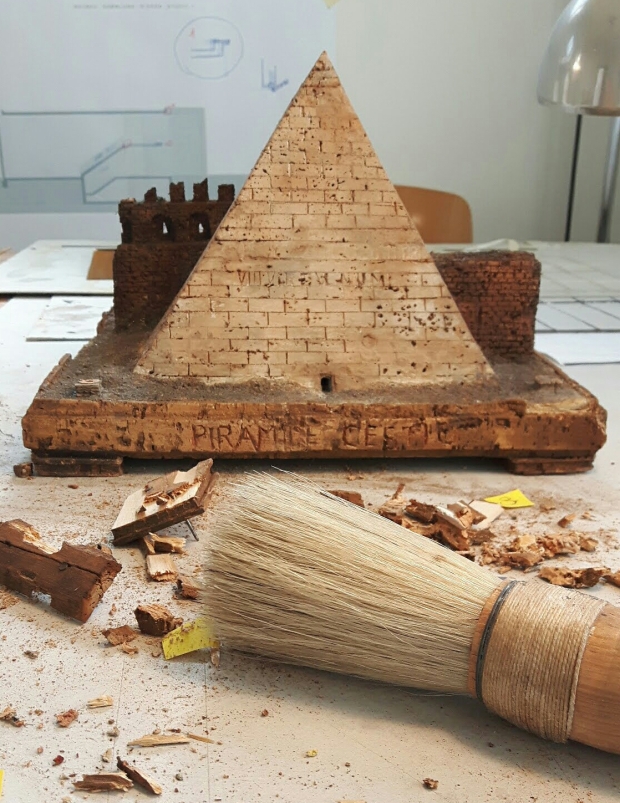
RESTORING A BAD TREATED BEAUTY
Dieter´s next restoring project is an ancient cork model of the pyramid of Cestius / Rome. Probably it was manufactured in the studio of Carl May. This object was once a well loved “Souvenir” of the Grand Tour. This model went through several hands and was badly treated during the centuries.
Another new challenge for Dieter…
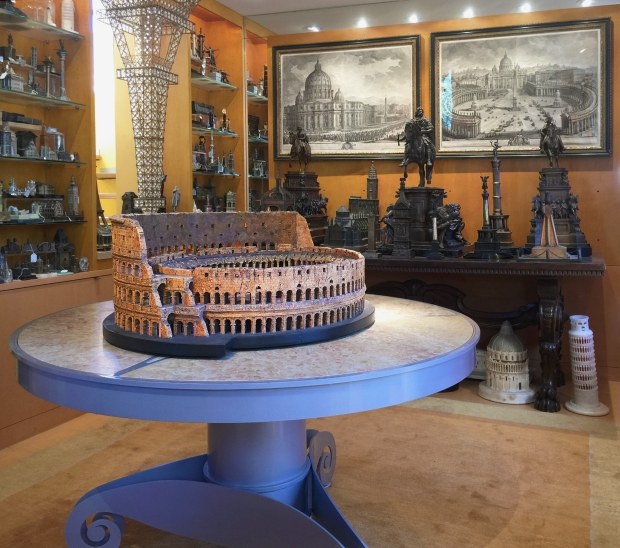
FINALLY AT HOME…
After its long journey across the ocean the Colosseum safely reached San Francisco. There in a famous private collection it is now the centerpiece of the exhibit surrounded by other models of the 19th century.
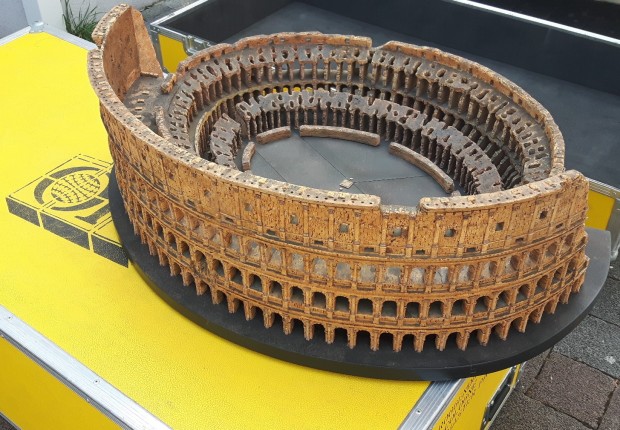
LET´S HIT THE DUSTY TRAIL…
Restoration work is done and the Colosseum was packed and left Dieter´s studio to cross the ocean and all the way through the States to San Francisco / California. A four month project that helps a ruin surviving the next 300 years…
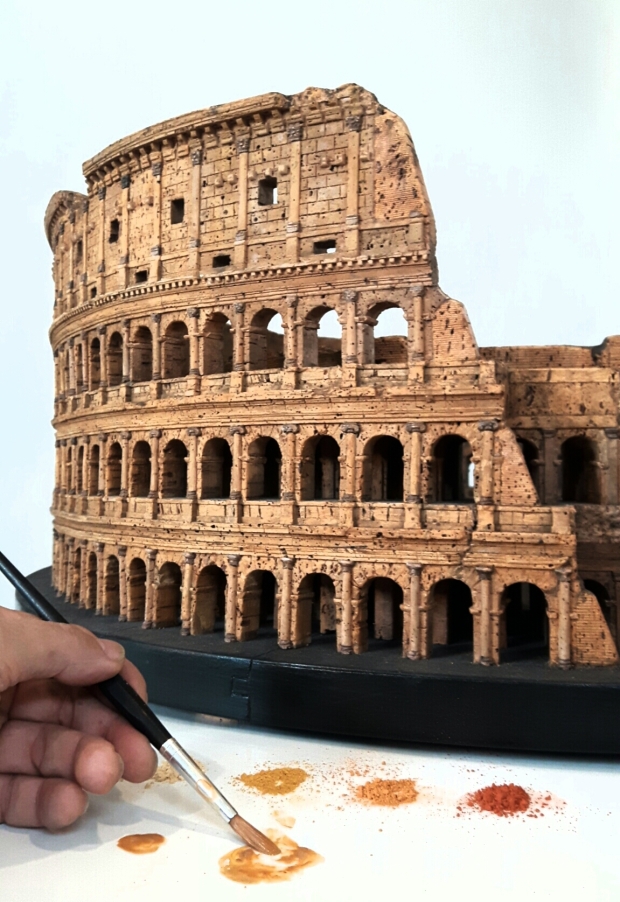
THE FINAL TOUGH
Back from the Provence Dieter uses the natural pigments he got to set warm “late afternoon sunlight” on the surface of the Colosseum. This very important part of the work appeals to our emotions and is the final tough of every restoration…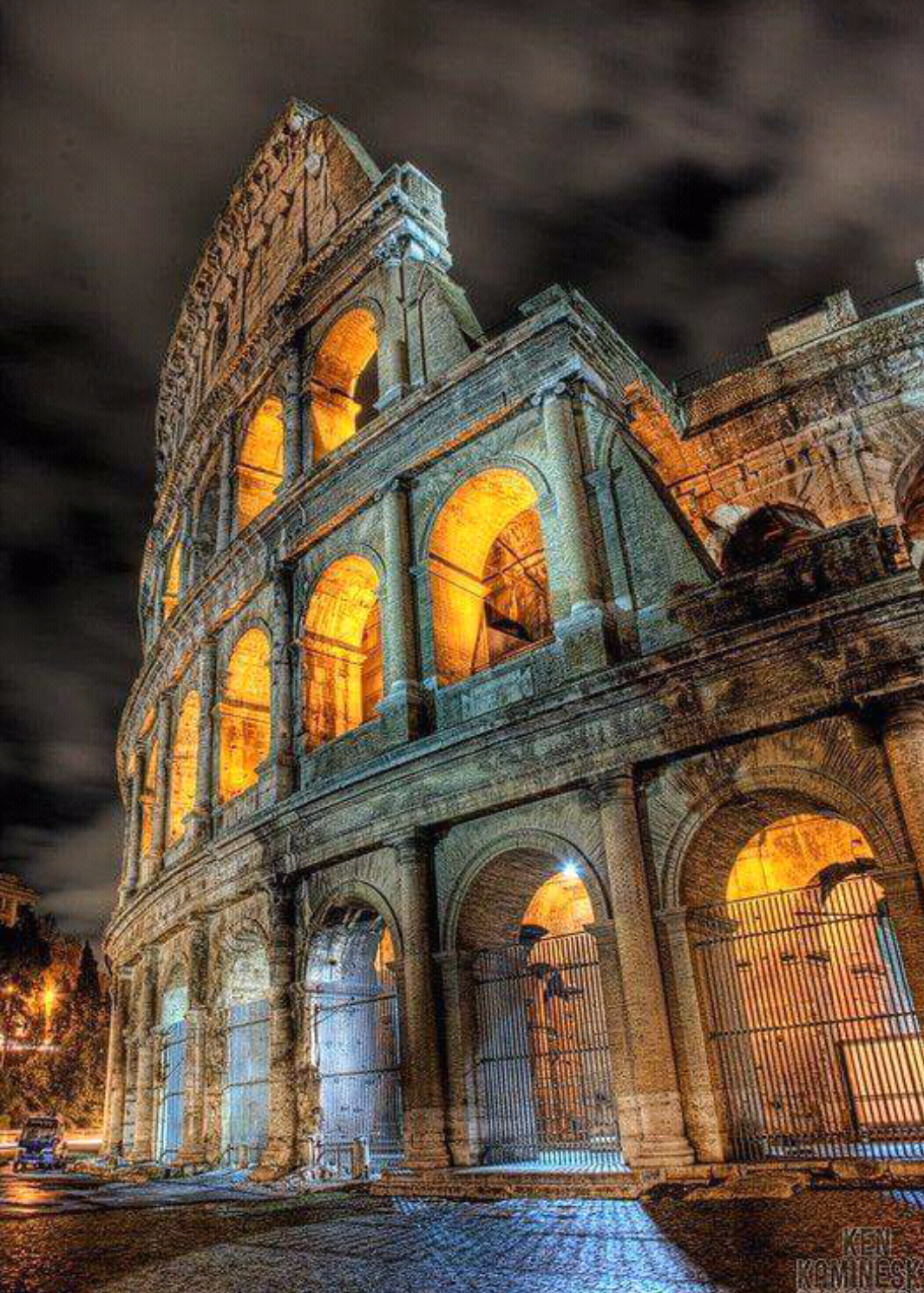
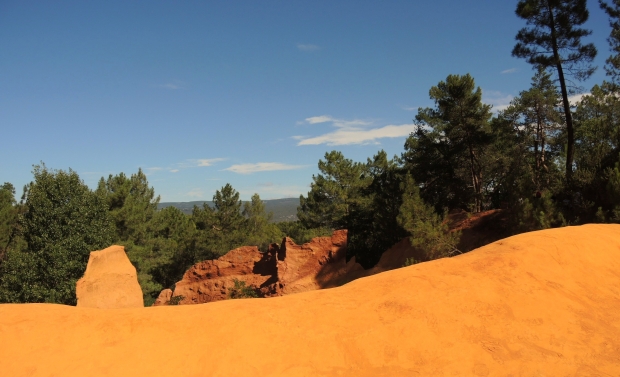
NATURAL COLOURS
To finish his work Dieter follows the footsteps of the old masters. They only used natural pigments to colour their objects. No chemical reaction destroys the surface of the cork and the smooth expression of the sculptures survive for centuries. To get the pigments Dieter visits one of his most favourite spots in the Provence – the small village Roussillon. Here he takes a bath in colours inspired by nature…
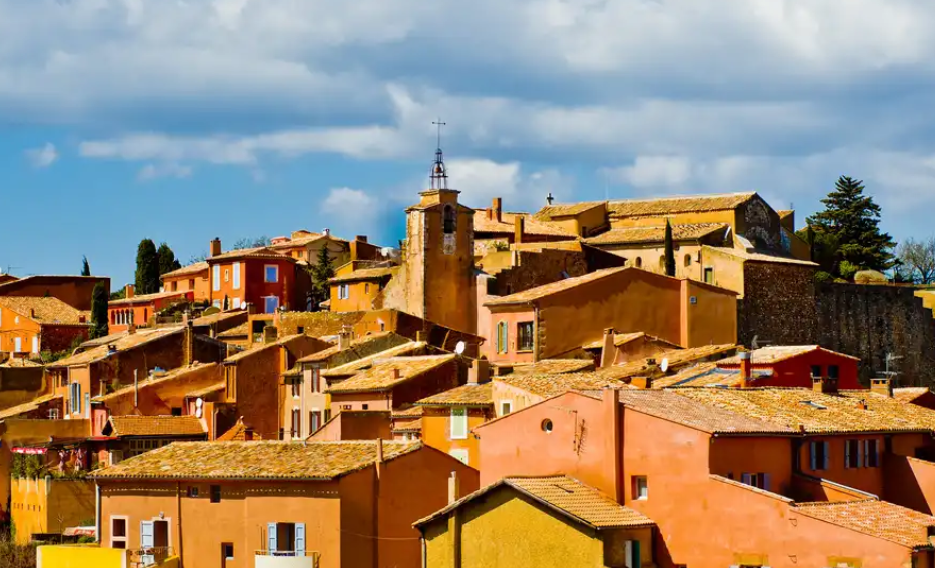
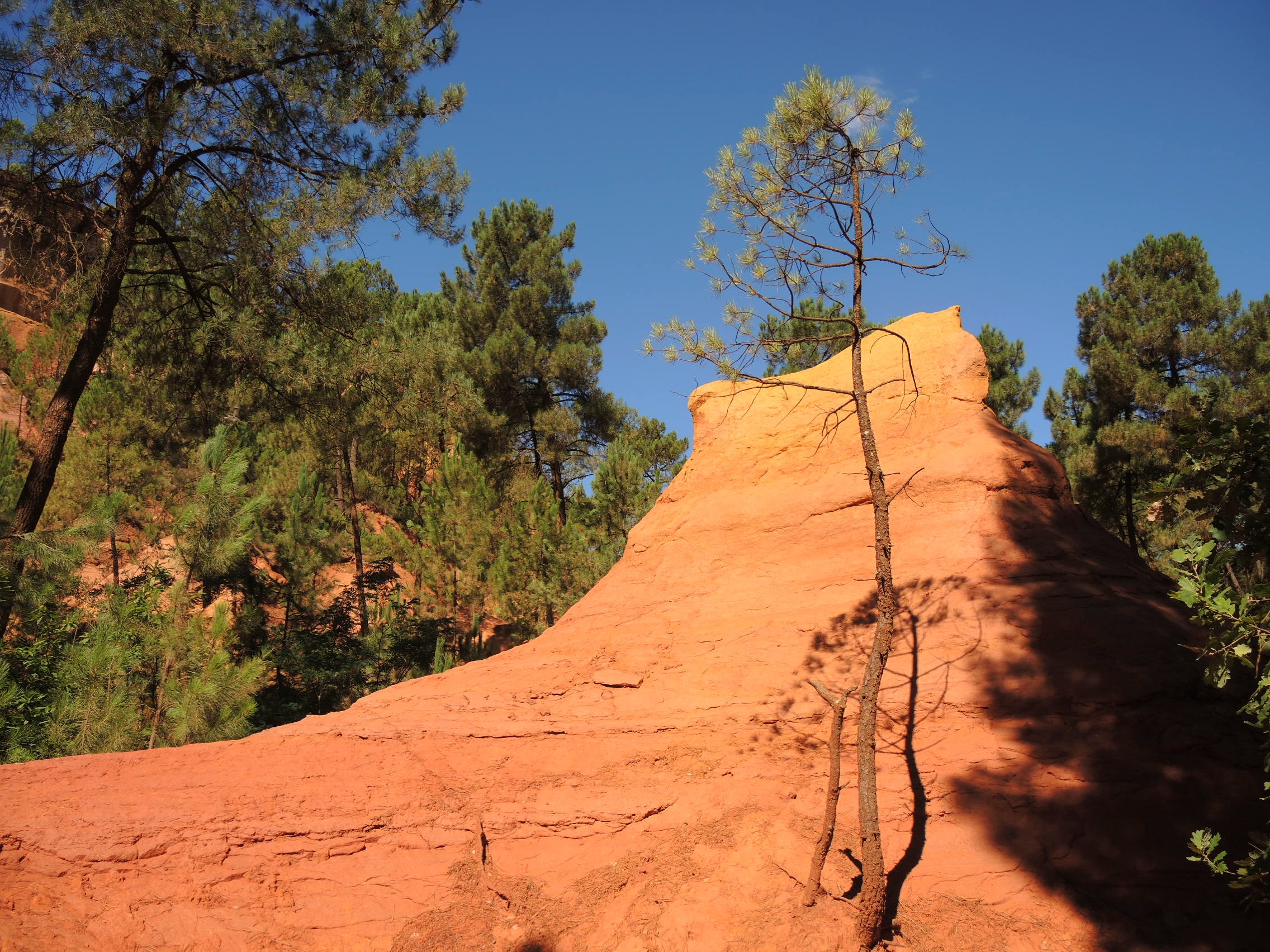
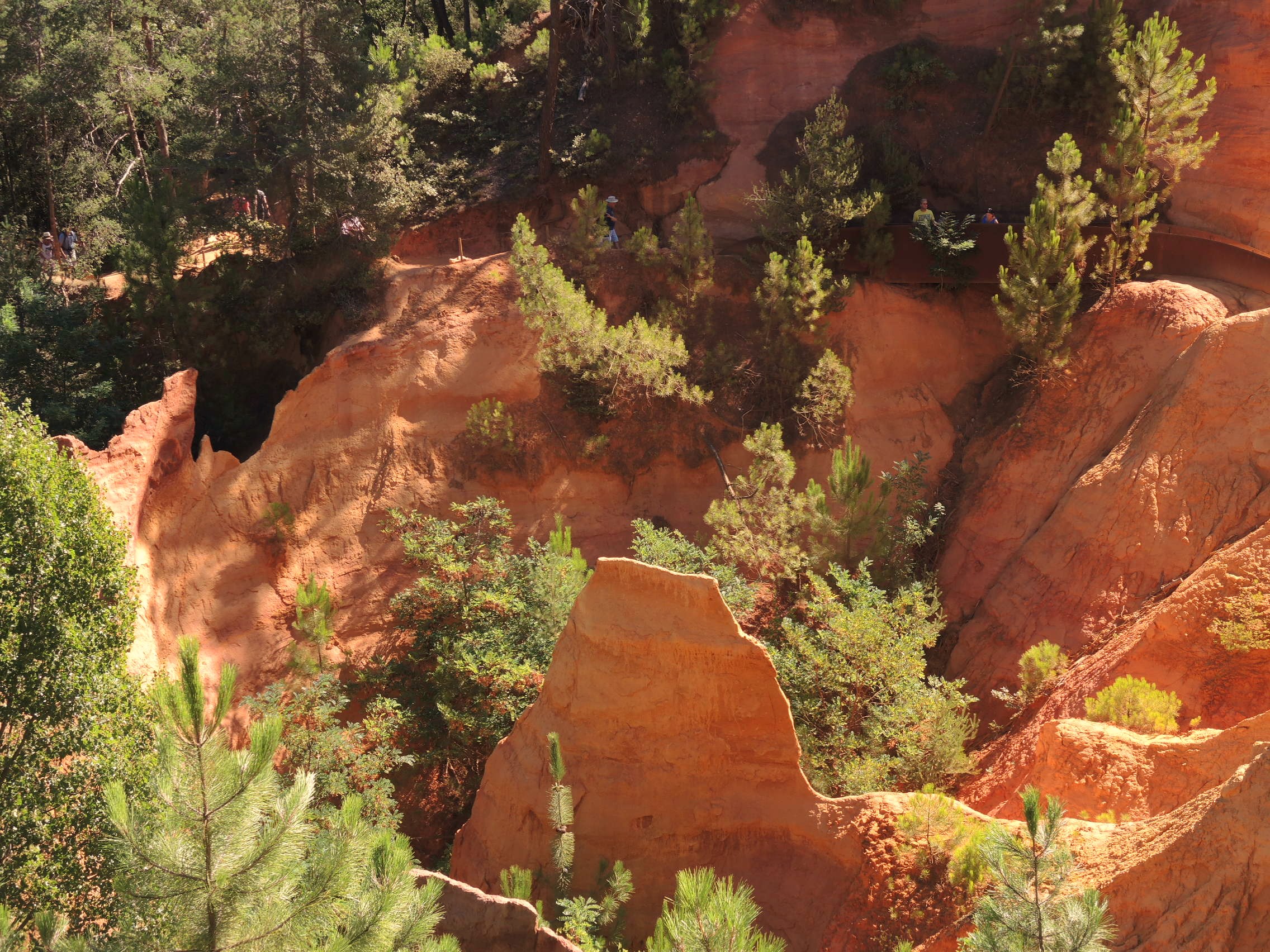
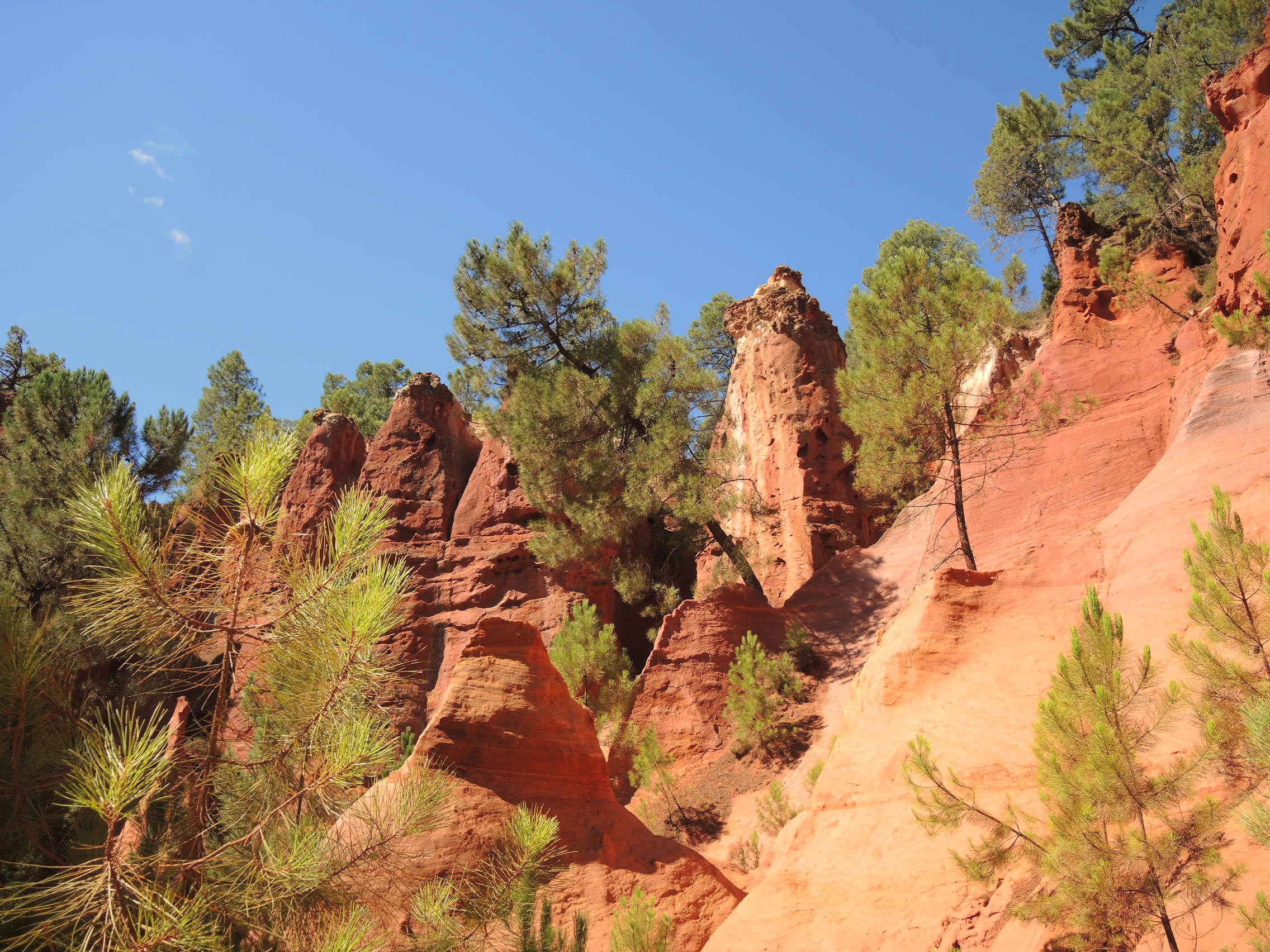
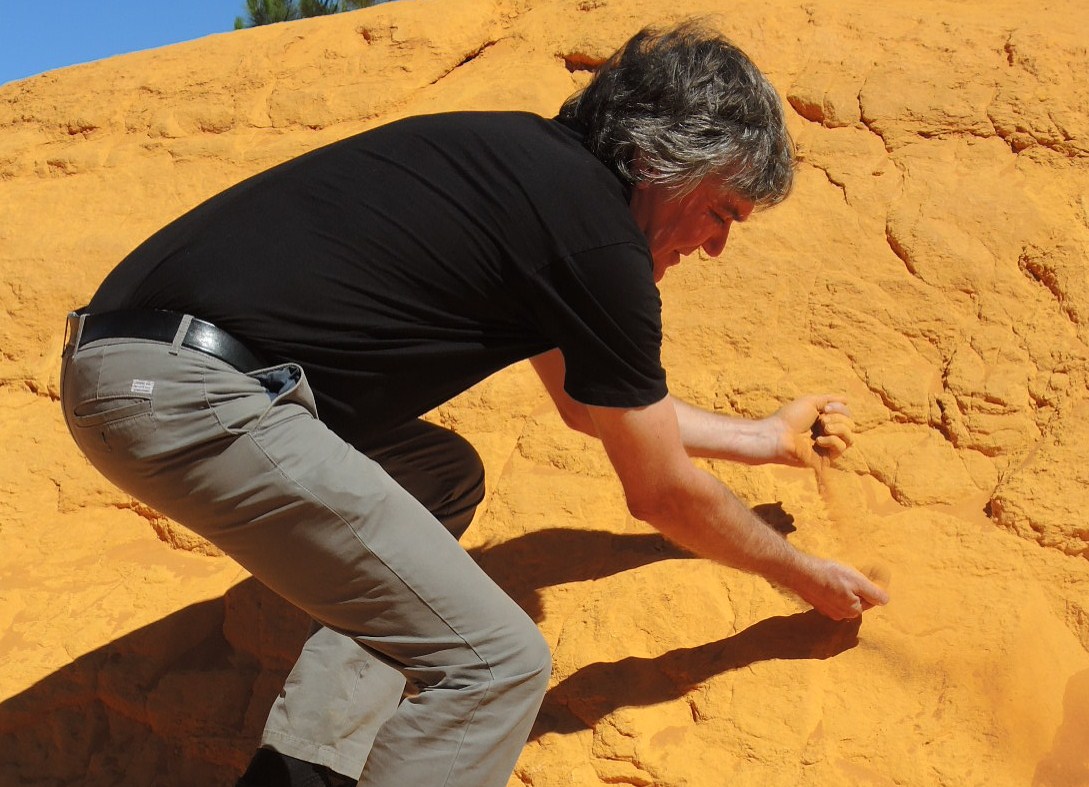
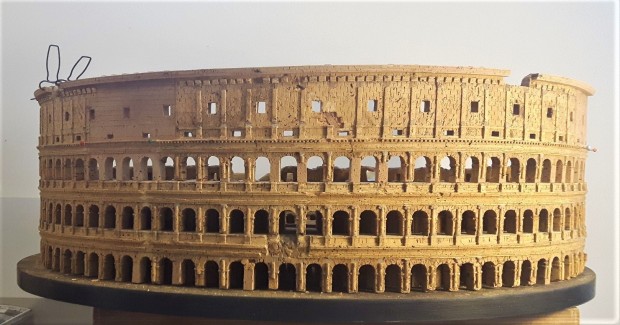
THE COLOSSEUM – ICON OF ROME
VIDEO ABOUT WHAT WE KNOW …but never forget – You are visiting the most bloodiest spot in the world…
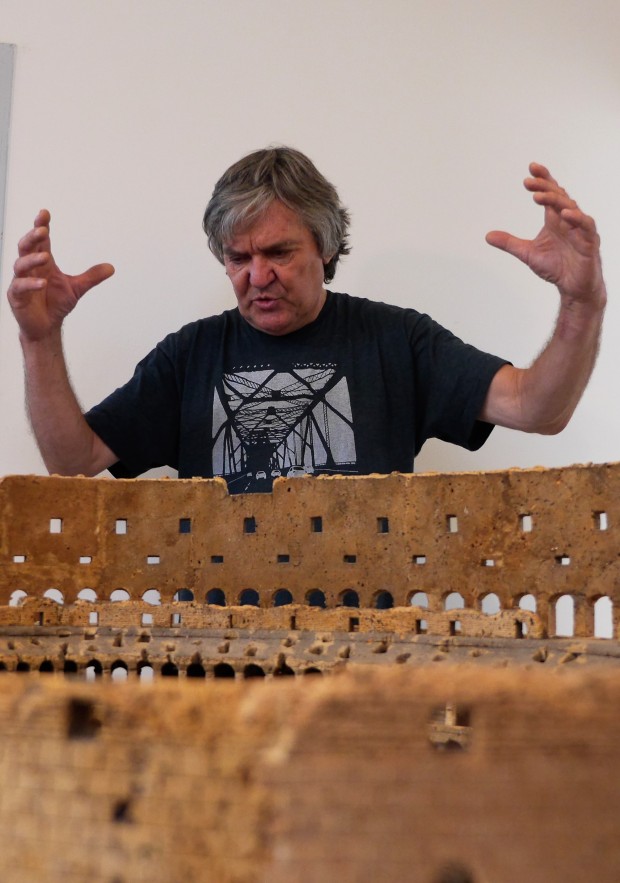
WEDDING DAY…
work on the Colosseum reaches a significant stage. The monument has to be “married” with its base. 150 points must be glued at the same time connected with 13 wooden dowels.
This demanding action can not be done by one alone. Dieter has support from his friends Stefan and Gerd. Together they achieve a perfect result. This effort has the purpose of creating an unbreakable connection that will last for the next 300 years…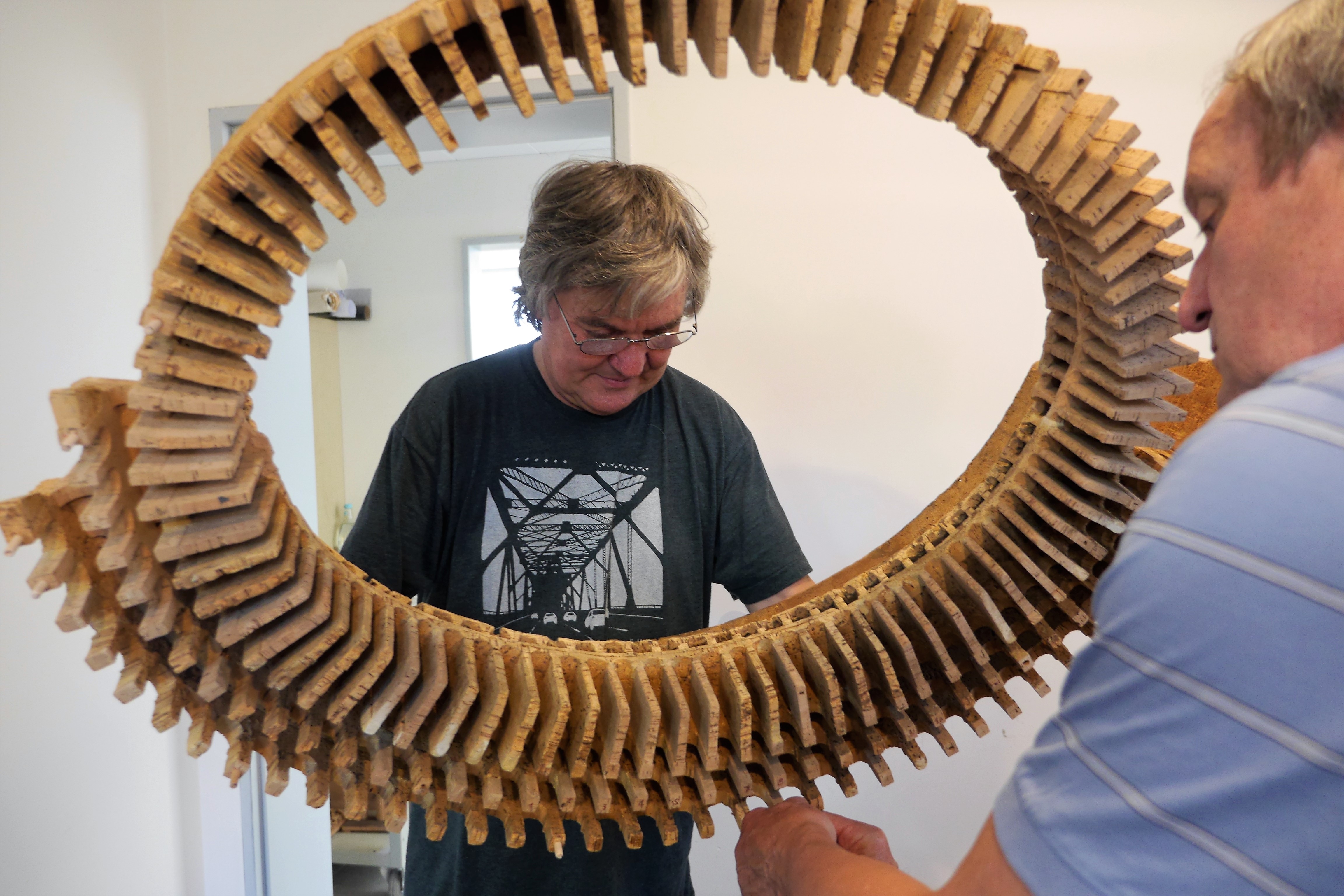
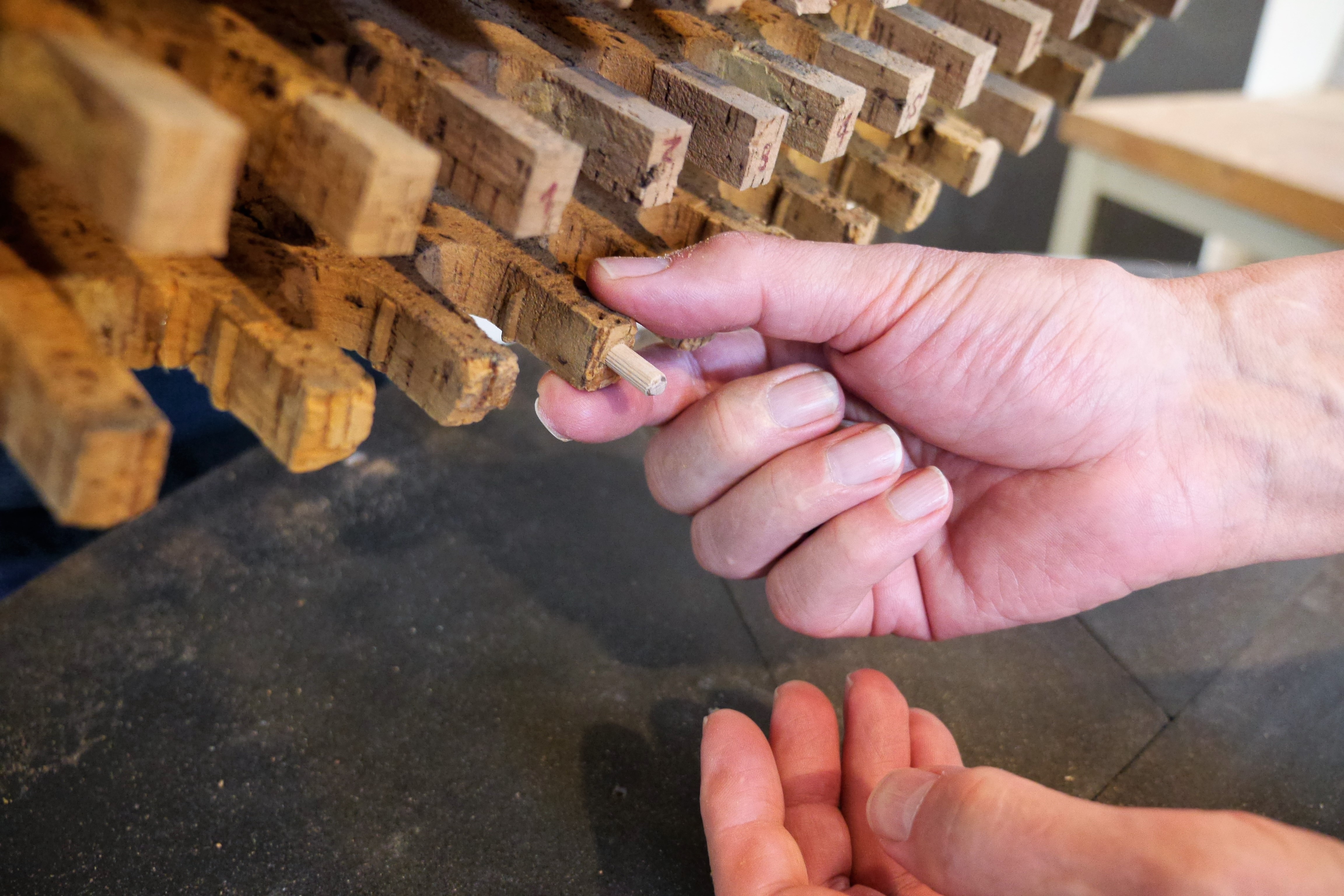
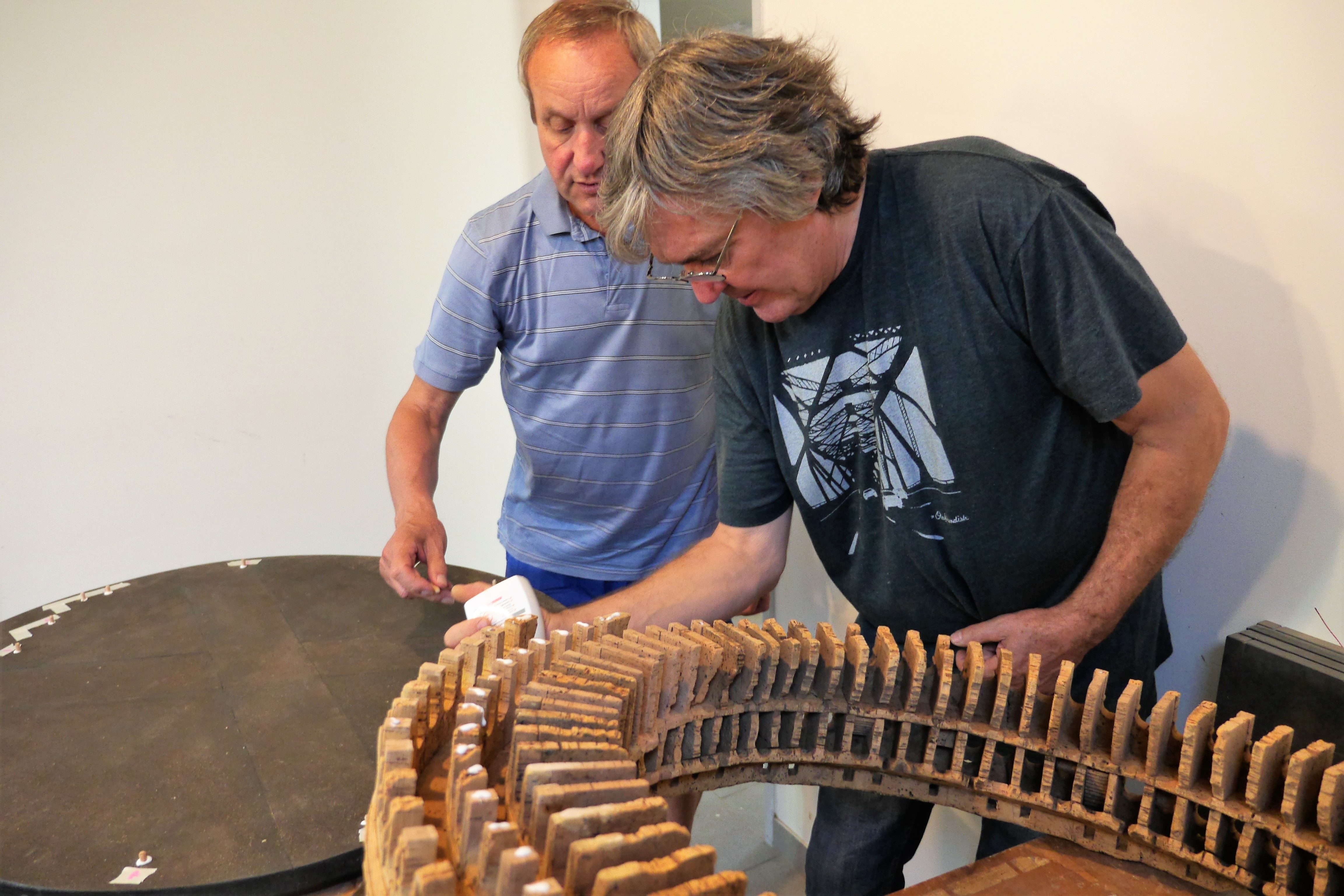
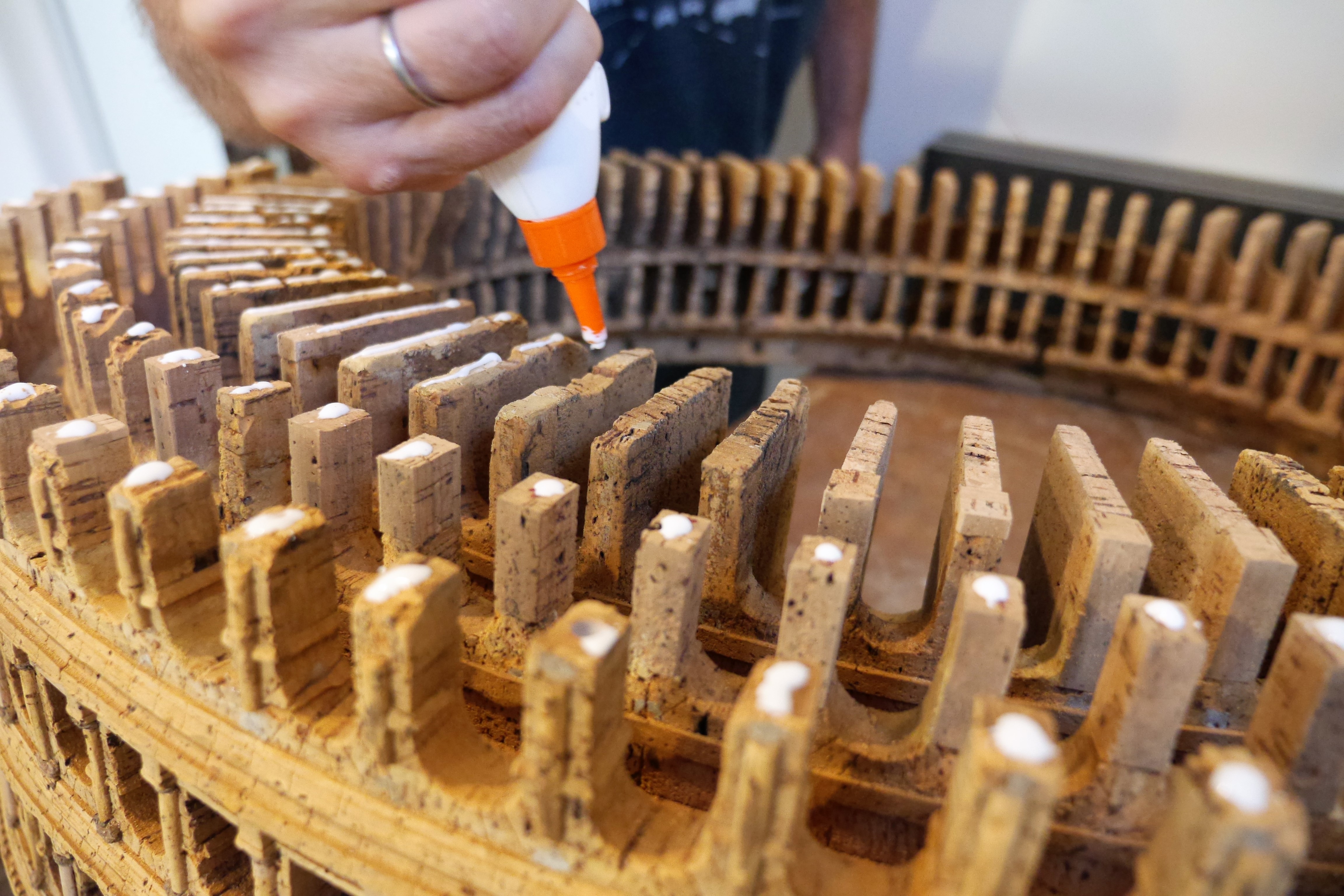
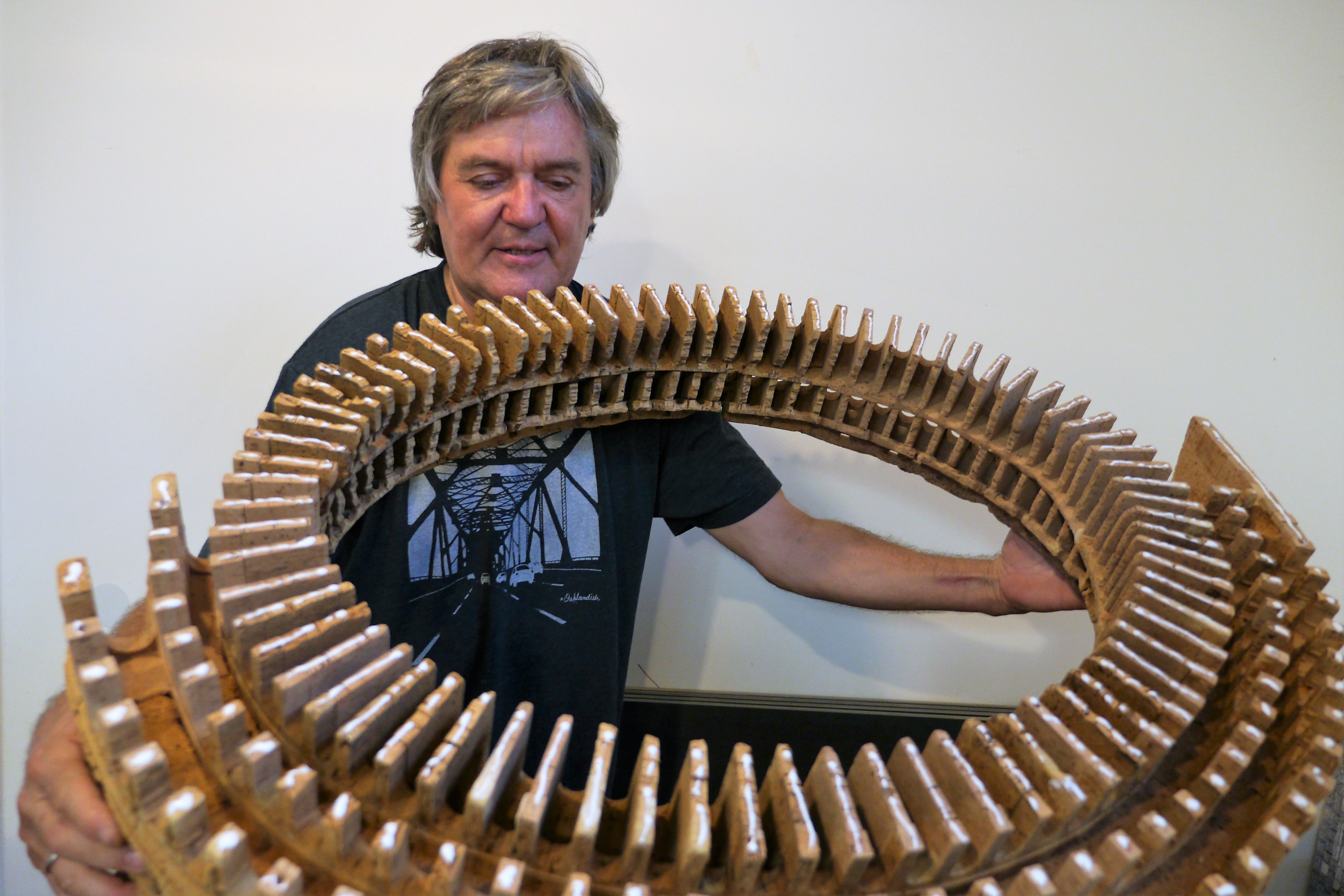
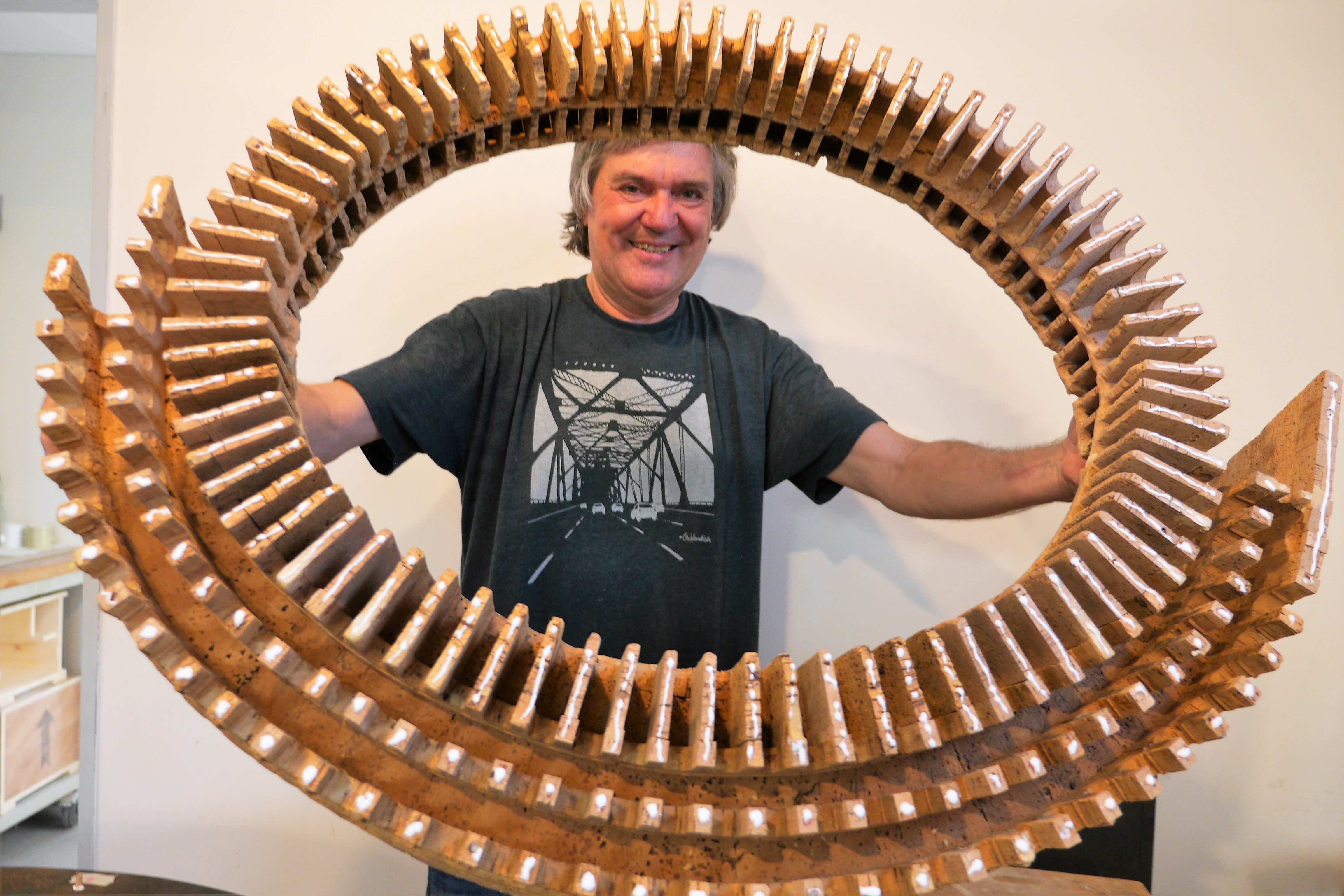
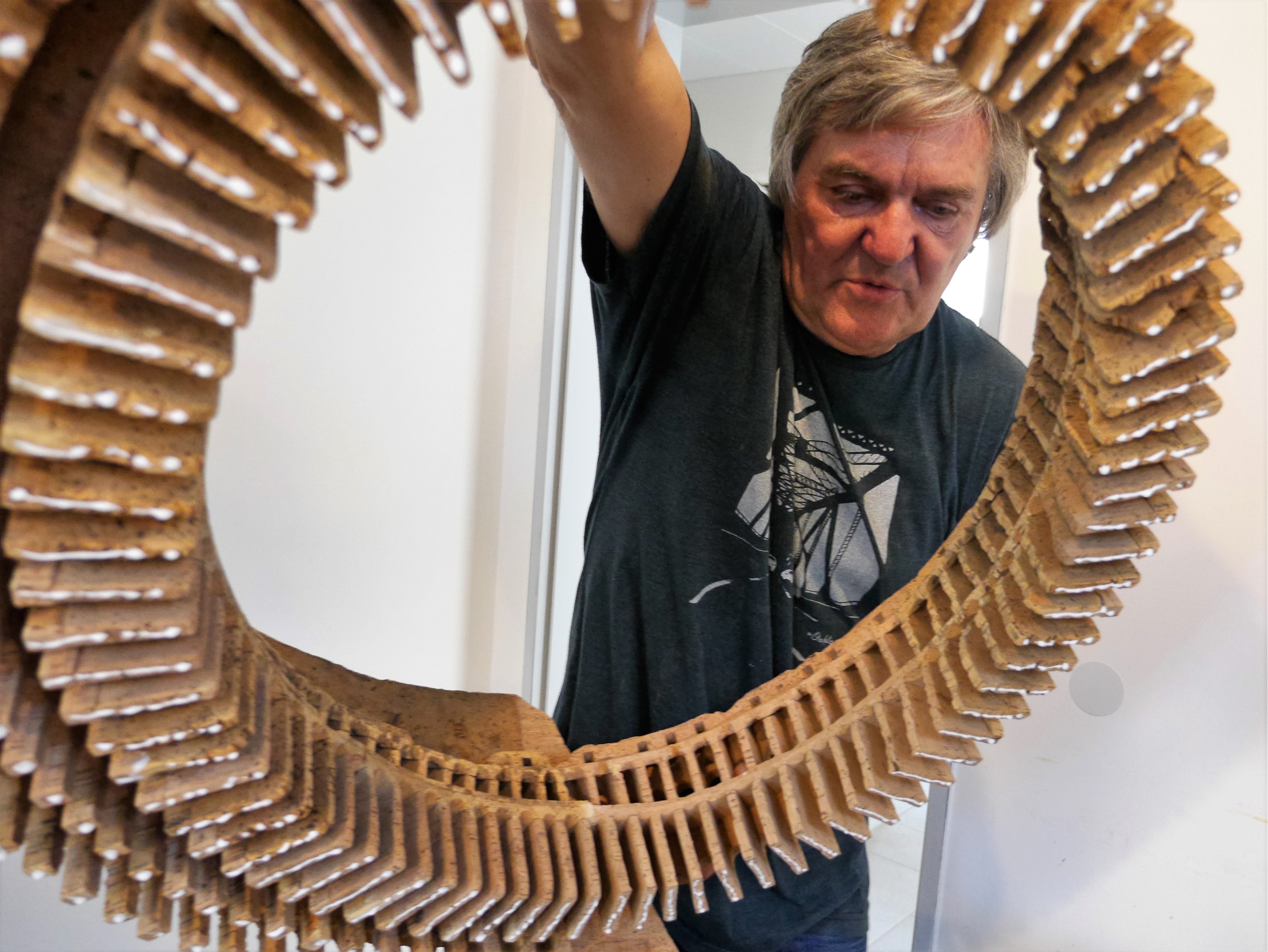
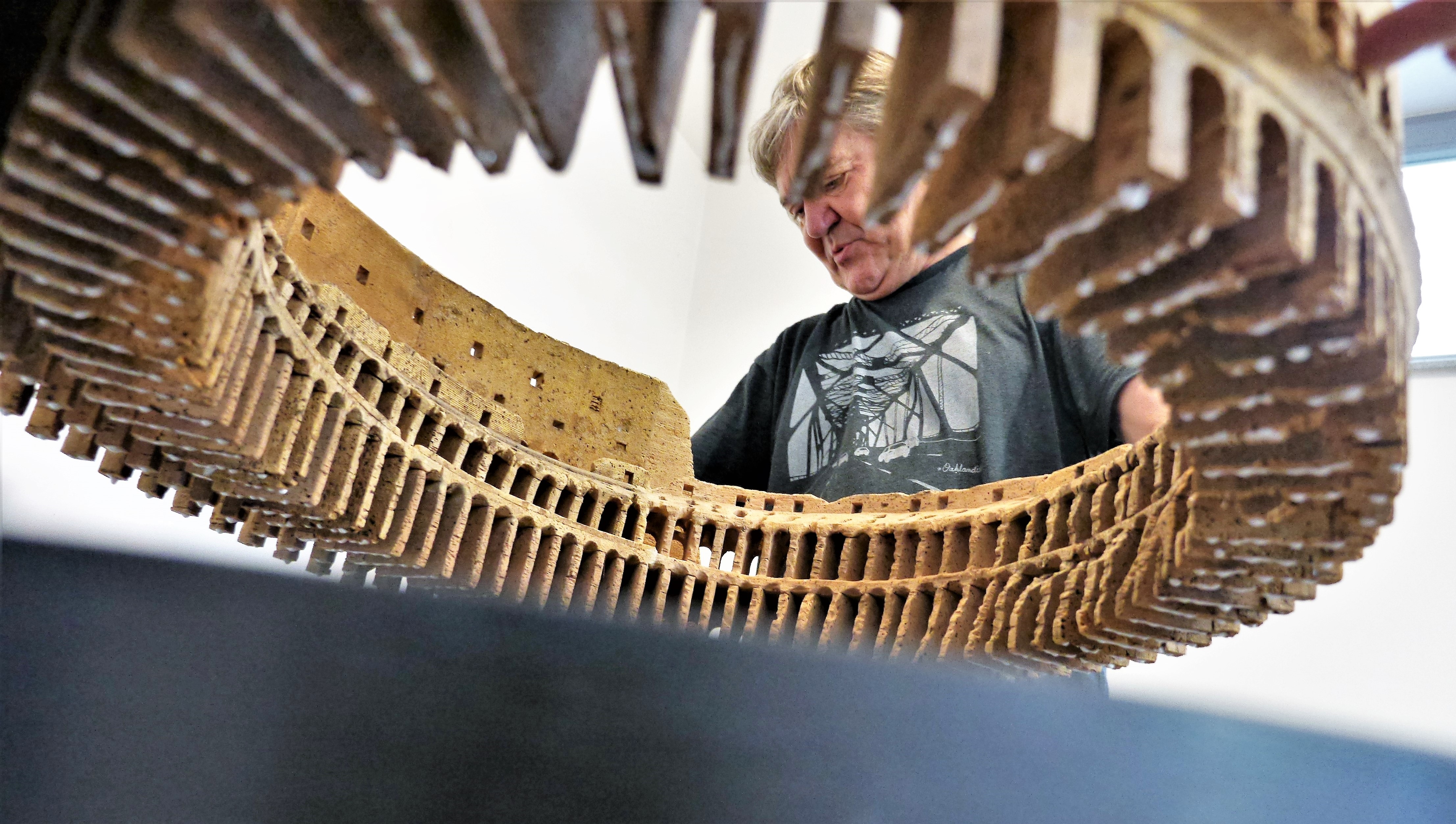
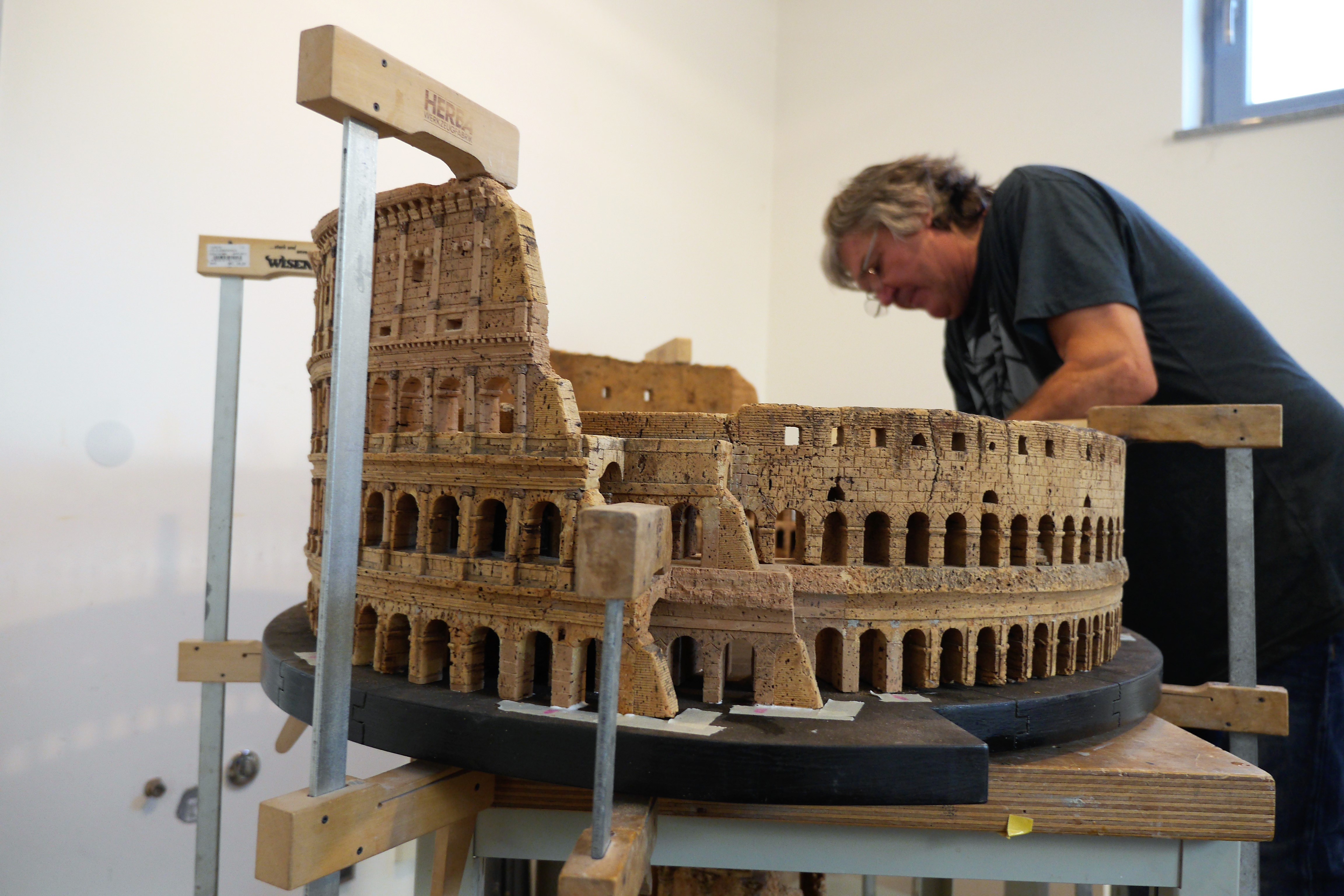
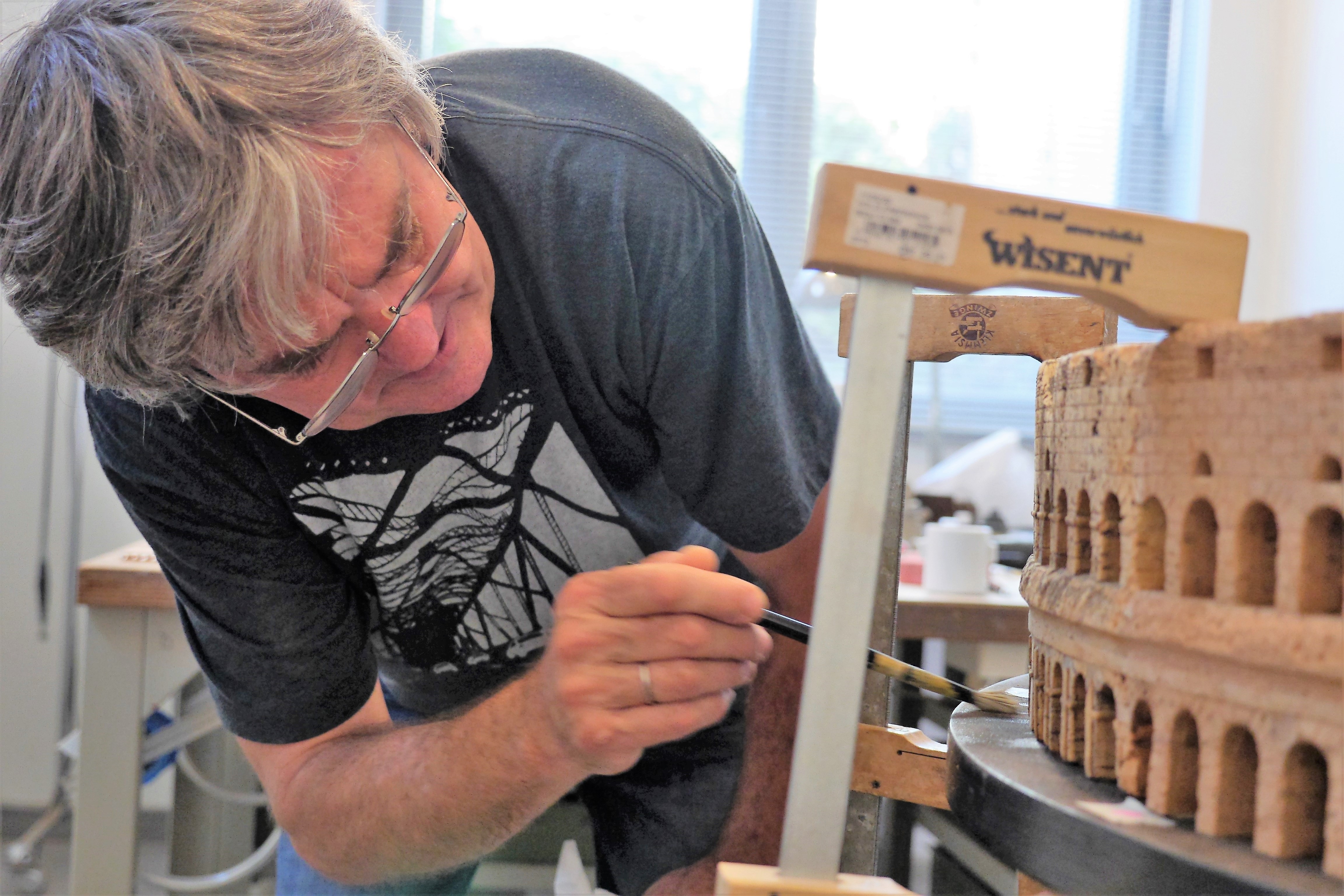
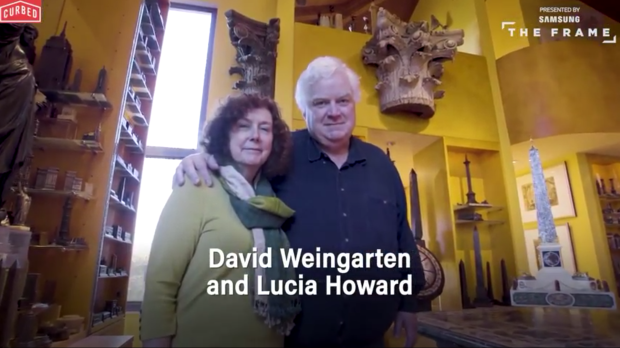
LIVING FOR BEAUTY…
Two beautiful people and their PIRANESEUM
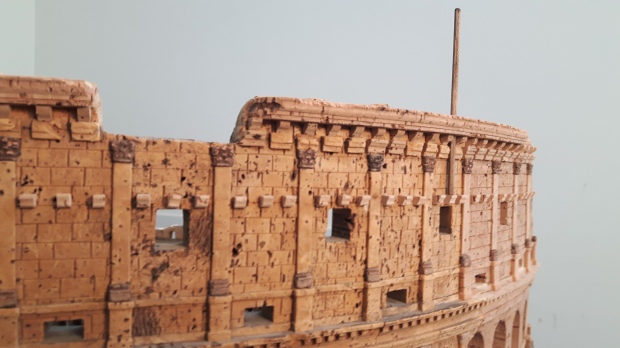
SHADE ON THE AUDIENCE…
Now the upper section of the facade is nearly finished including the brackets which support the wooden poles for the shading construction. We don’t know much about that, because all that disappeared during the centuries. Watch here a video about an idea how the VELARIUM could have worked.
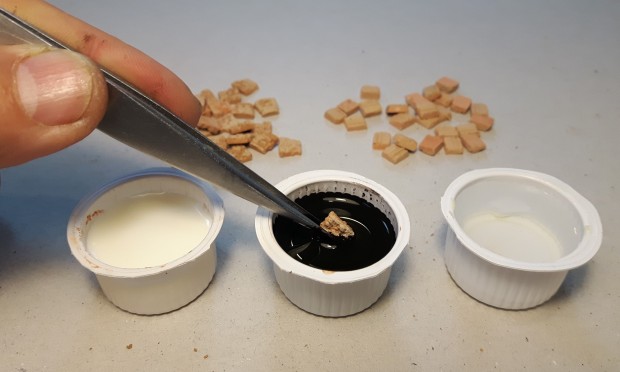
COLUMNS
After the capitals where dipped in different liquids, the elements are glued on the facade. Now the proportions are visible again as well as the order of the columns…
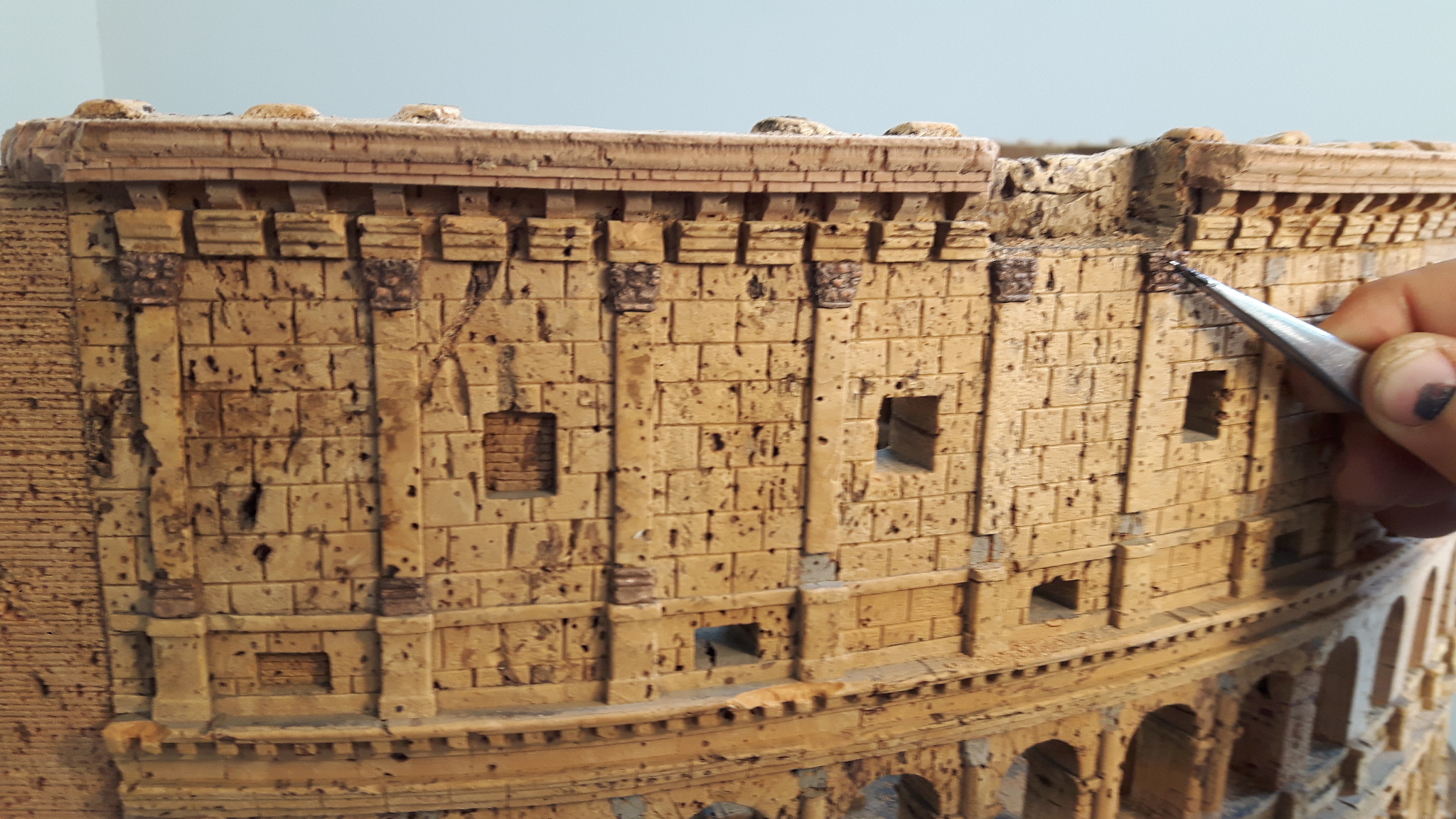
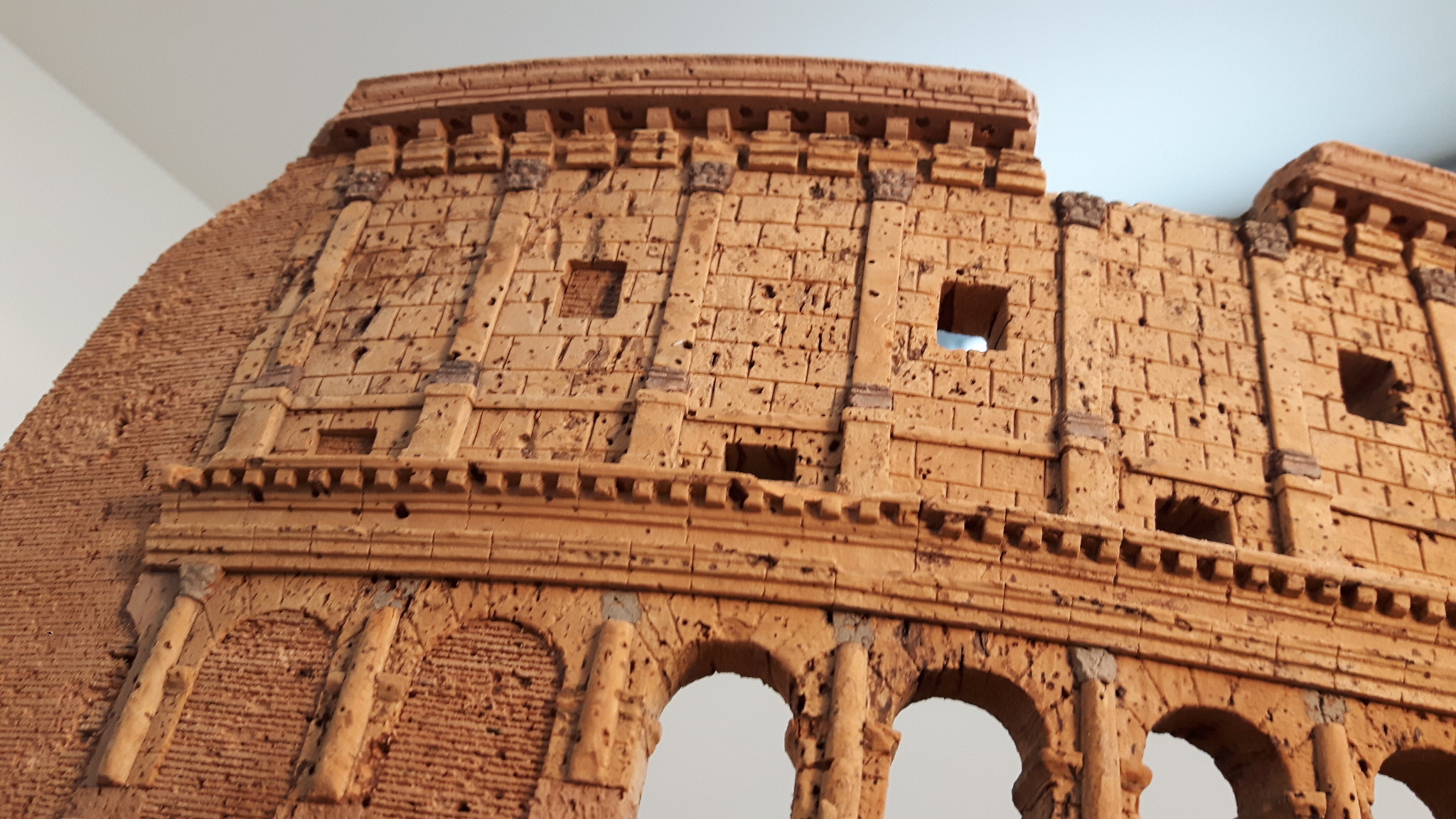
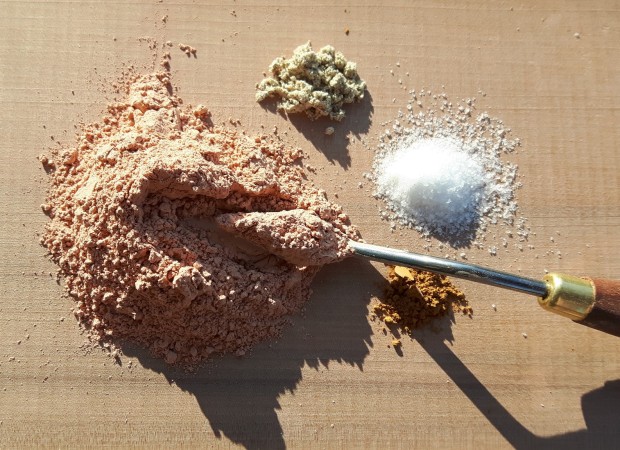
CLAY AND STUFF…
After the drying process of the silicon Dieter prepares the “filling” according to an old recipe. The main ingredient is powdered clay but also other components are necessary to get the best result.
The most important is to get the bubbles out of the liquid. After the drying every single piece must be taken out of the mold carefully. In further steps they must be cleaned with a rotating brush and later coloured with natural pigments…
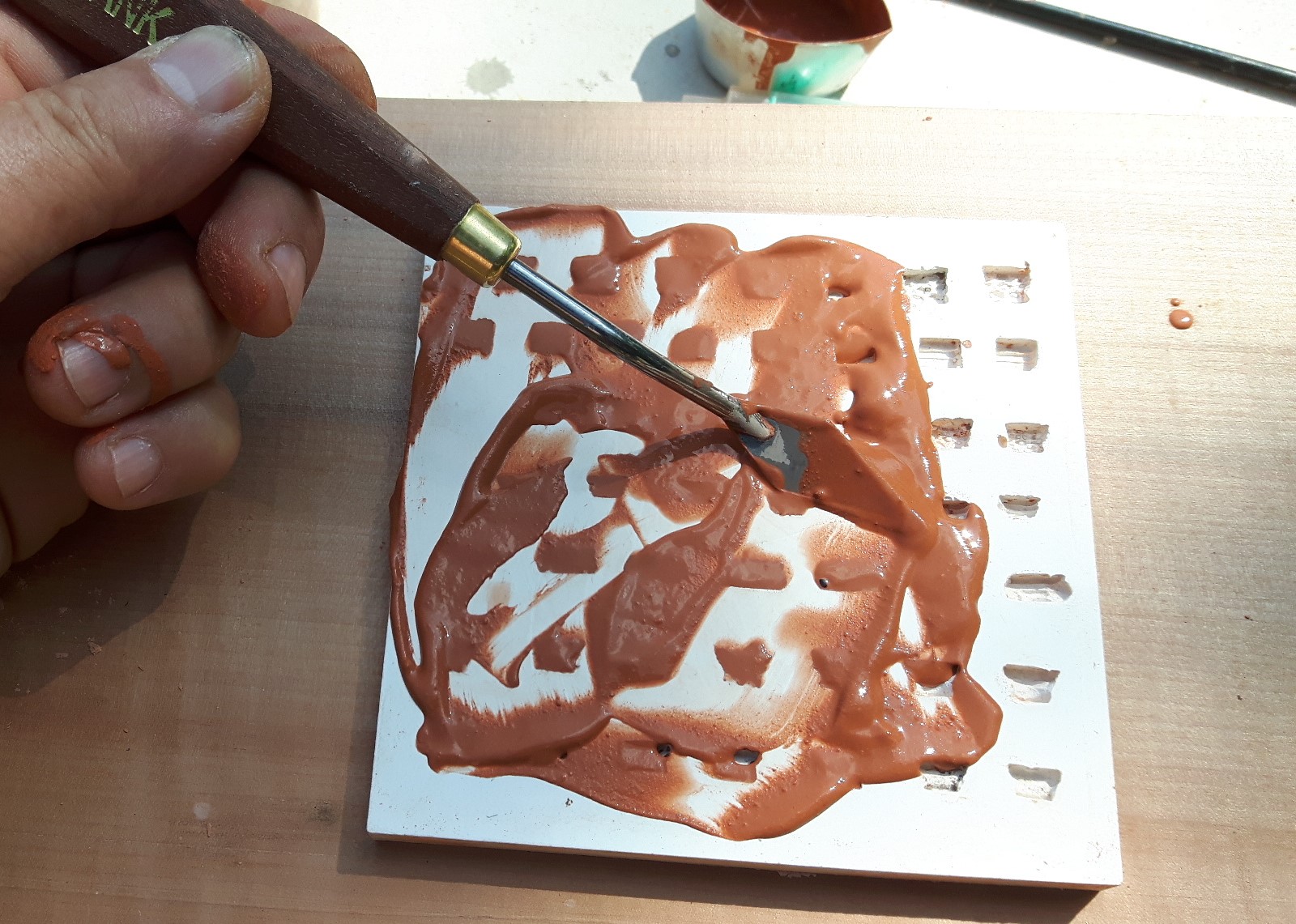
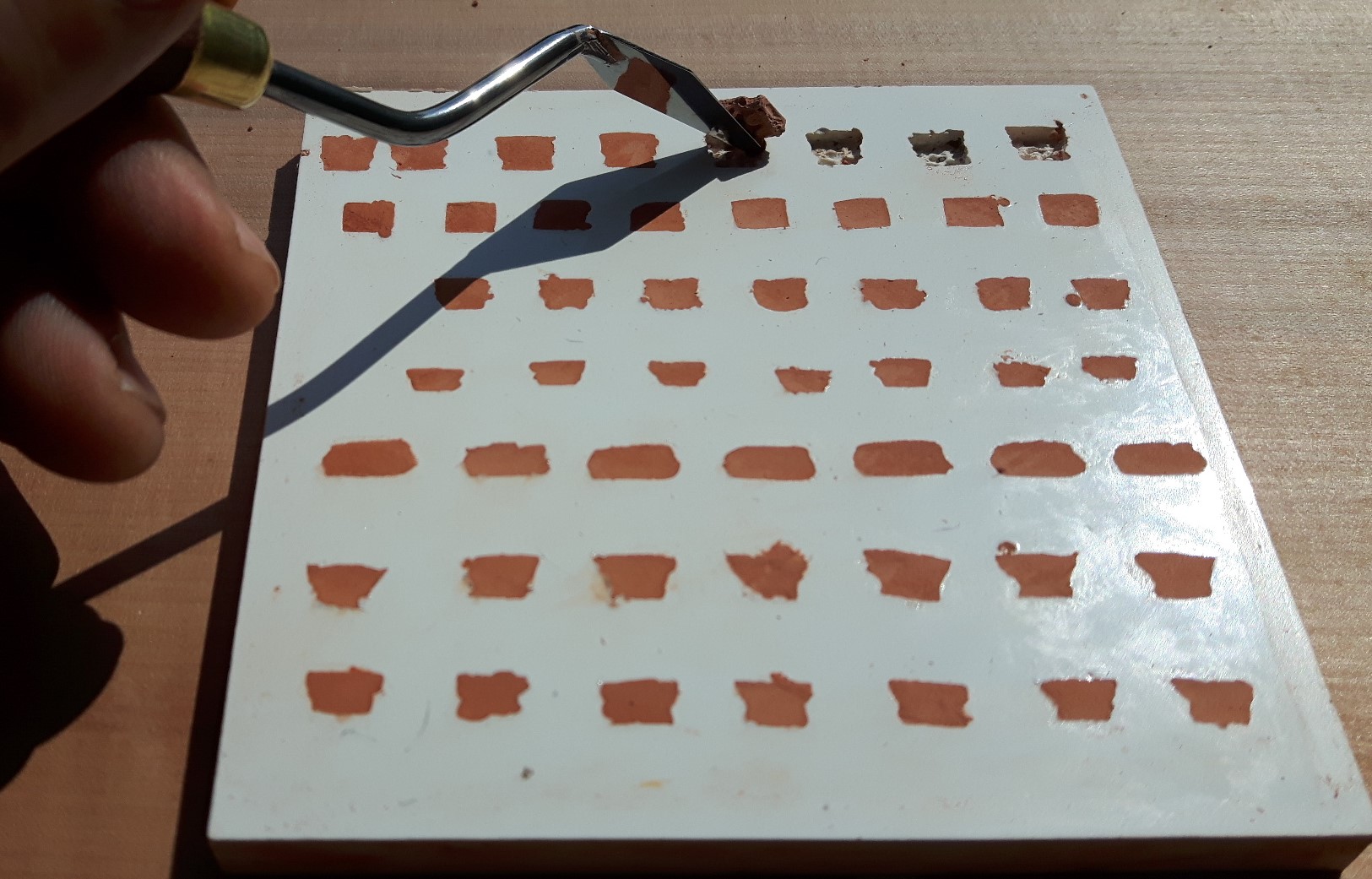
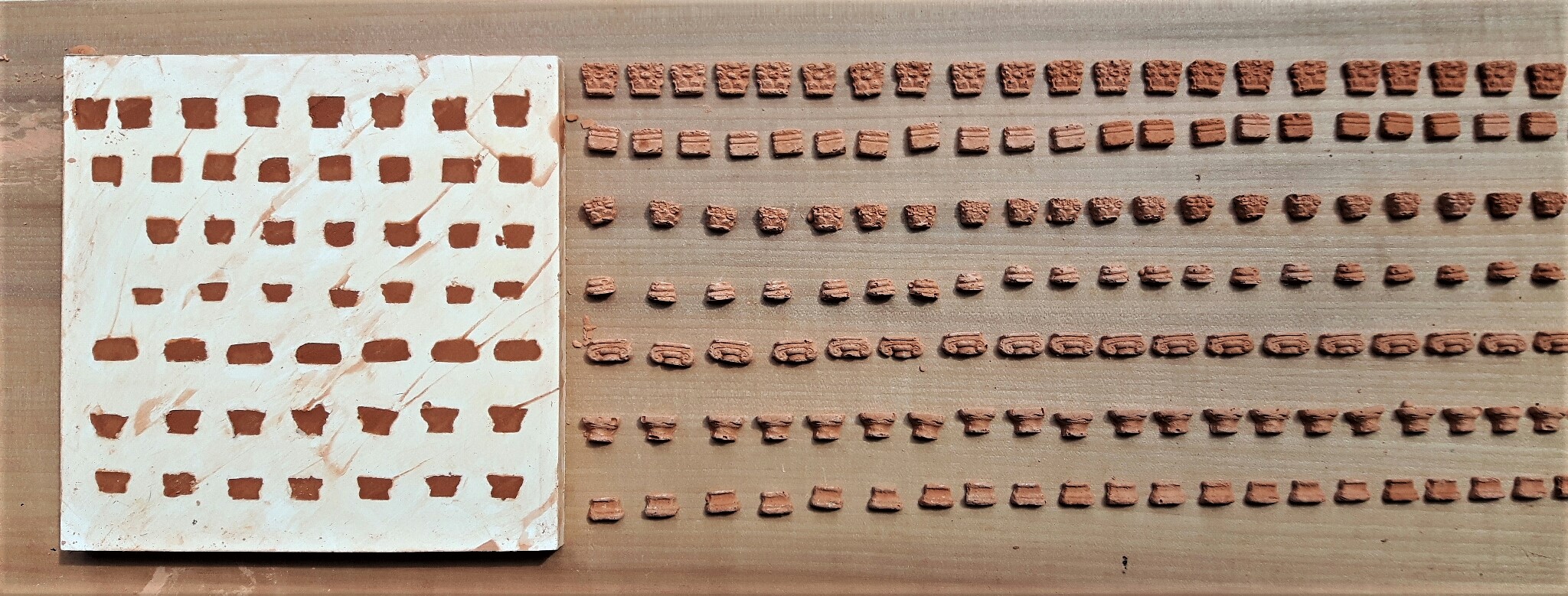
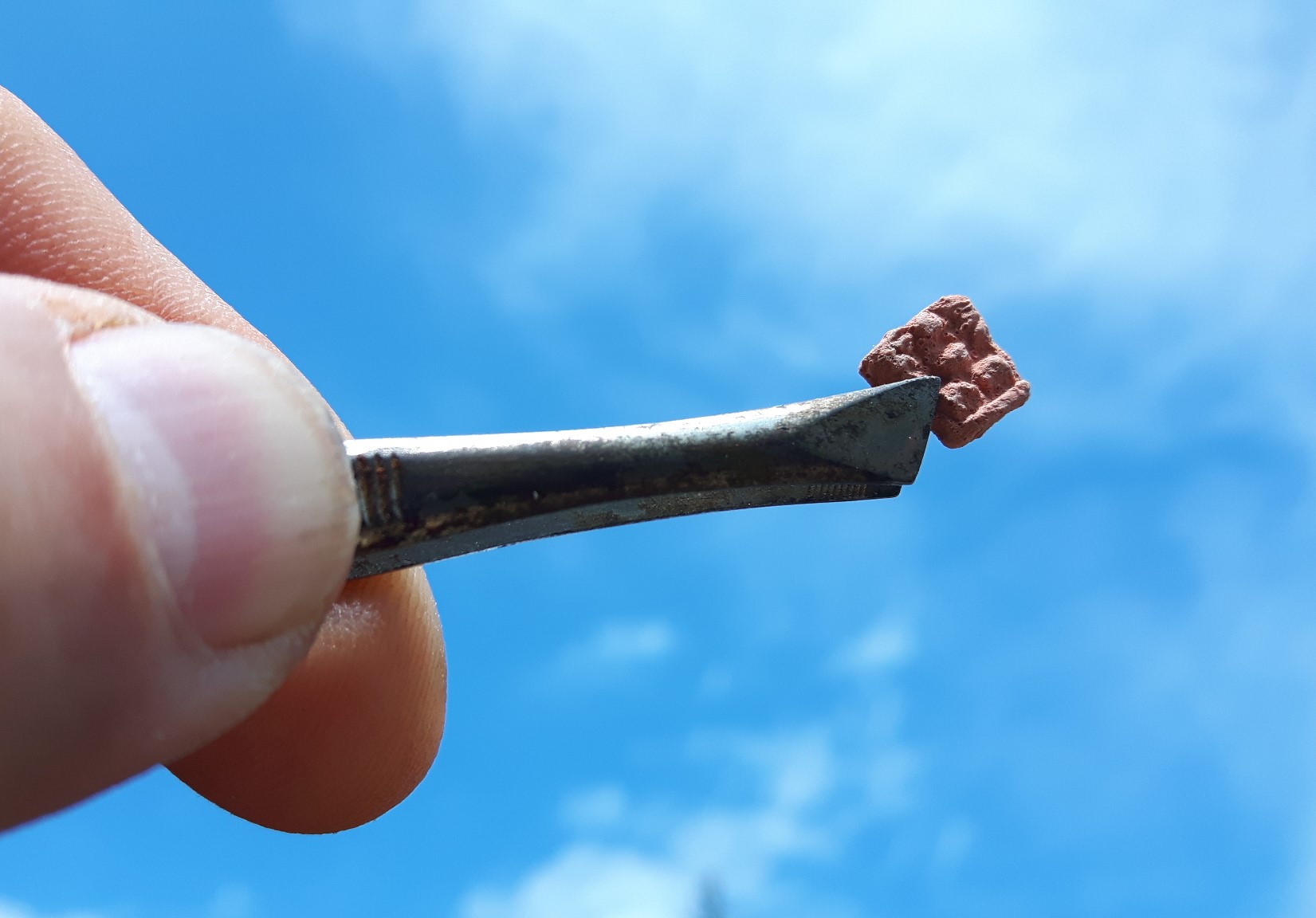
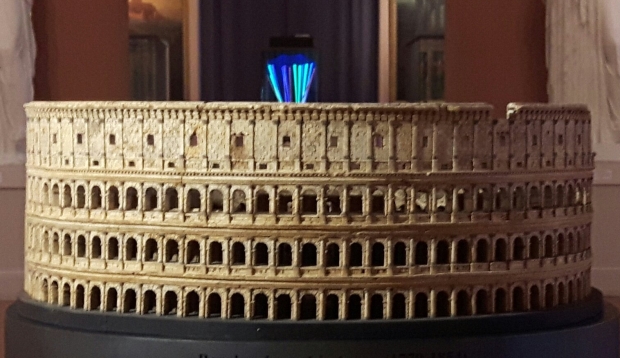
PANEM ET CIRCENSES…
…at the Lindenau – Museum by Victoria Kubale
The Lindenau Museum in Altenburg, named after the 19th century statesman, astronomer and art collector Bernhard August von Lindenau (1779-1854), houses a vast collection of paintings from the 13th century to the present, graphic works, sculpture, a historical library, antiquities, plaster casts and miniature models of ancient architecture.
Lindenau, who was acquainted with Johann Wolfgang von Goethe and Alexander von Humboldt, founded the museum after traveling Italy and France where he purchased a considerable number of artworks. In order to present the objects in an appropriate way he initiated the construction of a new building at his residence in Altenburg, the “Pohlhof”. The museum opened its doors on april 1st in 1848.
Until 1854, the year of his death, Lindenau extended his collections with further purchases. Eventually, the rooms of the building at the Pohlhof became too confined, so that a new one was built in 1874 at the behest of the duchy of Saxe-Altenburg on the edge of the park of the residence castle Altenburg. The building represents a certain architectural type of Pinacotheca or “Gemäldegalerie”, which was created by Leo von Klenze with the Alte Pinakothek in Munich.
In the 20th and 21th century the museum laid a focus on the acquisition of modern and contemporary art, especially graphic works. Today it houses the most comprehensive collection of works of Gerhard Altenbourg (1926-1989) worldwide.
However, the collections of Lindenau, which focused on Ancient Greece and the early Italian Renaissance, still remain the heart of the museum. They comprise 180 Italian panel paintings (of Sandro Botticelli, Fra Angelico, Massaccio, Luca Signorelli, Pietro Perugino and Guido da Siena), about 400 Greek and Etruscan vases, 150 plaster casts of ancient Greek to neoclassical sculpture as well as an art library and models of ancient architecture made of cork, bronze and terracotta.
Modeling small replicas of historical buildings of cork (phelloplasty) has its origins in the late 16th century nativity scene sculpture. It evolved into an independent (art) genre and became a common handicraft in Italy in the 18th century, when more and more erudite travelers and affluent Europeans with an interest in classical antiquity visited Rome and increased the demand for antiquities and souvenirs. The selection of displayed architecture comprised several temples, theaters, triumphal archs, sepulchral and infrastructural architecture and met the taste of this clientele. Because of its porous look, its color and easy processing cork was an ideal material to represent the reverent but fading splendor of ancient architecture.
But Lindenau was not looking for a nice souvenir. He intended to use the models as a substitute for studies in situ to “offer a visualization of the ancient Greek and Roman art of construction”1, thus for a pedagogical purpose. During his stay in Italy in 1843 he socialized with Emil Braun, classical archaeologist and secretary to the German Archaeological Institute in Rome. Between 1845 and 1850 Braun ordered cork replicas from the Roman modeler Luigi Carotti (Works et models of Cork, Rome, No. 13. Via del Boschetto 2. Floor) for Lindenau.
The Carotti models consist of the Colosseum (amphitheatrum flavium), the Temple of Mars Ultor and three Greek temples in Paestum: the archaic first Temple of Hera (also called “the Basilica”), the second Temple of Hera (so-called Temple of Poseidon), which dates back to 450 BC, and the late archaic Temple of Athena. Besides, the museum’s model of the Temple of Antoninus Pius and Faustina, which is a permanent loan to the residence castle Altenburg, was probably also crafted by Carotti. All of them are in an intact condition.
The model of the Colosseum was commissioned in 1845 by Emil Braun to Luigi Carotti. The agreed price was 50 Scudi. But shortly after Carotti started work, a shortage of cork occurred, so that the completion of the model was delayed. Braun did not only manage to procure the urgently required material in 1847, but also to convince Carotti to complete the protracted and tedious work on the model after he intended to reject the order.2 The small-scale Colosseum finally arrived in 1850 at the Pohlhof.
The model has a height of 32.5 cm, a longitudinal axis of 100 cm and a transverse axis of 72 cm. Hence, it displays the Colosseum in a scale of 1 to 185, but the proportions of the original, which is less elongated, were not fully observed. The interior features two tiers of the same size. Apart from that, Carotti refrained a reconstruction of the interior space. Nevertheless, the model captivates the beholder with its detailed design of the architectural decoration such as the half-columns of the Tuscan, Ionic and Corinthian orders on the outer facade. Thanks to the restoration by Dieter Cöllen in 2017, the model is in a good condition today.
Besides the models of Carotti the Lindenau Museum owns five cork miniatures of the first German cork carver Carl May (1747-1822), which were crafted in Erfurt or Aschaffenburg around 1800. These include the Pyramid of Cestius, the Grotto of Egeria, the Porticus Octaviae, the “Temple of the Cough” (Tempio della Tosse) and the Temple of Minerva Medica.
In Naples Emil Braun purchased two Sicilian temples from an unknown modeler for Lindenau: the temple in Segesta and the so-called Temple of Concordia in Agrigento. In addition, there are three more models in the museum which Braun acquired in Rome. These are the Basilica of Maxentius and Constantine, the Pantheon and the Arch of Drusus made of tuff.
Except for Luigi Carotti and Carl May three other Italian small-scale architects have to be mentioned: the famous Antonio Chichi (1743-1816), who also crafted a model of the amphitheatrum flavium (now in the Wilhelmshöhe Palace in Kassel), Augusto Rosa (1738-1784) and Giovanni Altieri (attested 1767-1790). They beared the job title “architetto”, which indicates that they were conversant with the art of construction in general. As a source of inspiration they used large-scale views of ancient architecture of the engraver Giovanni Battista Piranesi.3
The Lindenau Museum houses also a collection of bronze models. Their provenance is not conclusively clarified yet, but there were certainly crafted in 19th century Italy. They represent the so-called Temple of Vesta, the Temple of Saturn, the Temple of Vespasian and Titus, the Columns of Phocas, Trajan and Marcus Aurelius, the equestrian statue of Marcus Aurelius as well as two different sized models of the Lateran Obelisk and three further Roman columns made of decorative stone.
The Temple of Castor and Pollux, which is made of terracotta, was produced in the Thonwaaren-Fabrik Franz Naumann in the second half of the 19th century. The Choragic Monument of Lysicrates and other architectural elements like a part of the second Temple of Hera in Paestum were also made by this manufacturer. Under the direction of Dr. Martin Boss archaeology students of the University of Erlangen restored the terracotta models in the early 2000s.
Today, the cork model of the Colosseum is one of the most frequently lent art work of the Lindenau Museum. It went on a journey from Altenburg to Erlangen (“Nur ein Souvenir?”, Stadtmuseum Erlangen, 1997), Munich (Internationale Handwerksmesse 2003, “Architektur+Sport. Vom antiken Stadion zur modernen Arena”, Entrepreneurial University, 2006), Würzburg (“Freunde, ich habe einen Tag verloren. Rom zur Zeit des Kaisers Titus”, Martin von Wagner-Museum of the University of Würzburg, 2007), Basel (“Von Harmonie und Maß”, Skulpturenhalle, 2009), Saarbrücken (“Grand Tour. Reisen zu antiken Stätten”, Museum für Vor- und Frühgeschichte and Saarlandmuseum – Alte Sammlung, 2017) and Fribourg, where it can be currently seen in the exhibition “ROMA! Gravures de la collection Clemens Krause” of the Musée d’Art et d’Histoire.
1 „[…] eine Anschauung der Bauweise der Griechen und Römer zu eröffnen, […].“ J. G. Quandt, H. W. Schulz, Beschreibung der im neuen Mittelgebäude des Pohlhofs befindlichen Kunst-Gegenstände, Altenburg 1848, p.87.
2 “Endlich ist auch das Colosseum in voller Arbeit. Ich habe viele Noth darum gehabt. Zuletzt wollte der Verfertiger nicht mehr Contract halten und die Arbeit ganz zurückweisen. Einige Scudi für den Kork habe ich zulegen müssen. Ich werde sie Ew. Exc. an etwas anderem zu ersparen suchen.“, excerpt from a letter from E. Braun to B. v. Lindenau dated 11/30/1847.
3 S. Reim, Bernard August von Lindenaus Korkmodelle, in: Palmyra. Zerstörte Erinnerung, Altenburg 2017, 43-46, p. 44.
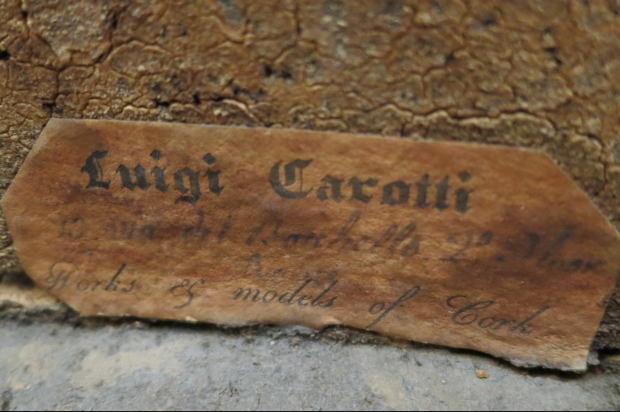
CAROTTI TALES…
… by Prof. Dr. Valentin Kockel
Not much is known about the life of Luigi Carotti. Models from his workshop are documented for the period from 1830 to 1850. During this time, he worked out of premises in Via delle Vite, and – before or after this period – in Via del Boschetto, as we know from the English labels on his models. Both streets are situated near Piazza di Spagna, where foreign visitors tended to take their lodgings when in Rome.
So far we mainly know of models depicting the ruins of Rome, the usual highlights of every visit: the Arch of Constantine, Colosseum, Temple of Antoninus and Faustina, Temple of Castor and Pollux, Temple of Mars Ultor, Temple of Saturn and the Column of Phocas. Amongst these, the highly elaborate and therefore costly Colosseum stands out the most. Carotti was able to sell this model at least three times. Compared to the models of his predecessors, it represented the actual state of the monument, as it showed the restorations of 1807 und 1823. The choice of depicting the hardly spectacular late Antique Column of the Emperor Phocas on the Roman Forum was probably due to the interests of English travelers: the column was first excavated during the French occupation and a second time in 1817 by the Duchess of Devonshire. The overall increased interest in Greek Doric architecture that prevailed in the 19th century is attested to by models of the temples in Paestum and Sicily.
Initially, Carotti’s models were probably bought by private collectors, but later became part of the collections of learned societies (Edinburgh, St. Petersburg) or museums (Cambridge and Altenburg). The Lindenau-Museum in Altenburg (Thuringia) is the only institution to hold a larger number of models with eight specimen, amongst them a well-preserved Colosseum. Individual models have appeared on the art market, often heavily fragmented. One of these was the model of the Colosseum that is now held by the Piraneseum (San Francisco) and is being restored by Dieter Coellen.
Carotti’s work occurred at a time when interest in cork models was already on the decline. In Rome, he seems to have been the last of his profession whose oeuvre we can still follow at least fragmentarily. Compared to the works of Chichi and Lucangeli (Rome), Padiglione (Naples) or Georg May (Germany) his models appear somewhat dry. Apart from using massive cork as primary building material, Carotti utilized reddish, fired terracotta elements for ornamental details, such as friezes and capitals of the Corinthian order. Their colour has often faded away, but would originally have produced a strangely spotted effect.
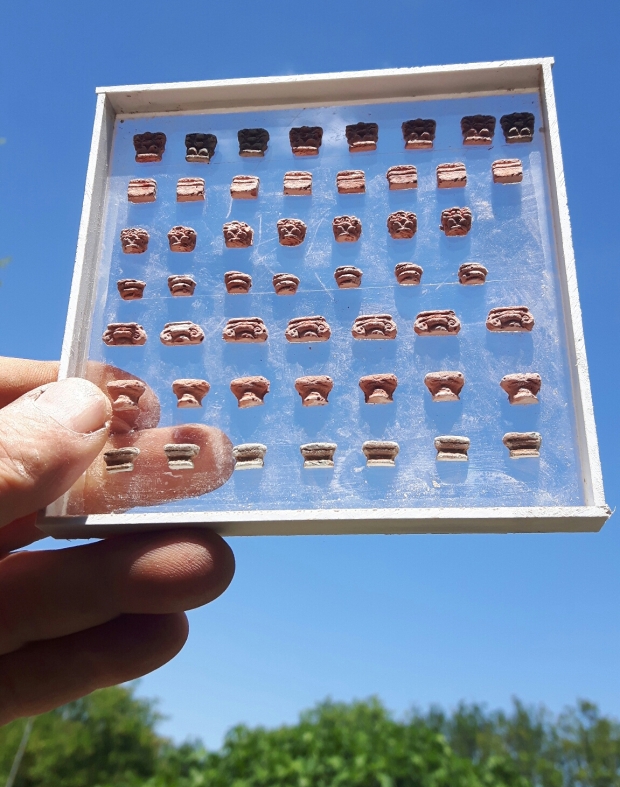
CAPITALS
On the facade of the Colosseum we find Doric, Ionic and Corinthian columns. Carotti modeled them very accurately in this small scale. But most of them are lost ore crumbled to dust. To make the original beauty visible again, Dieter first produces silicon moulds of the best pieces….
After the drying process he will be able to pour the negative in further stepps…

LIFESTYLE
Imagine yourself – sitting there on a Sunday morning in company with some friends having this spectacular view of the Colosseum. Some birds are singing in the trees interrupted by the roaring noise of more than 50 000 people hypnotized by a bloody fight behind that beautiful facade…
